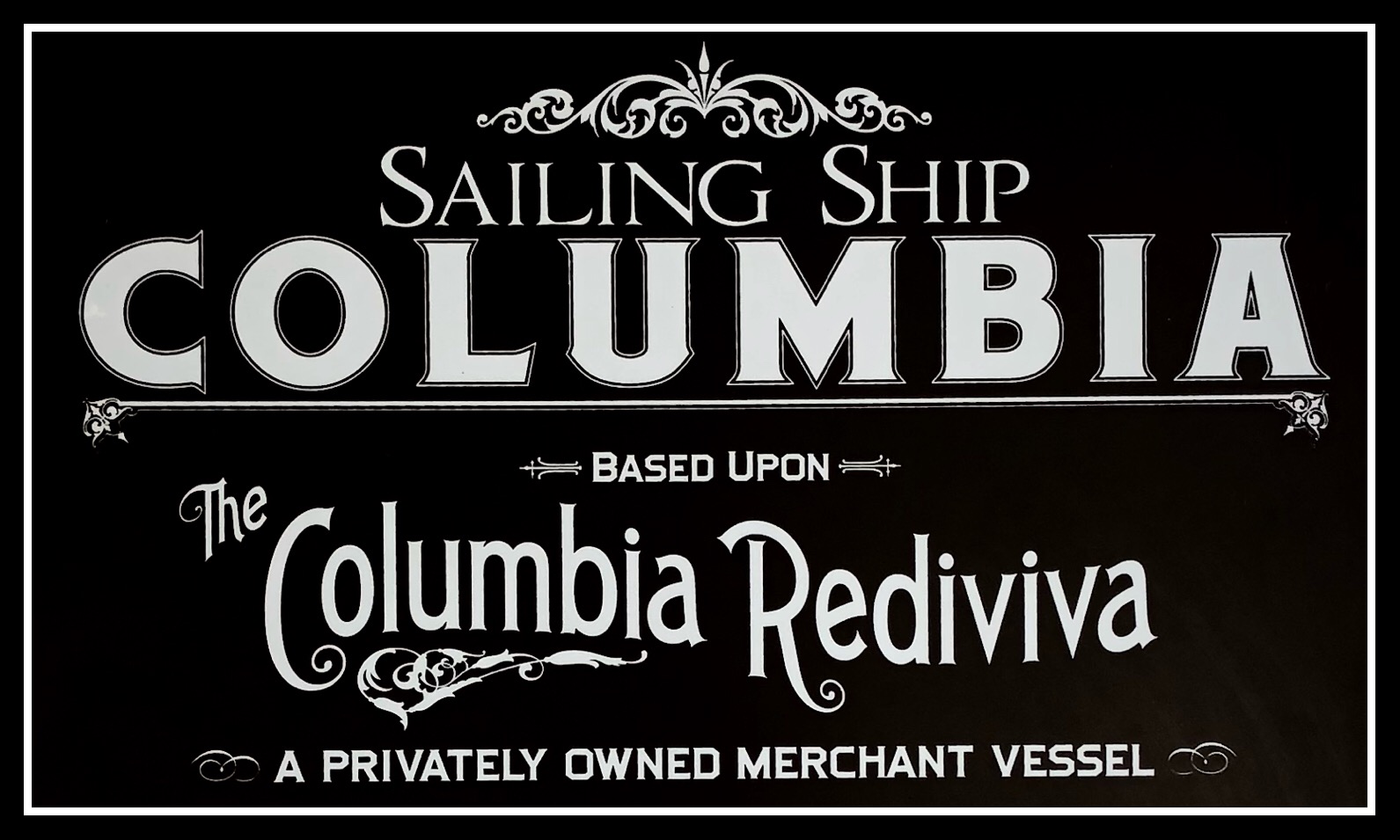
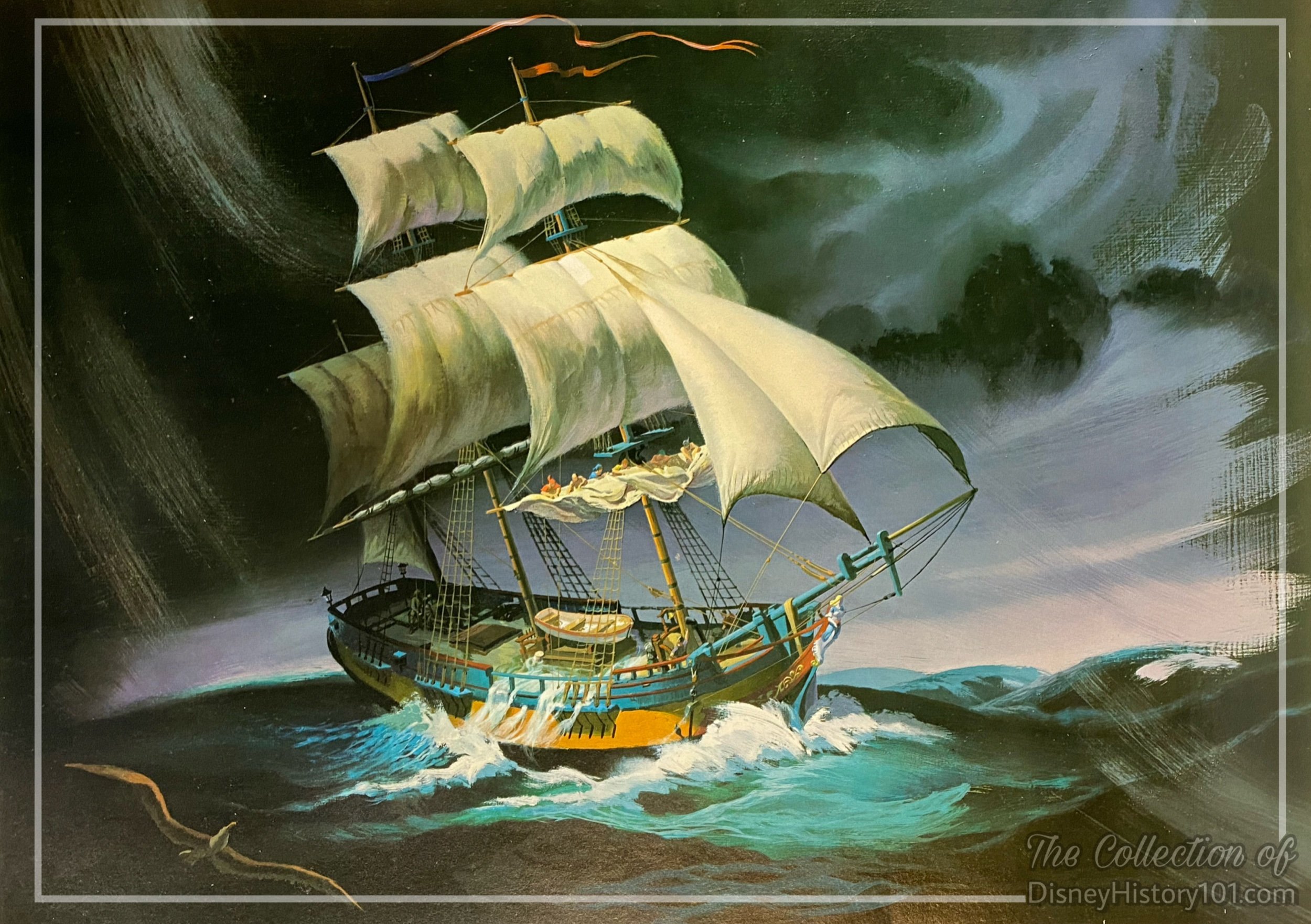
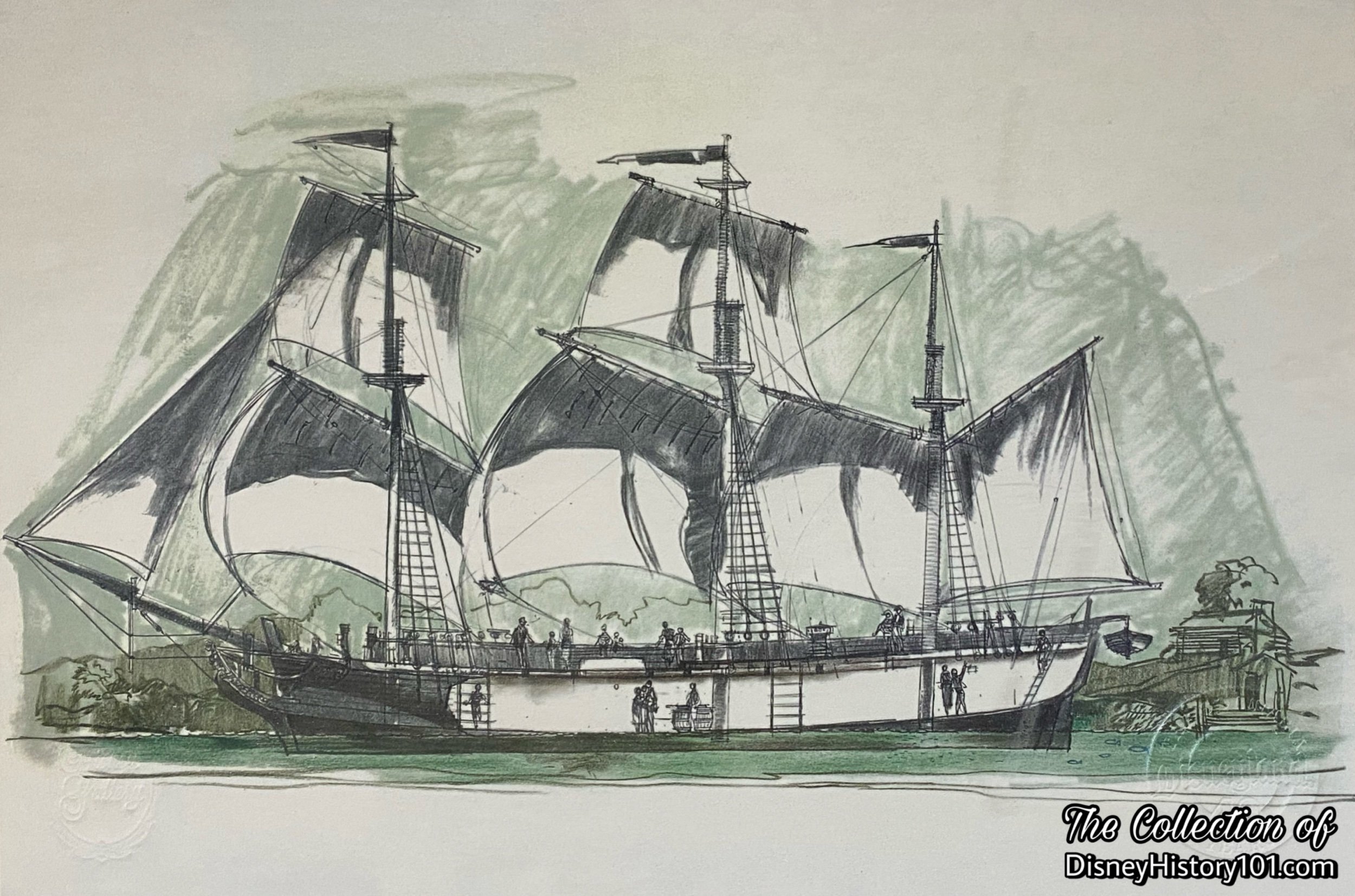
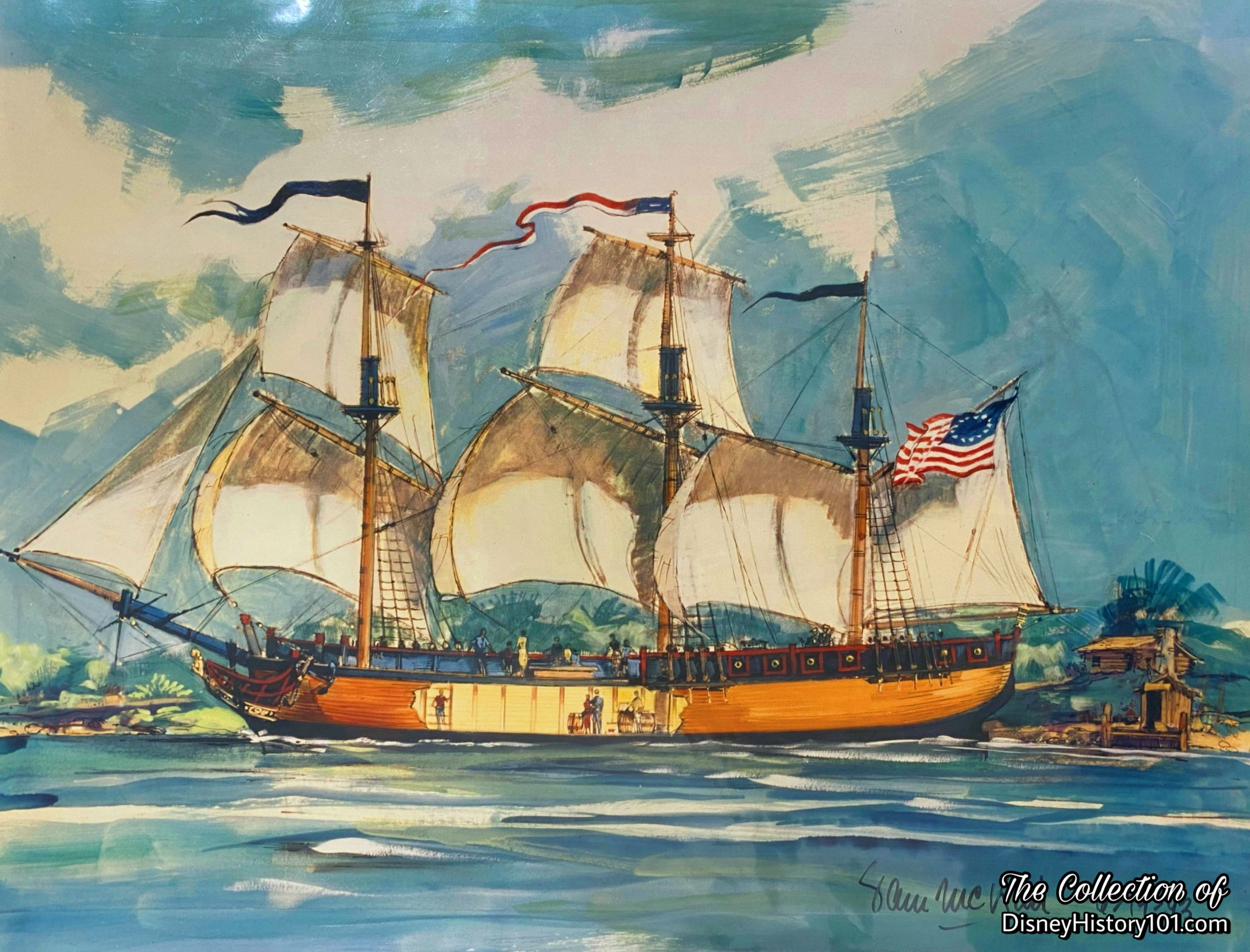
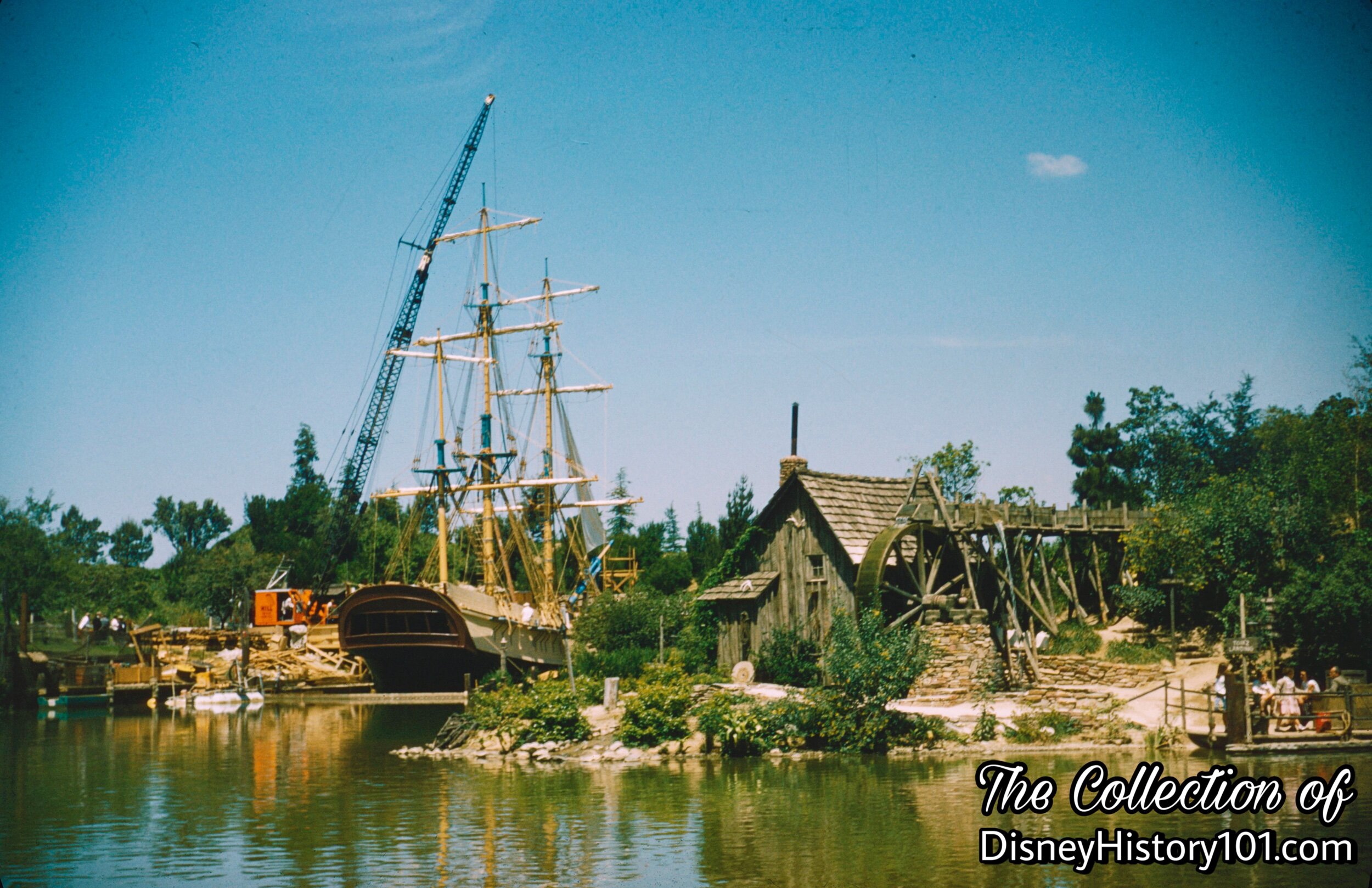
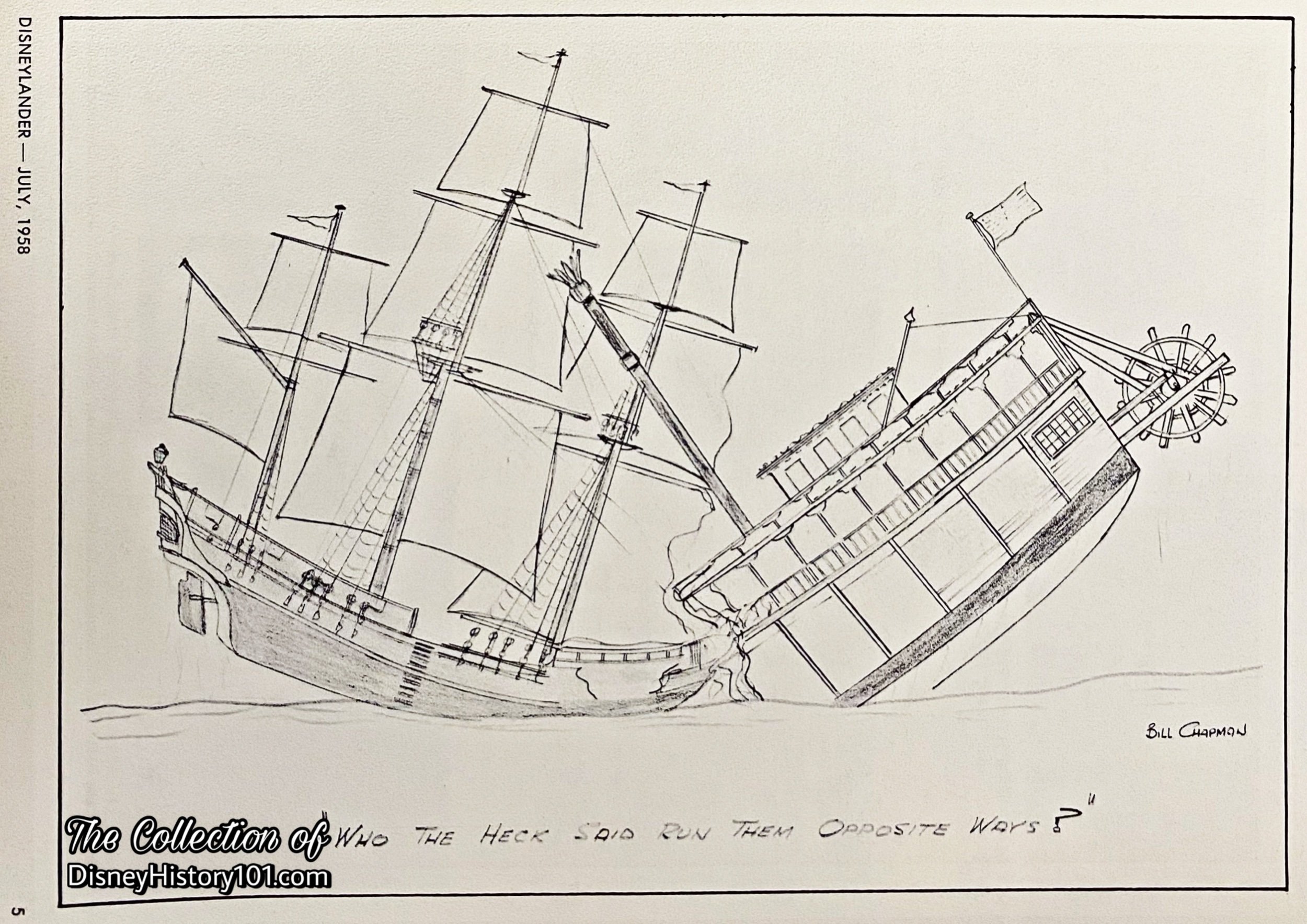
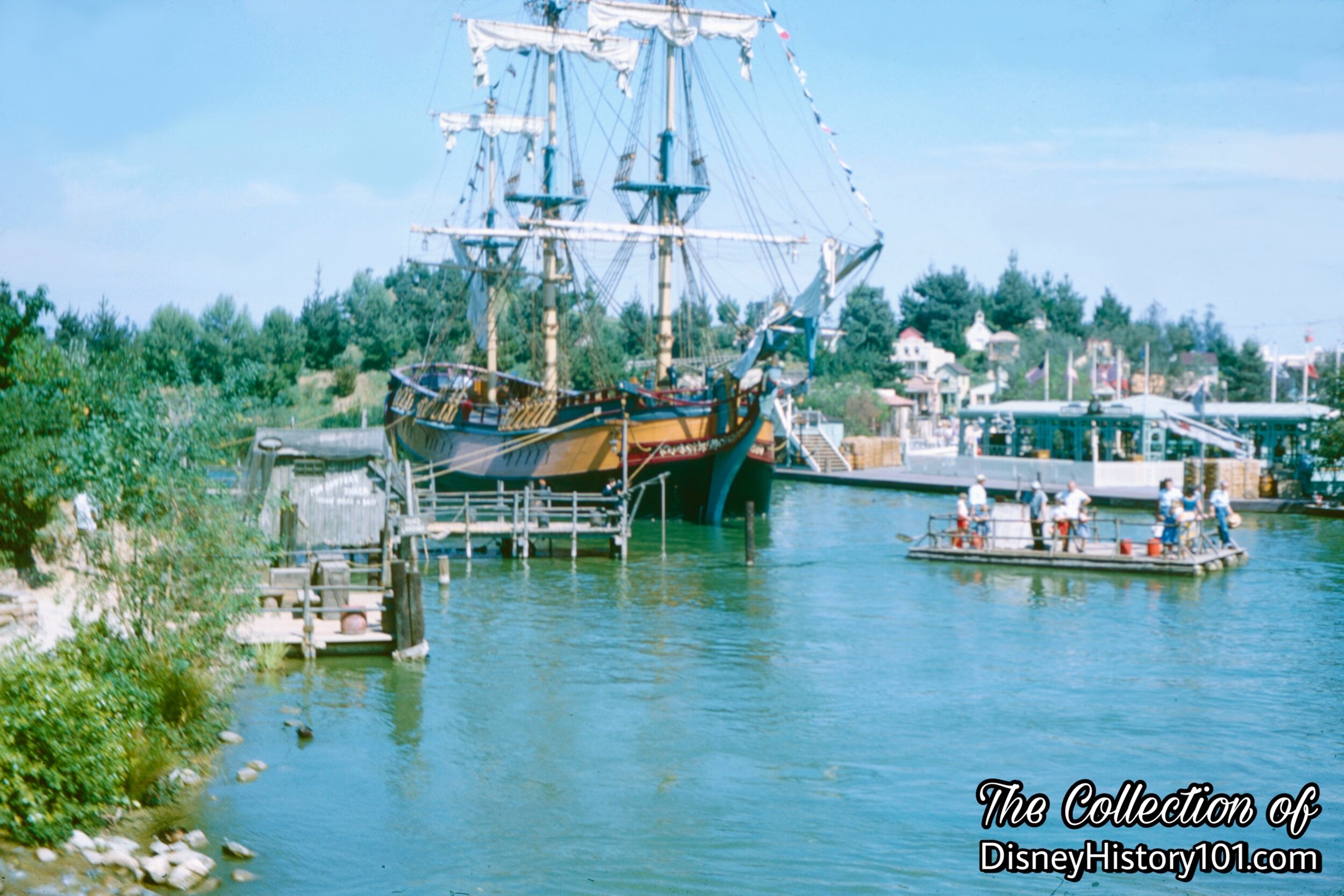
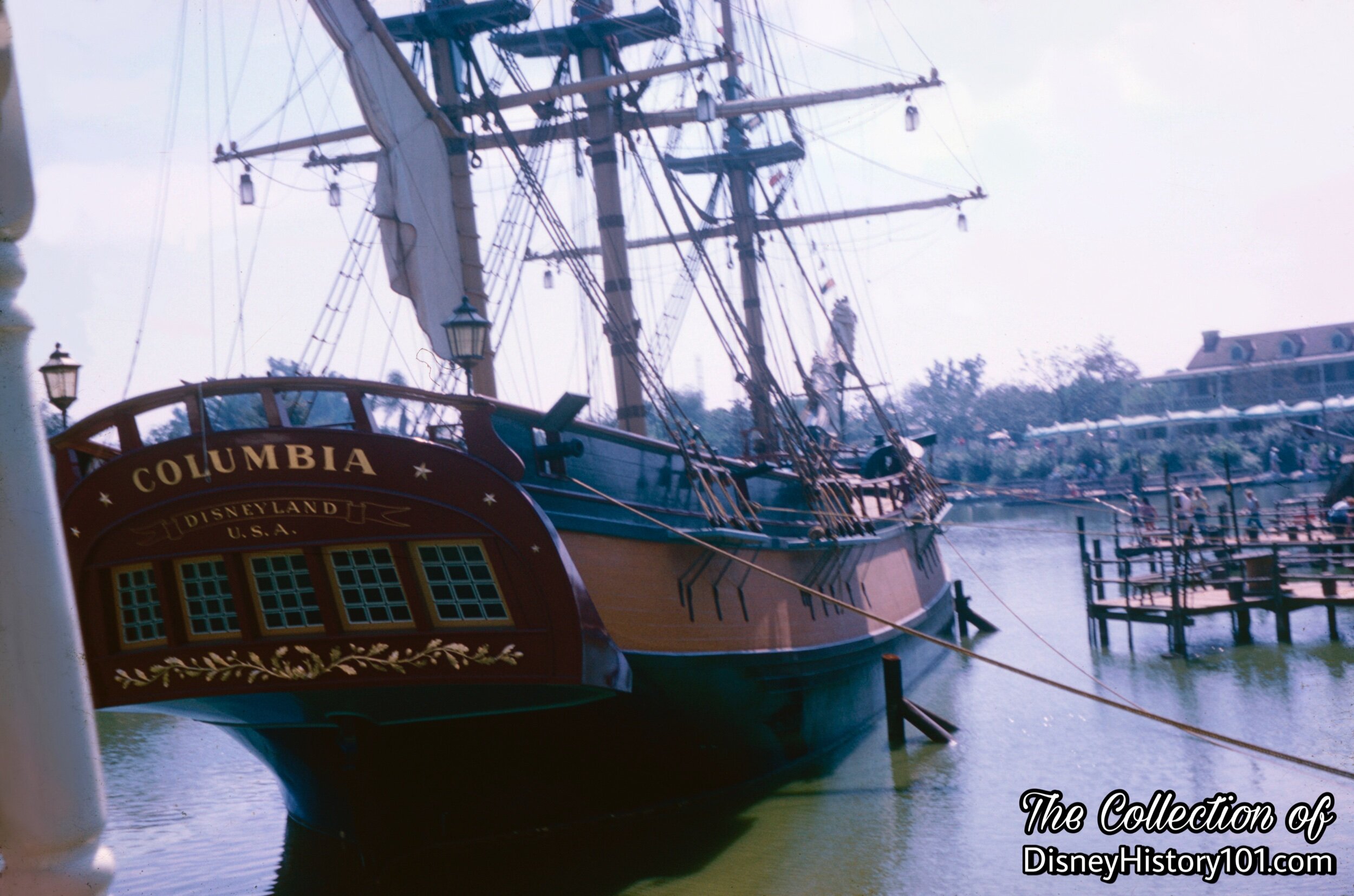
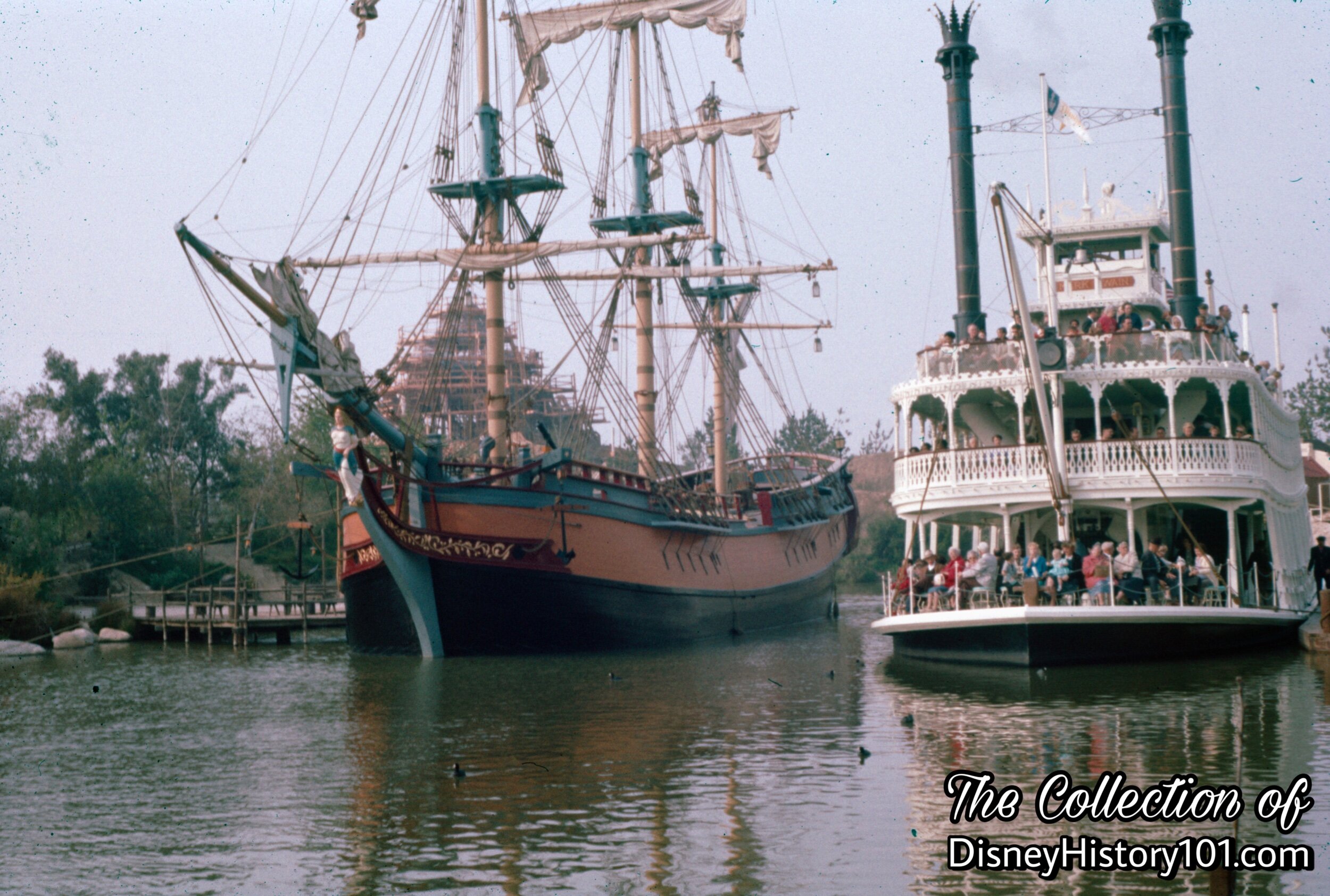
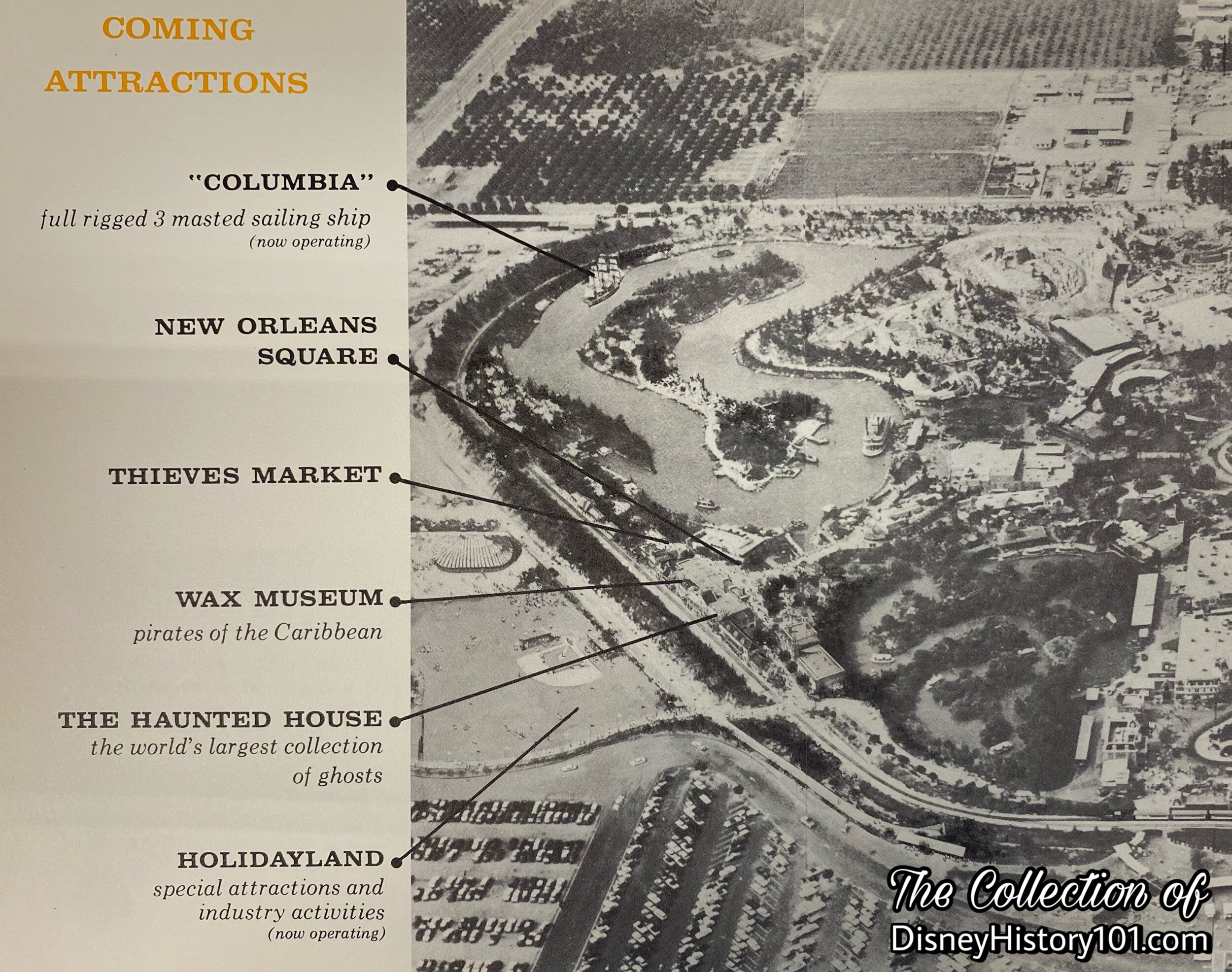

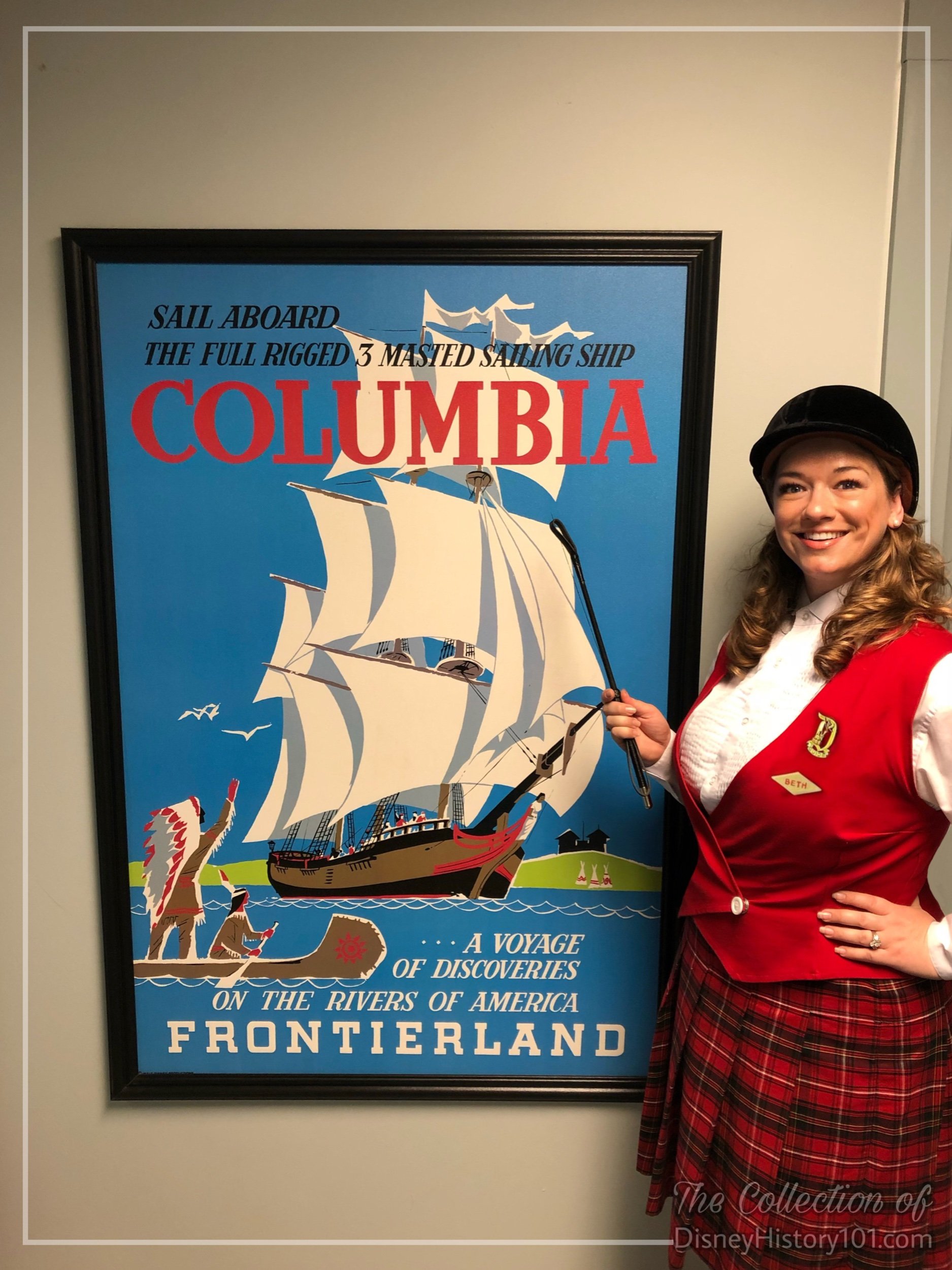
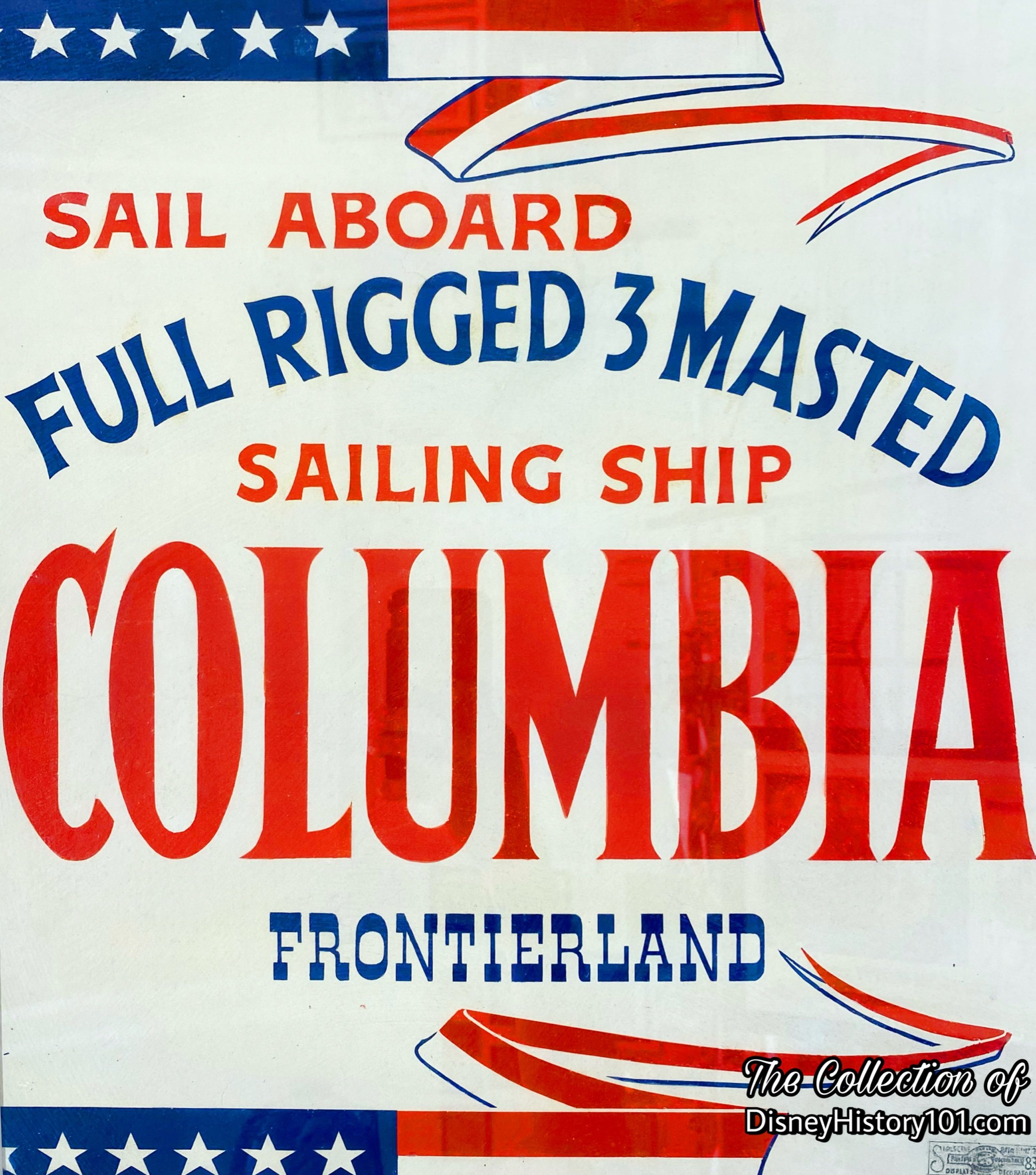



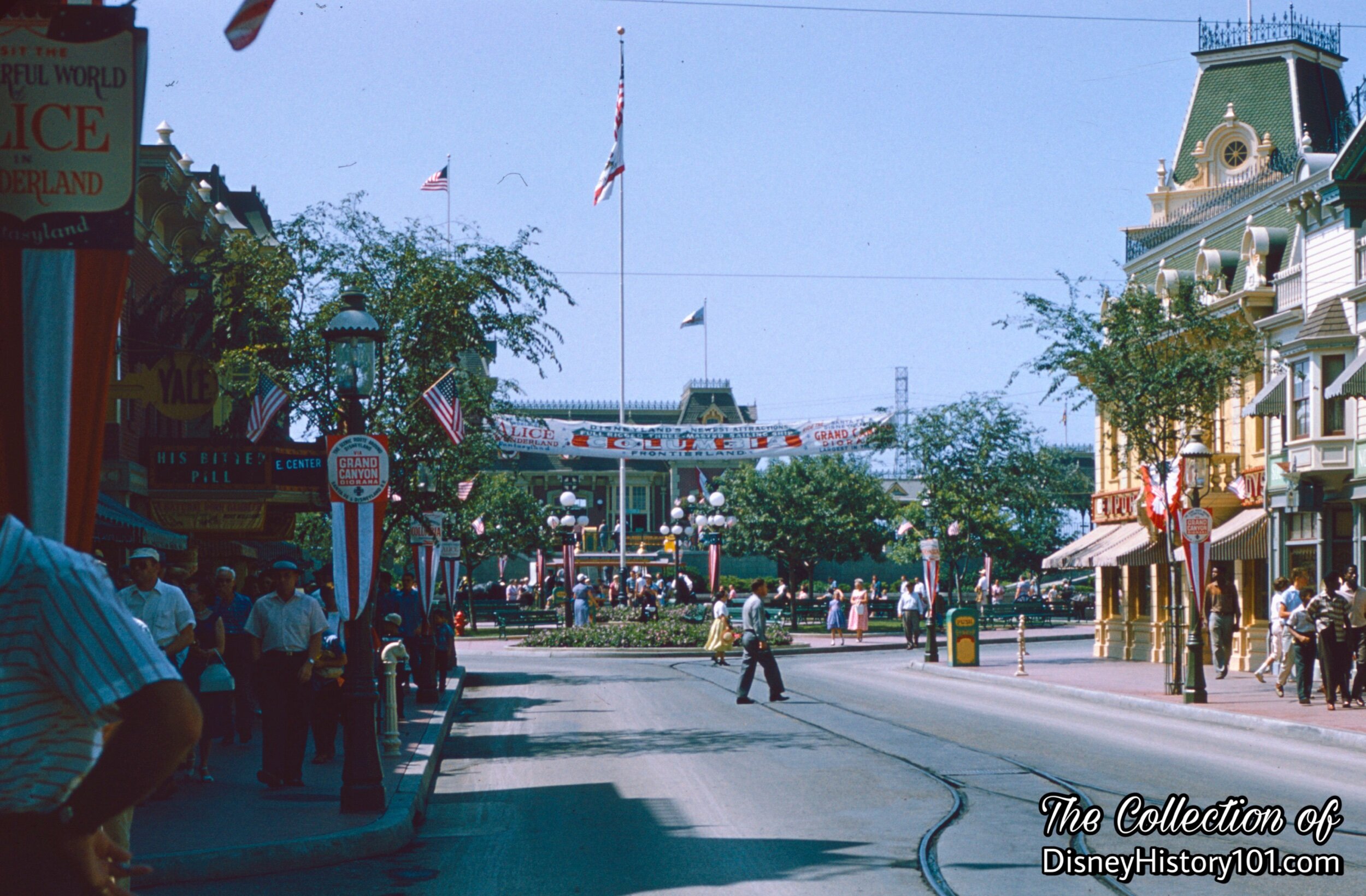
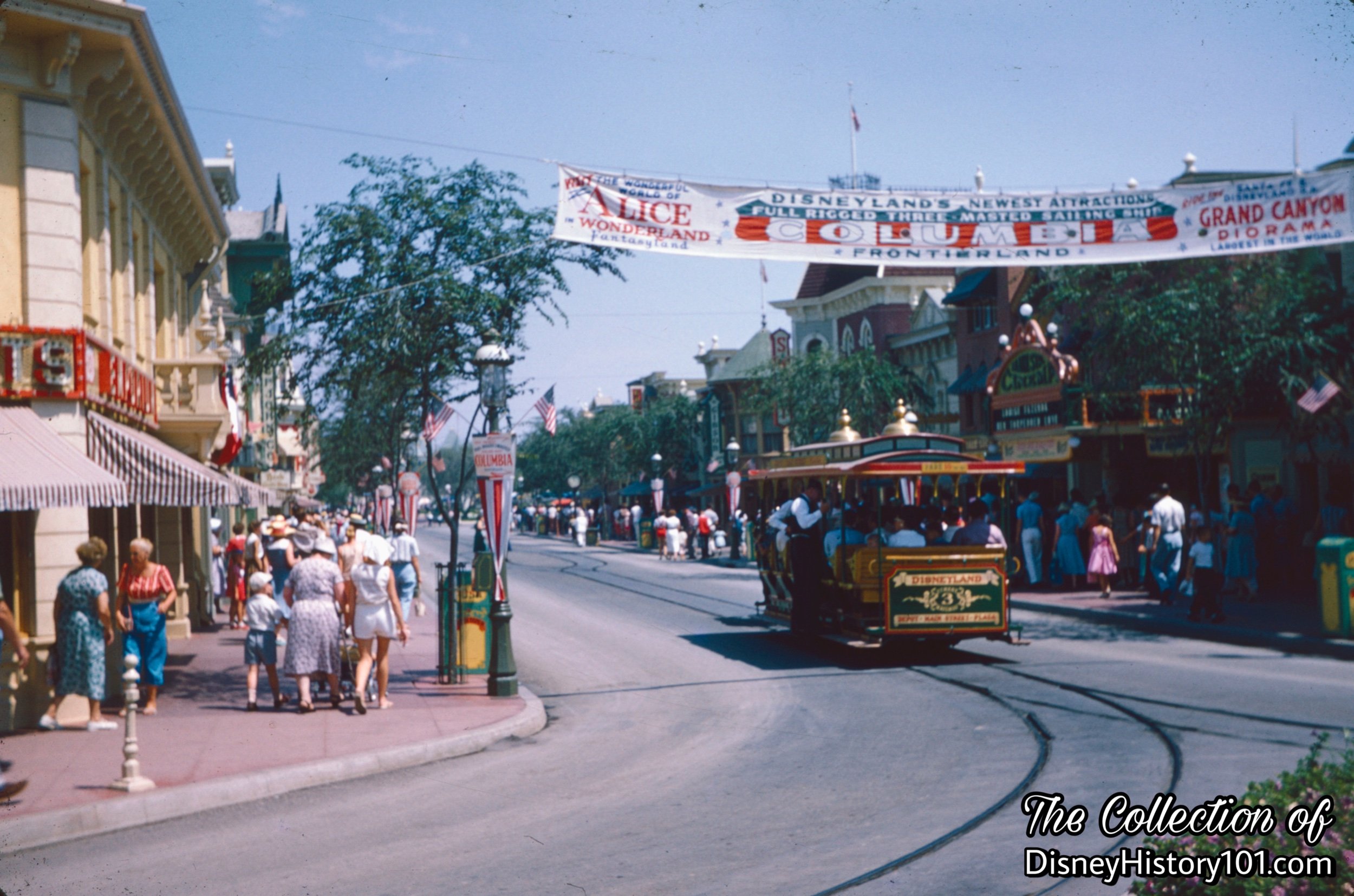
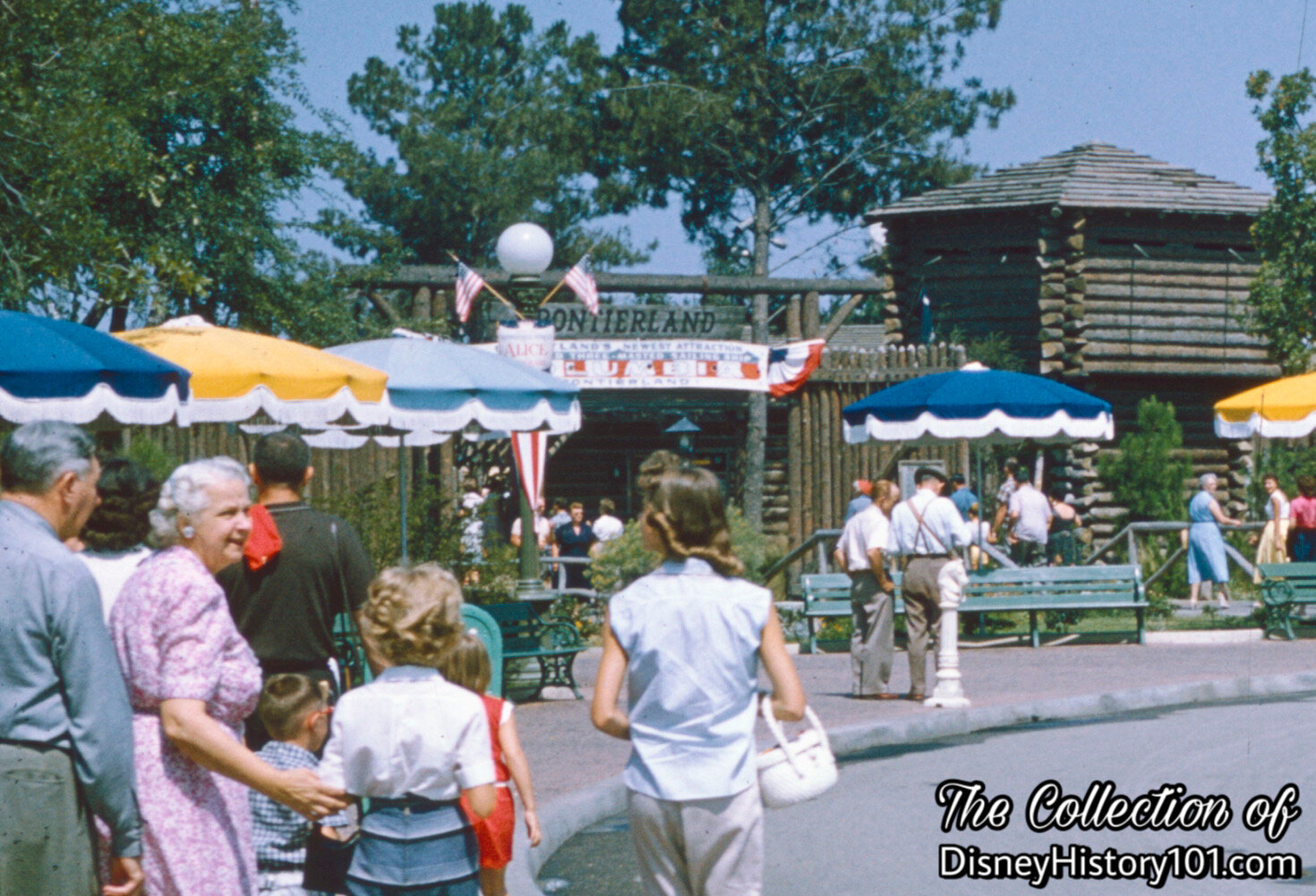

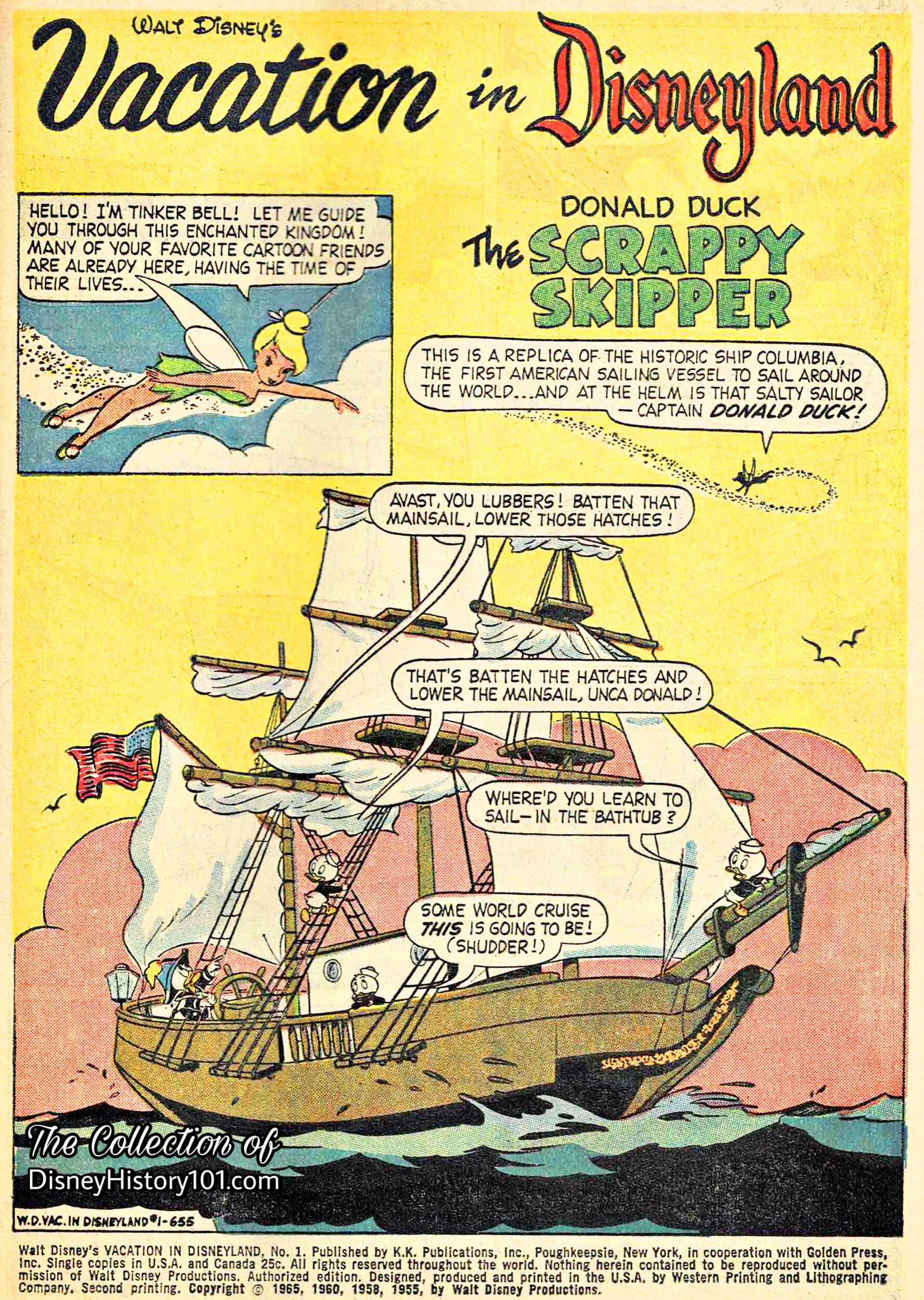
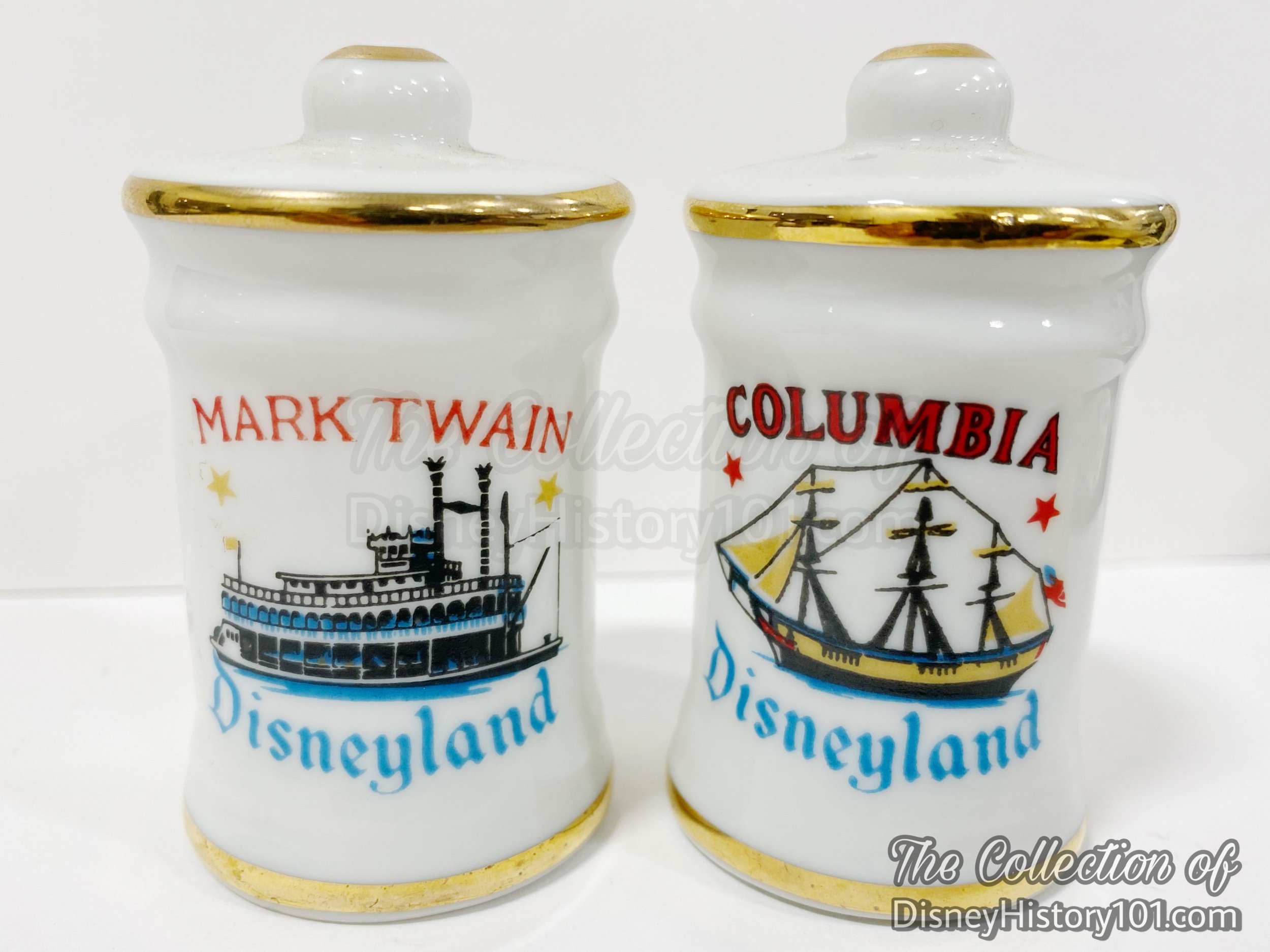
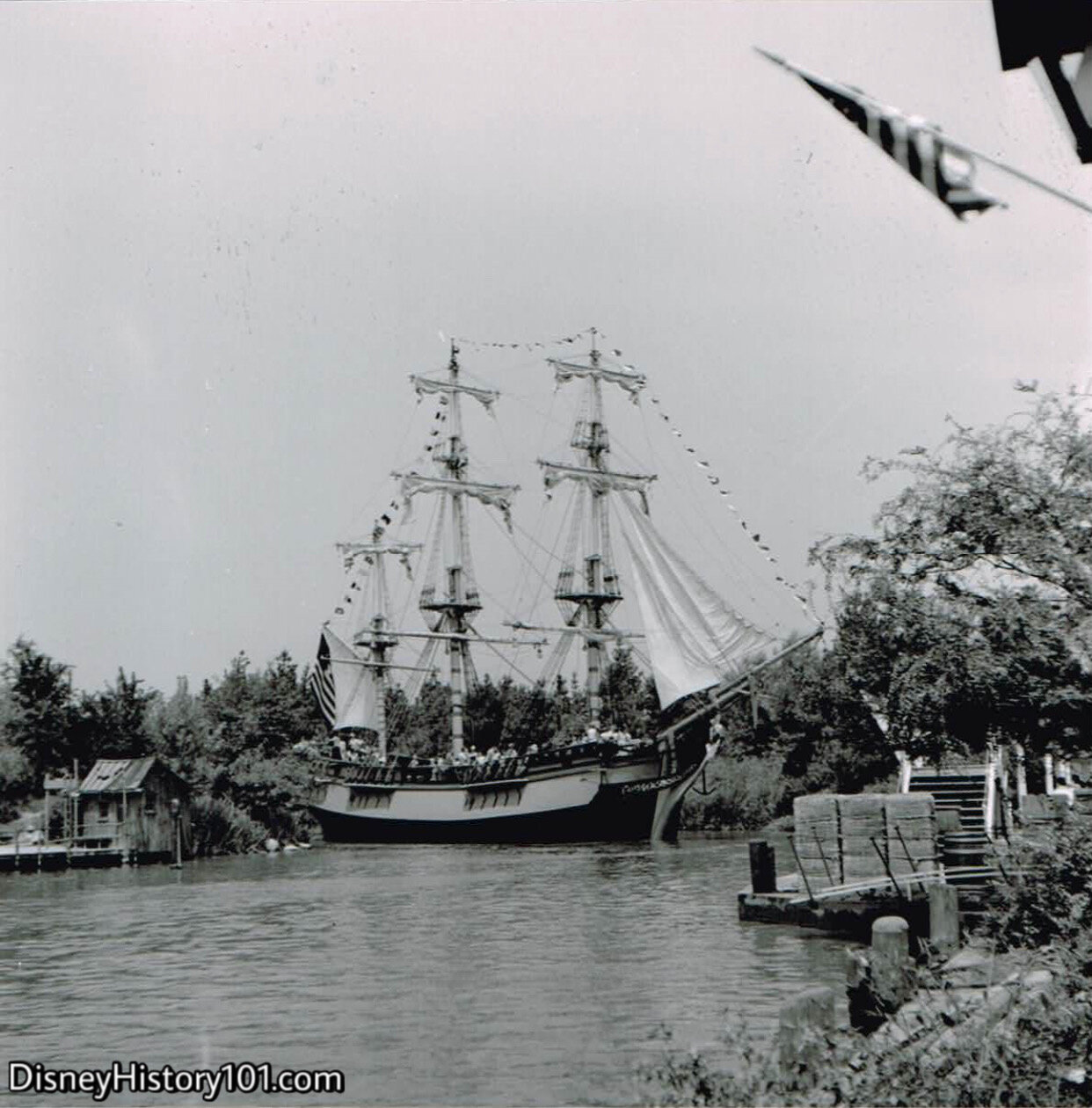
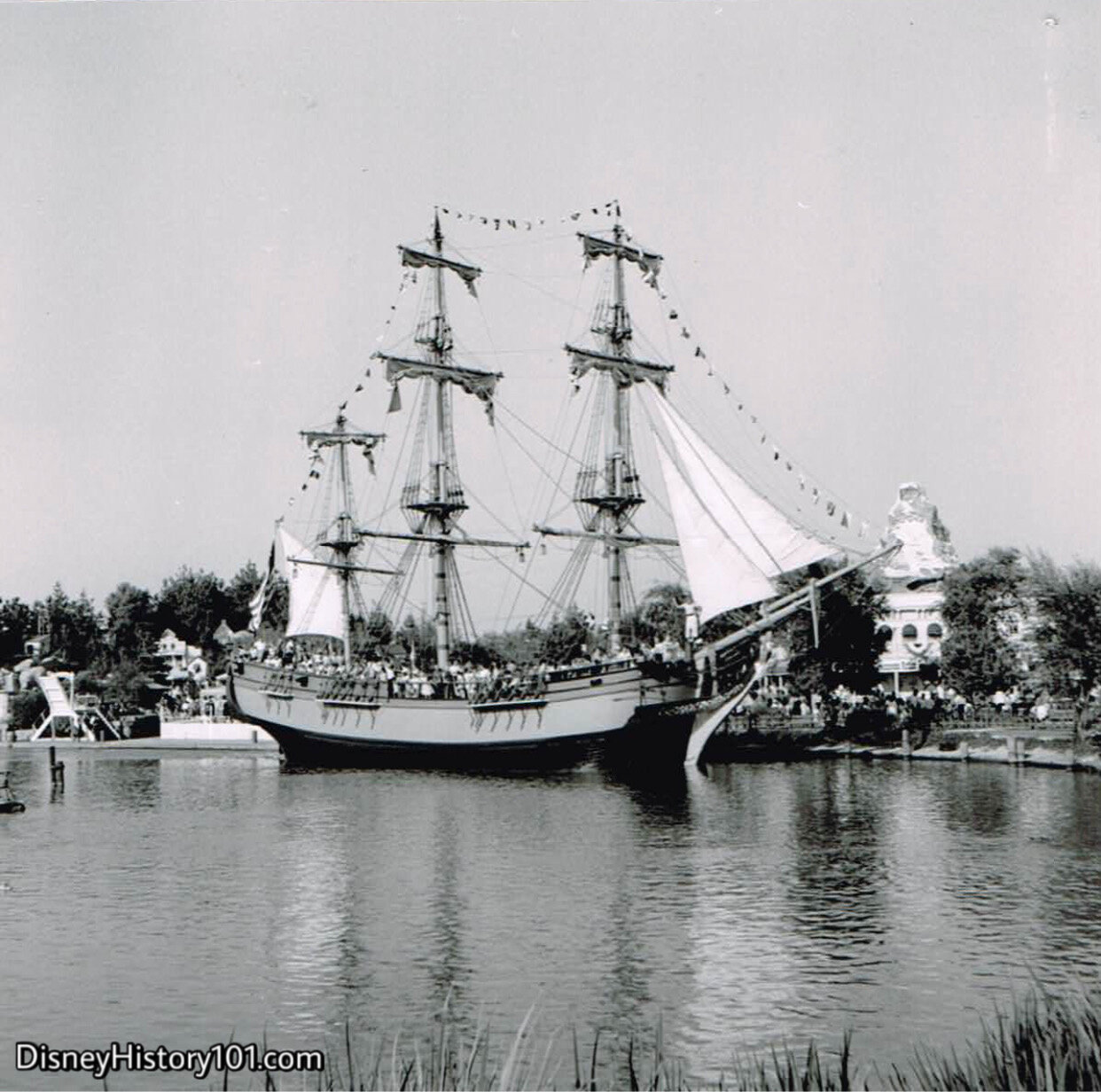
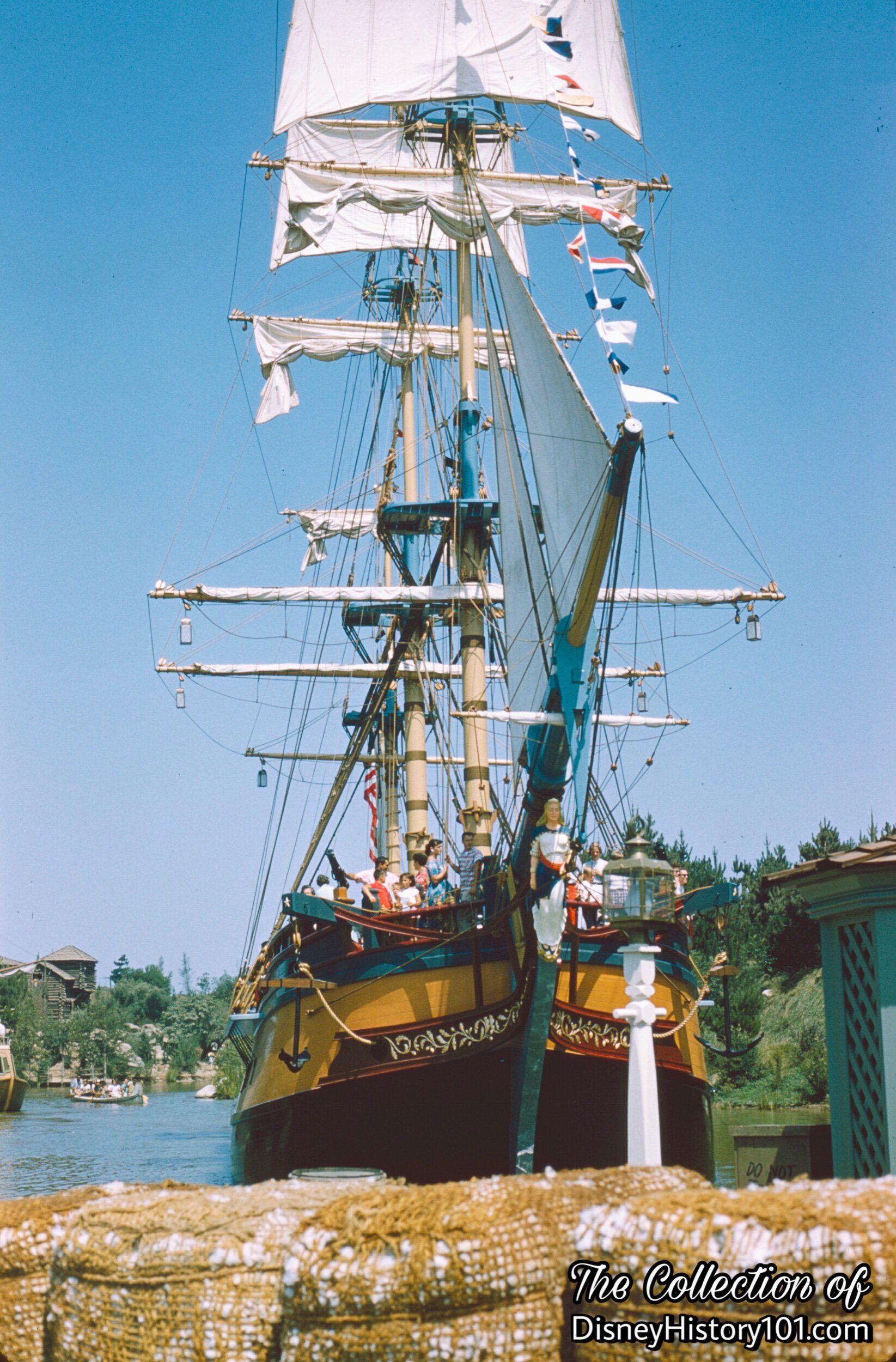
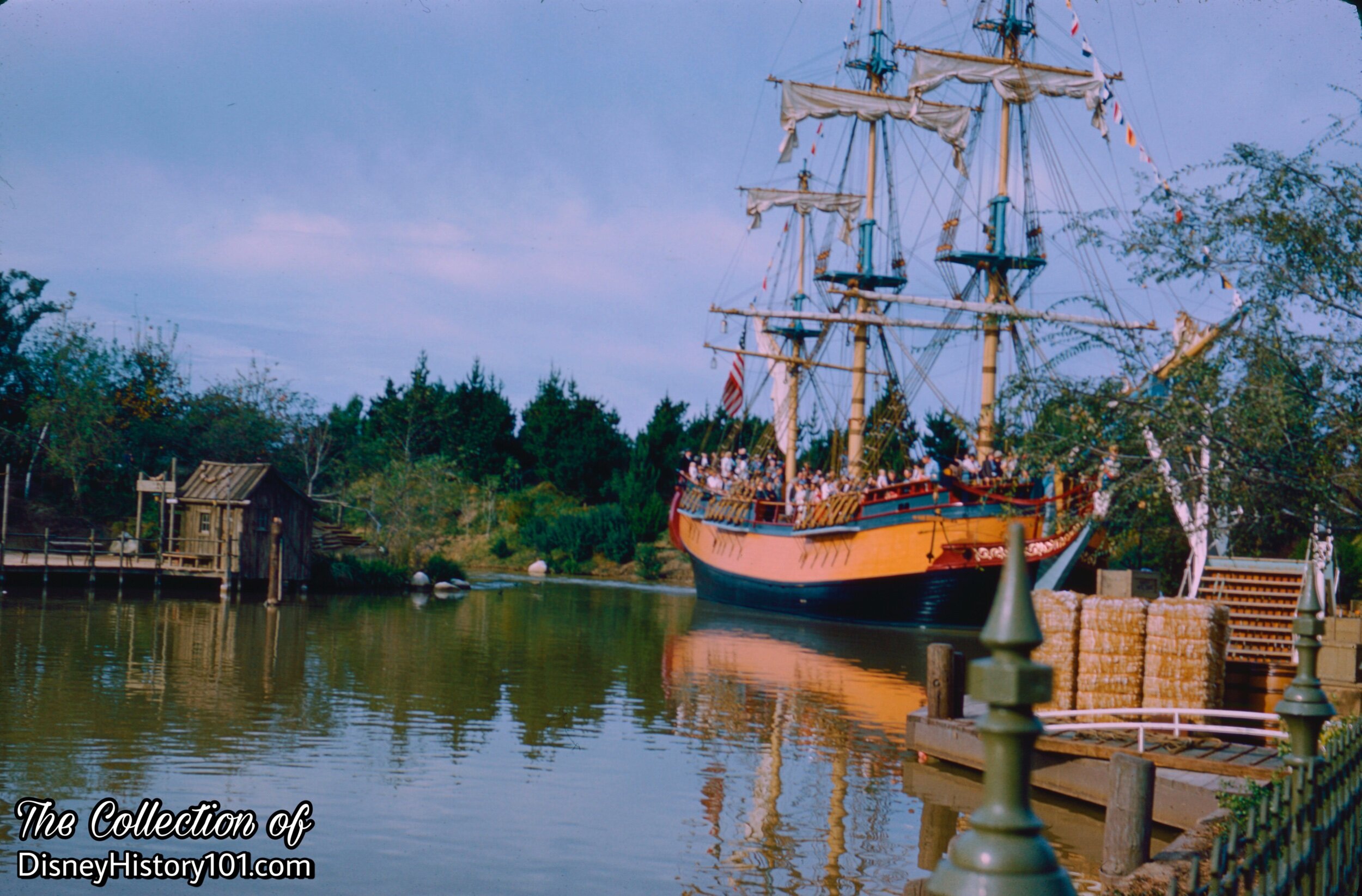
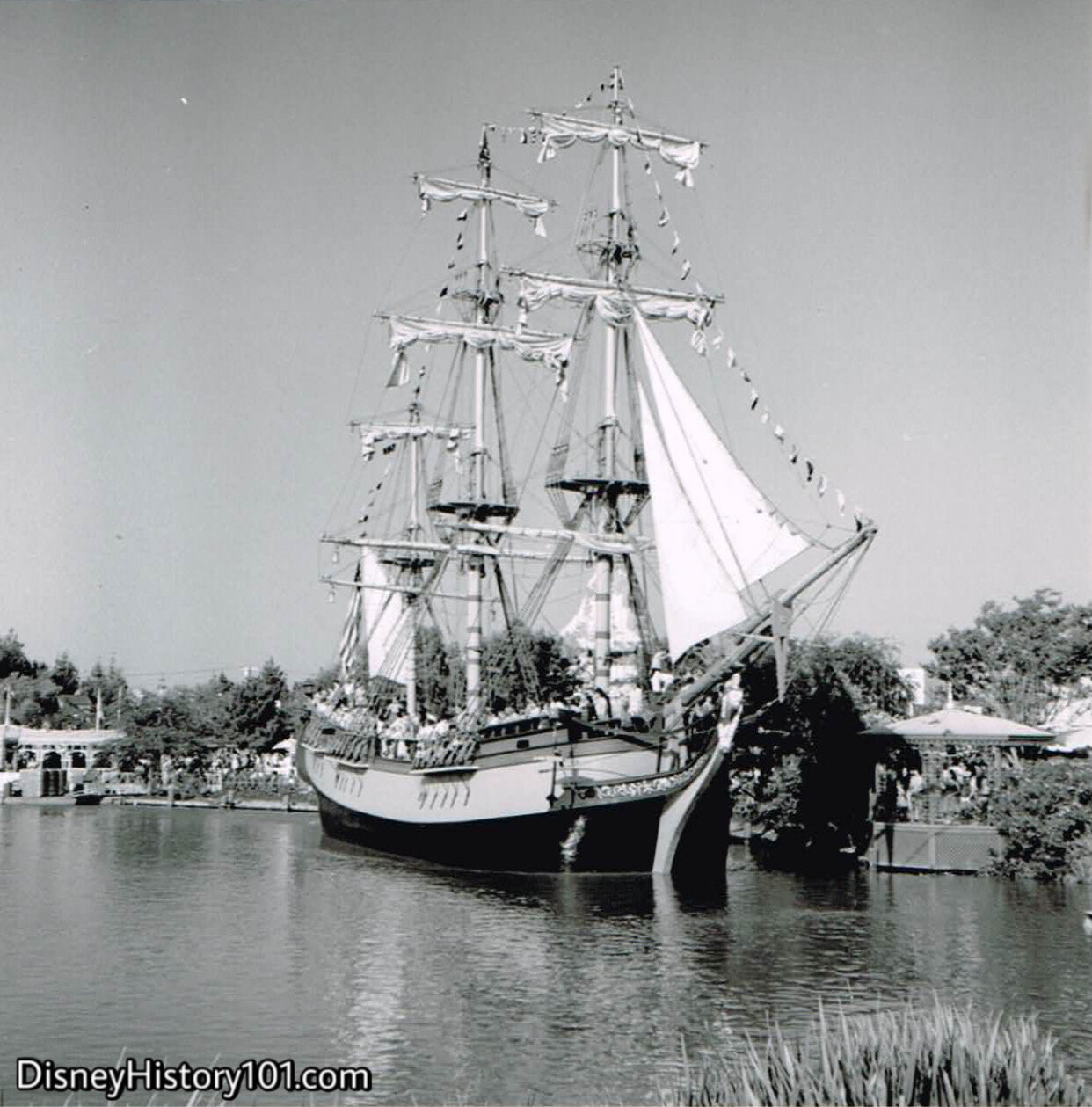

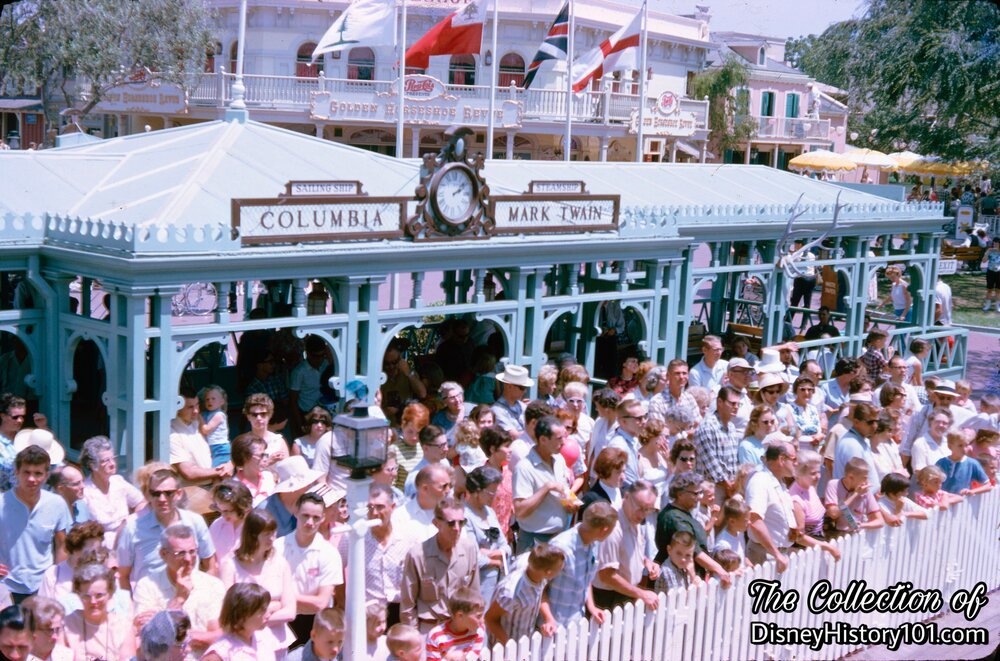
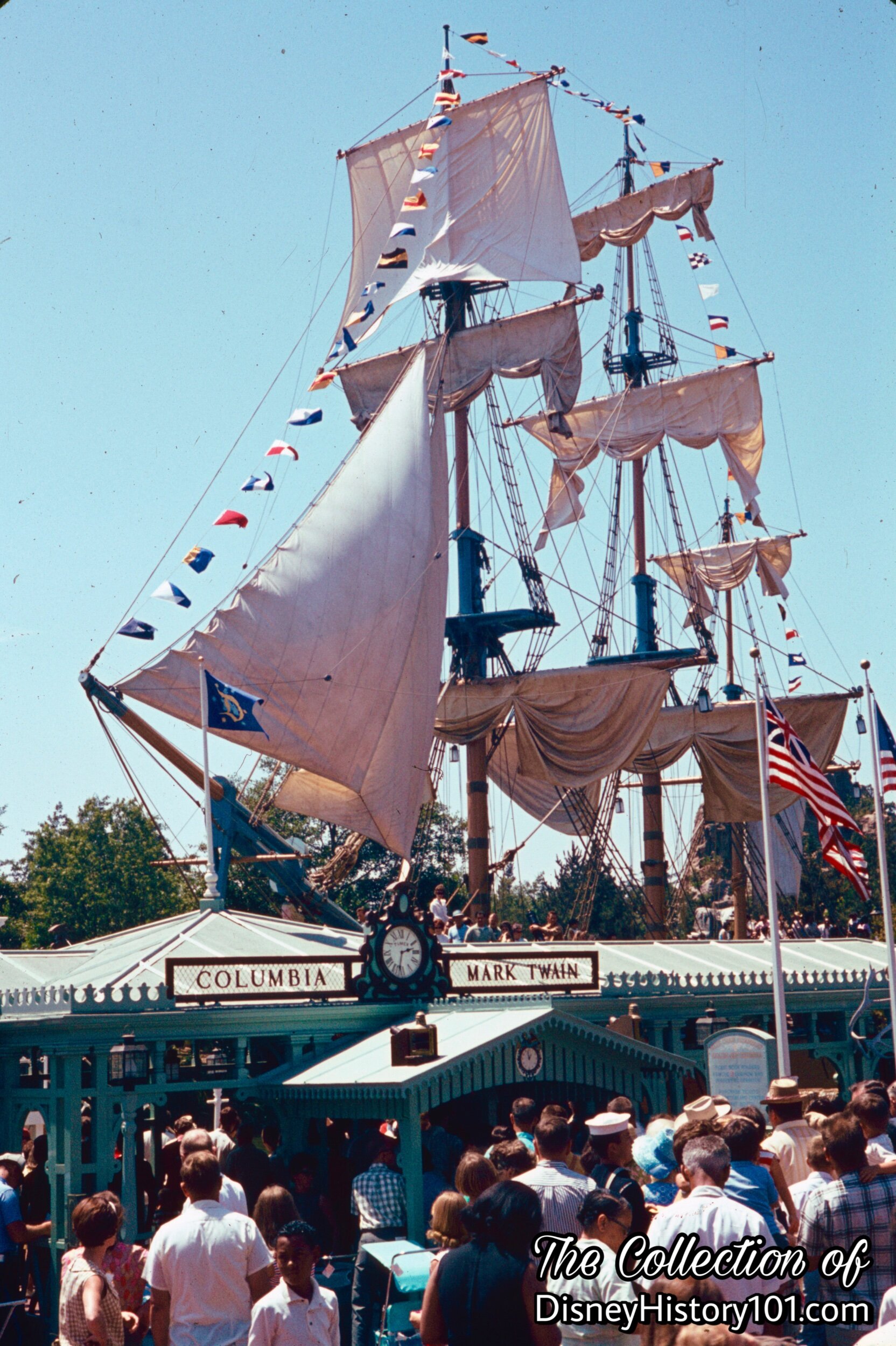

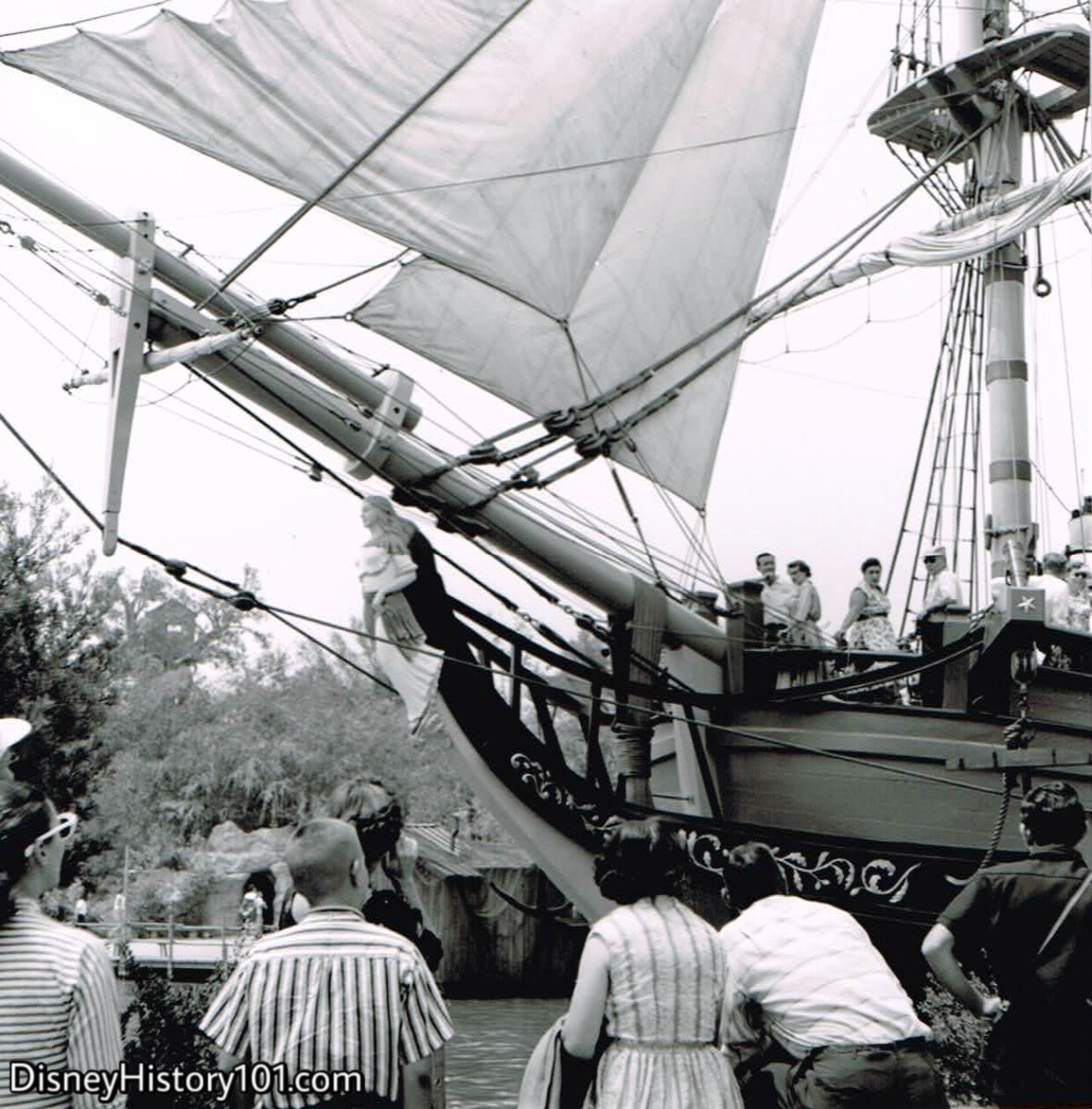
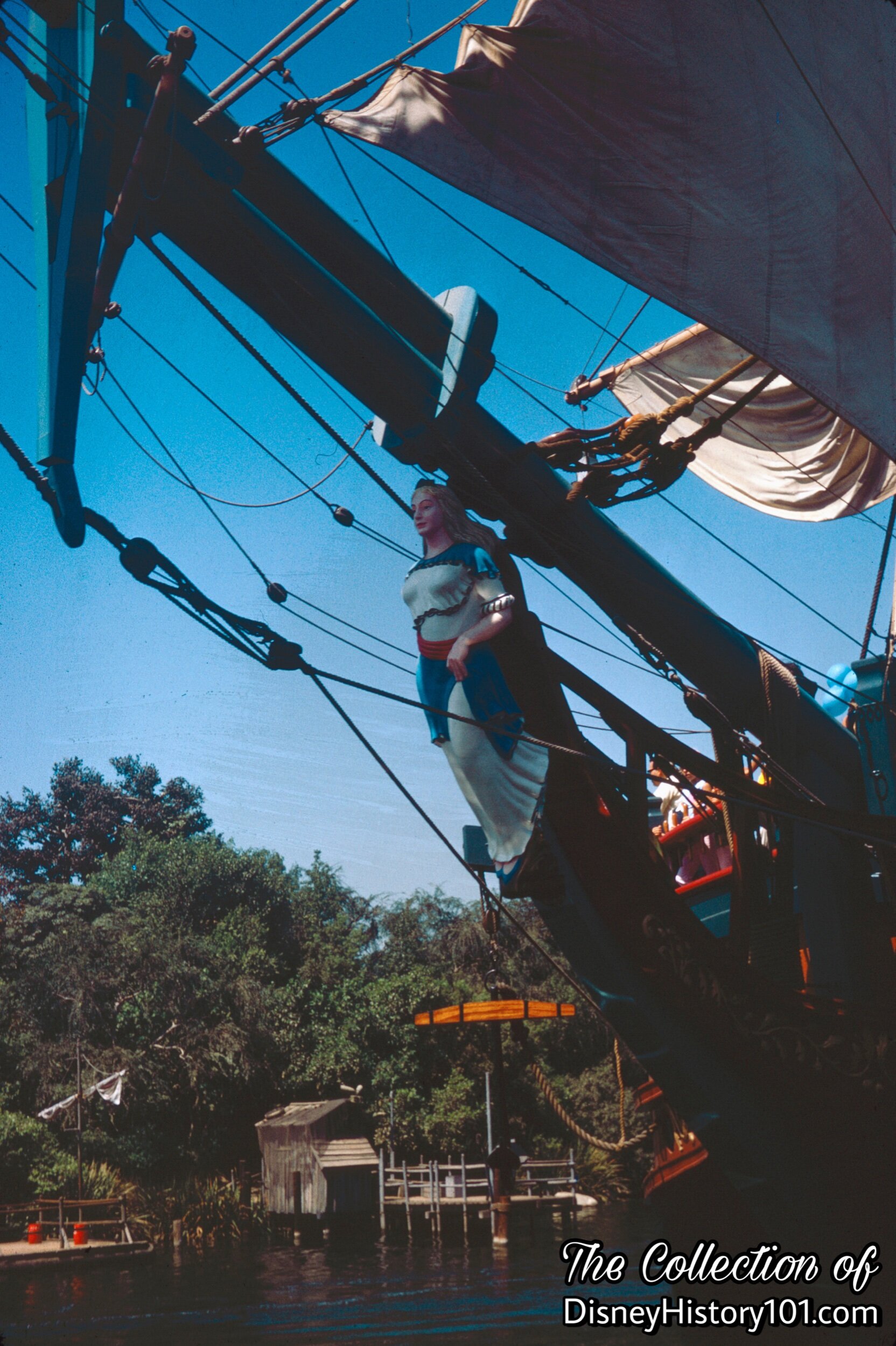
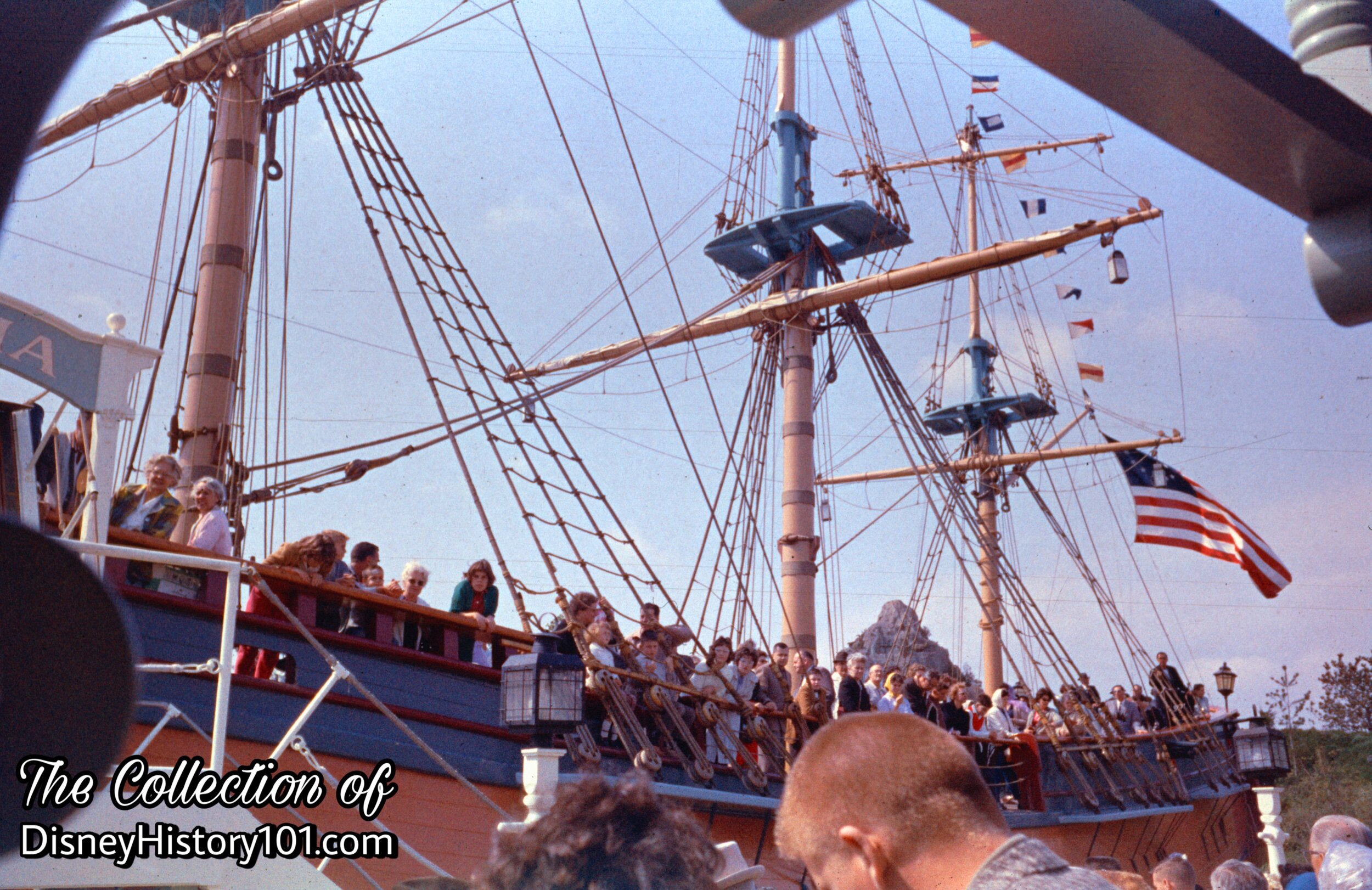
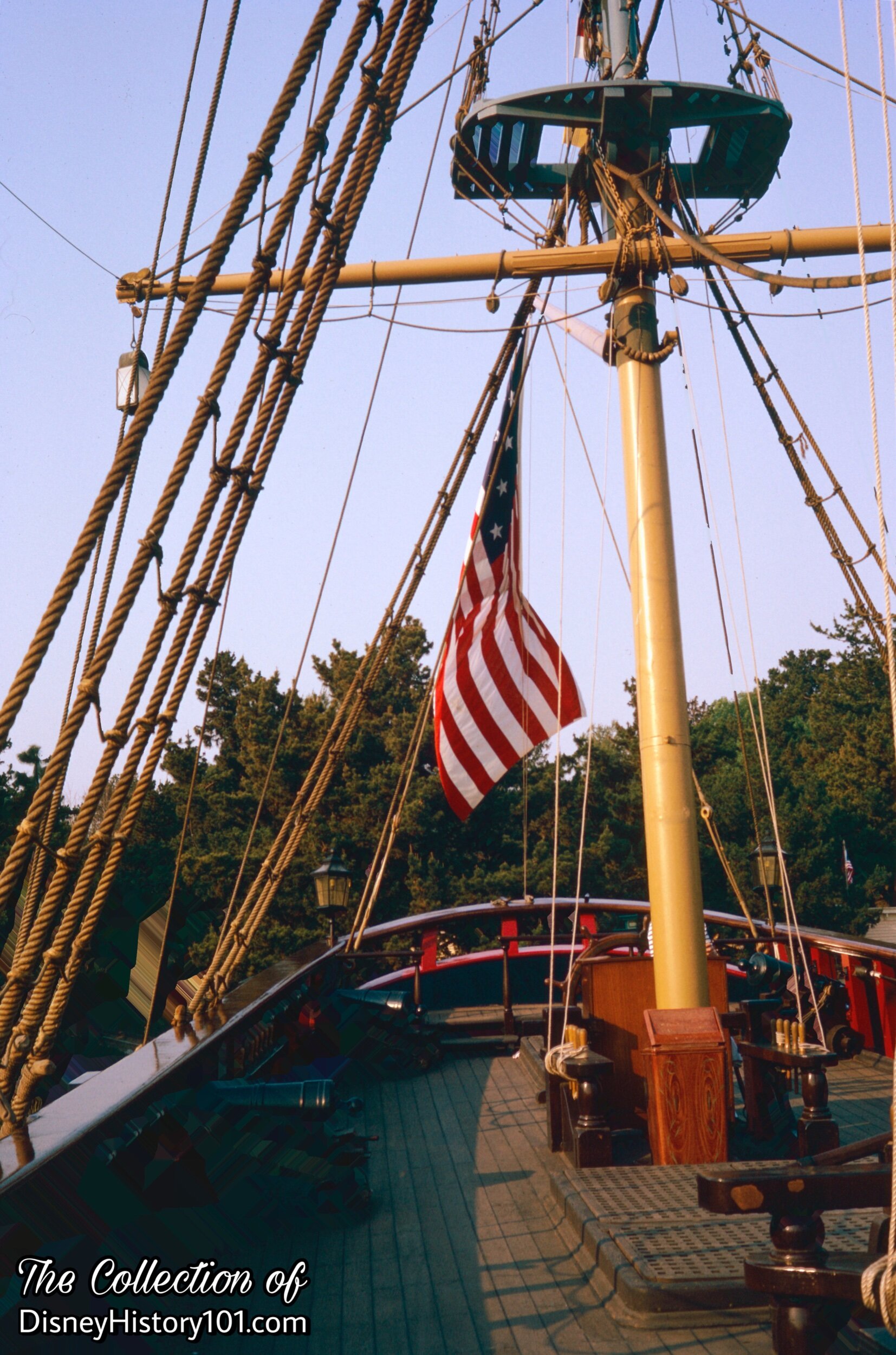
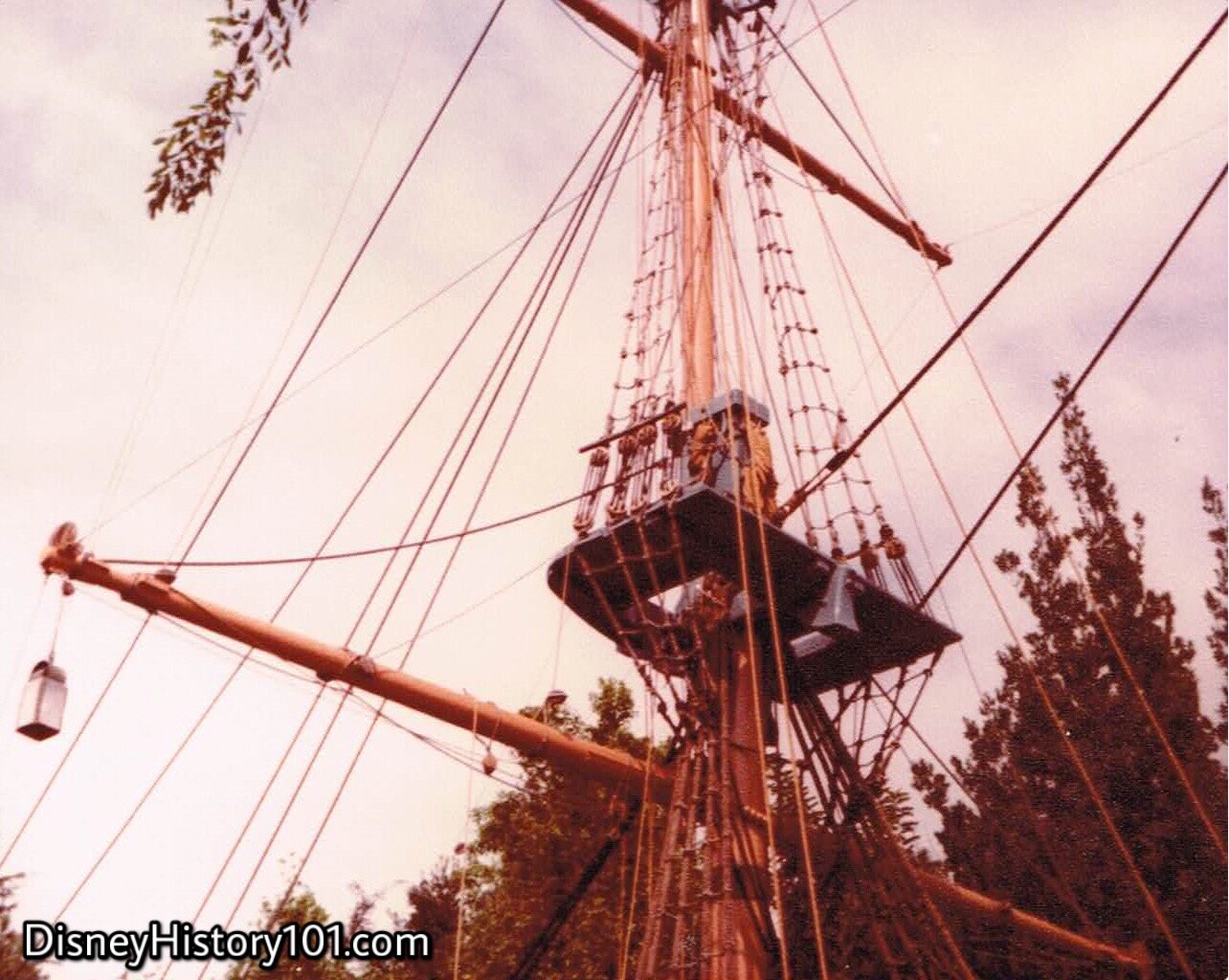
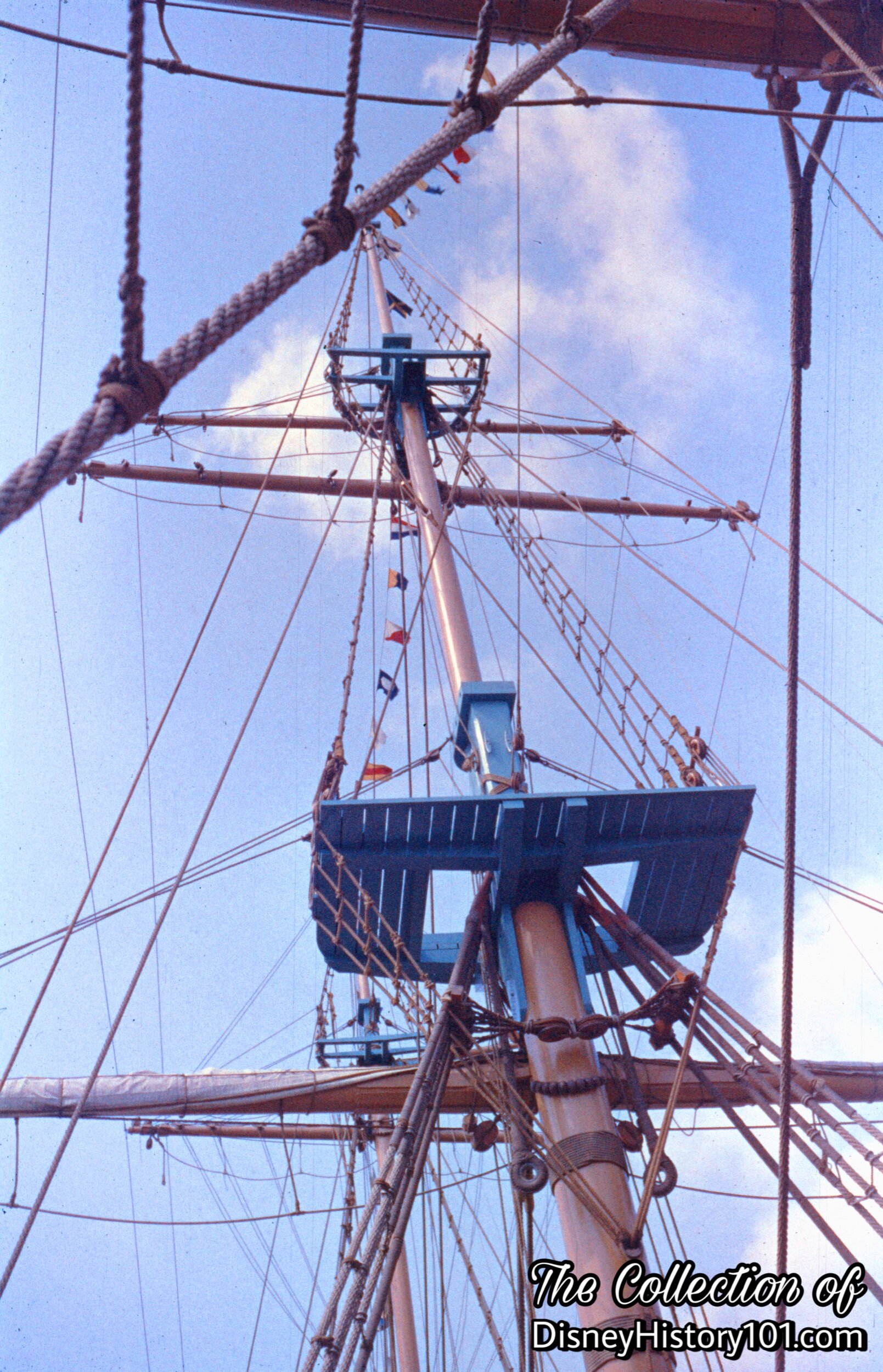
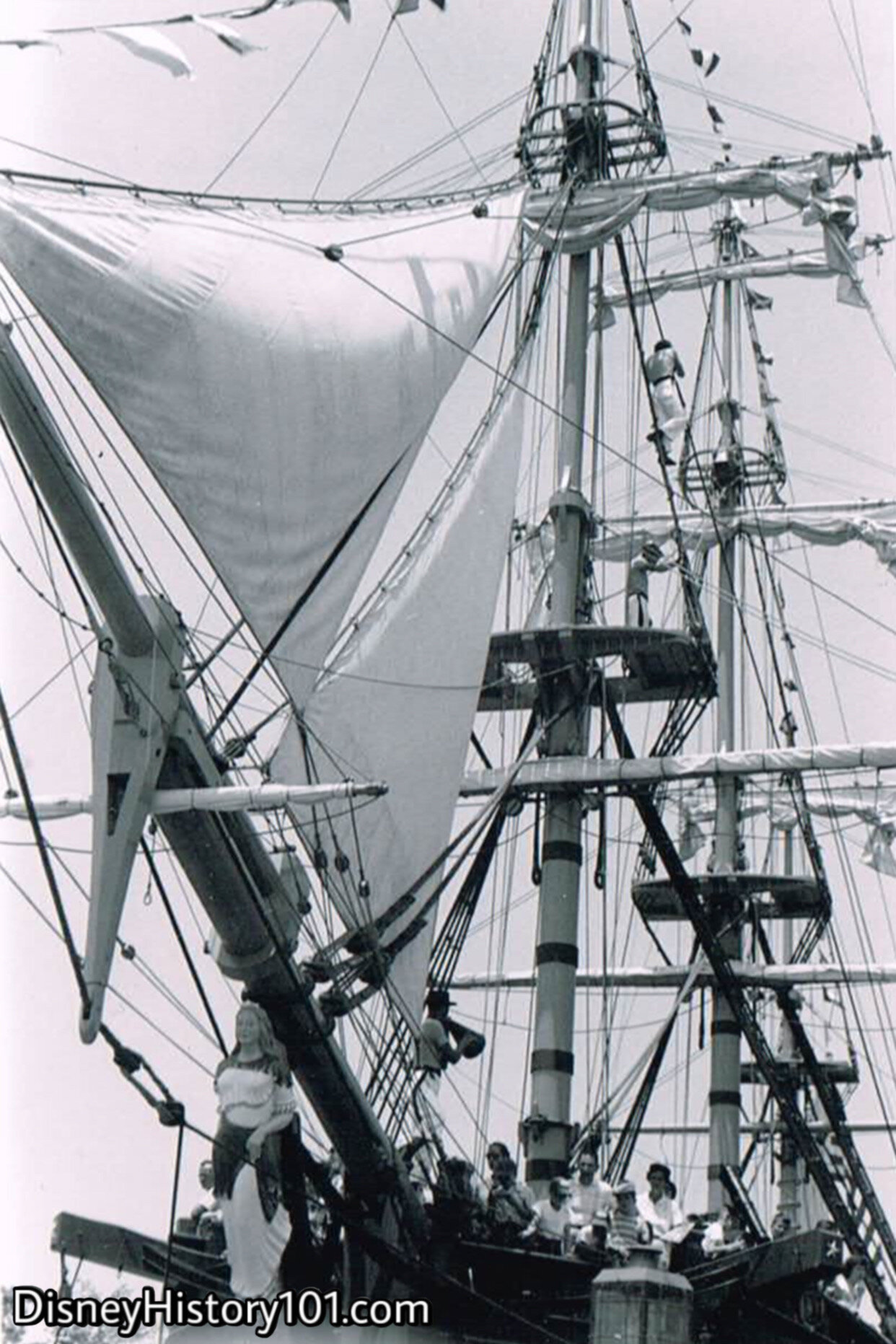
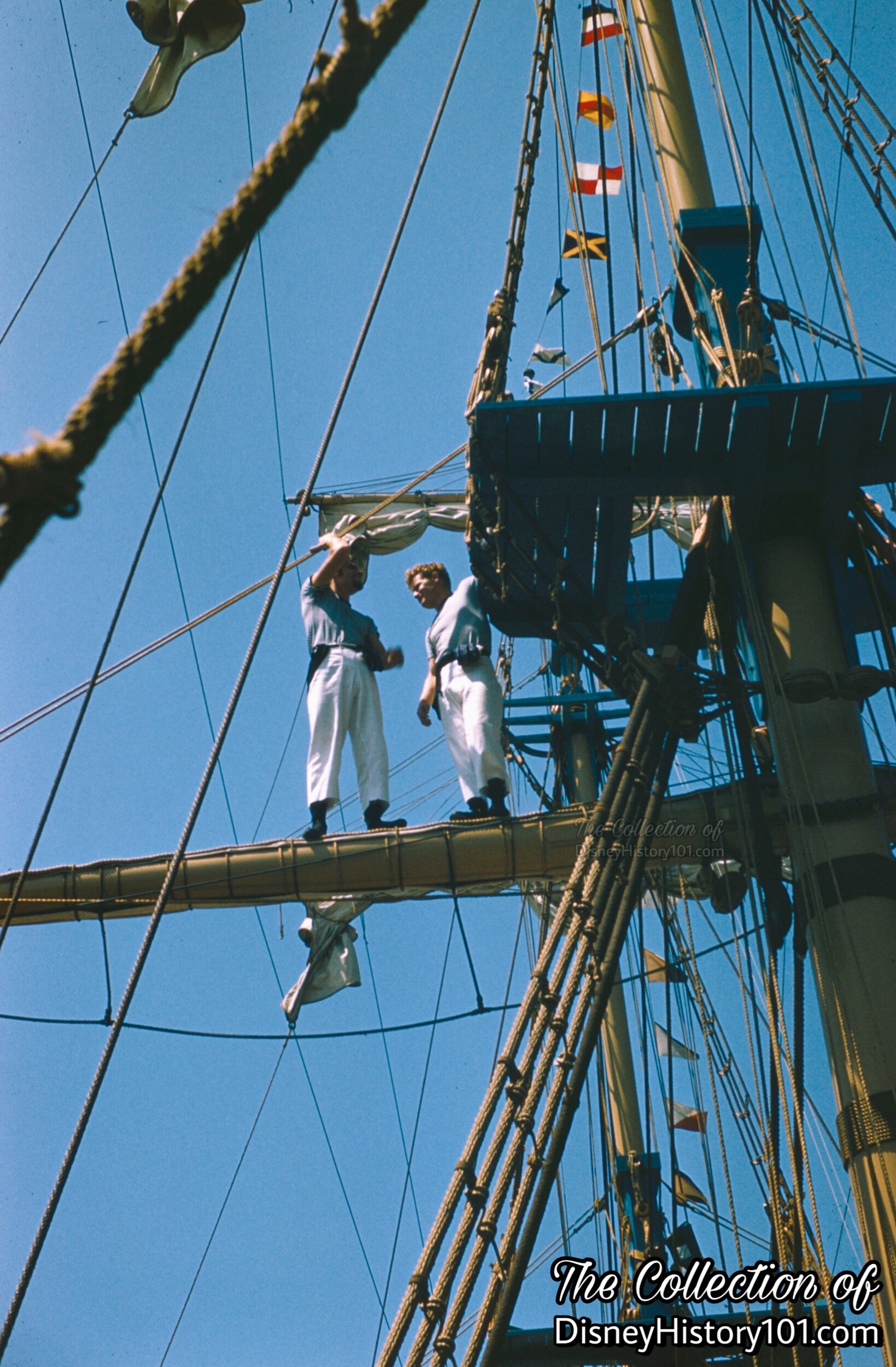
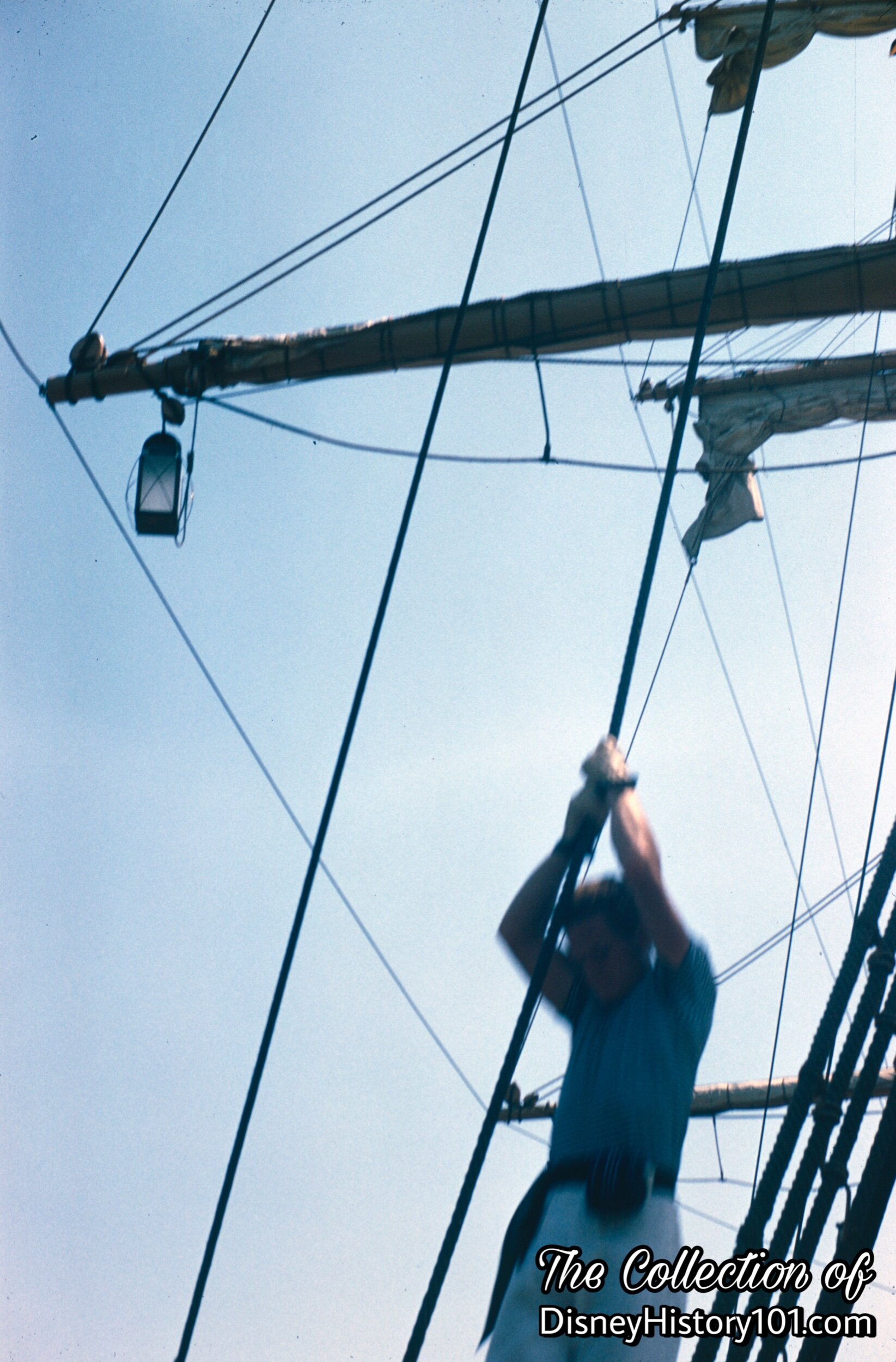

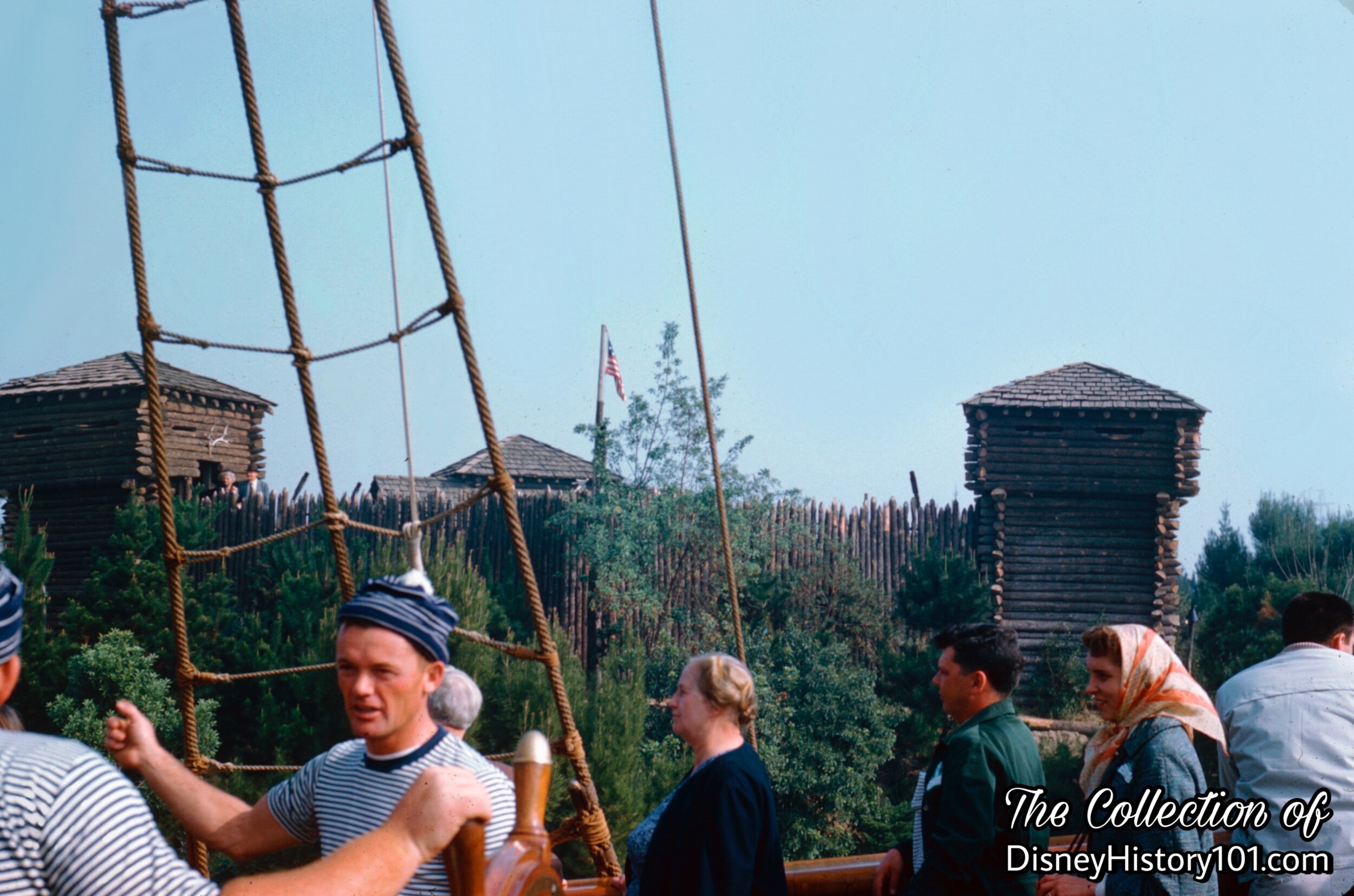

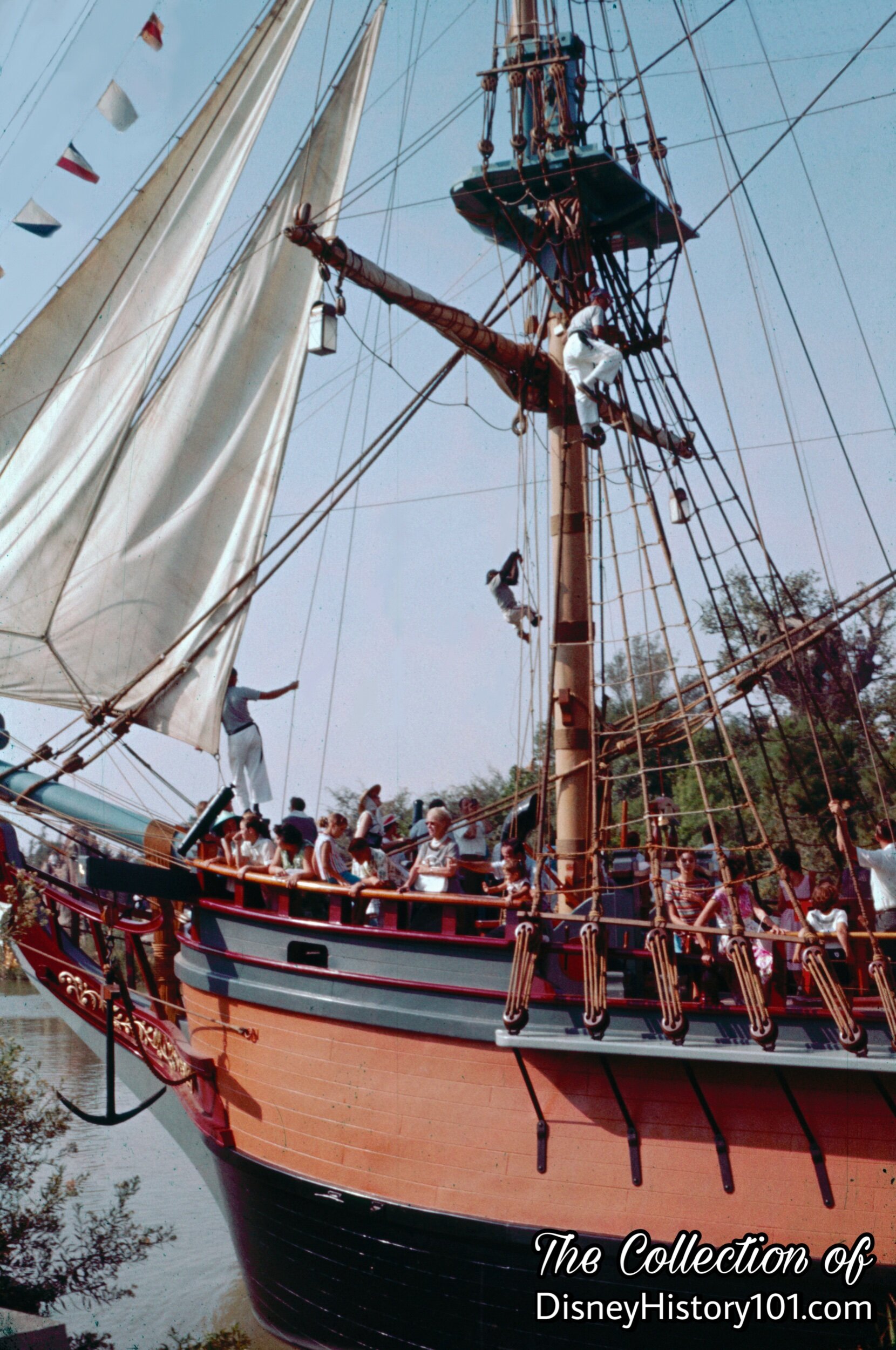
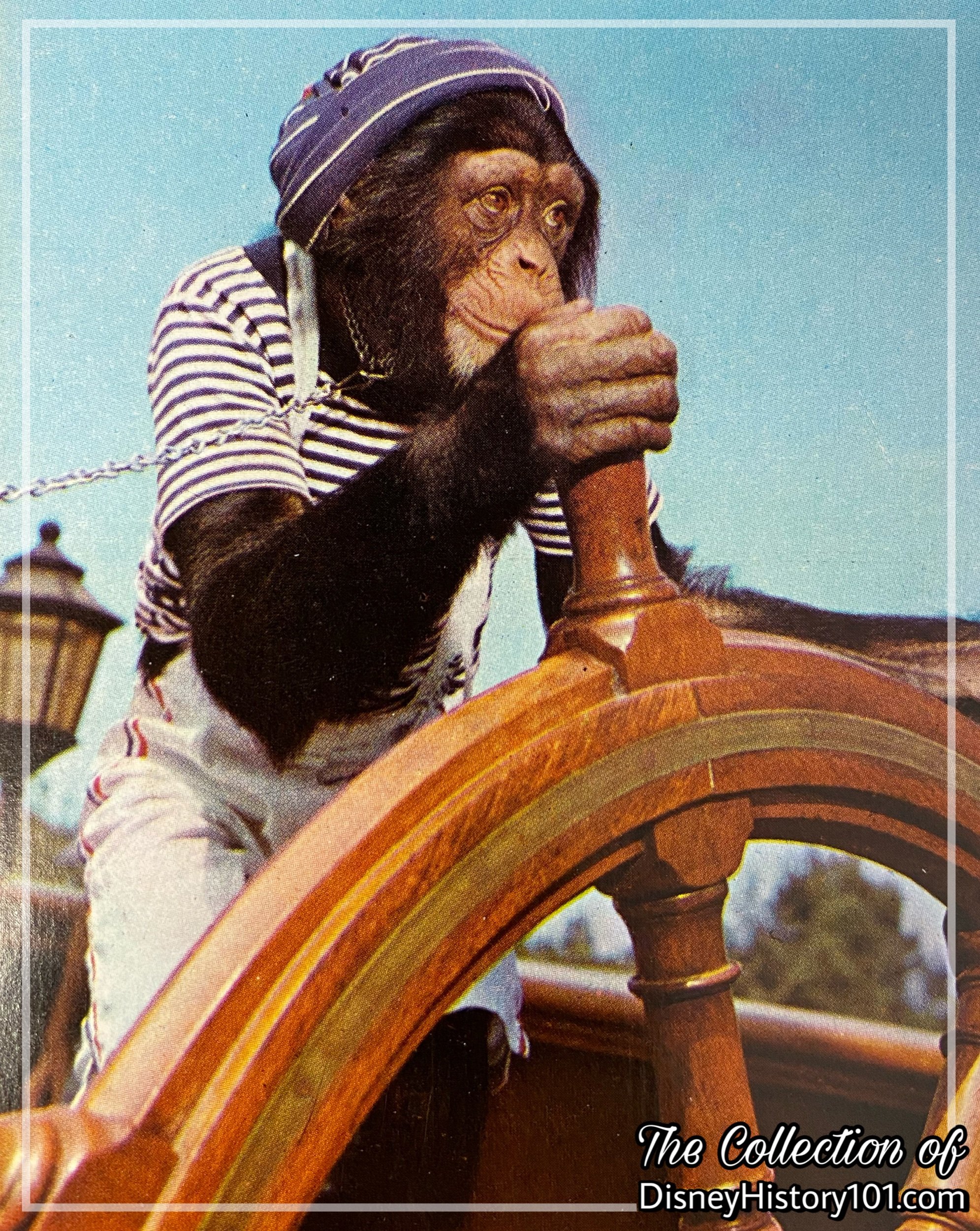
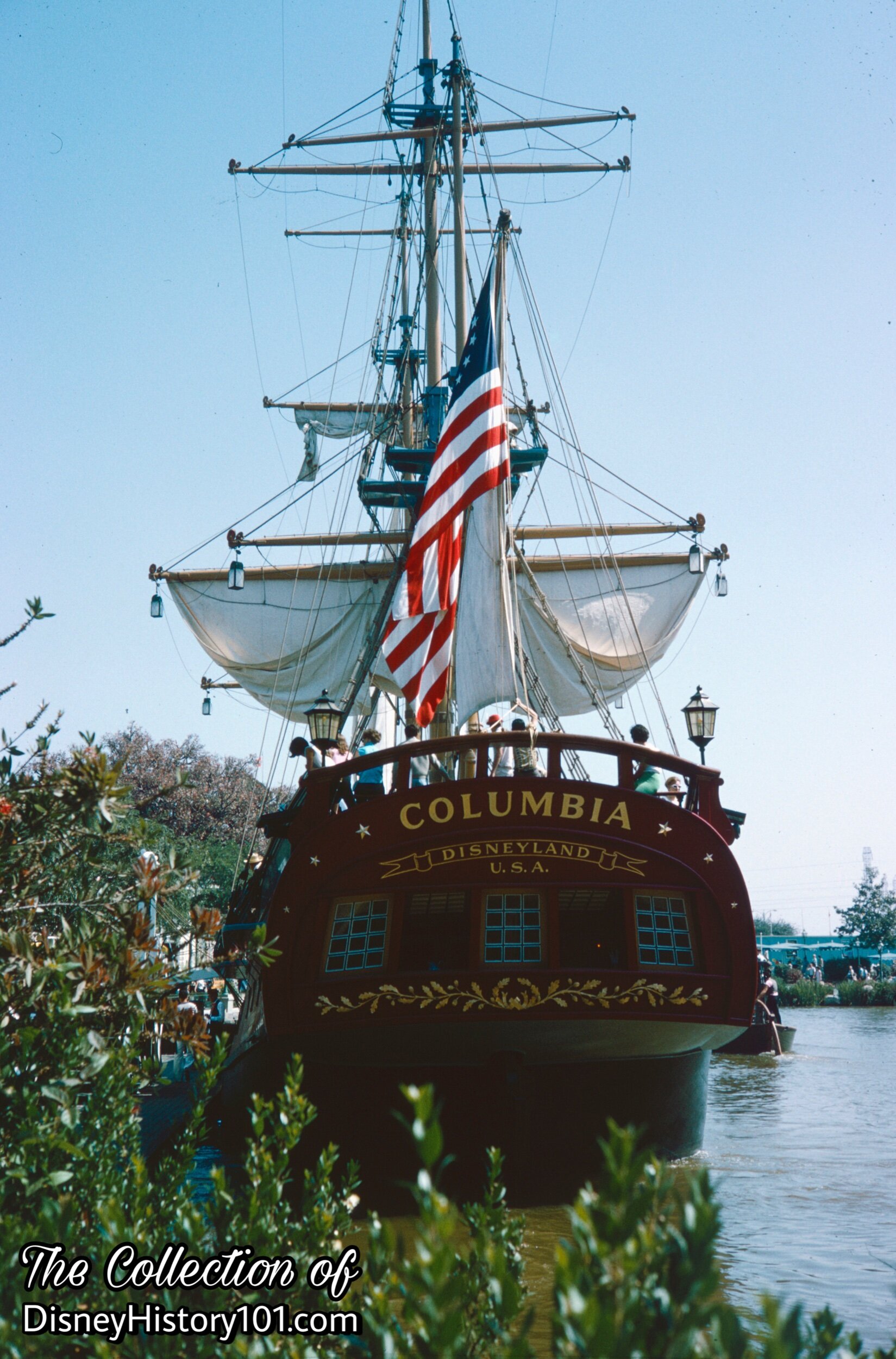
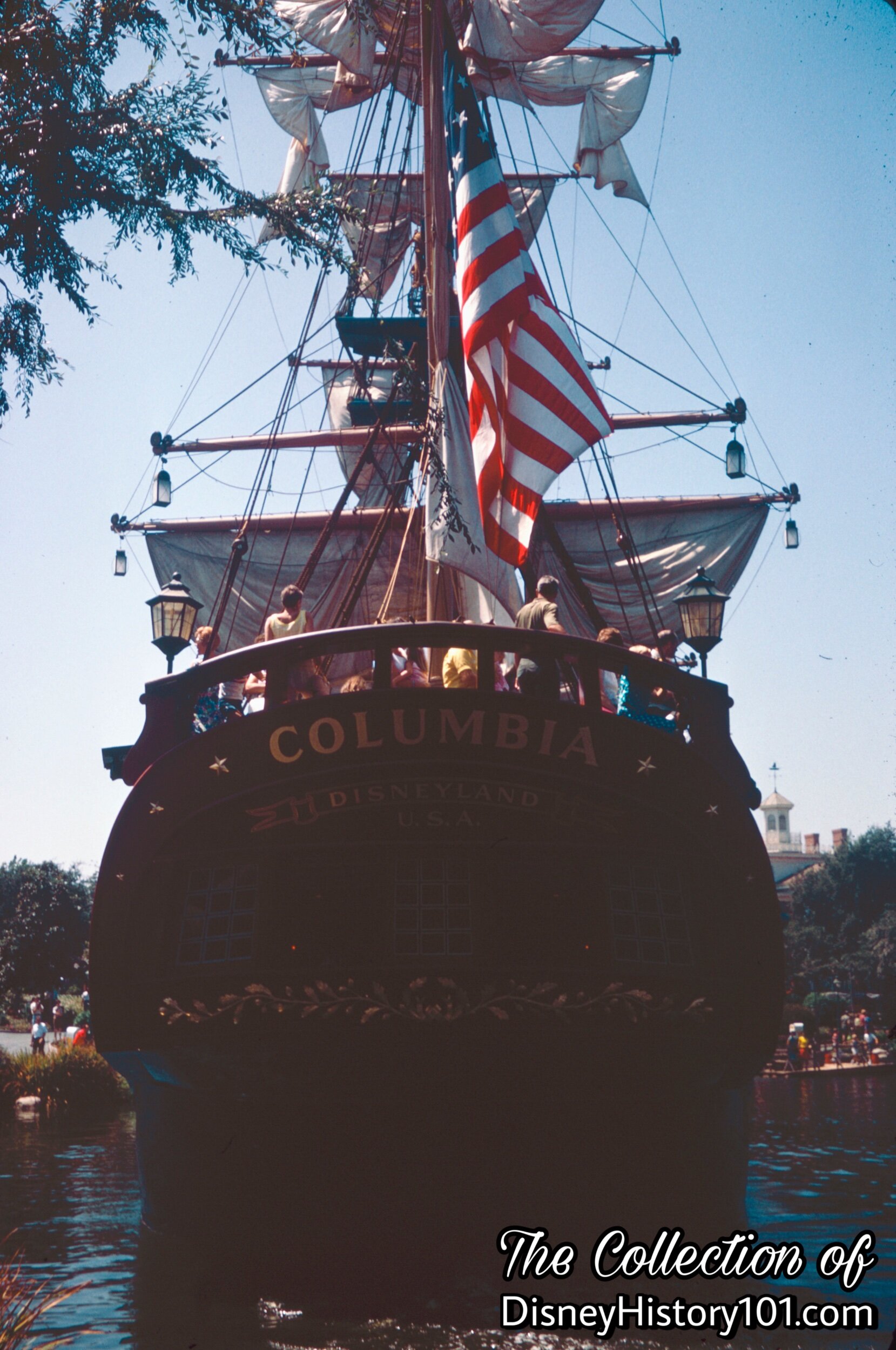

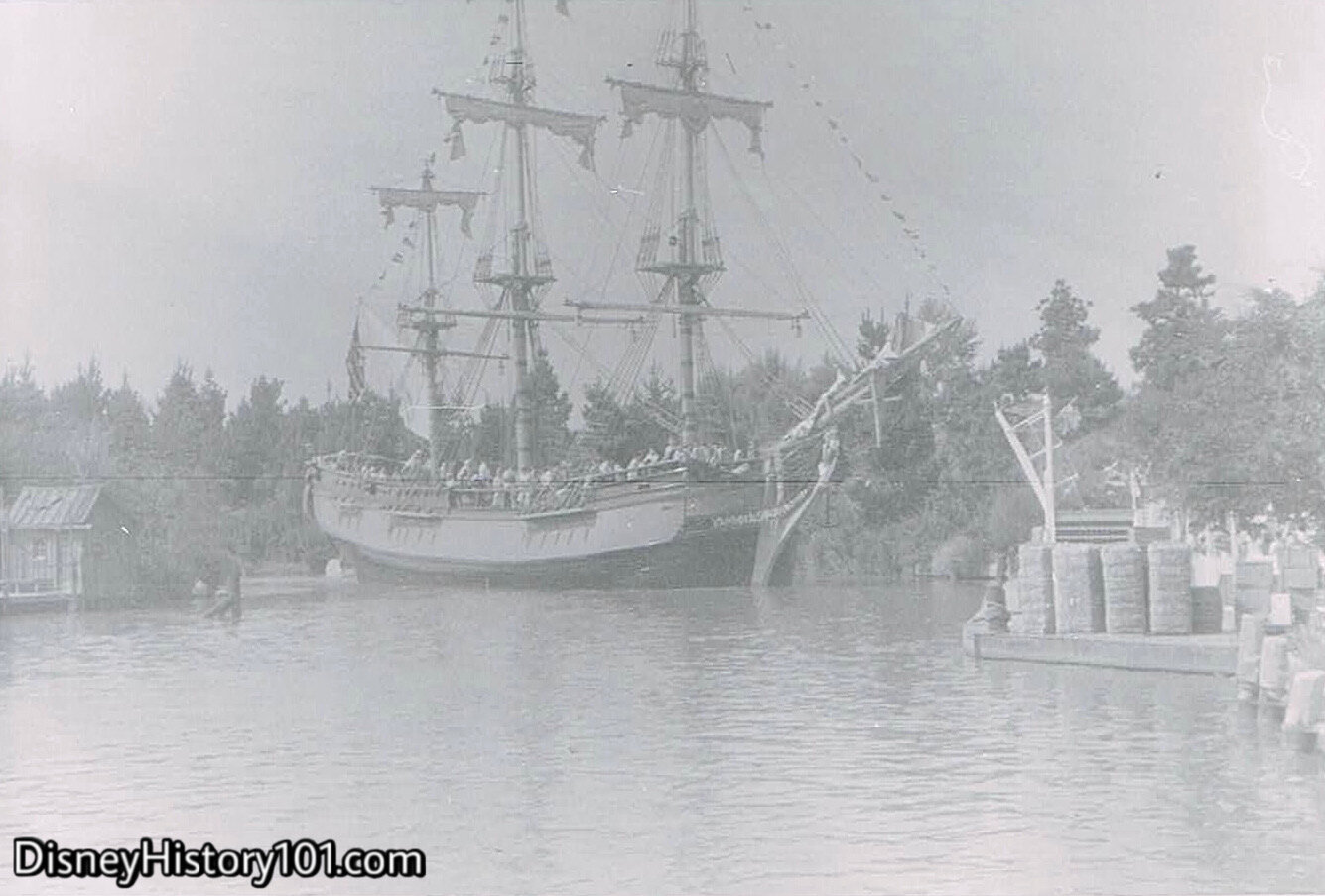

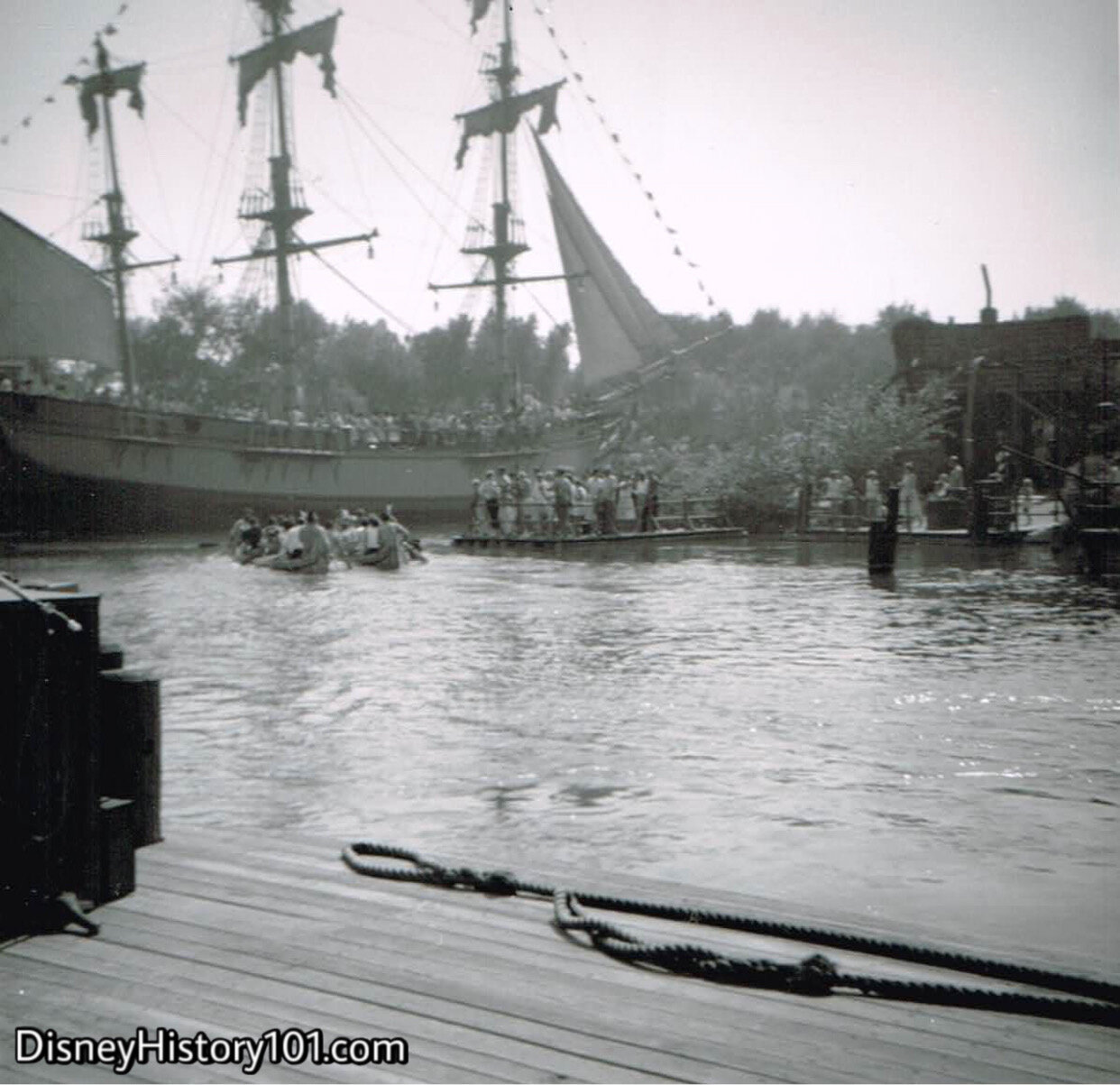
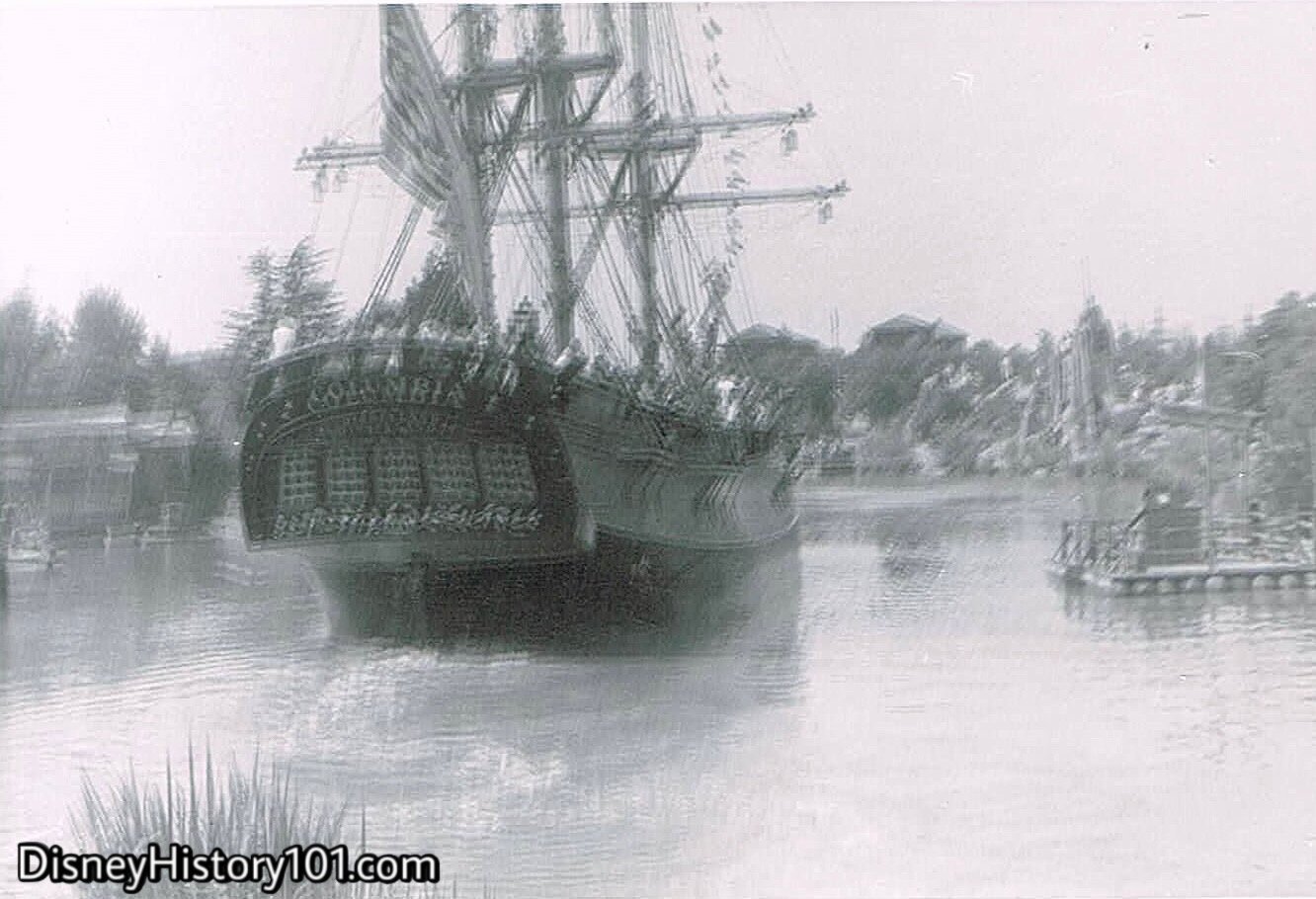
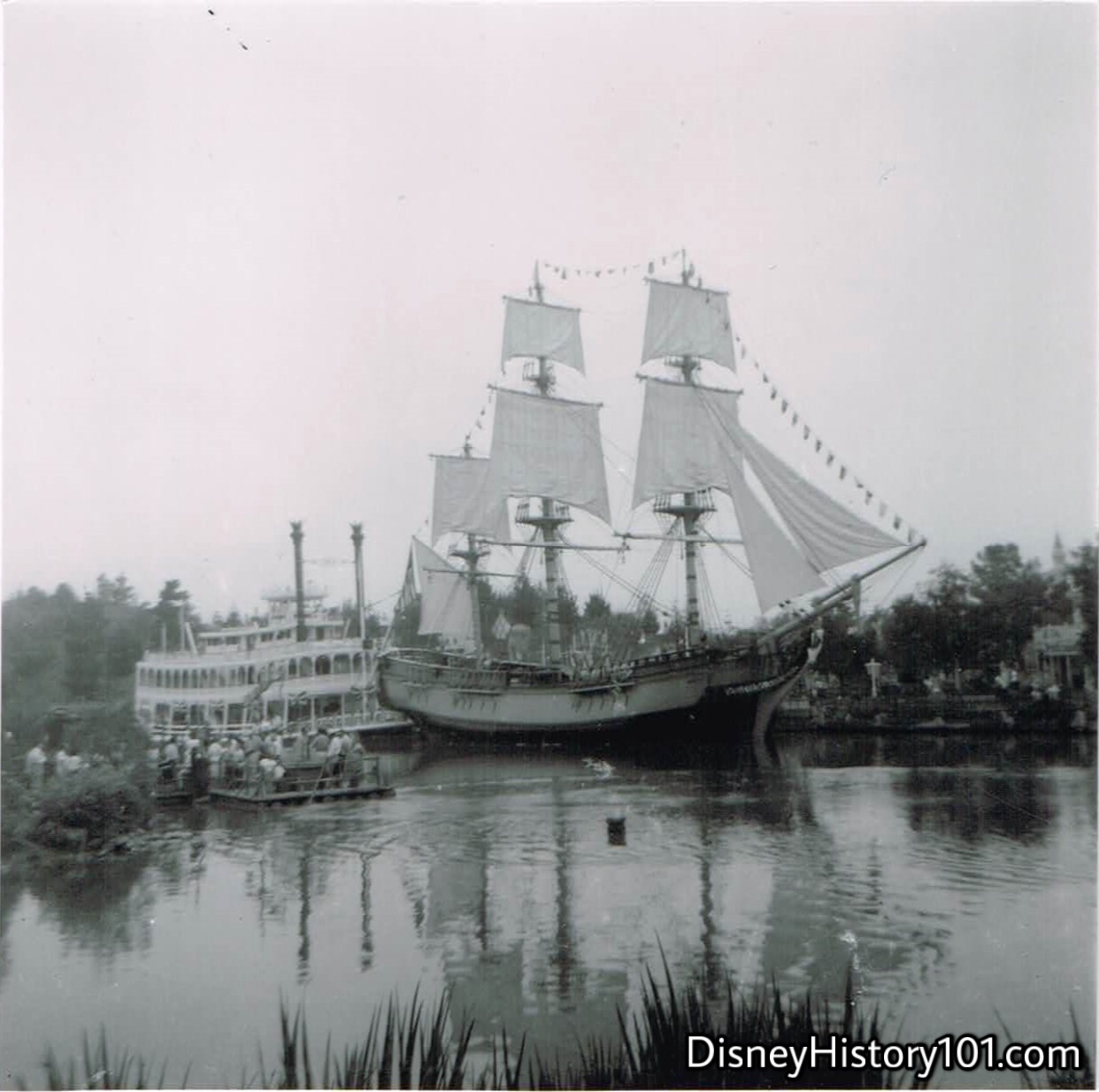
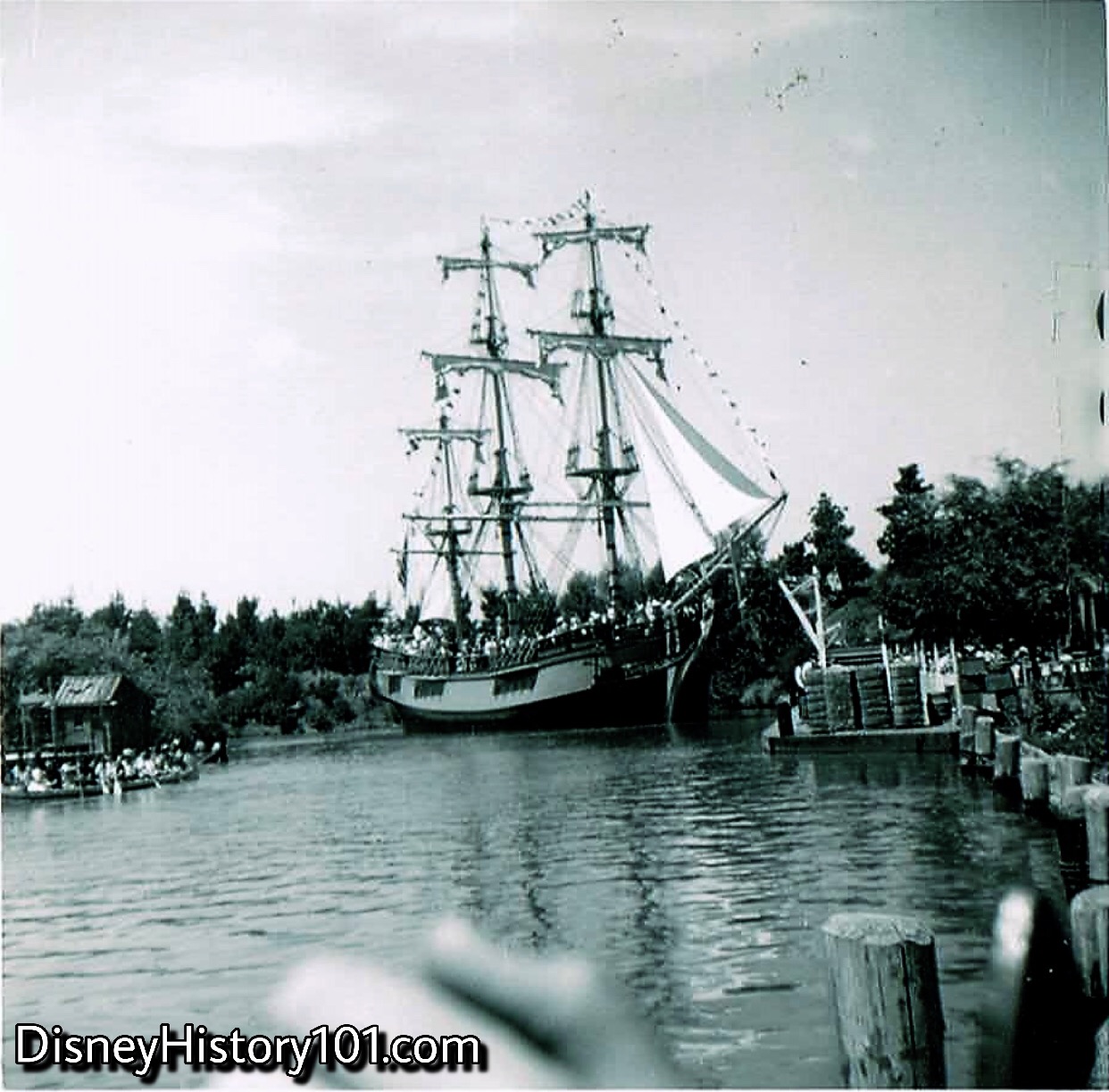


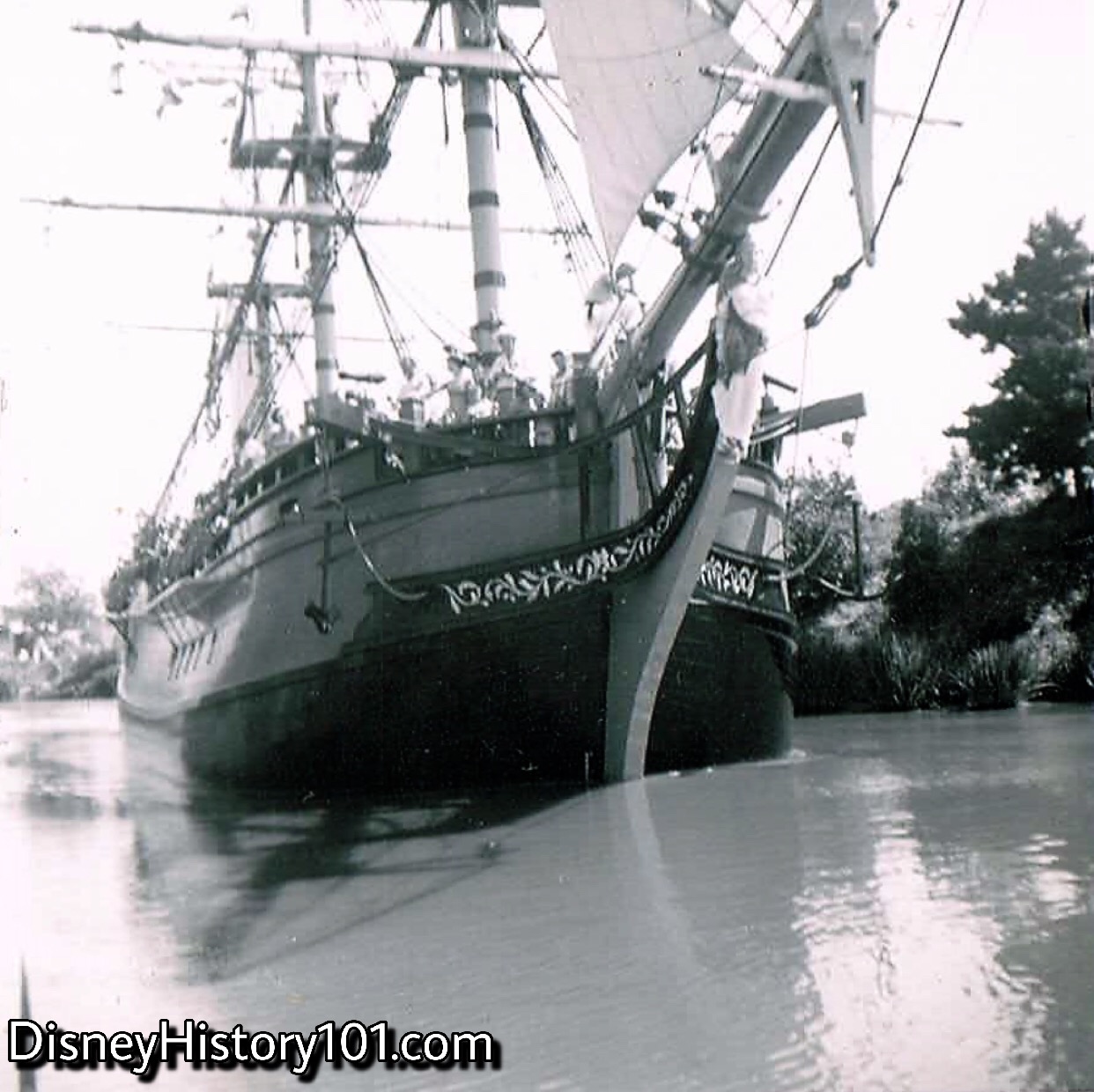

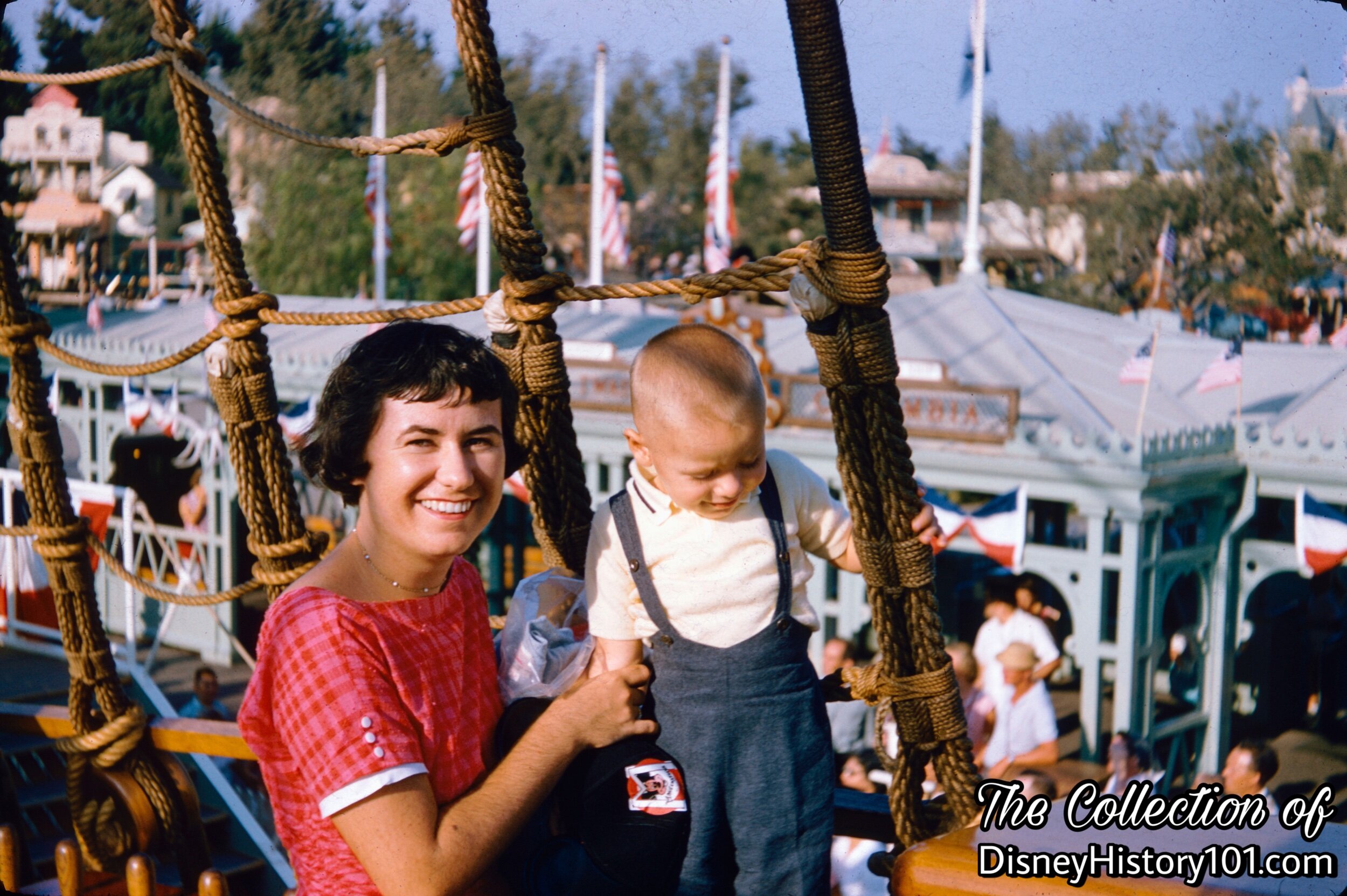
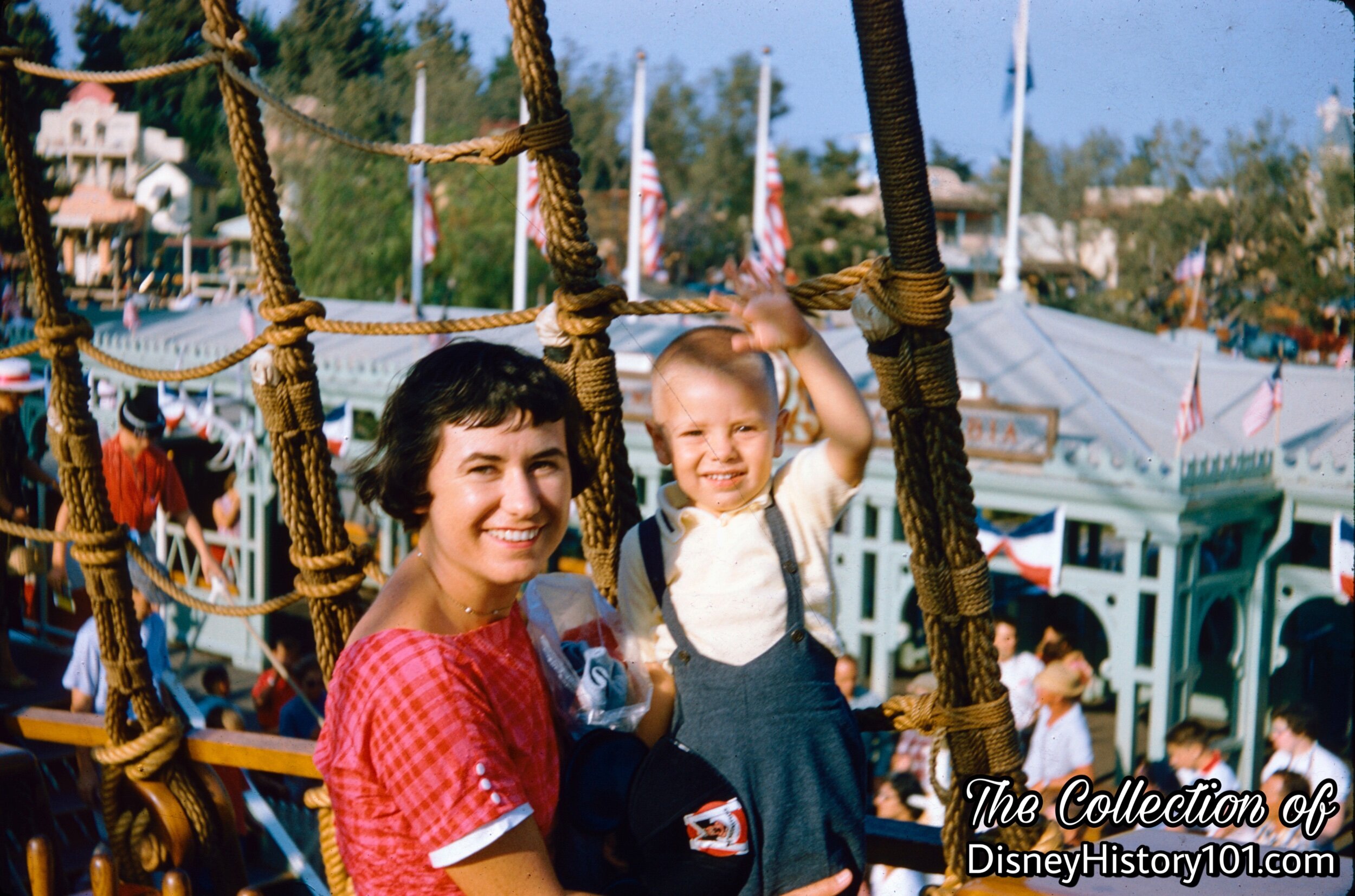
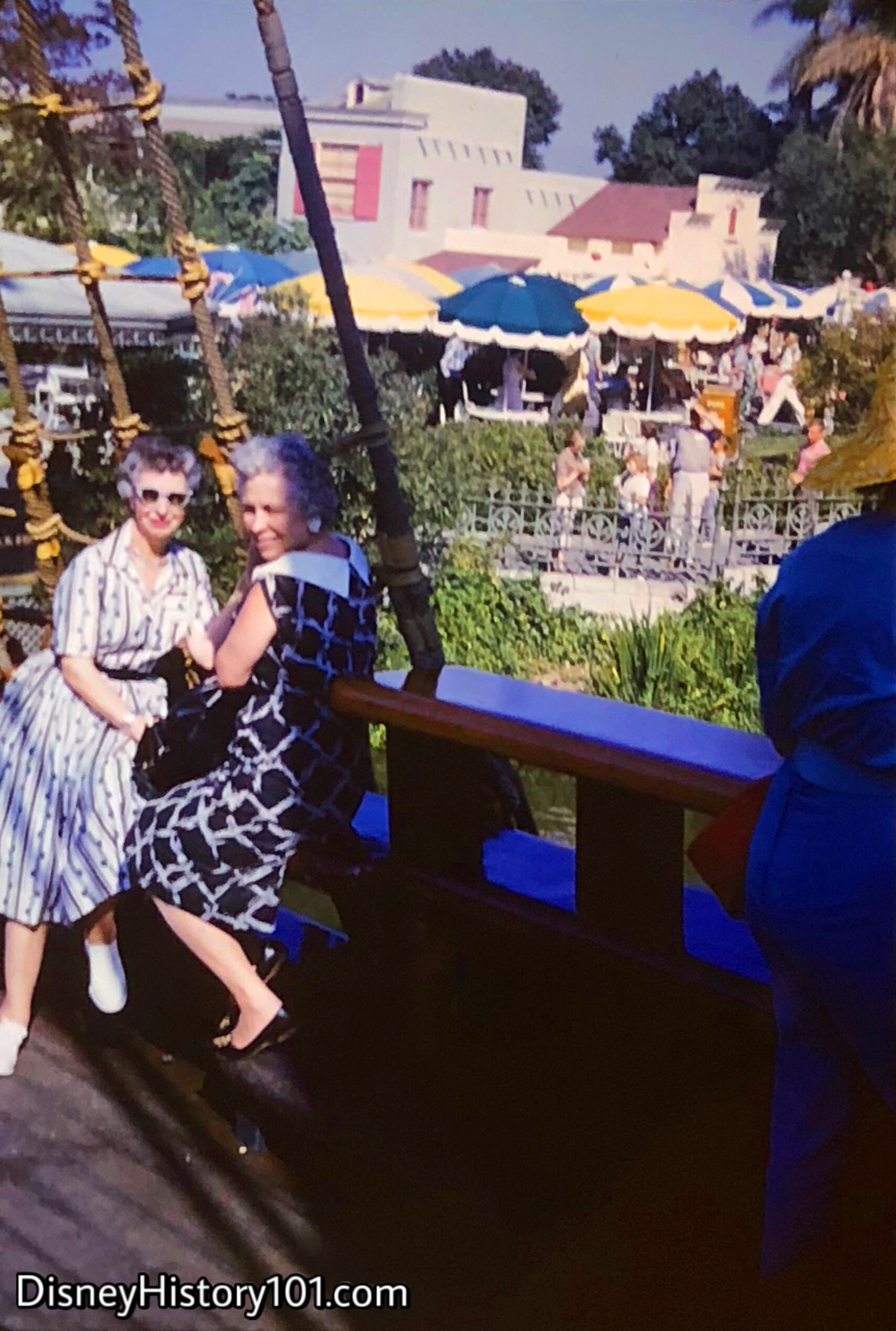

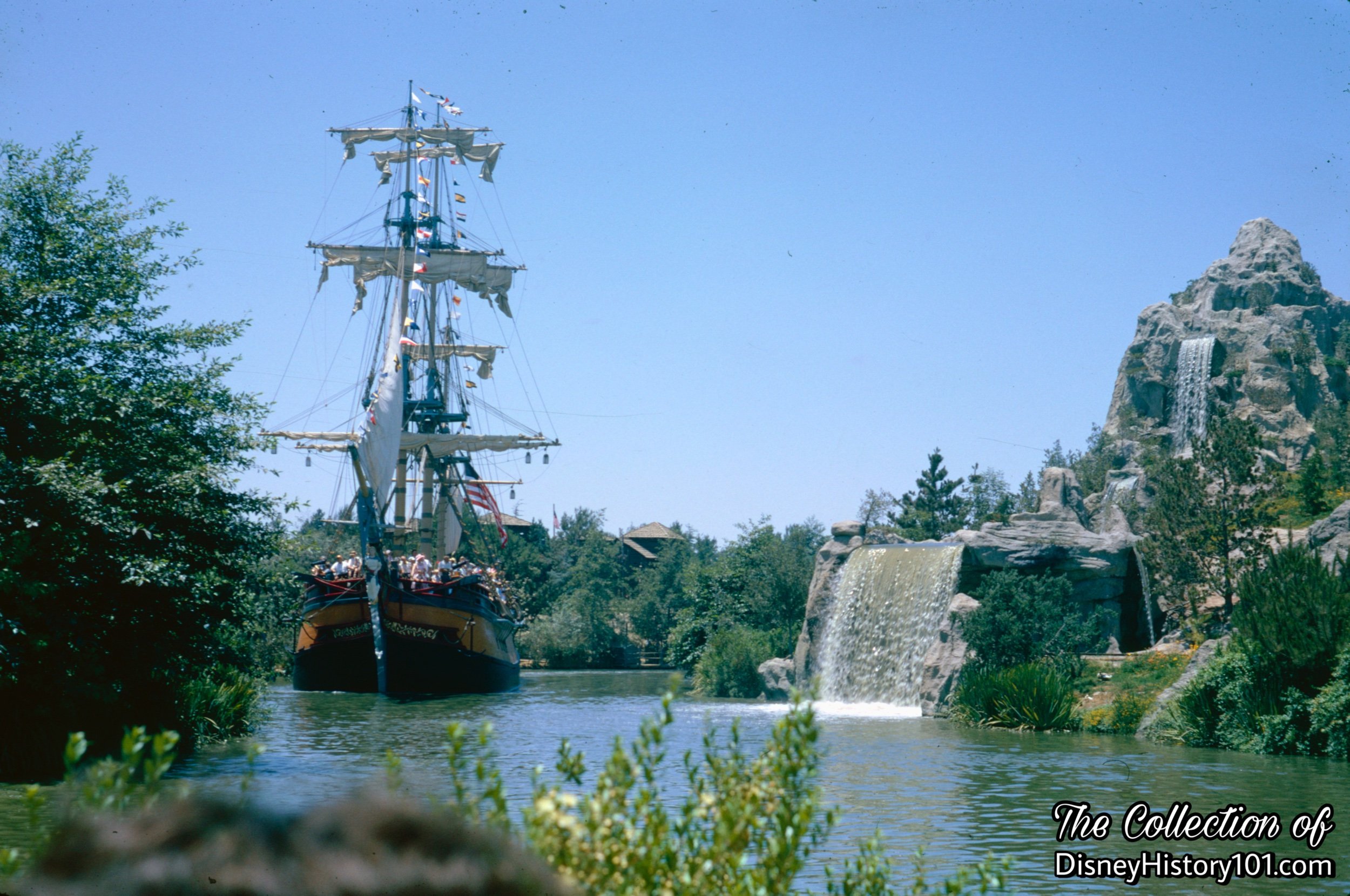
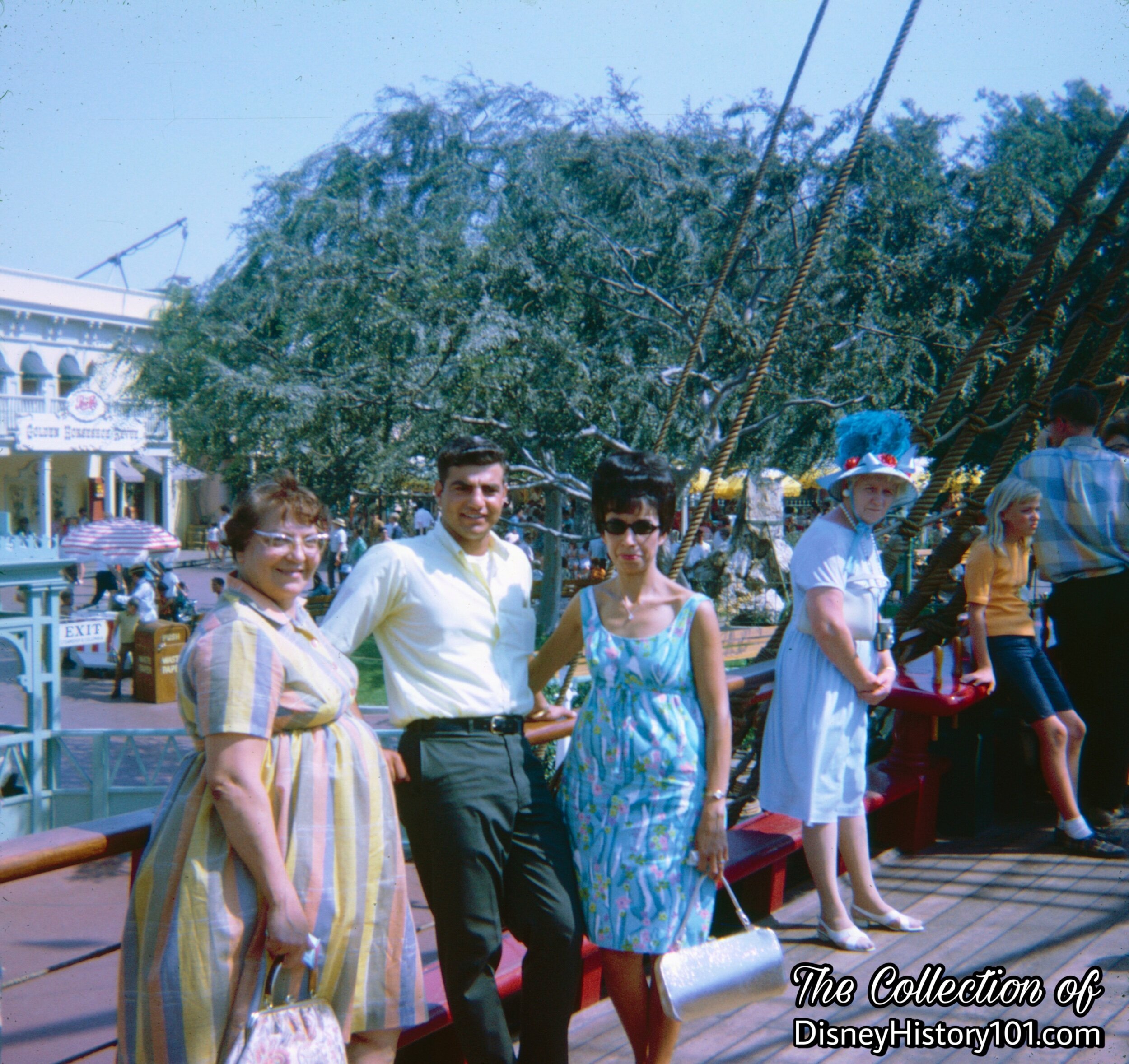
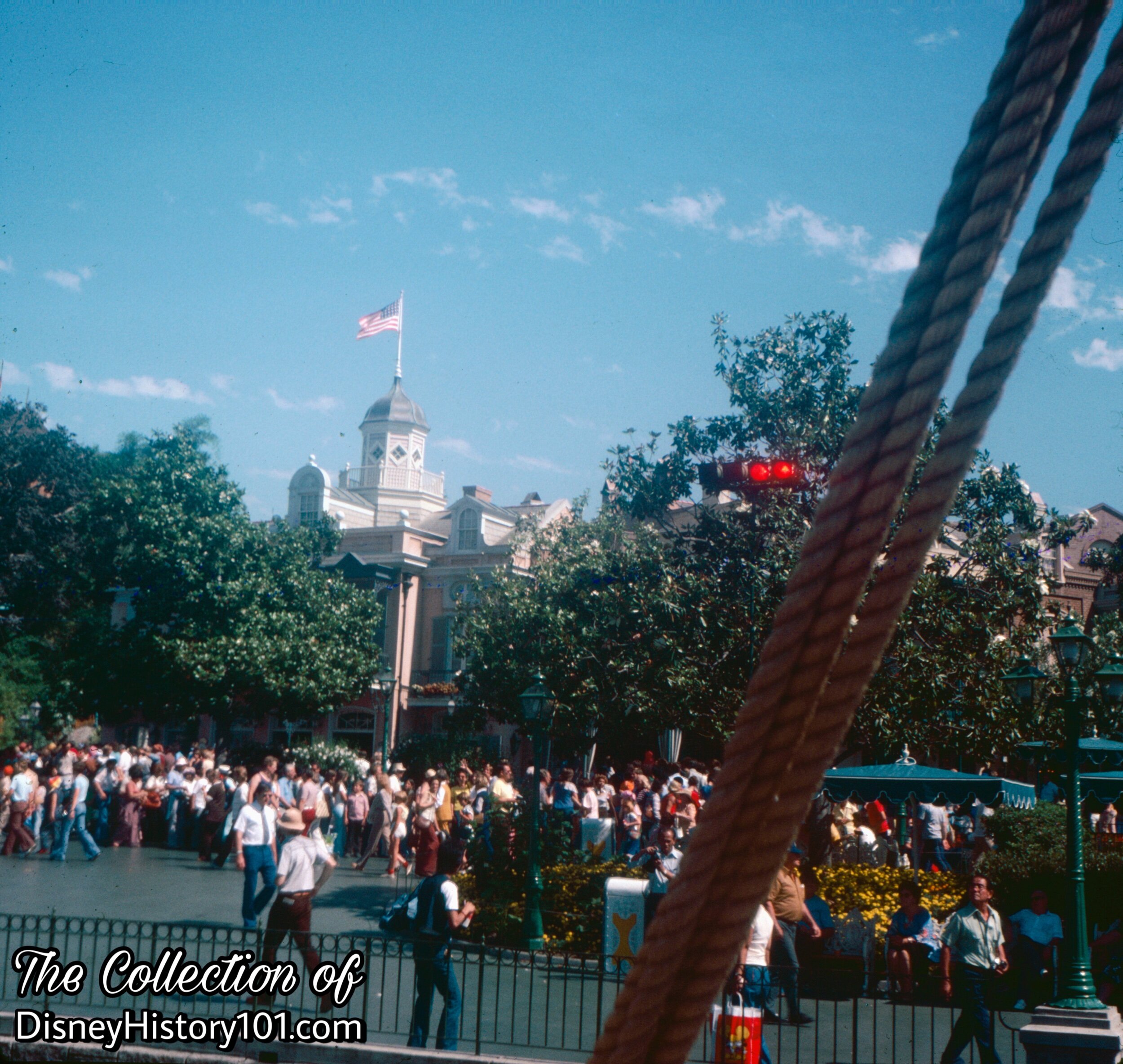
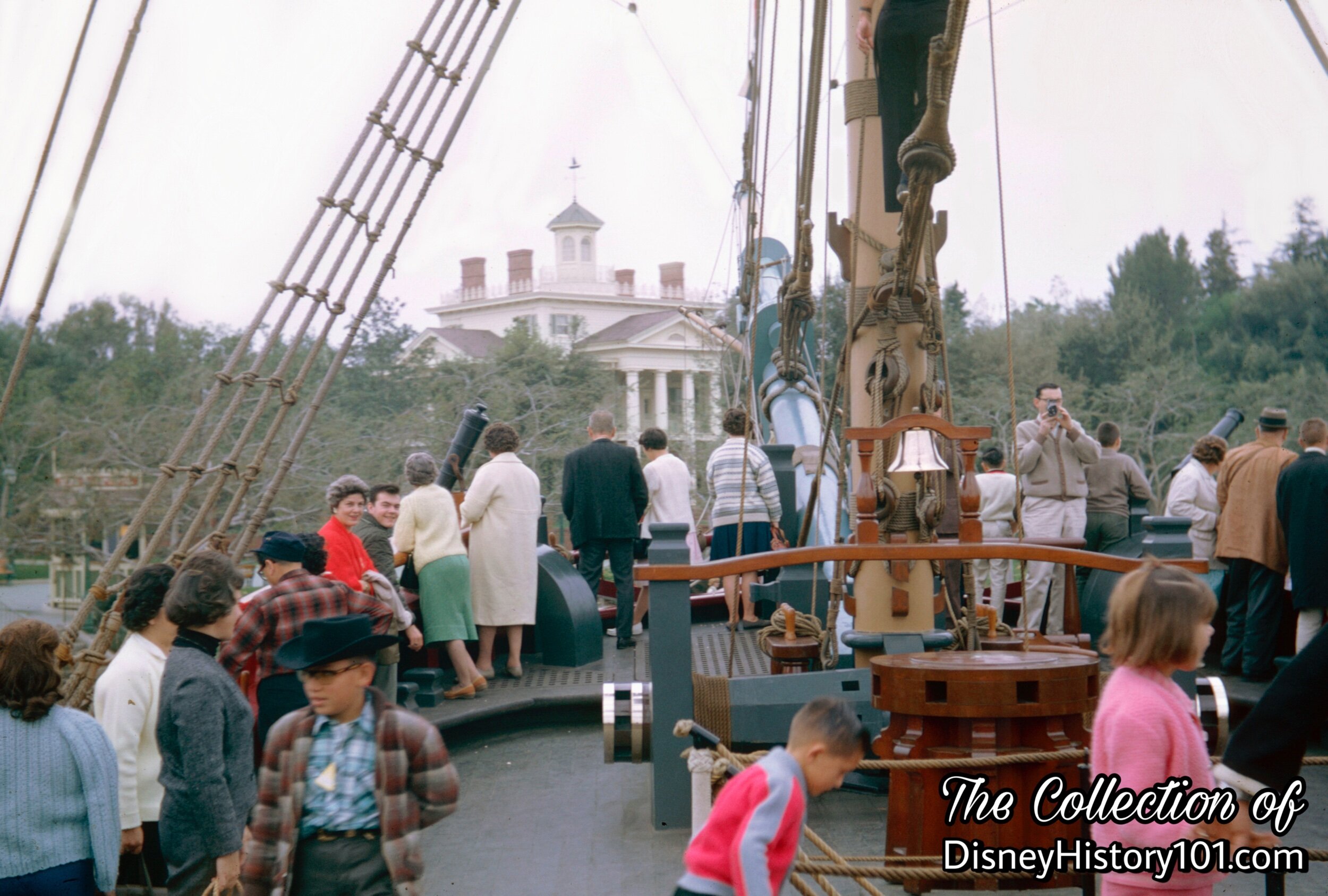
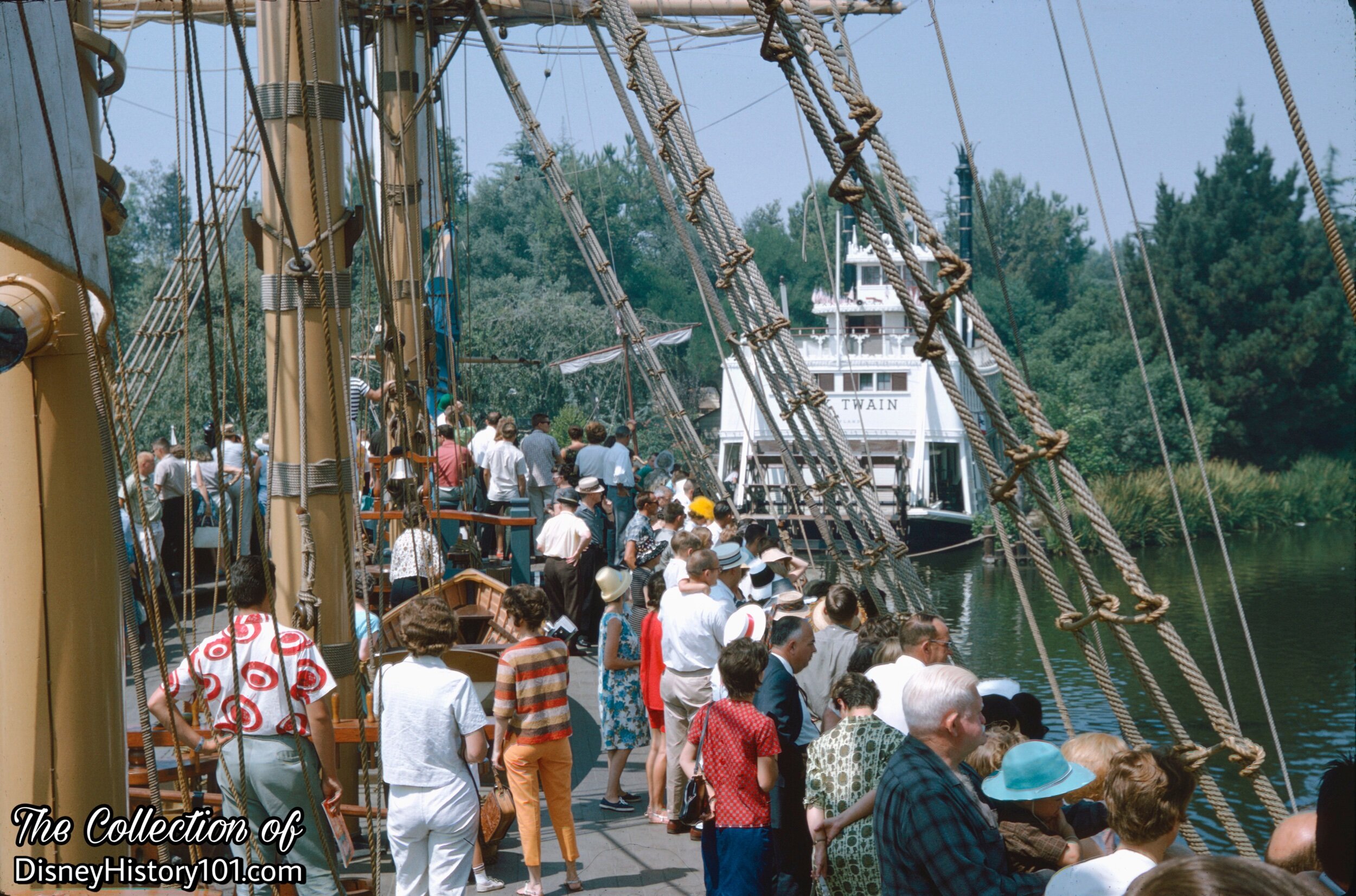

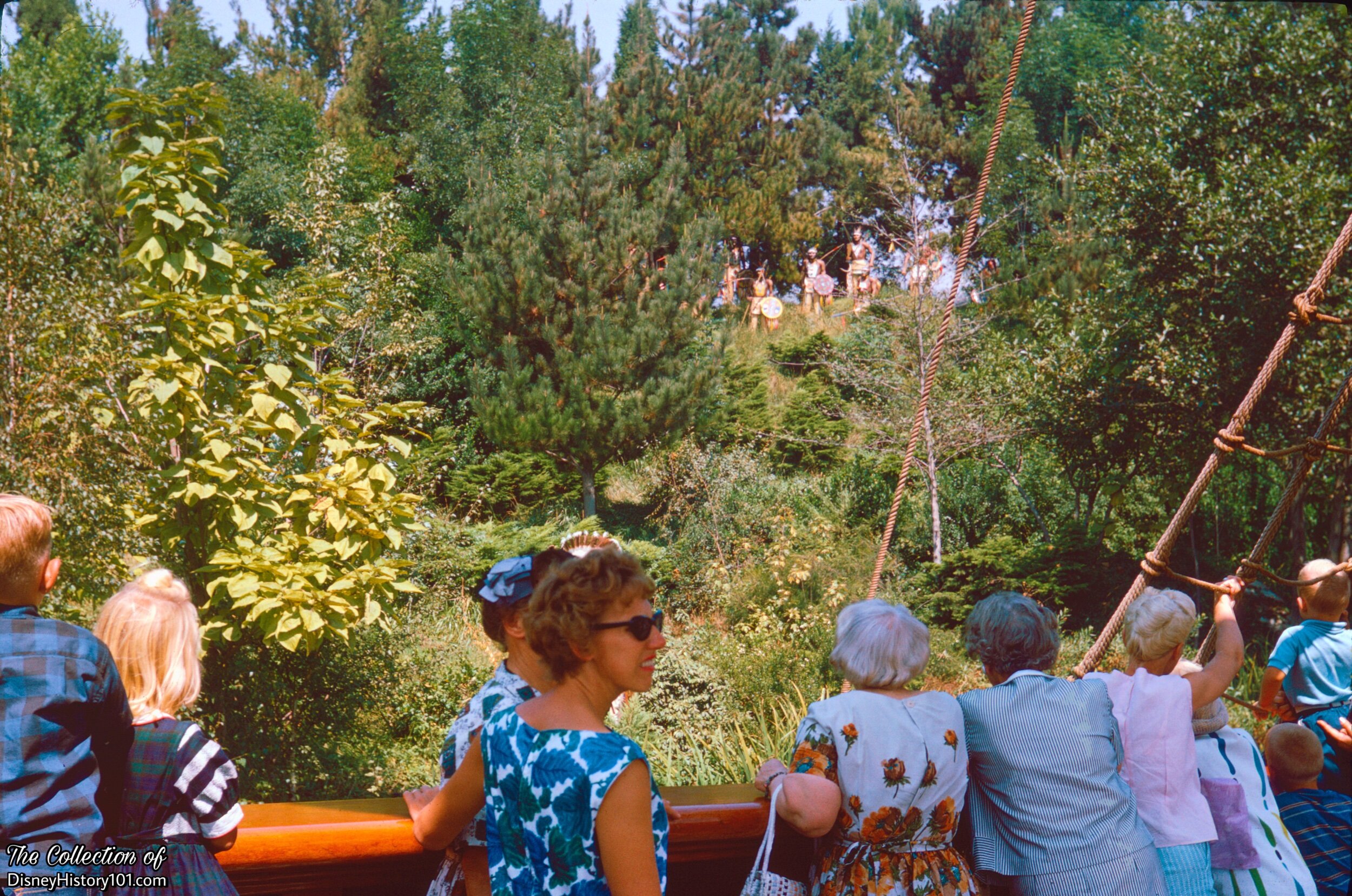
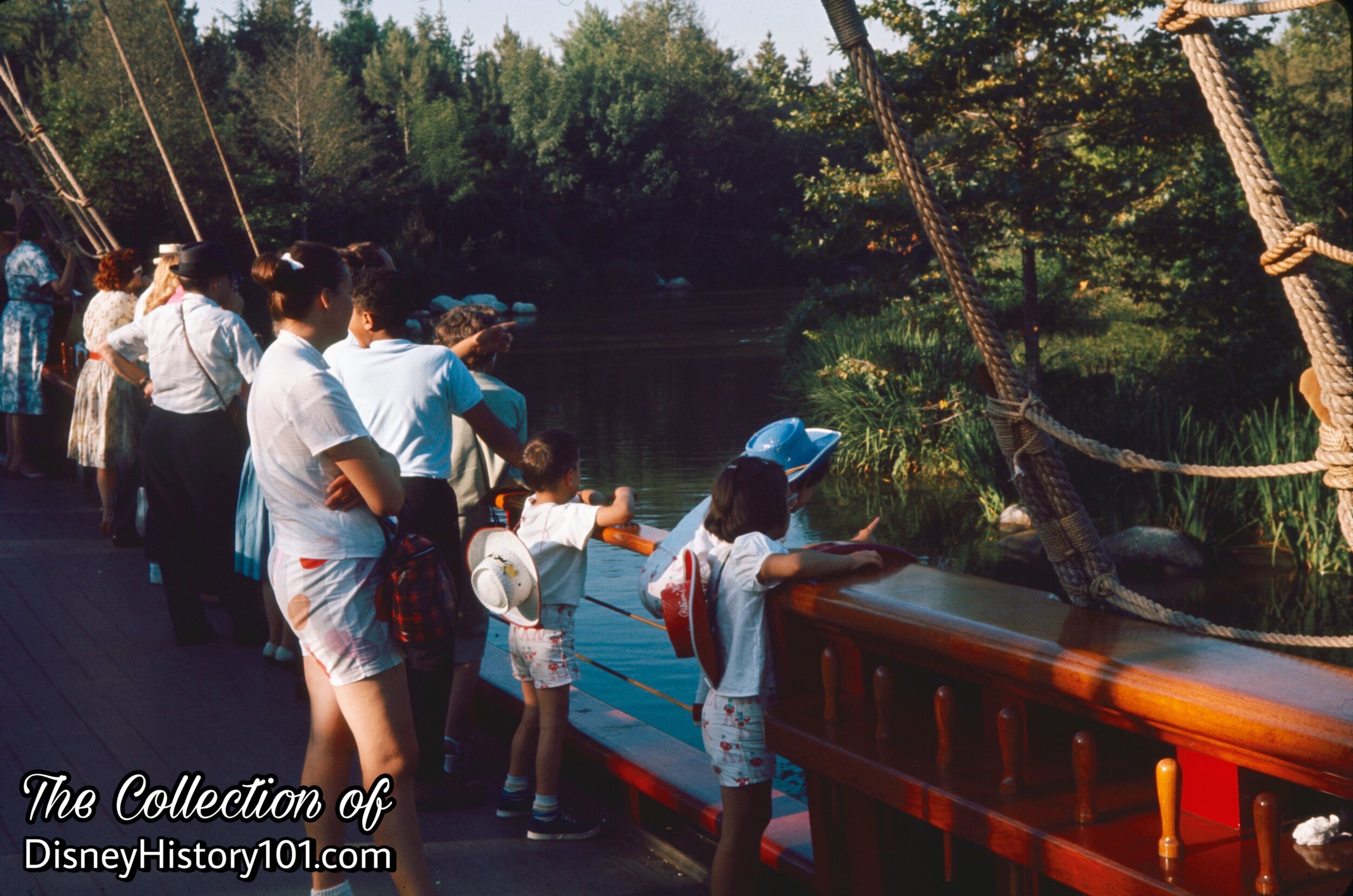
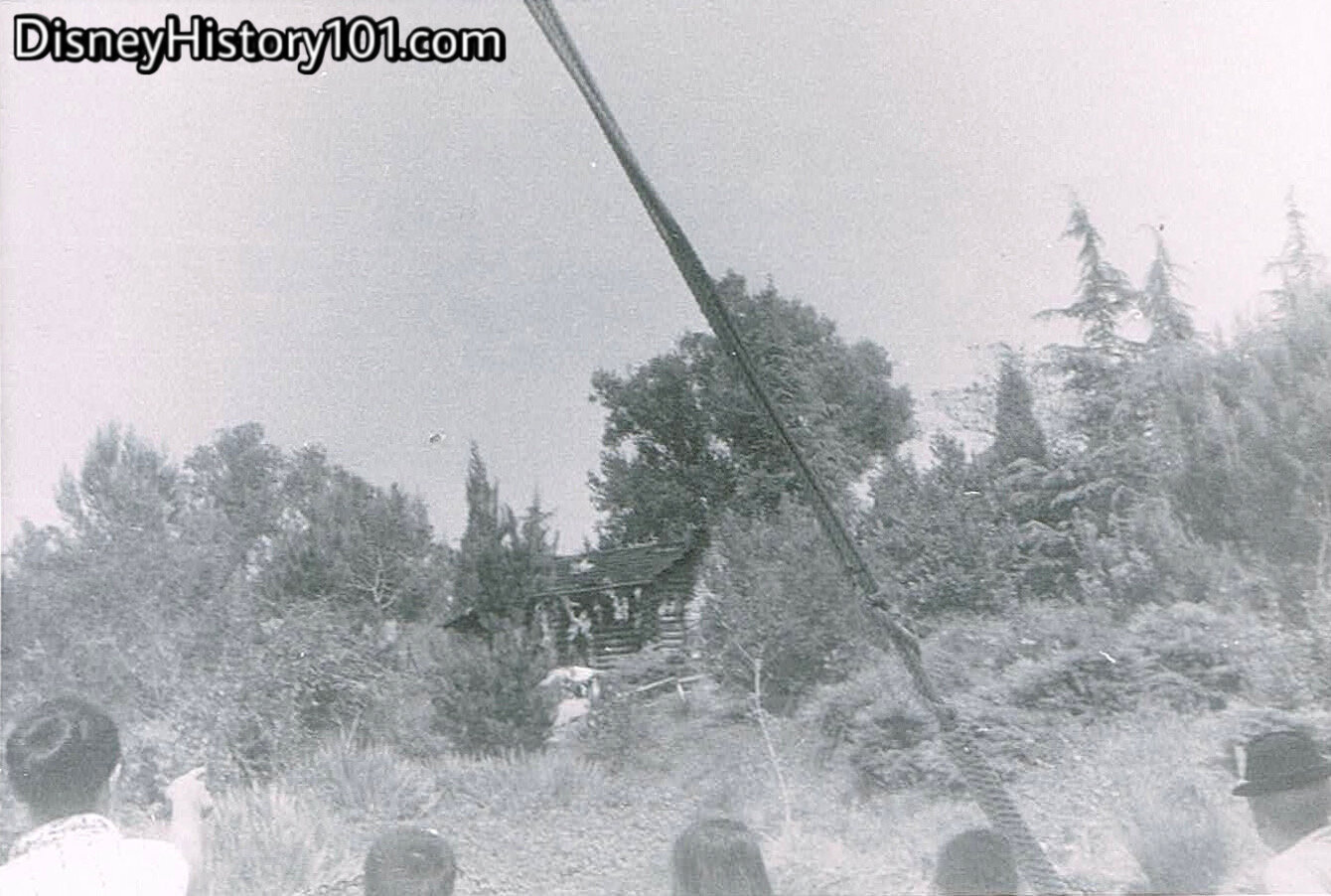
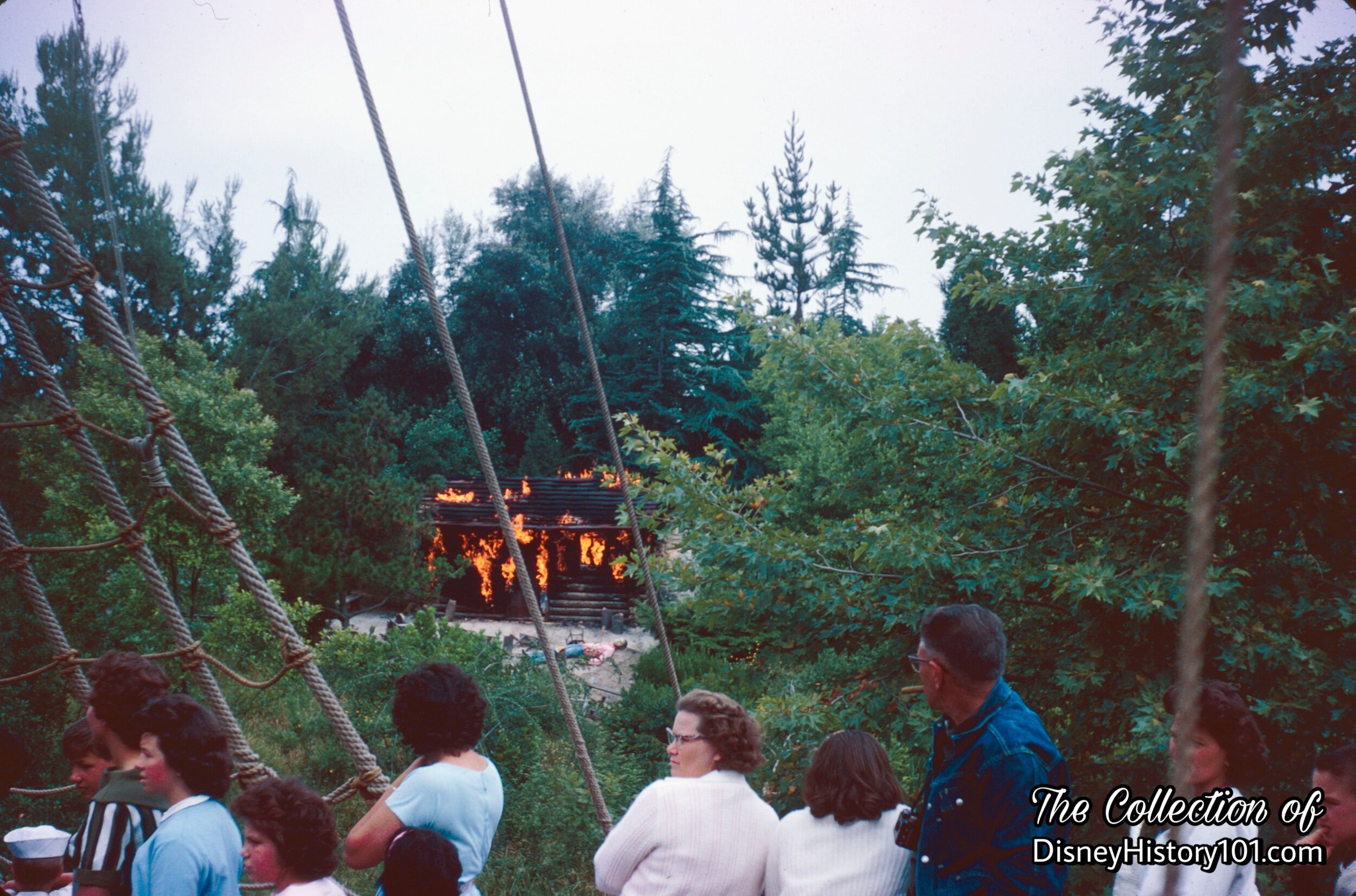
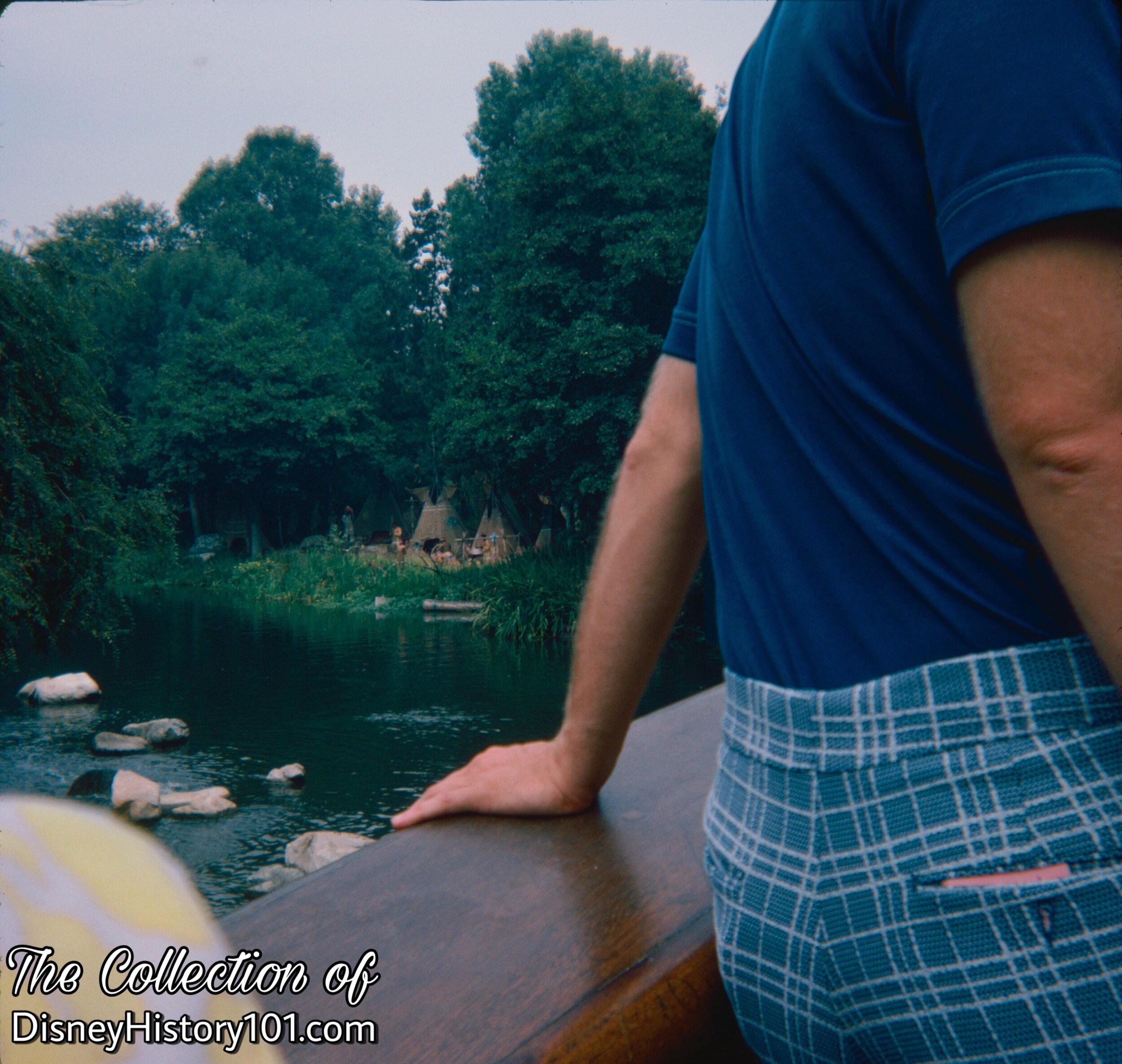
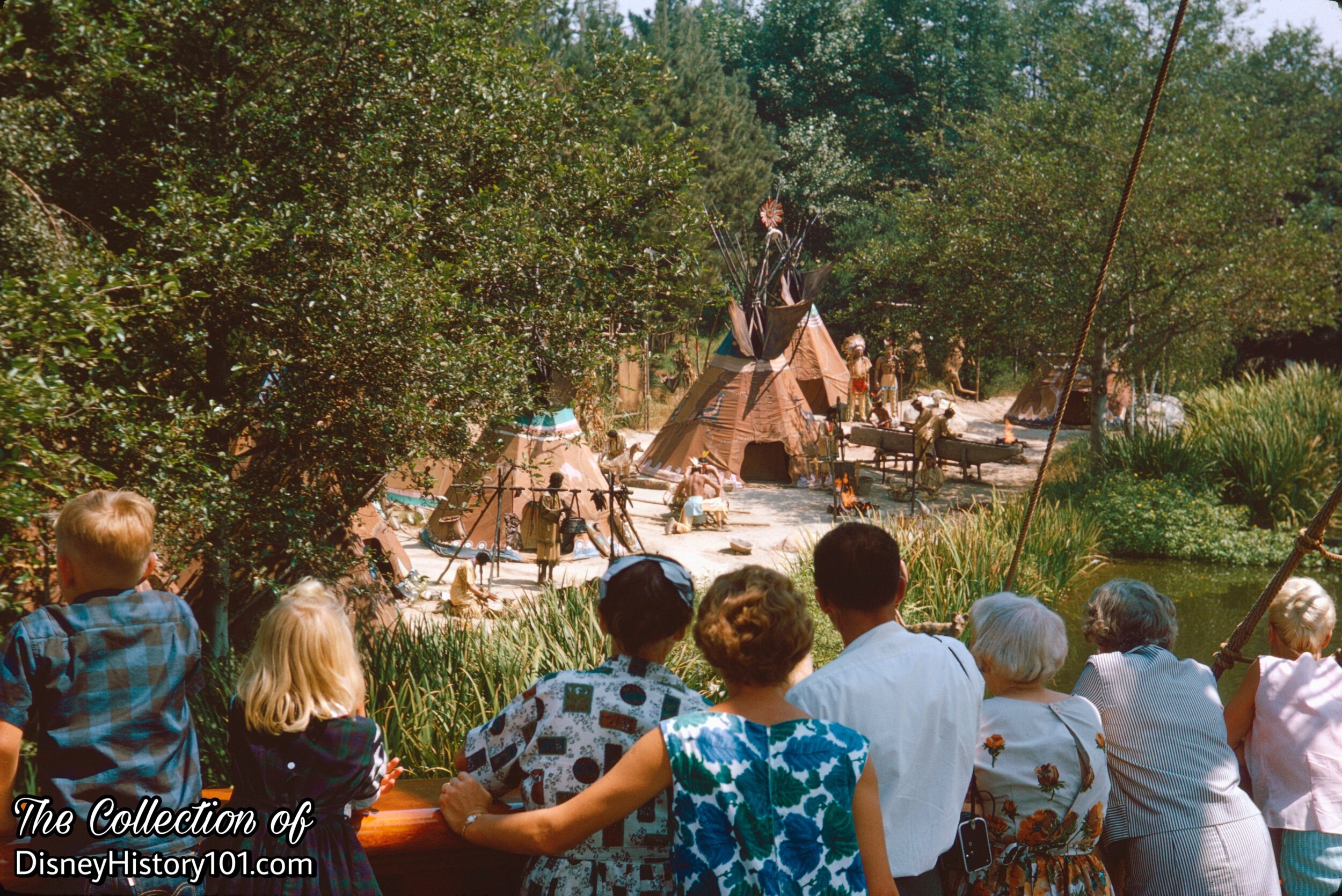
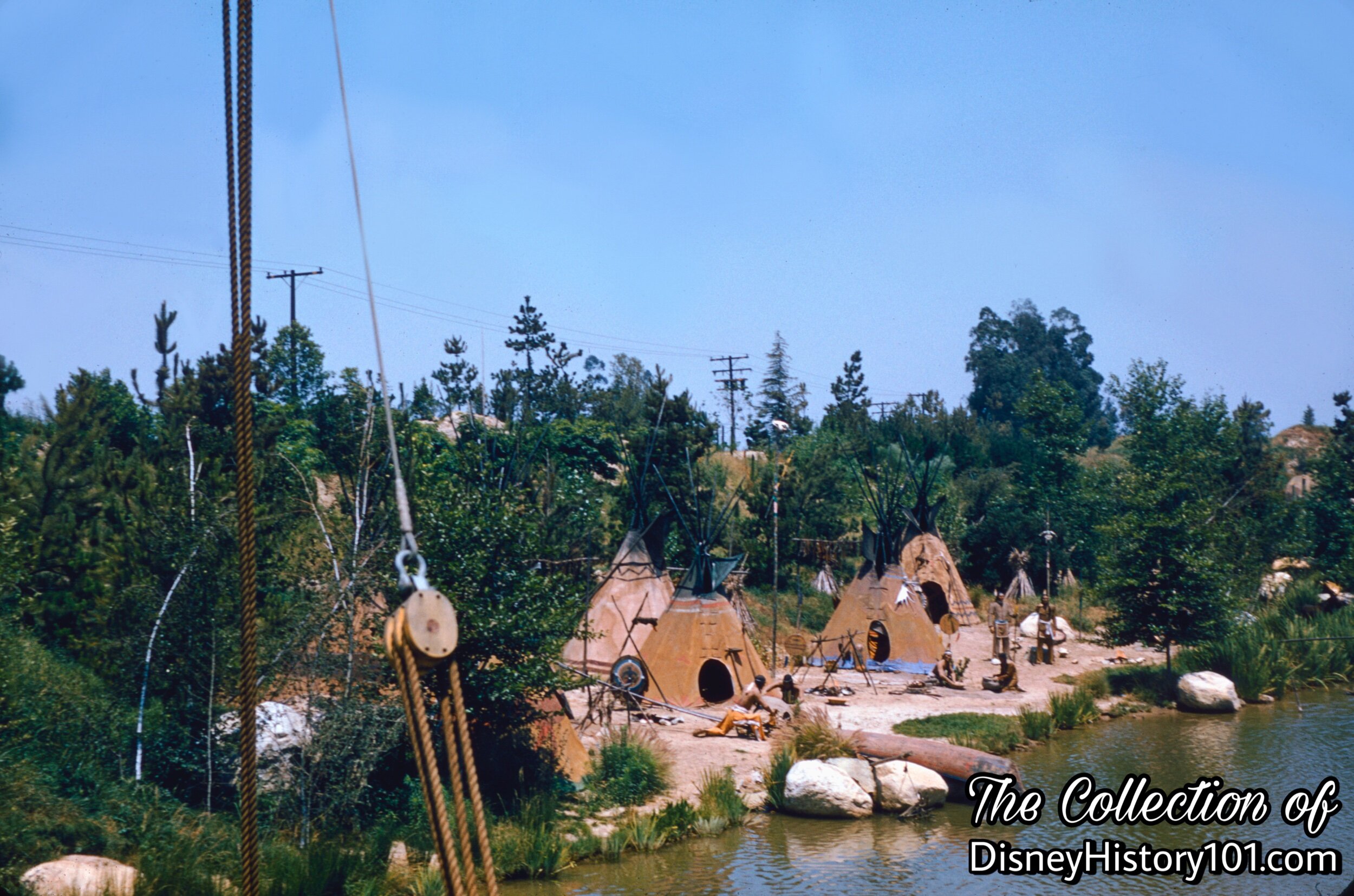
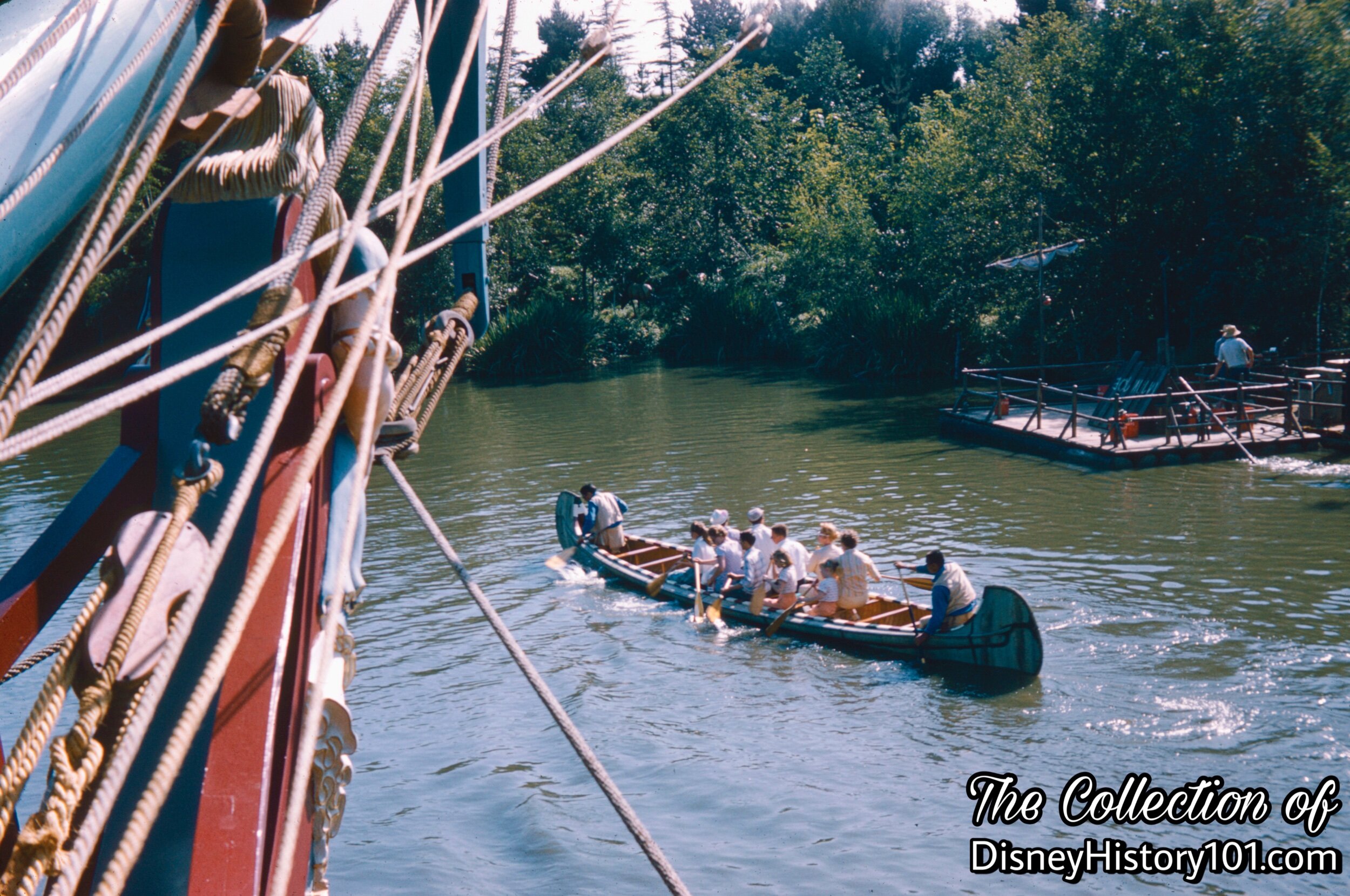
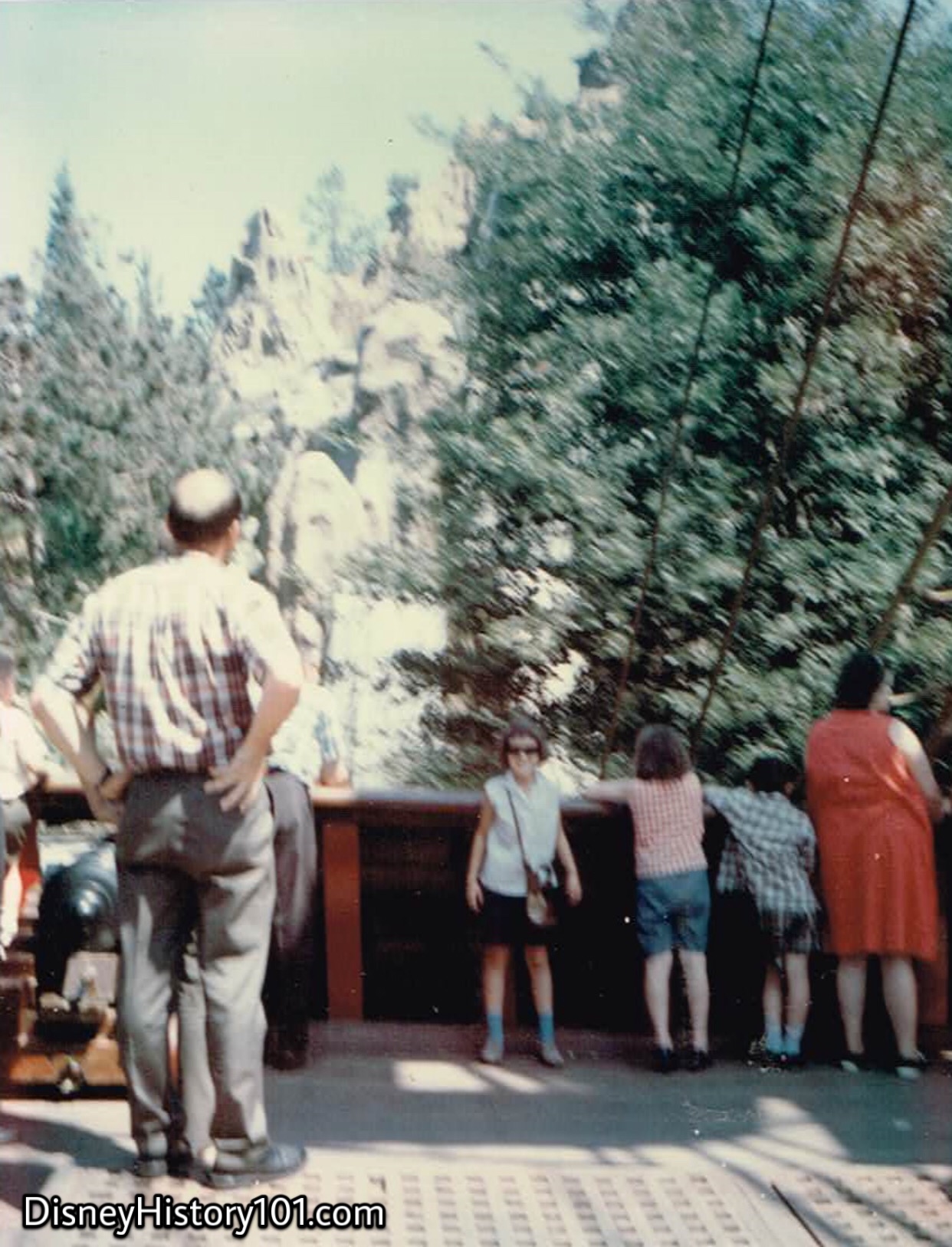
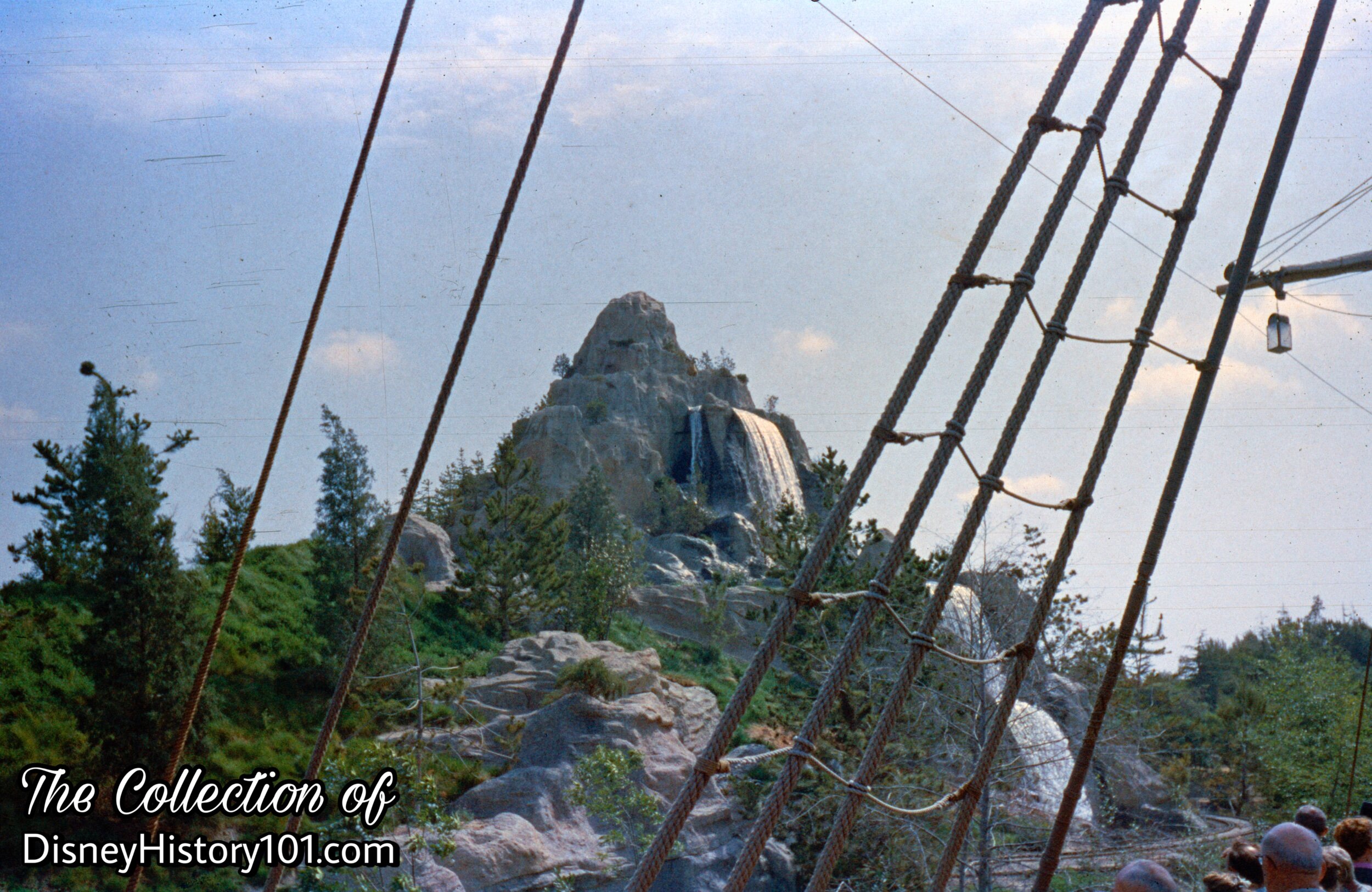


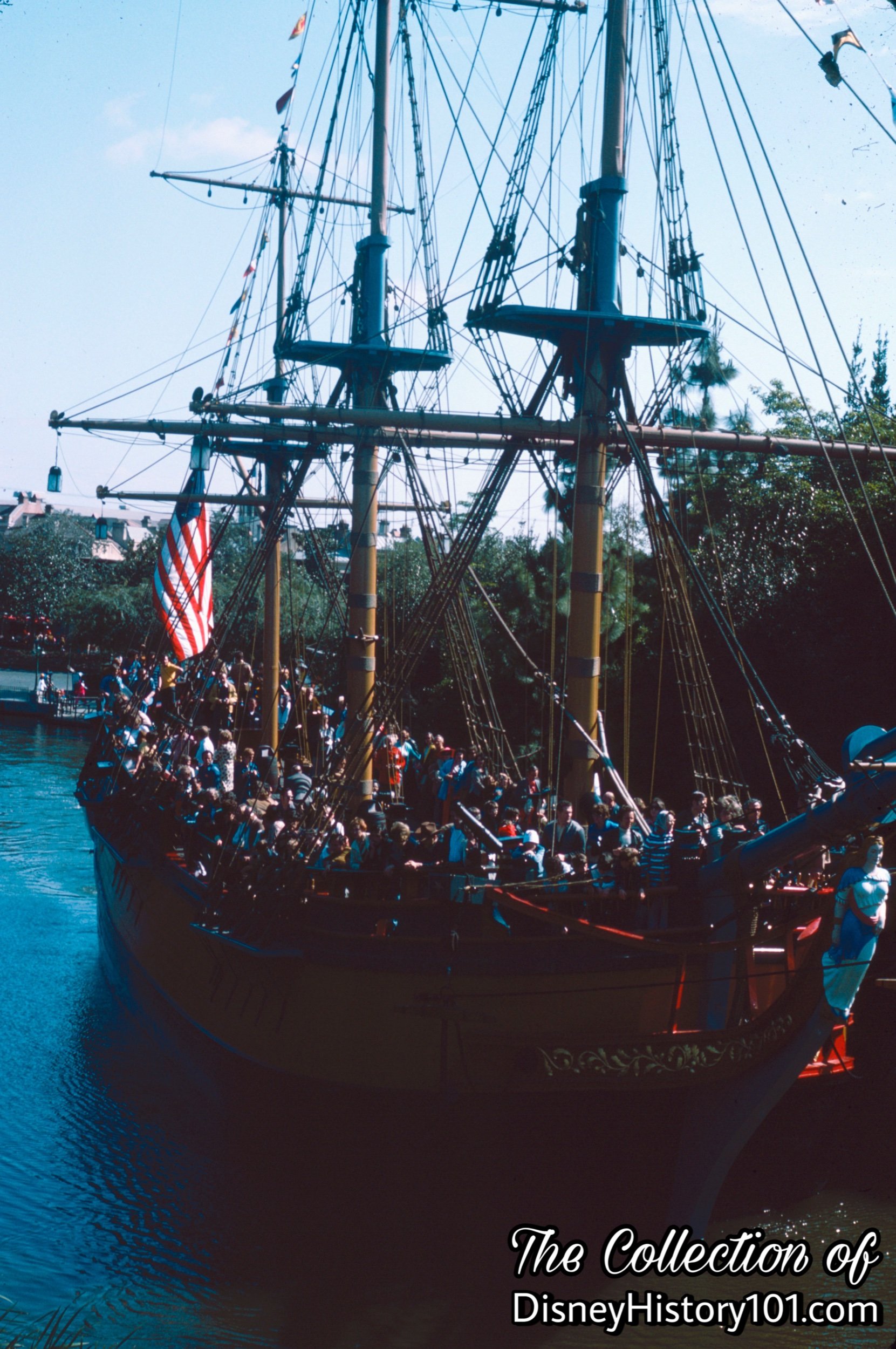
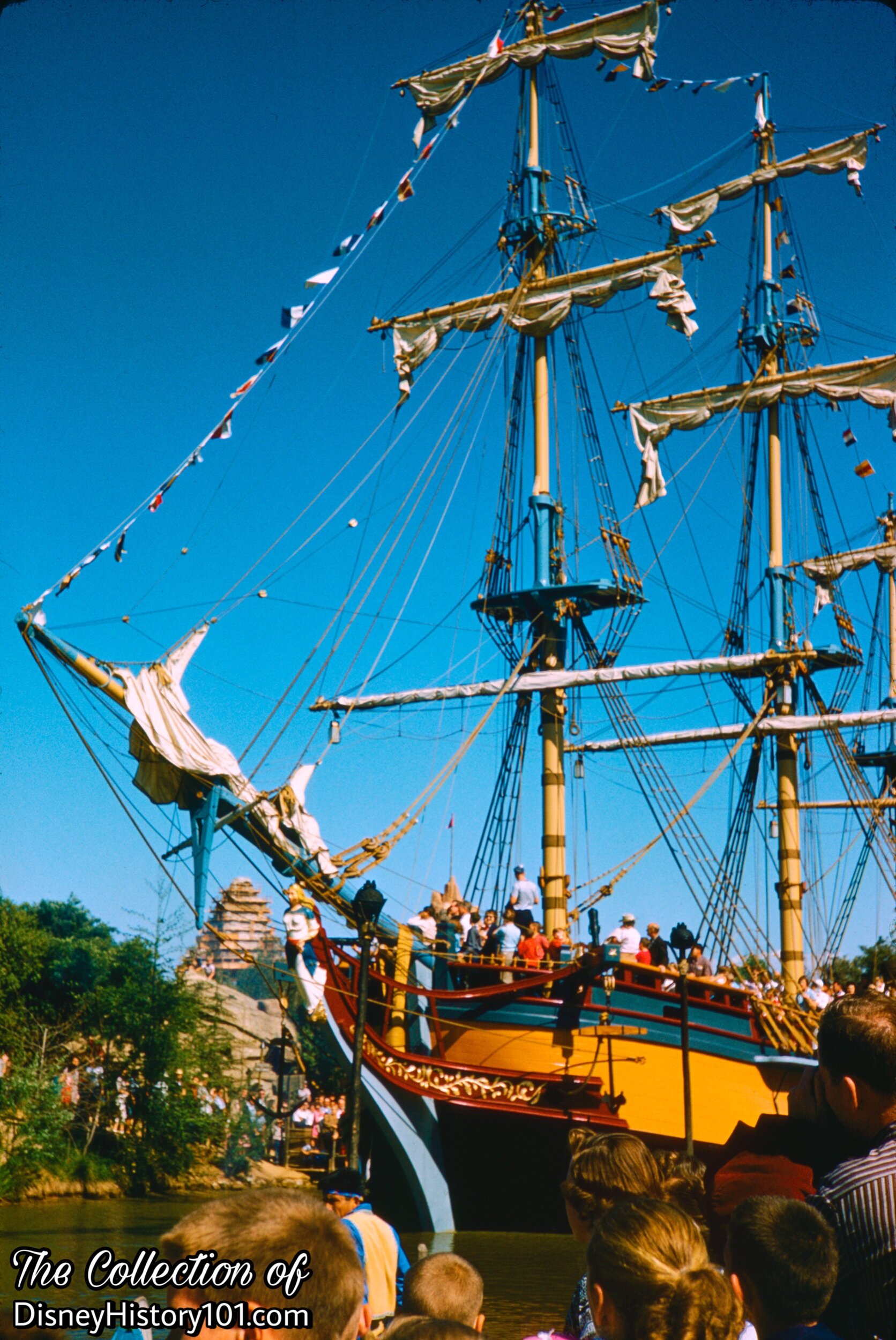
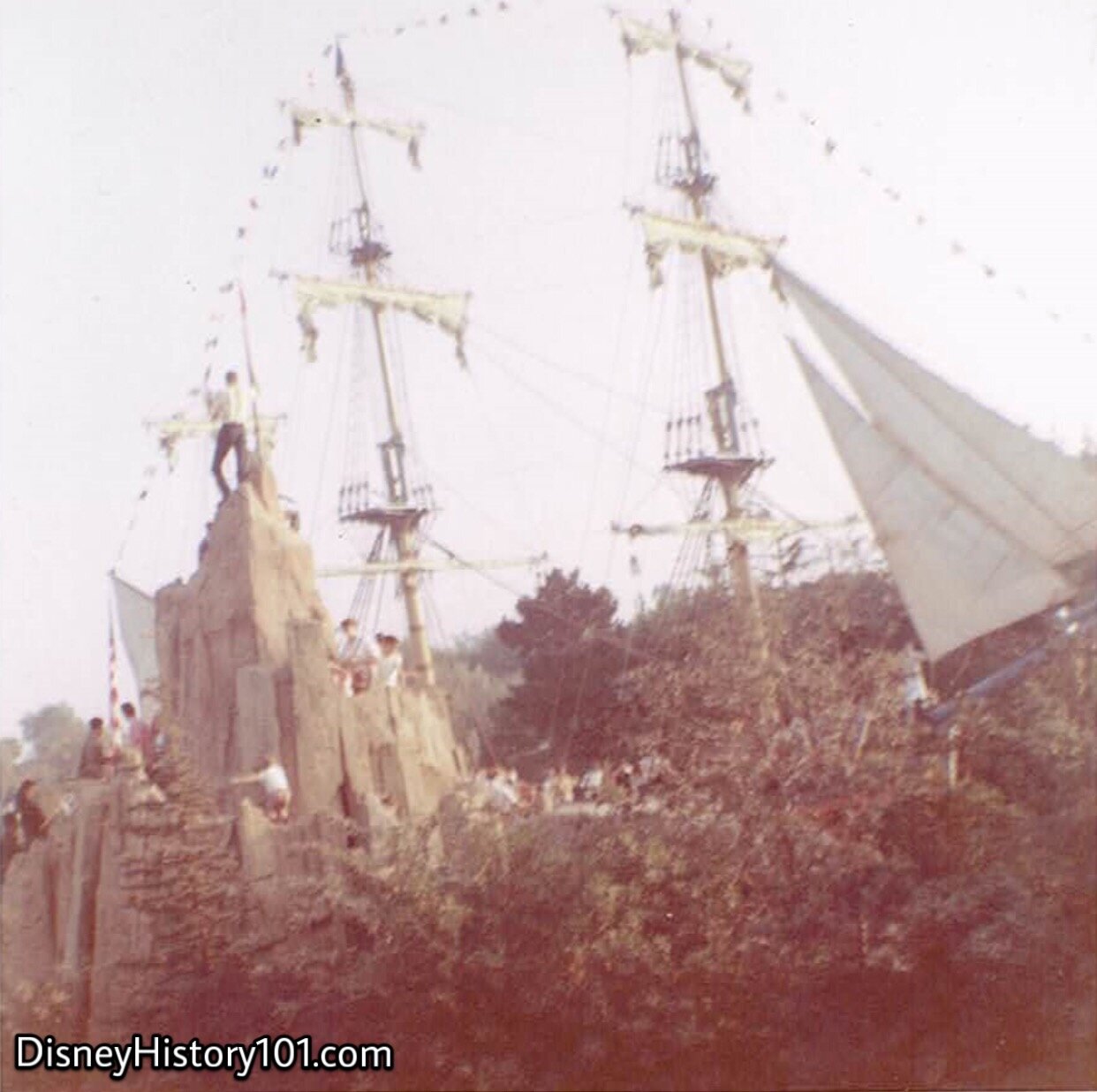
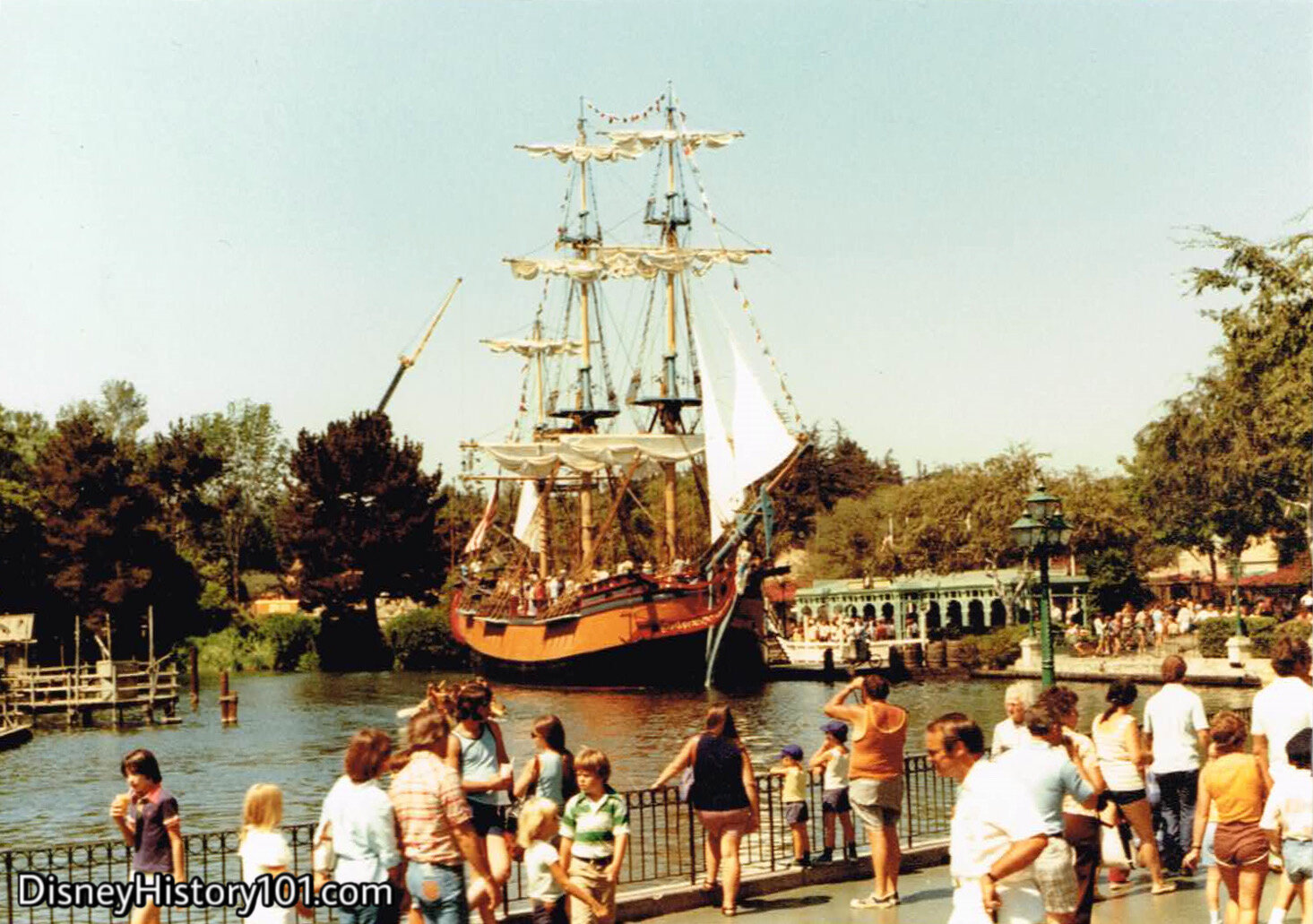


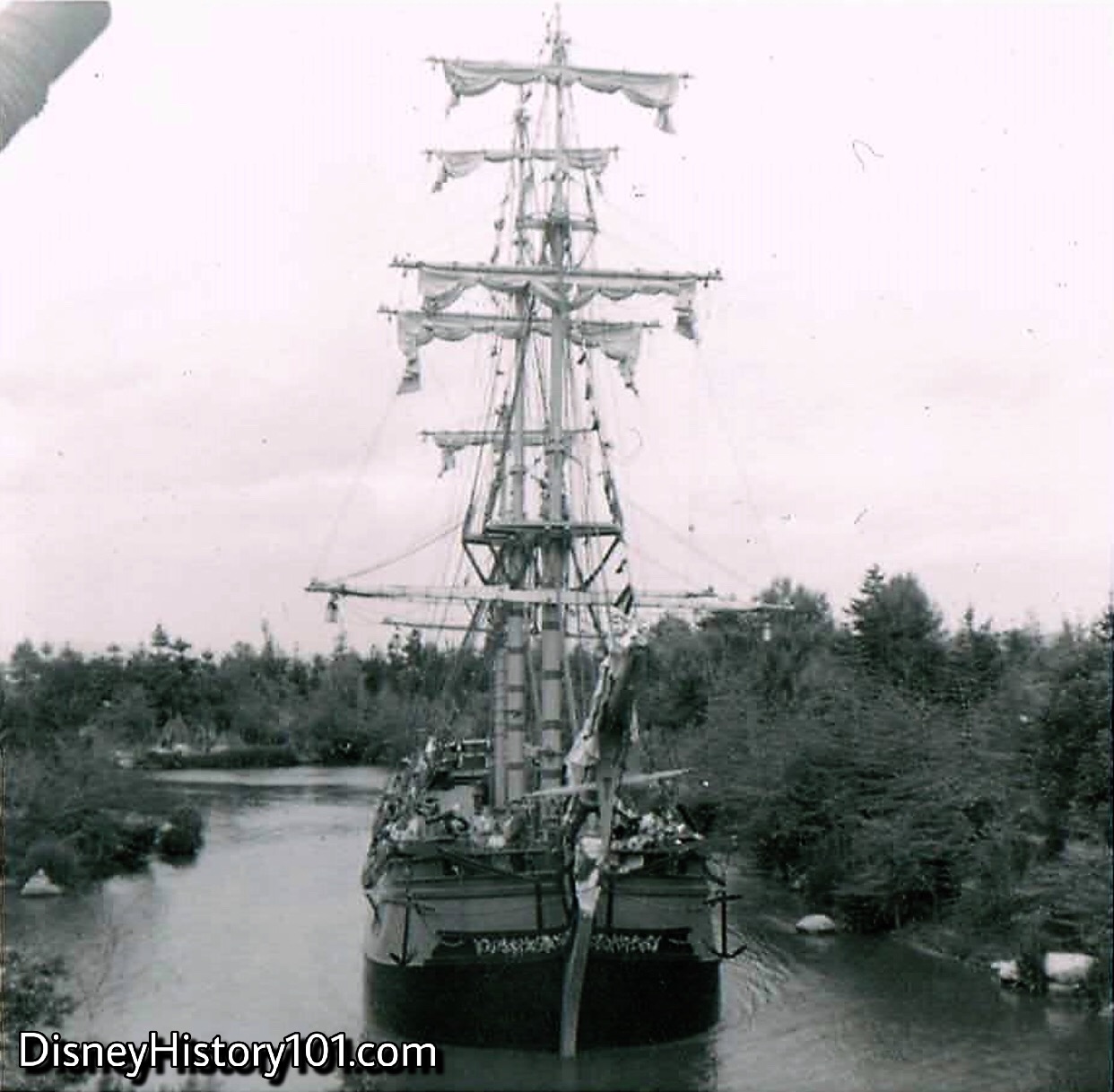
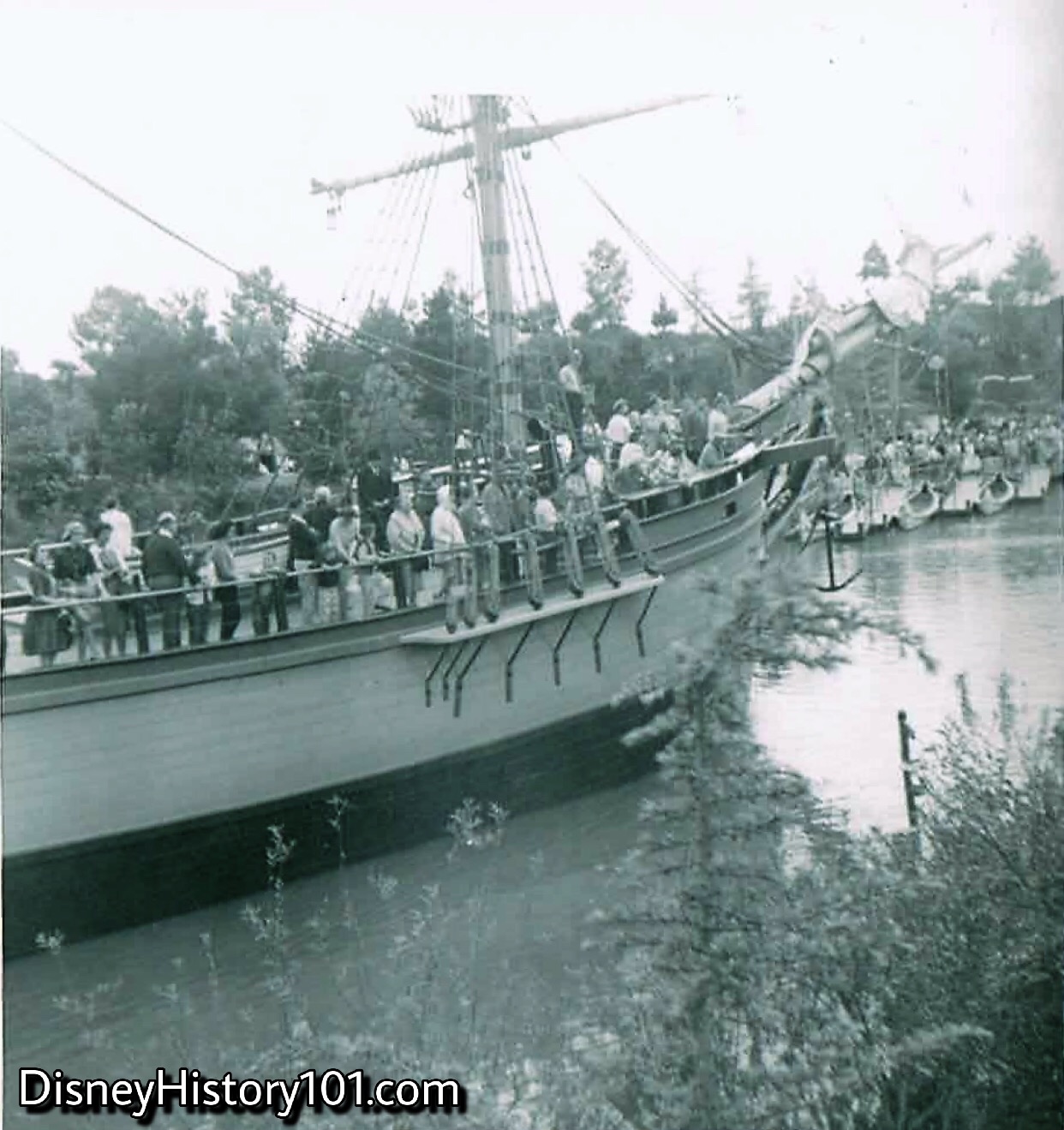


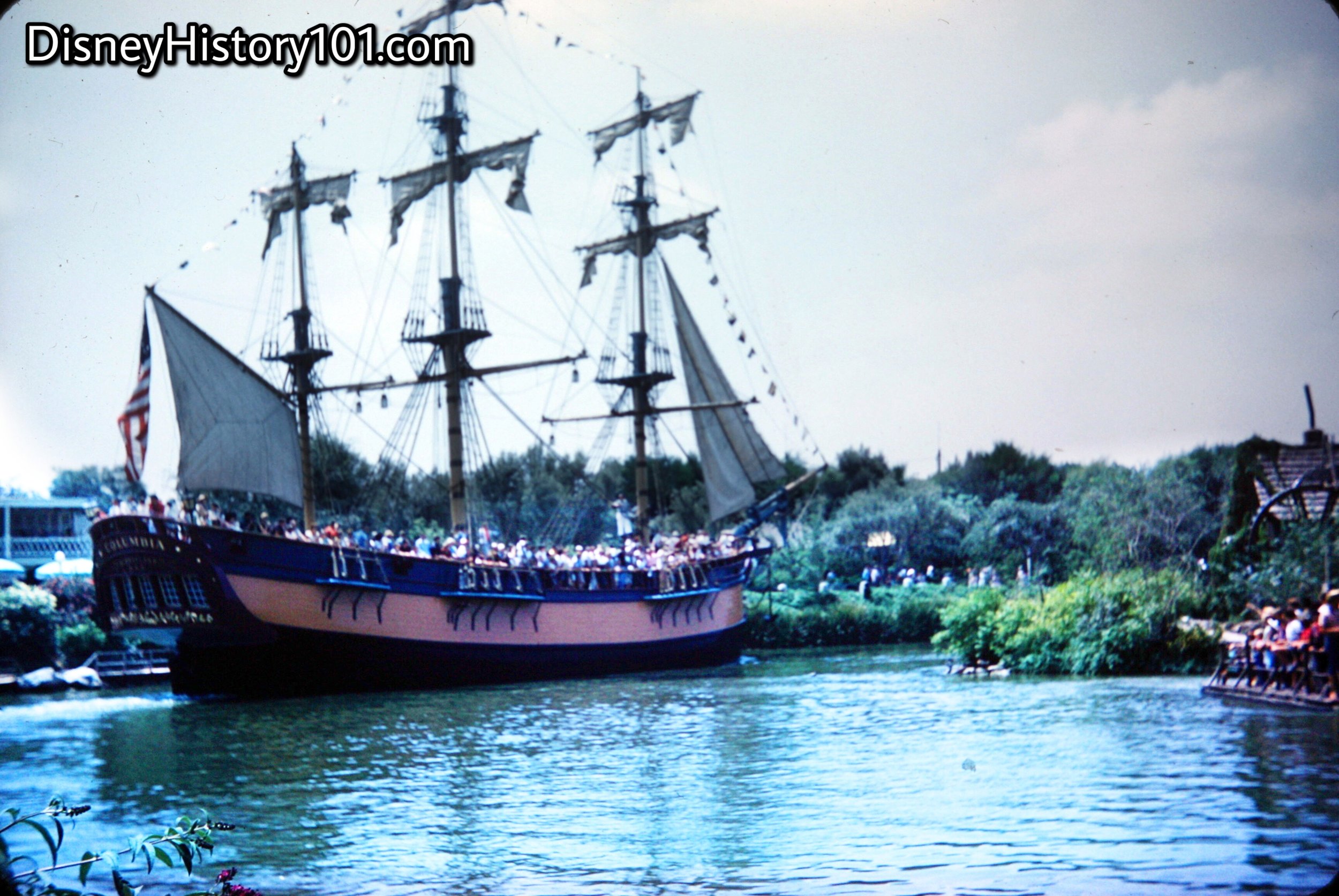

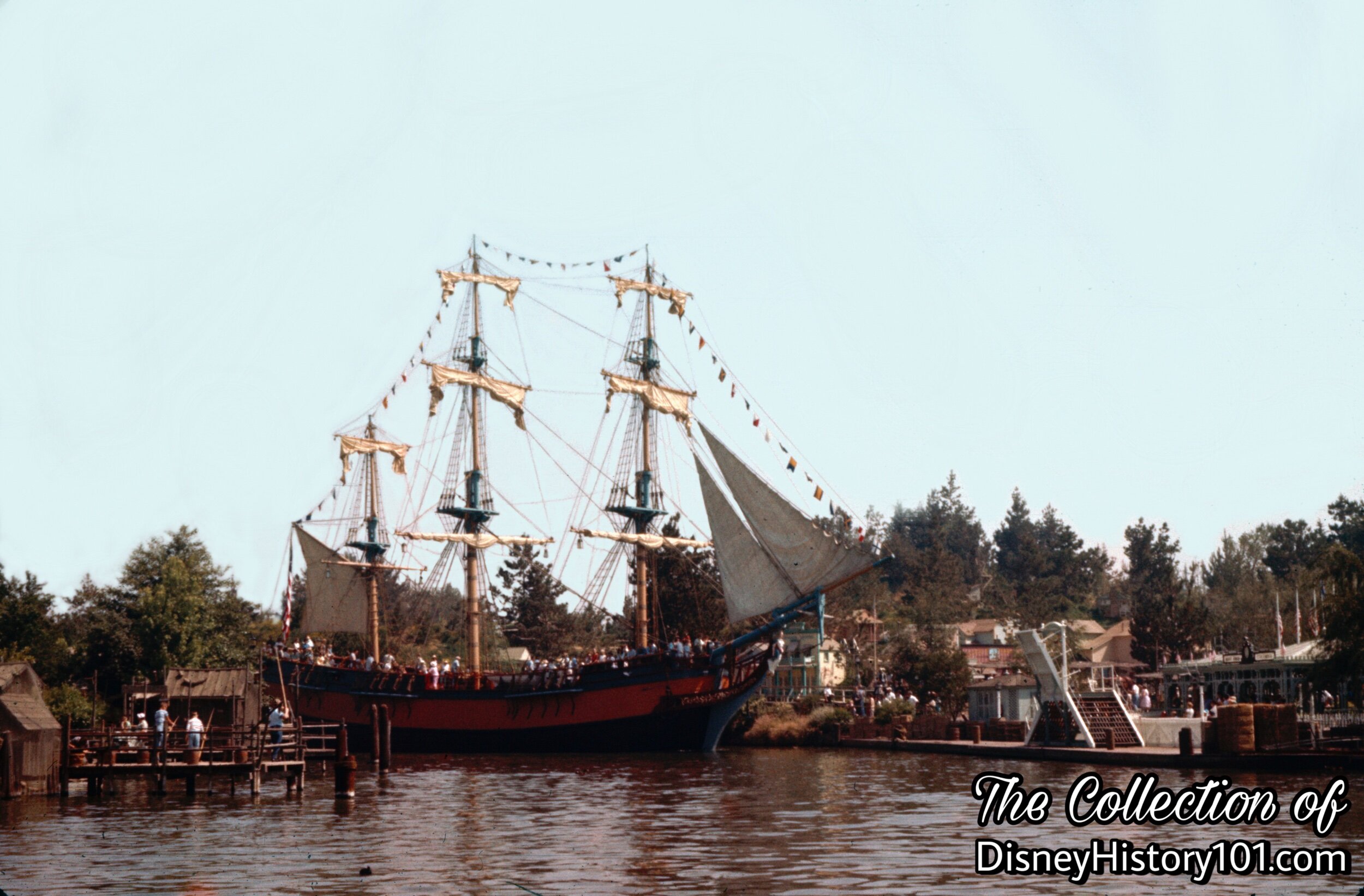

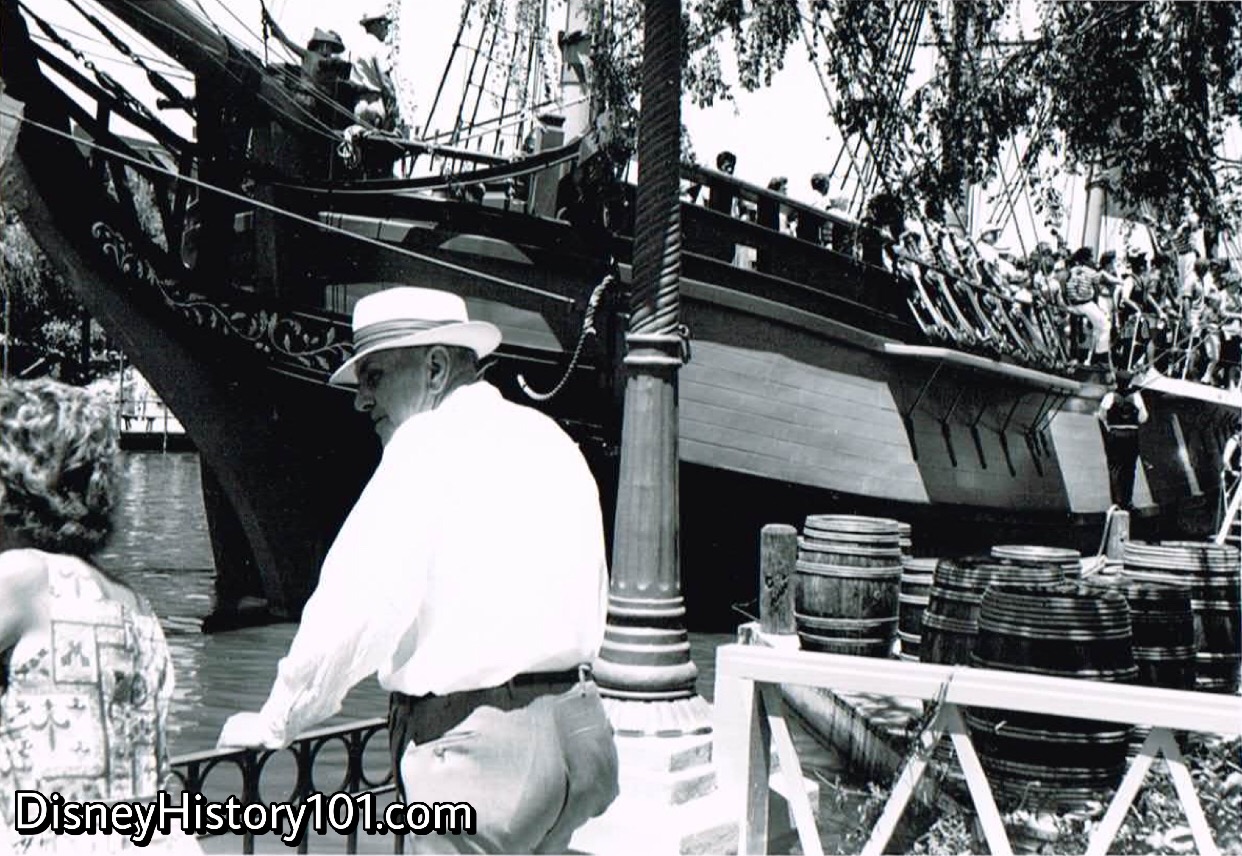
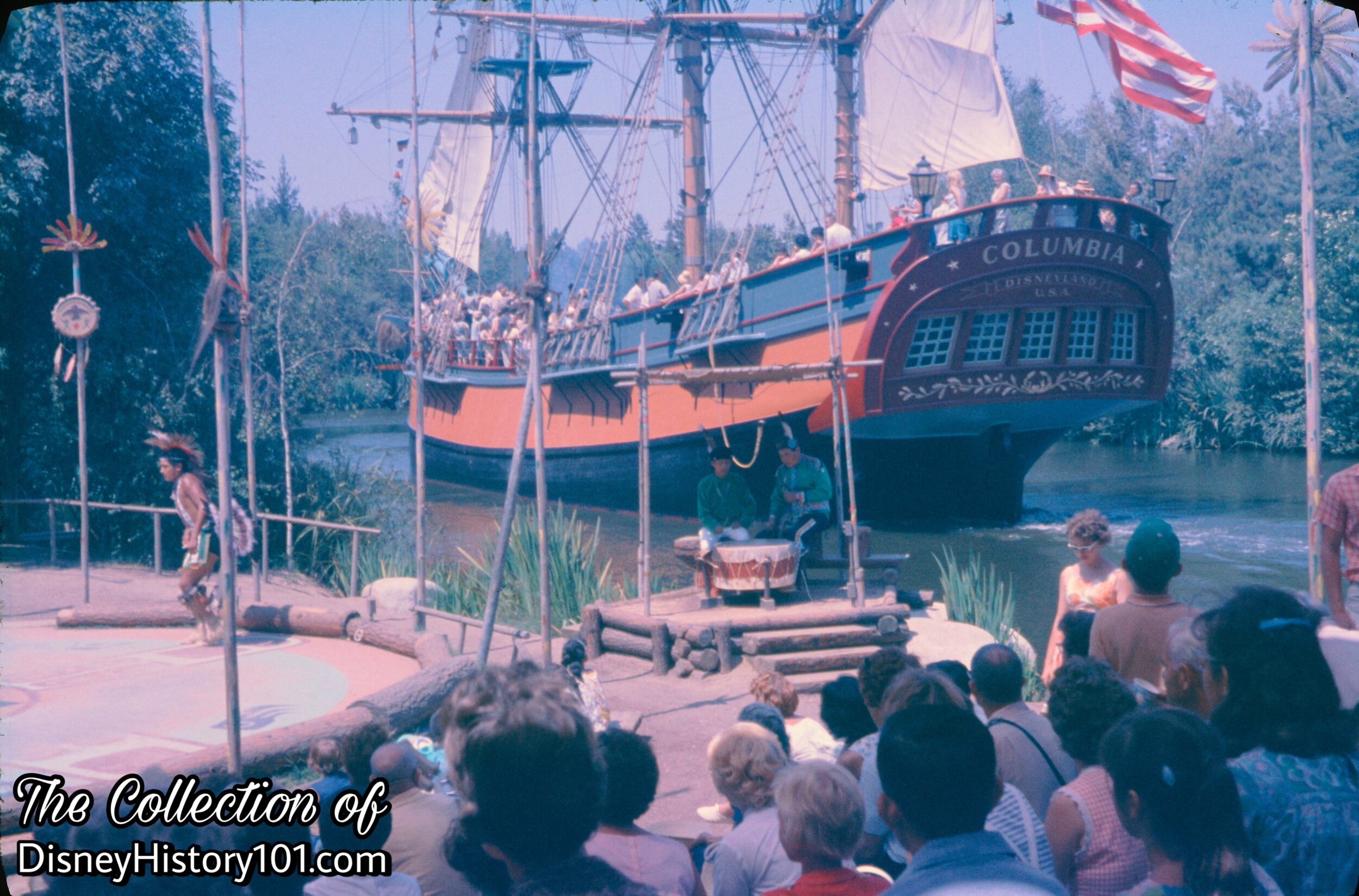
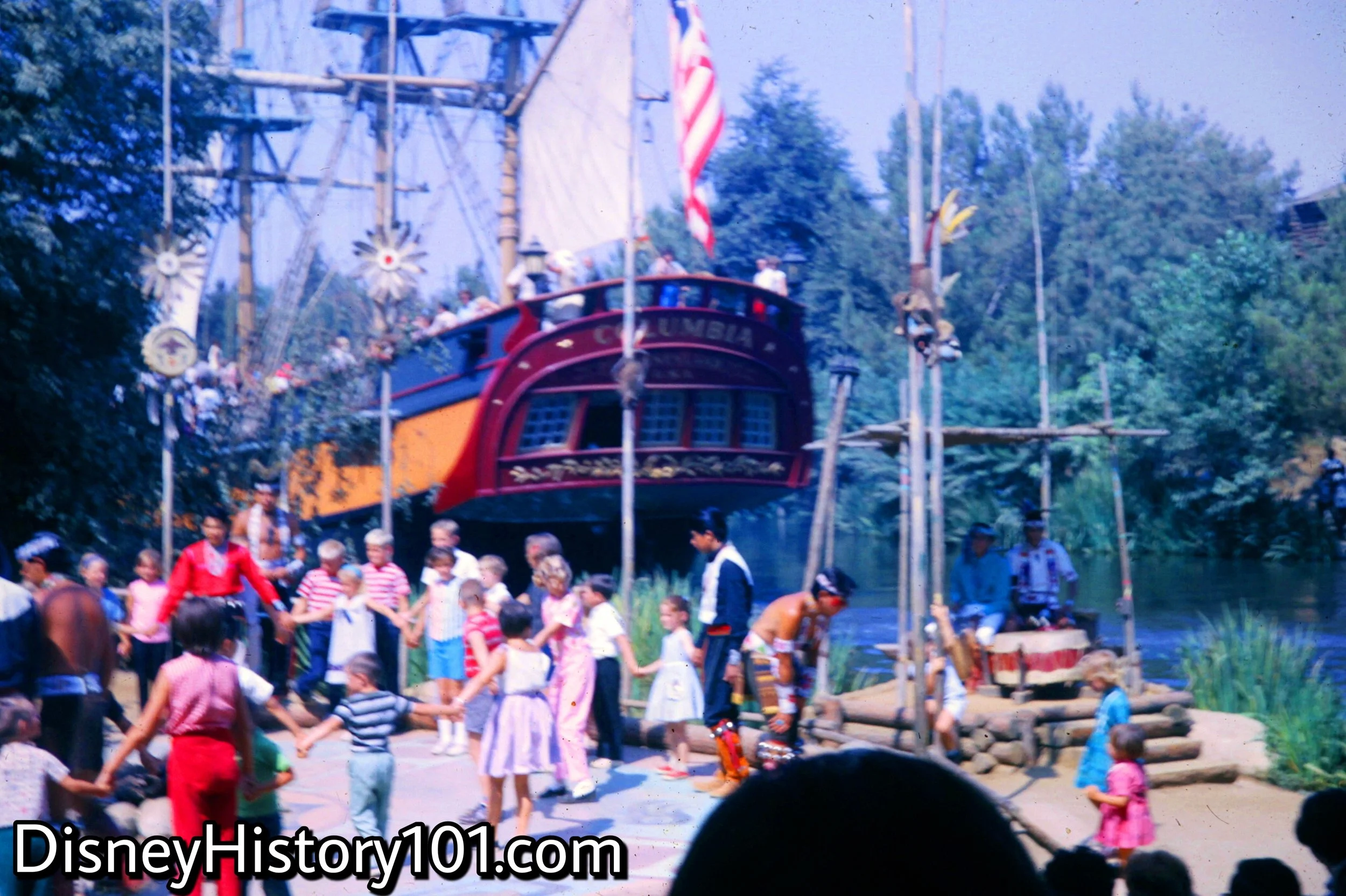
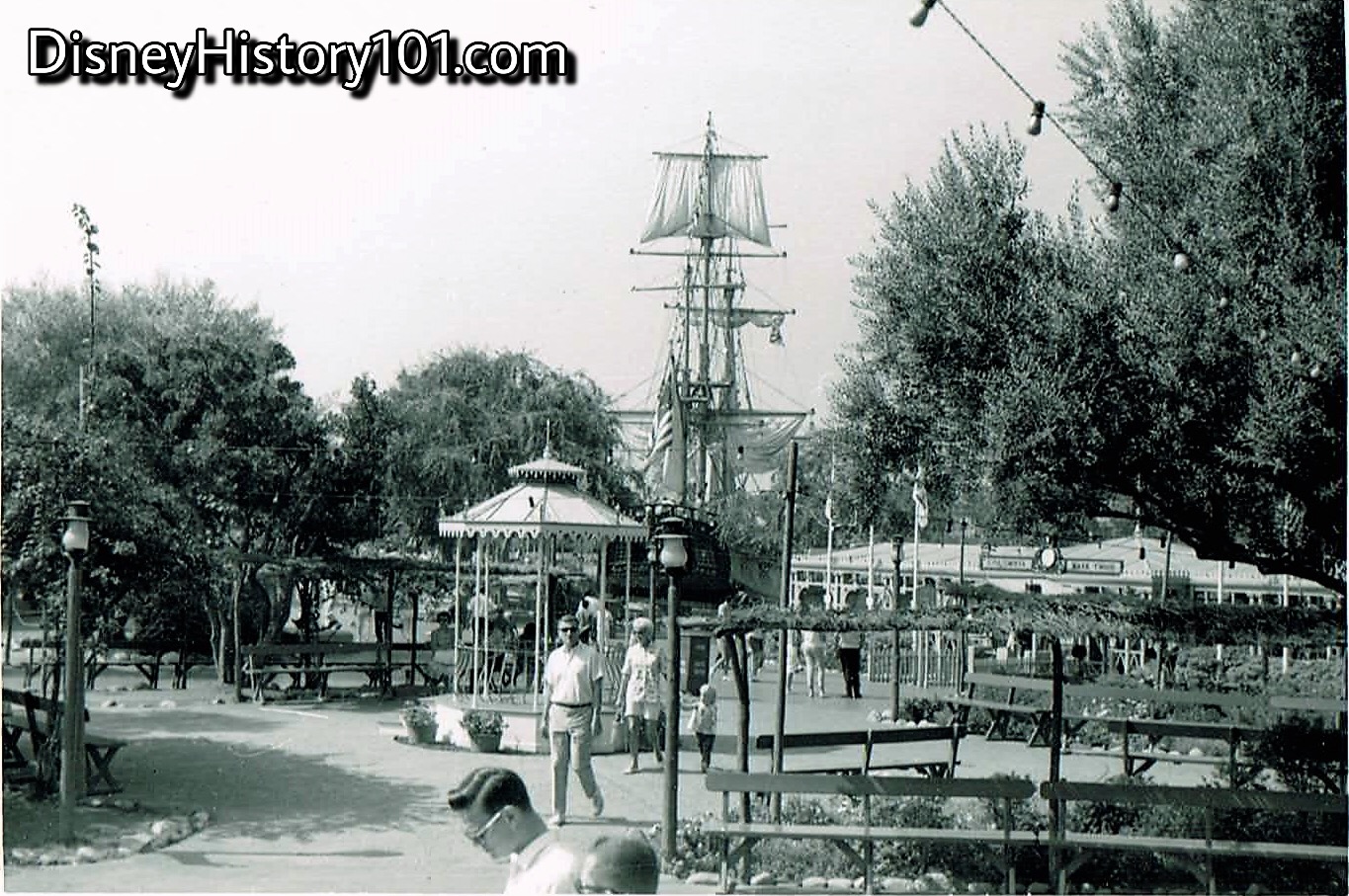
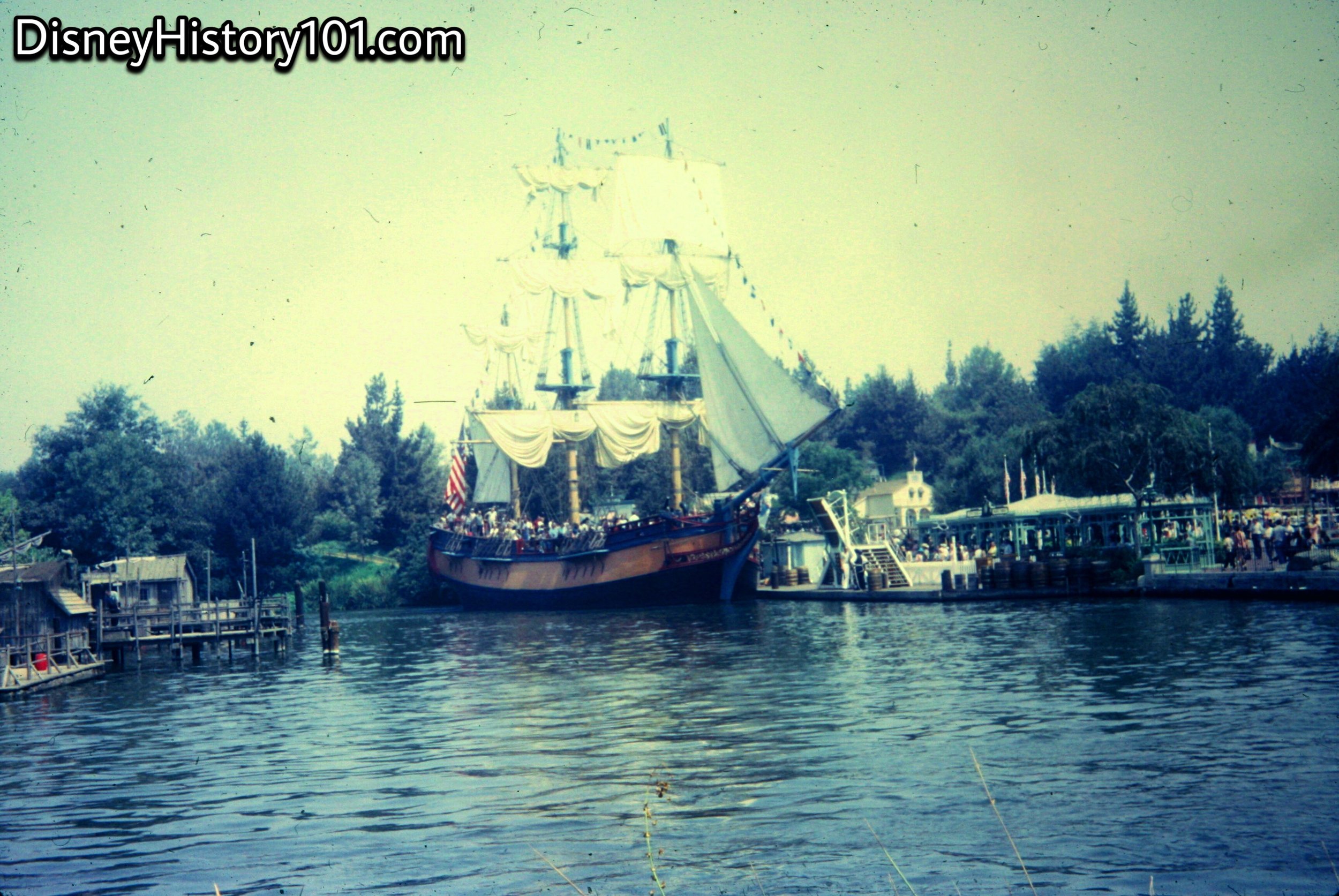
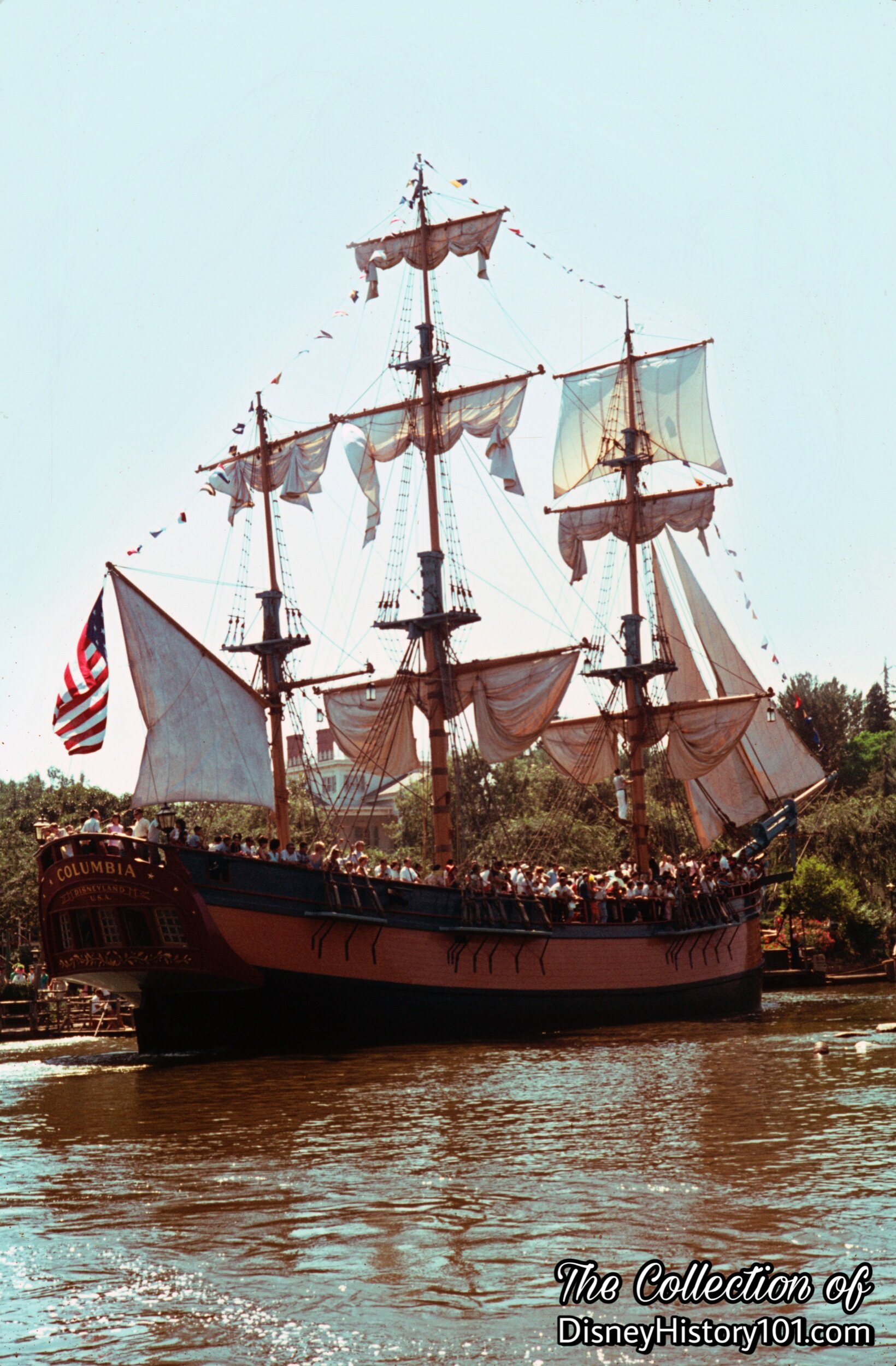
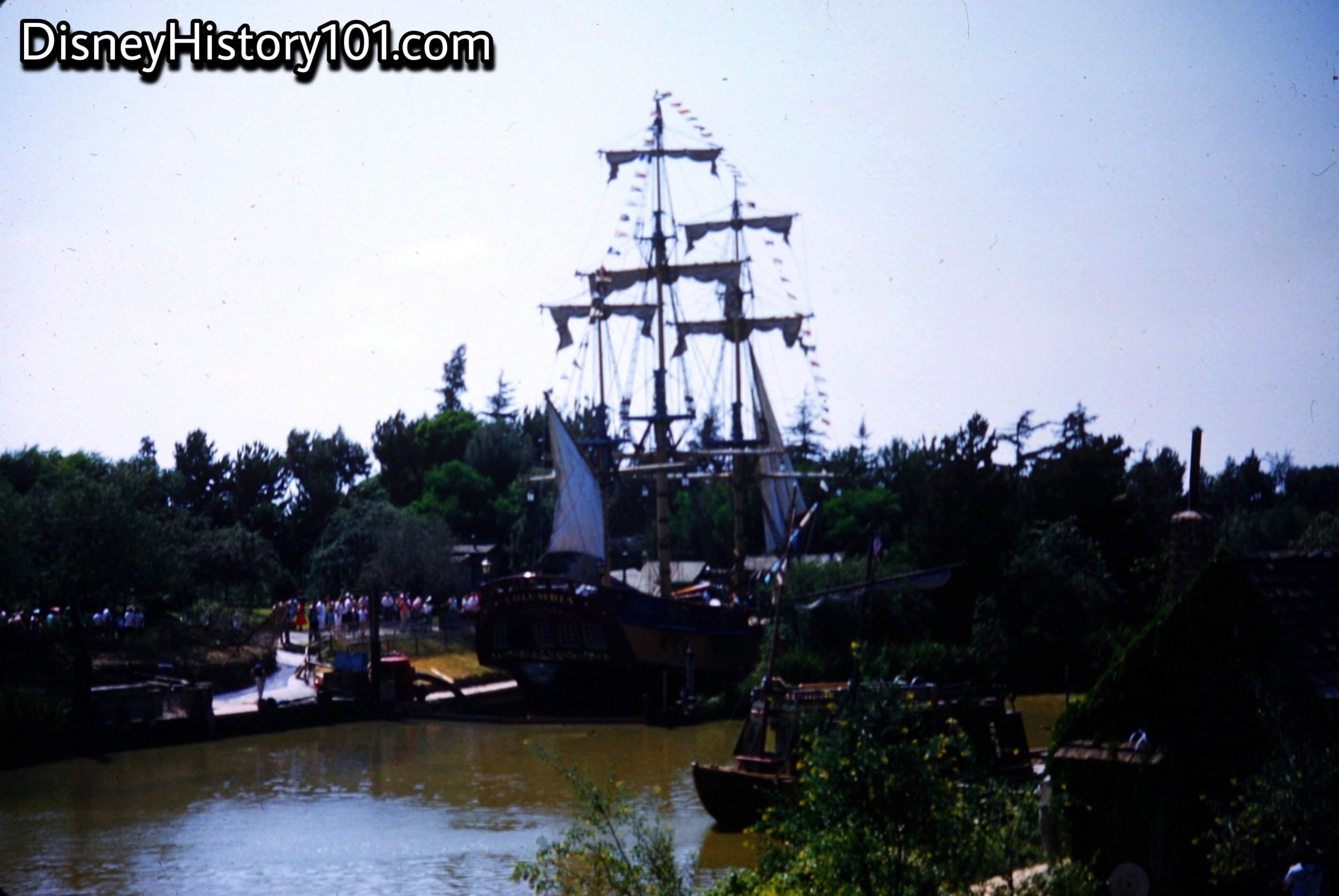
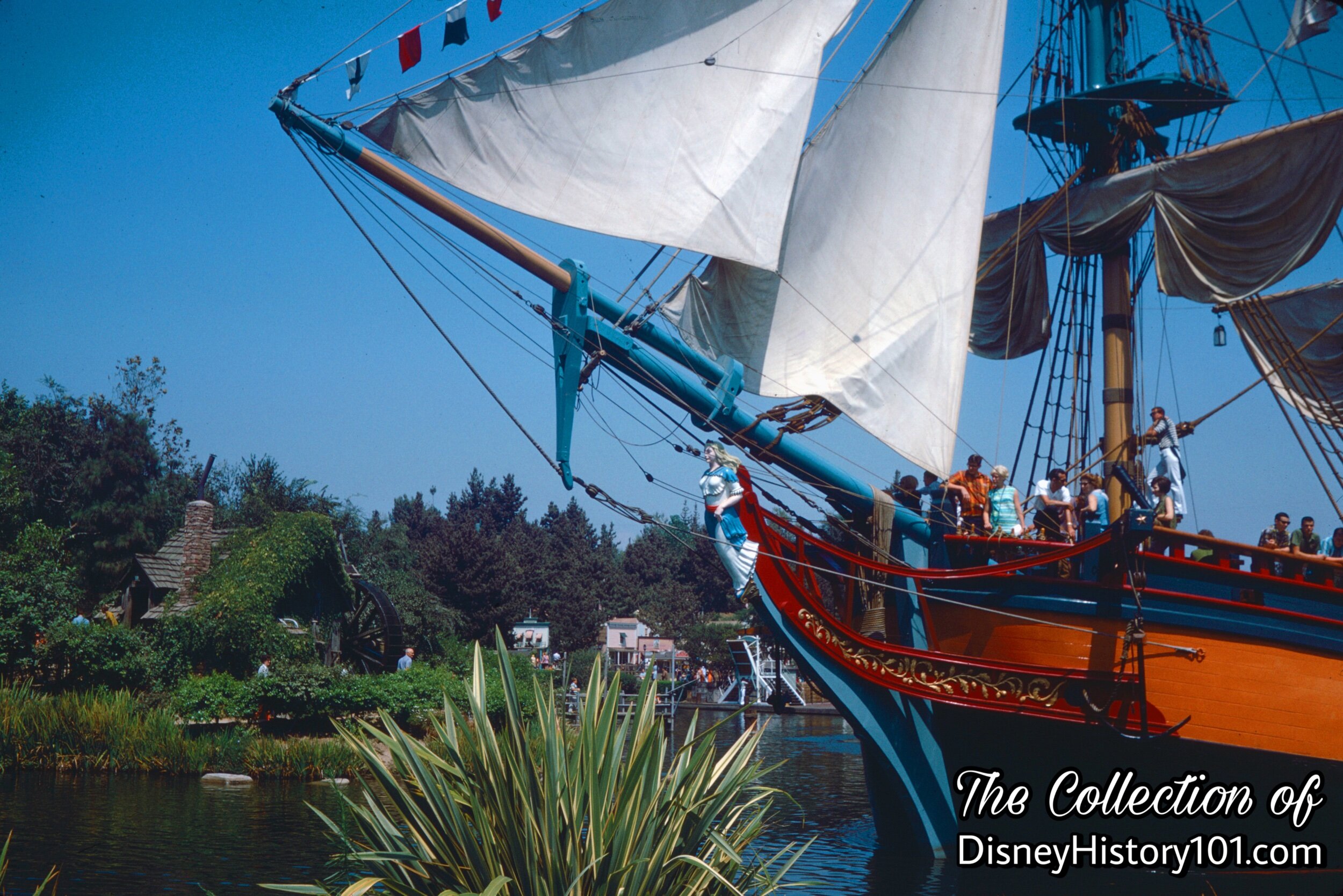
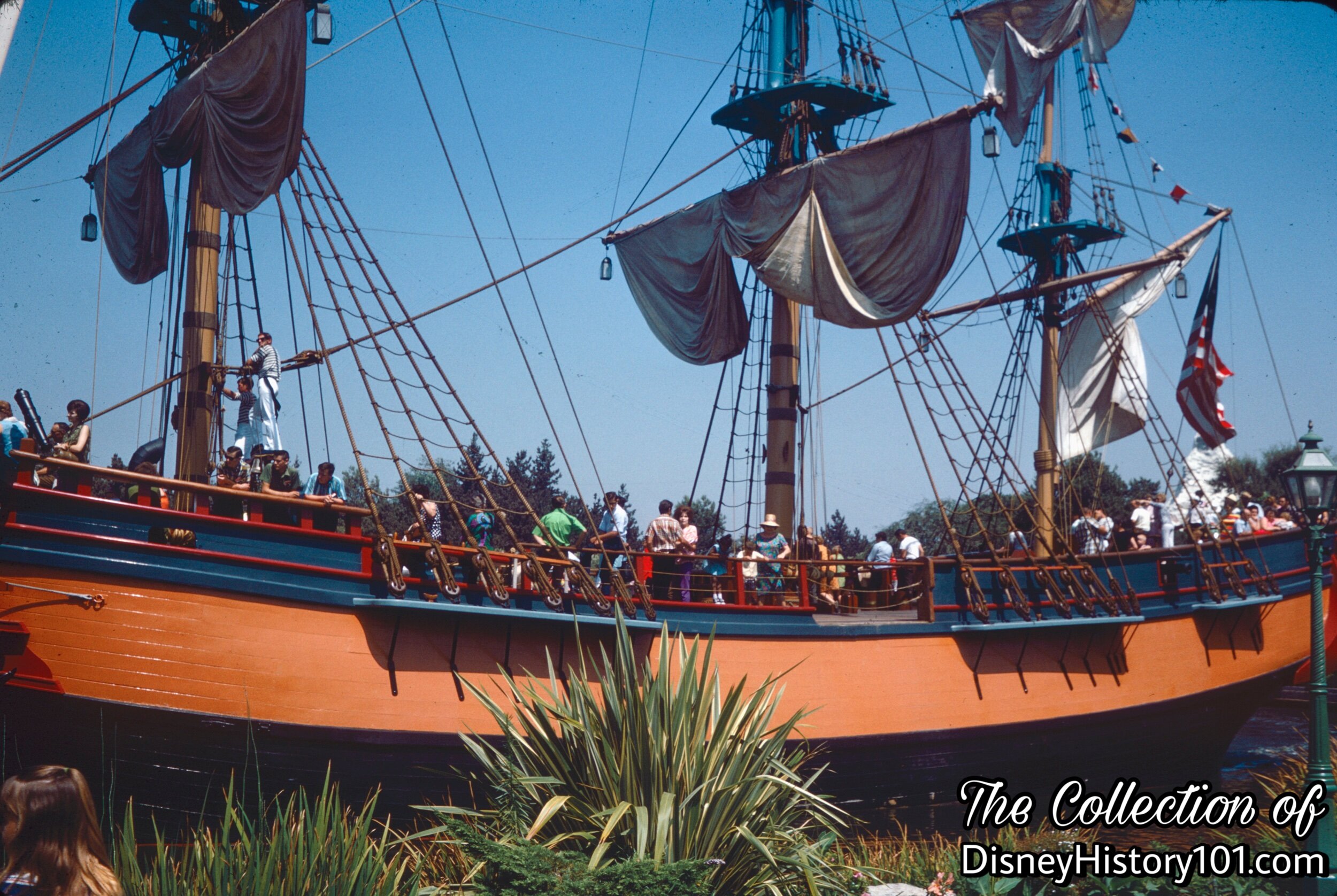

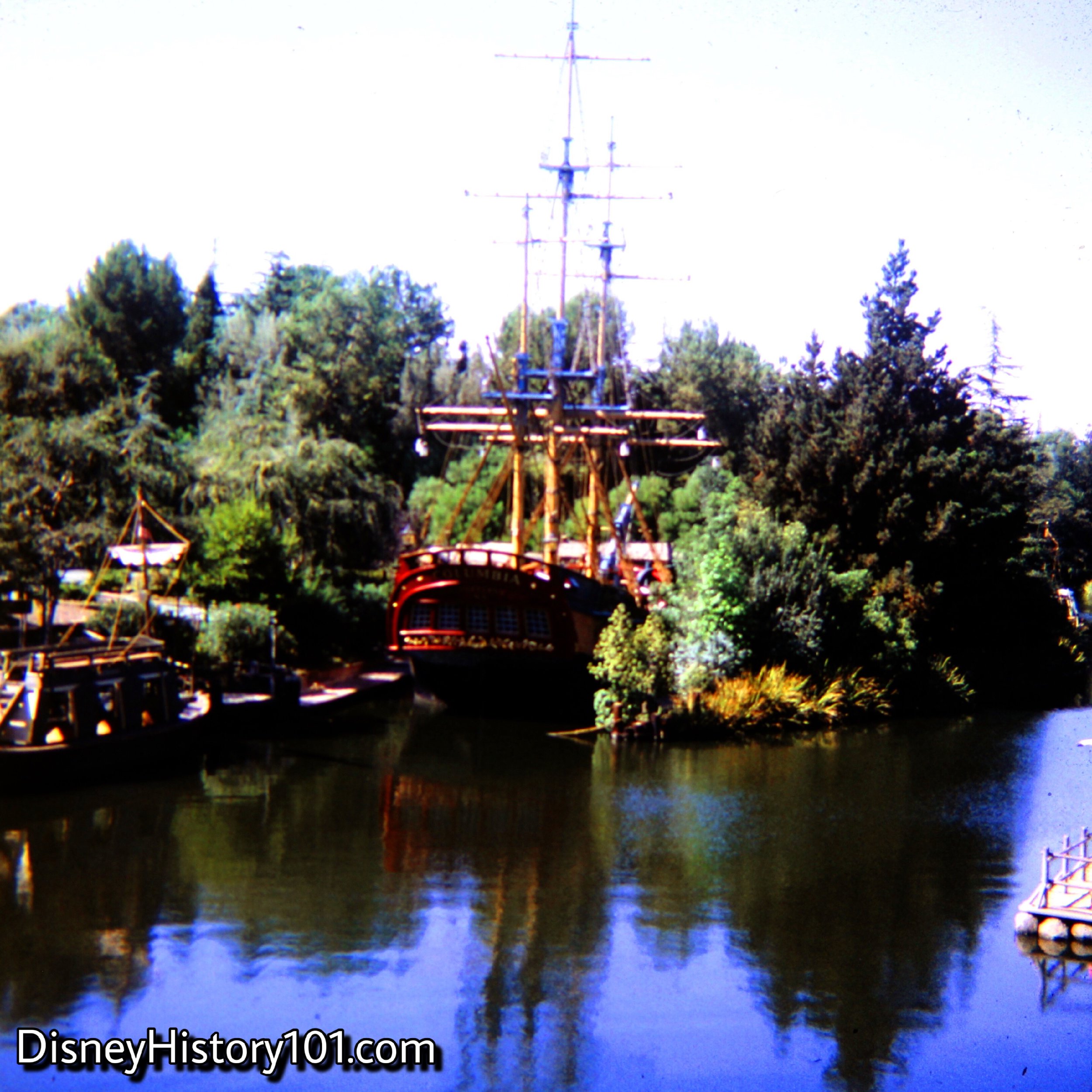
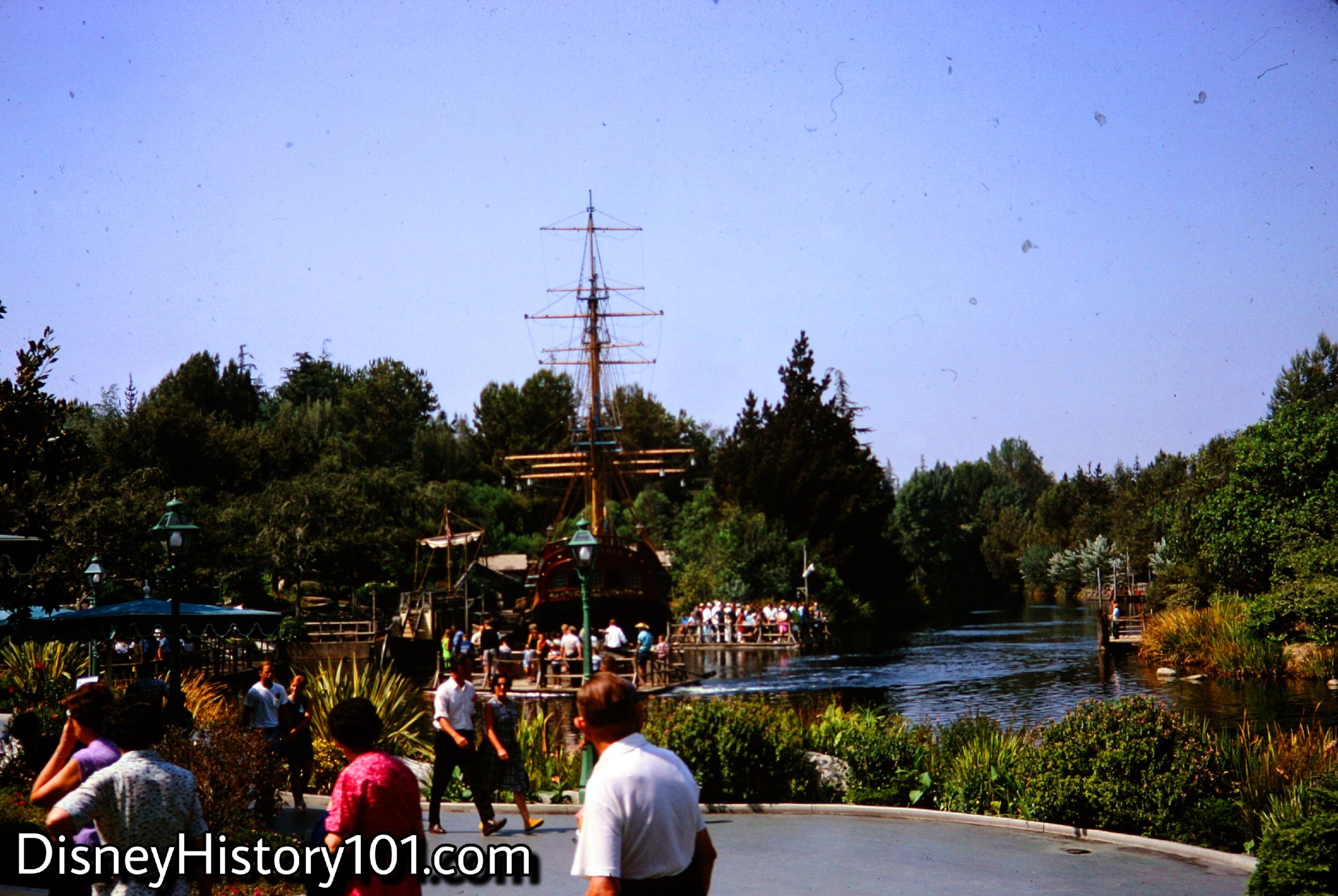
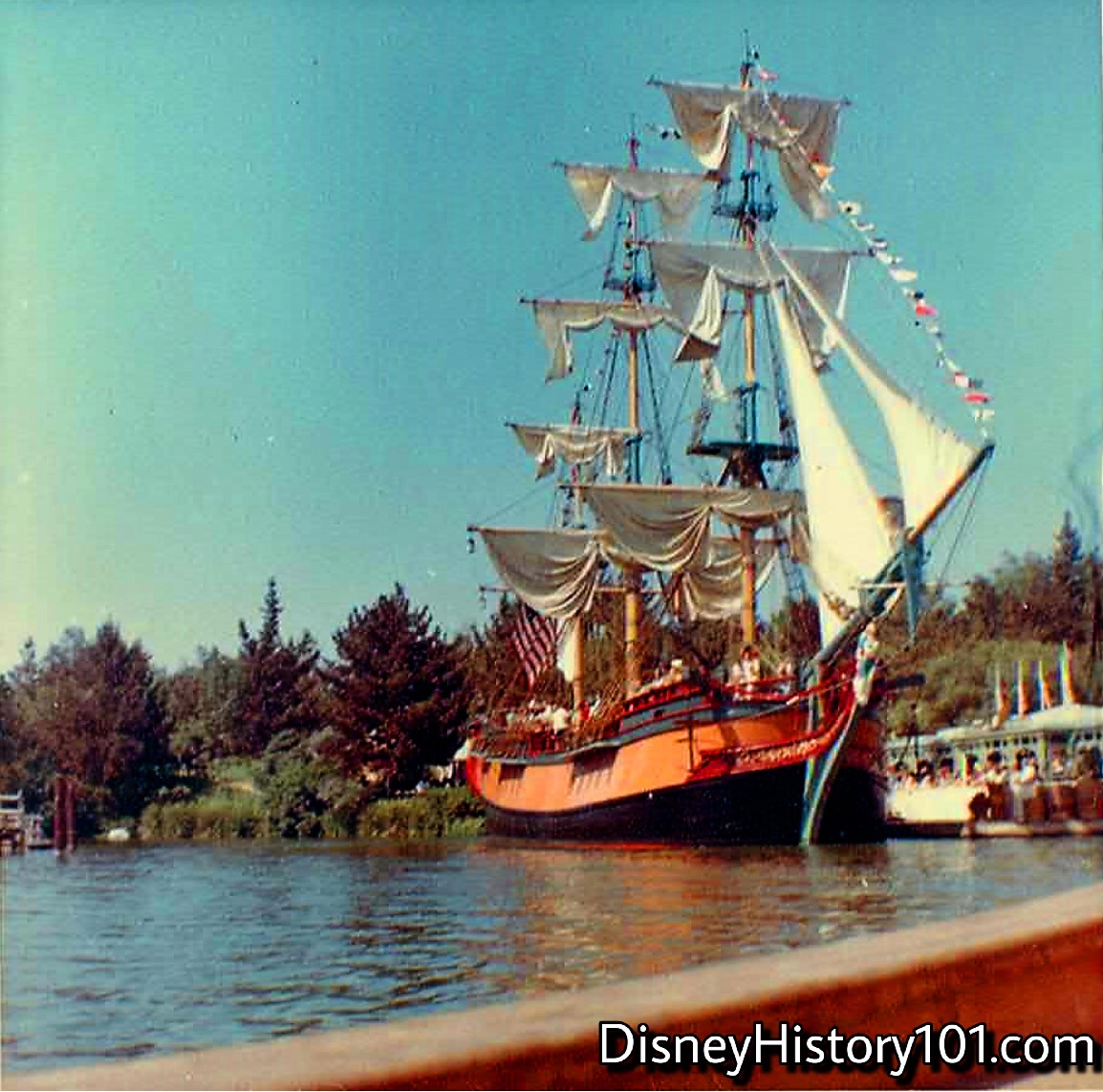
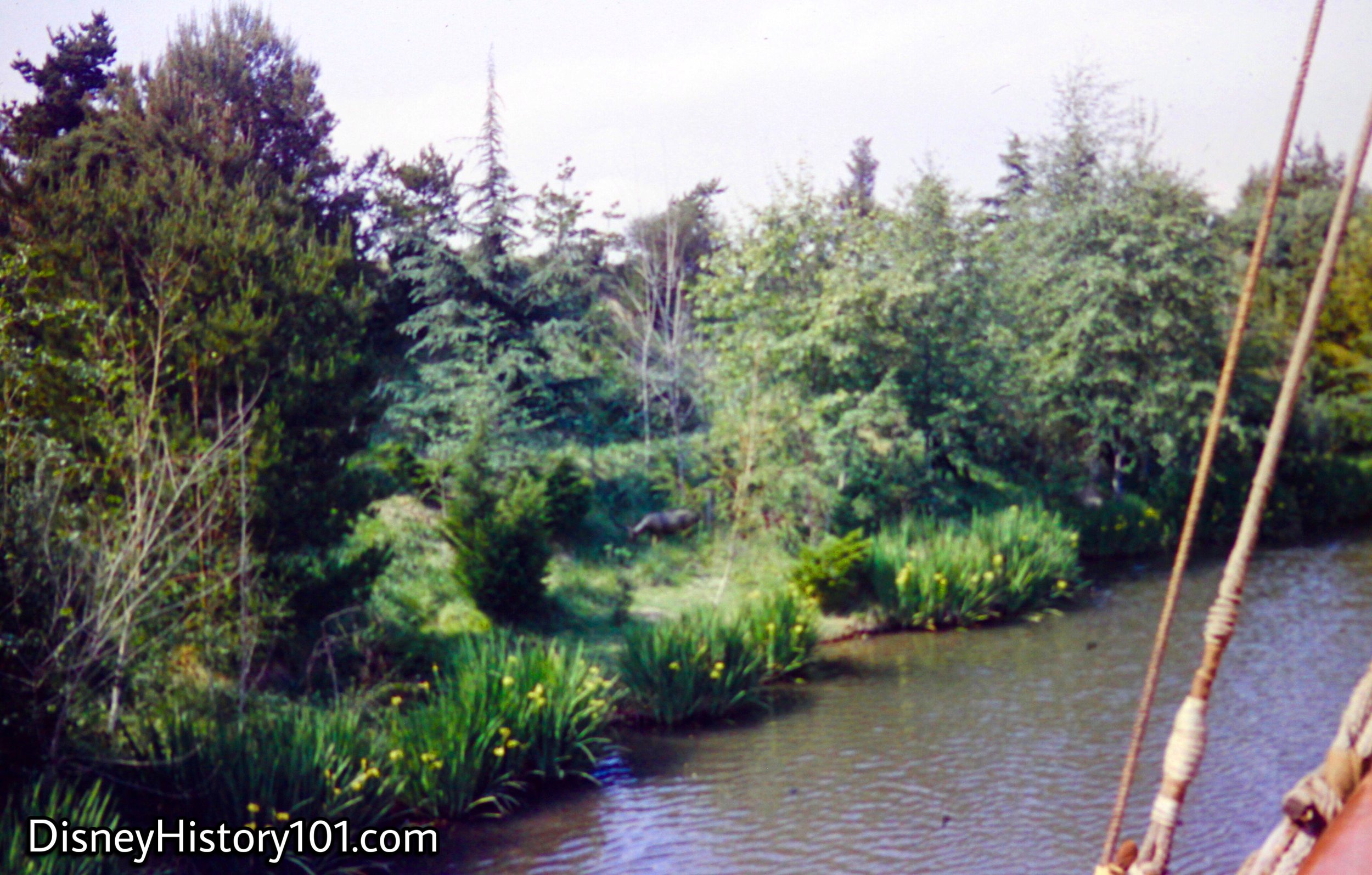

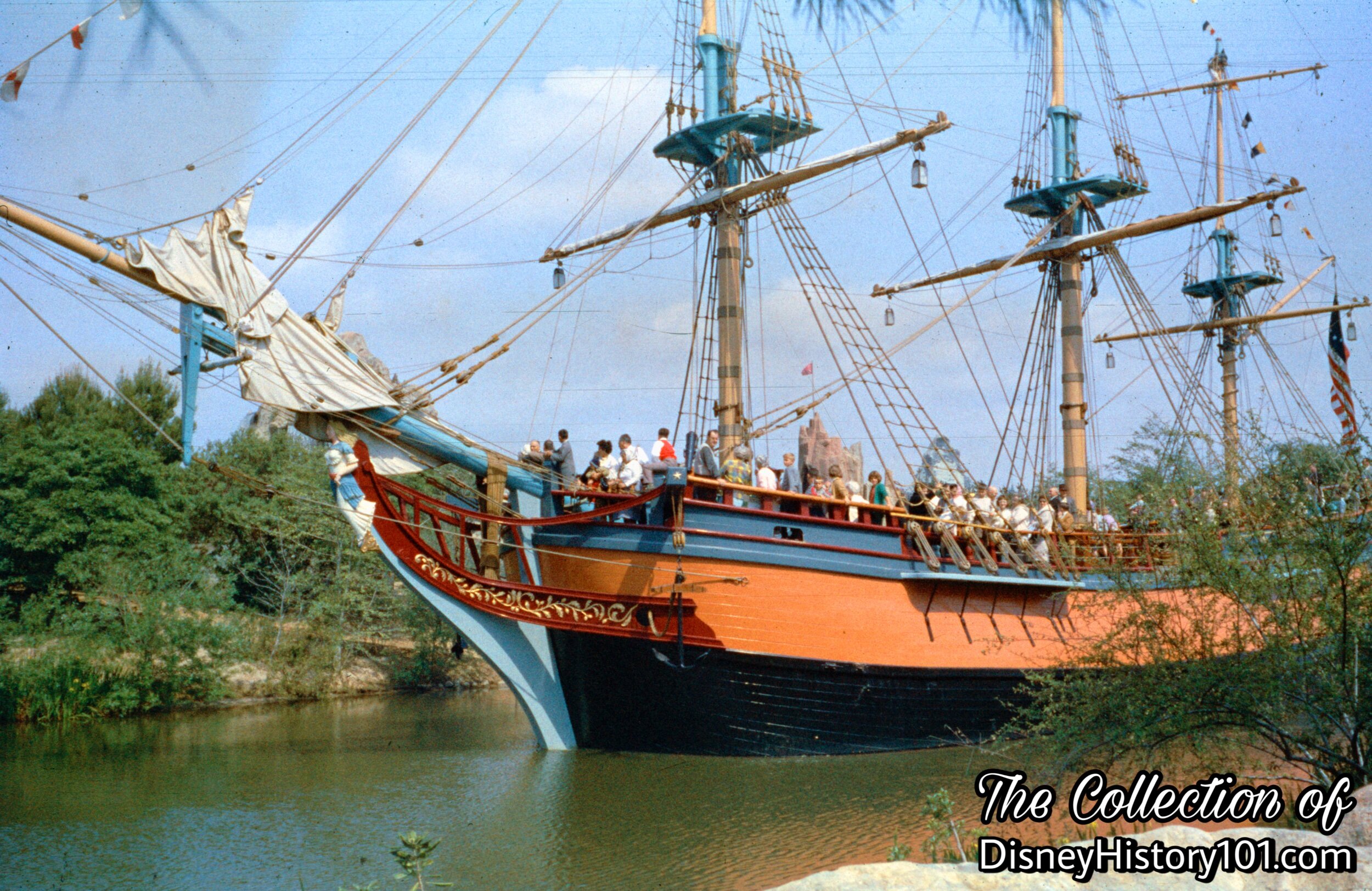
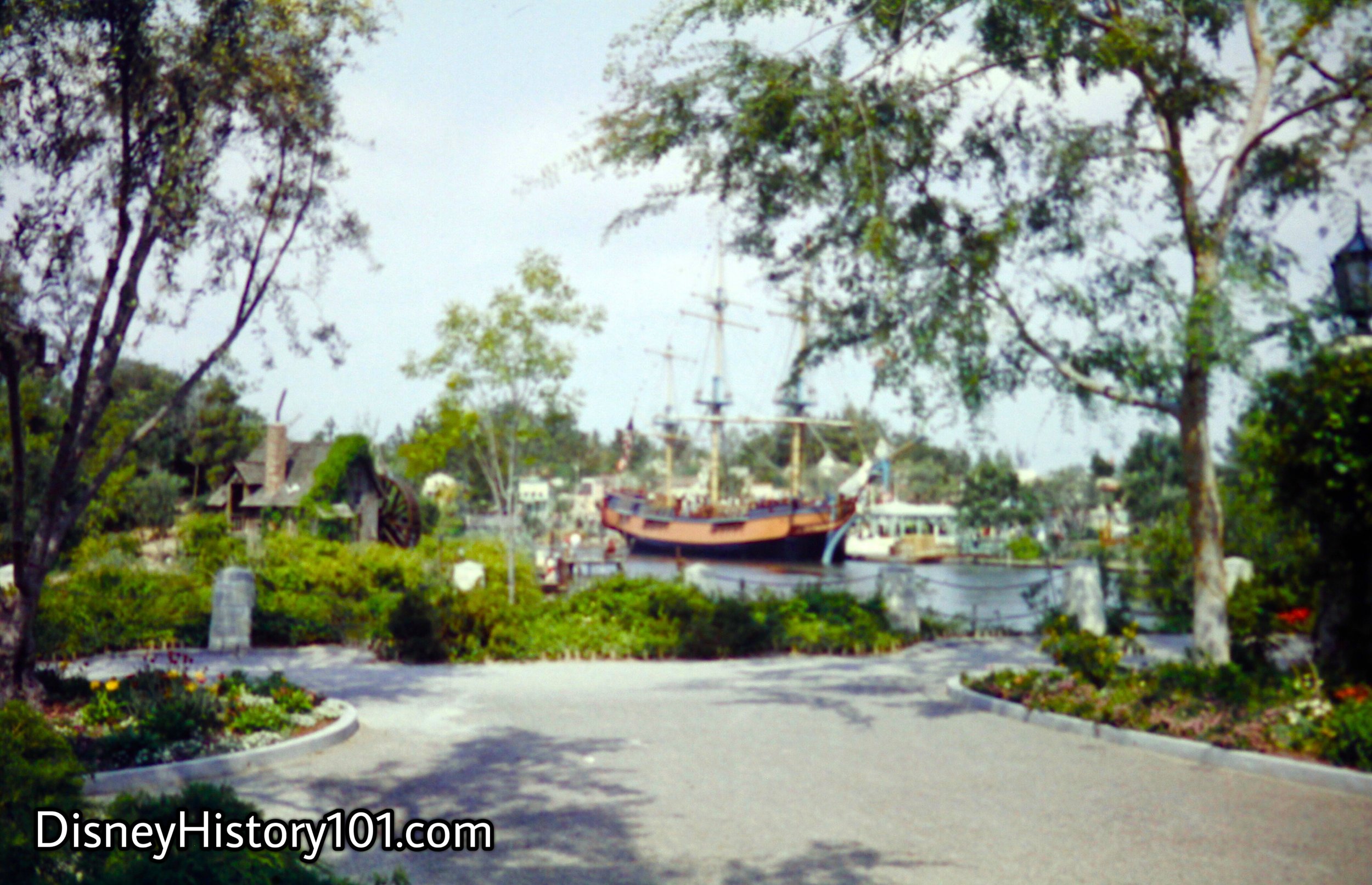

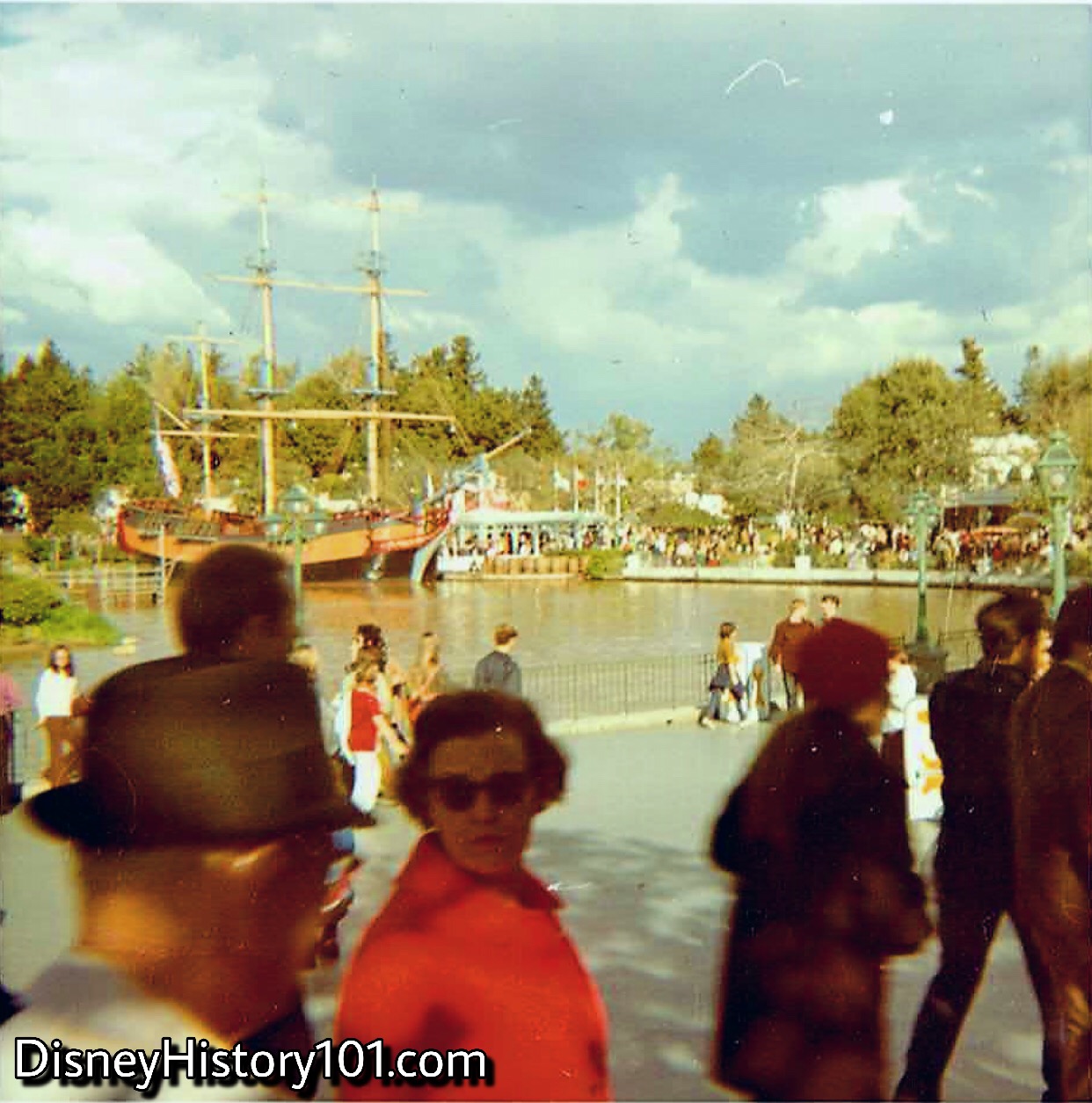
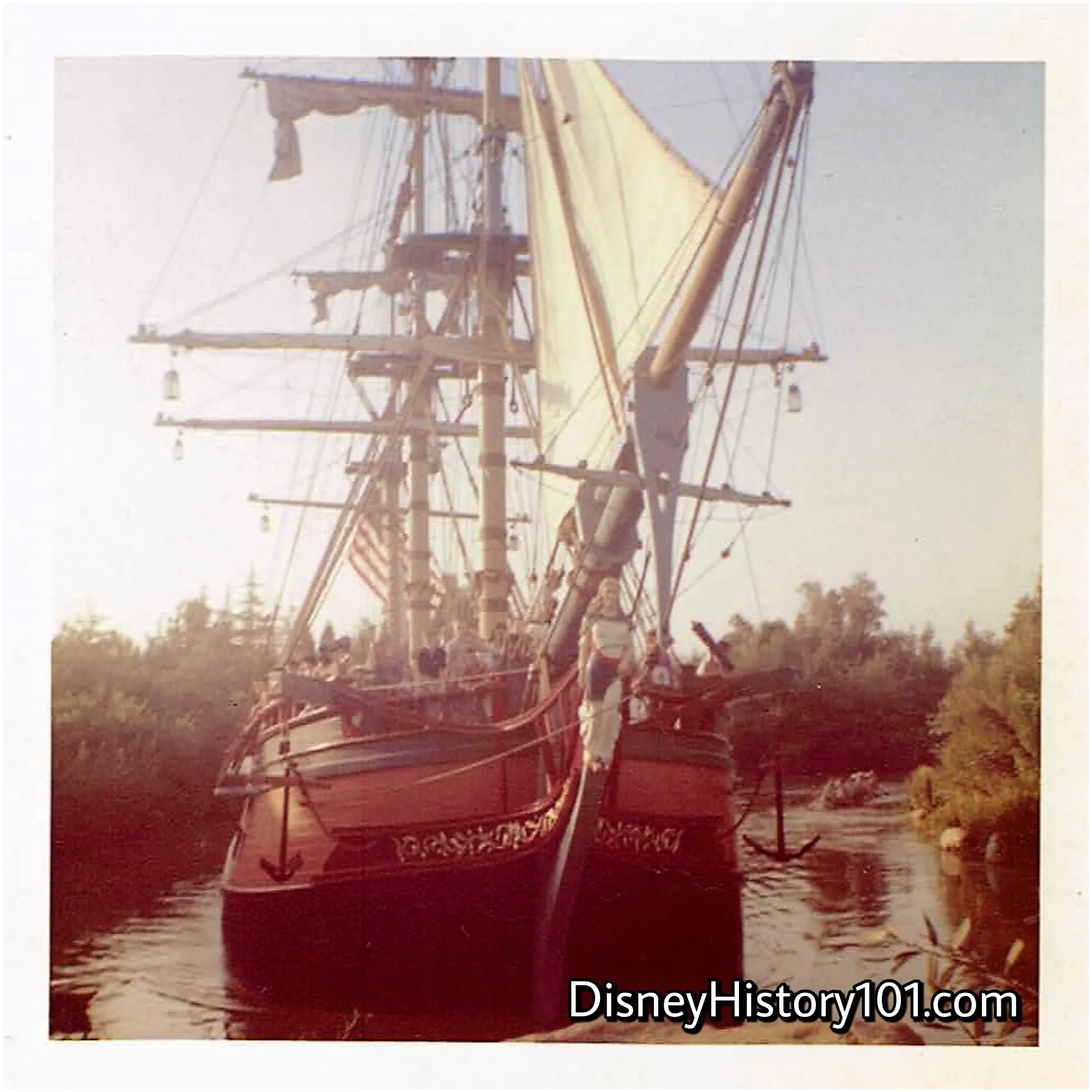
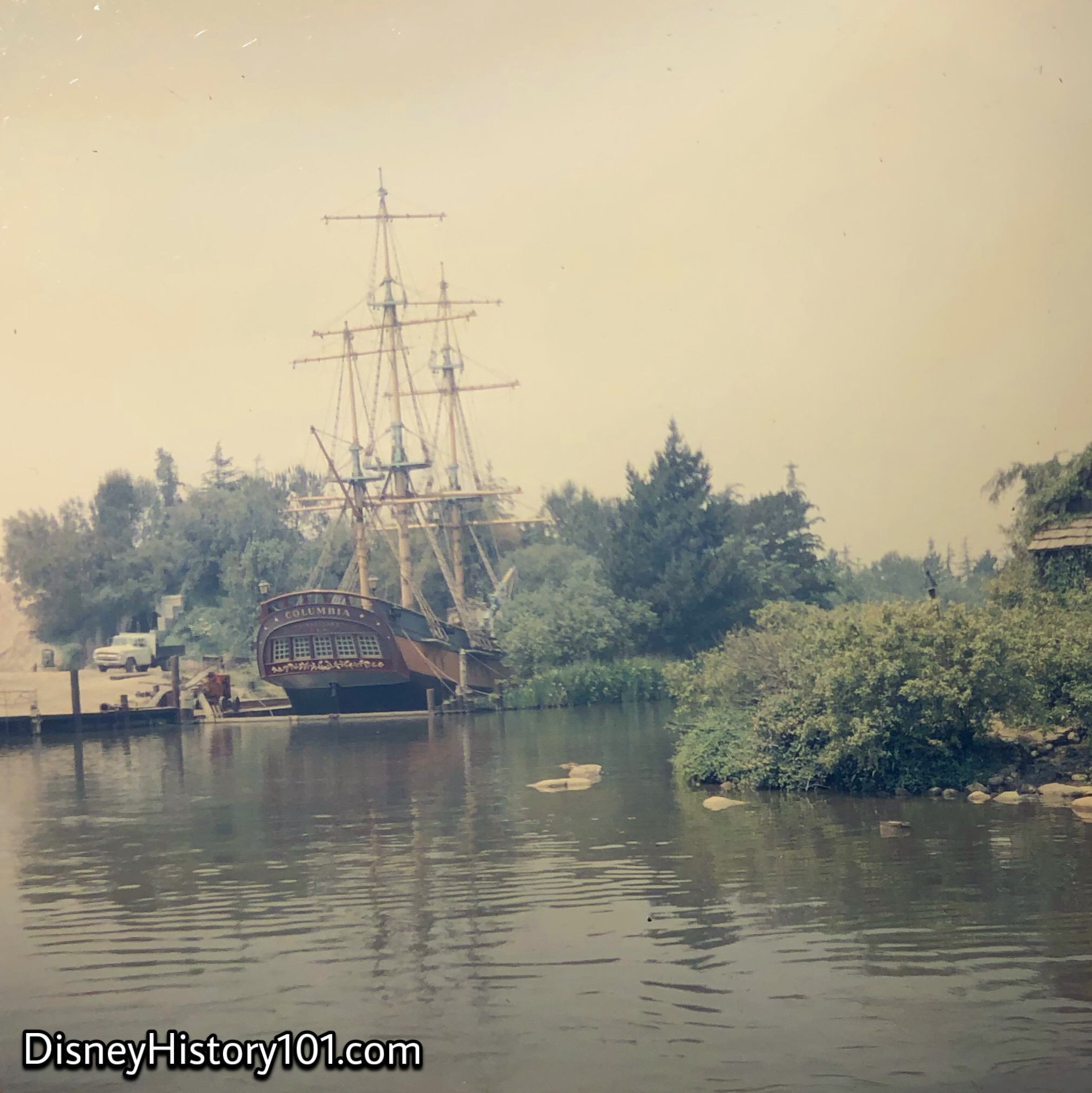

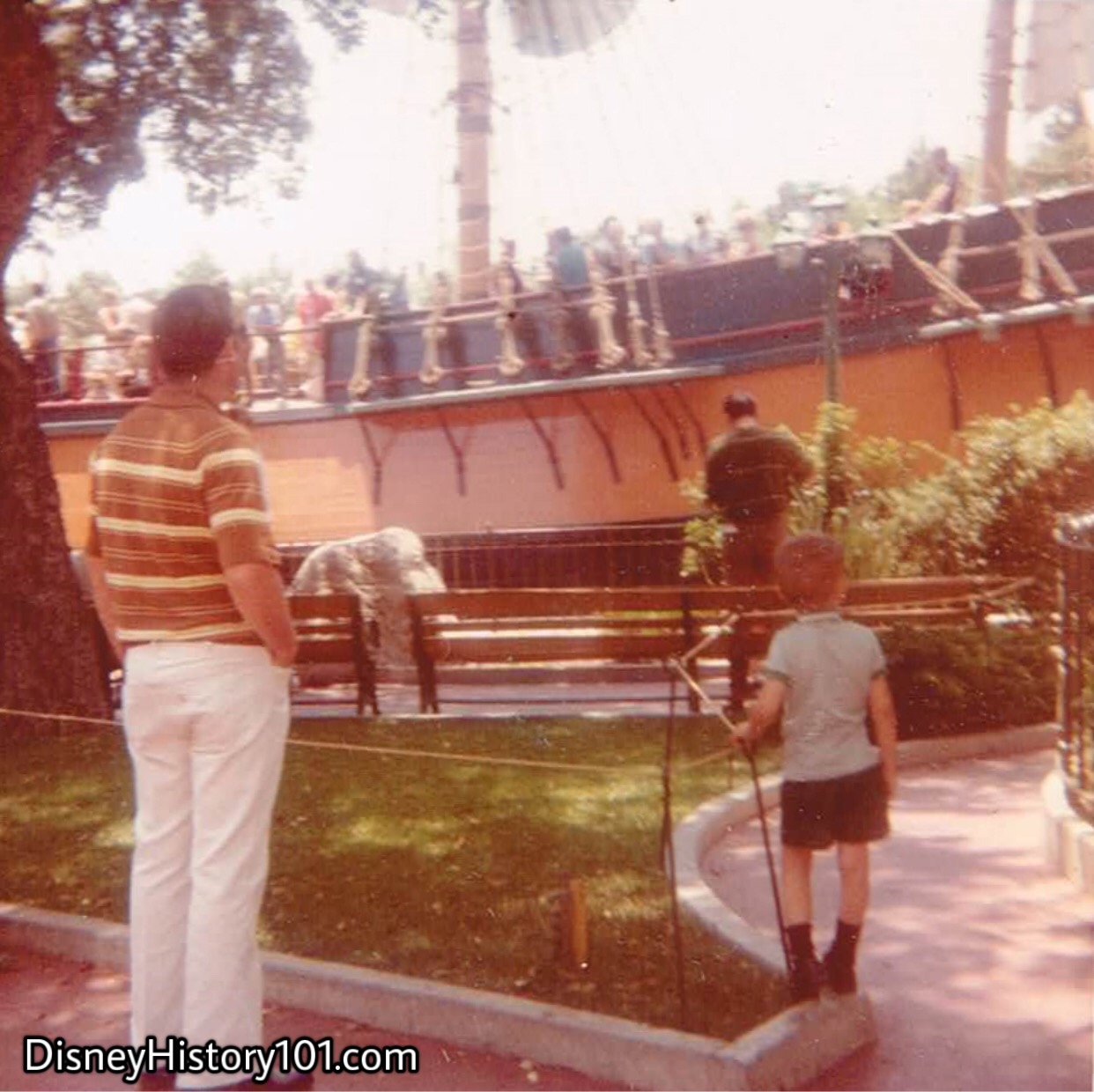
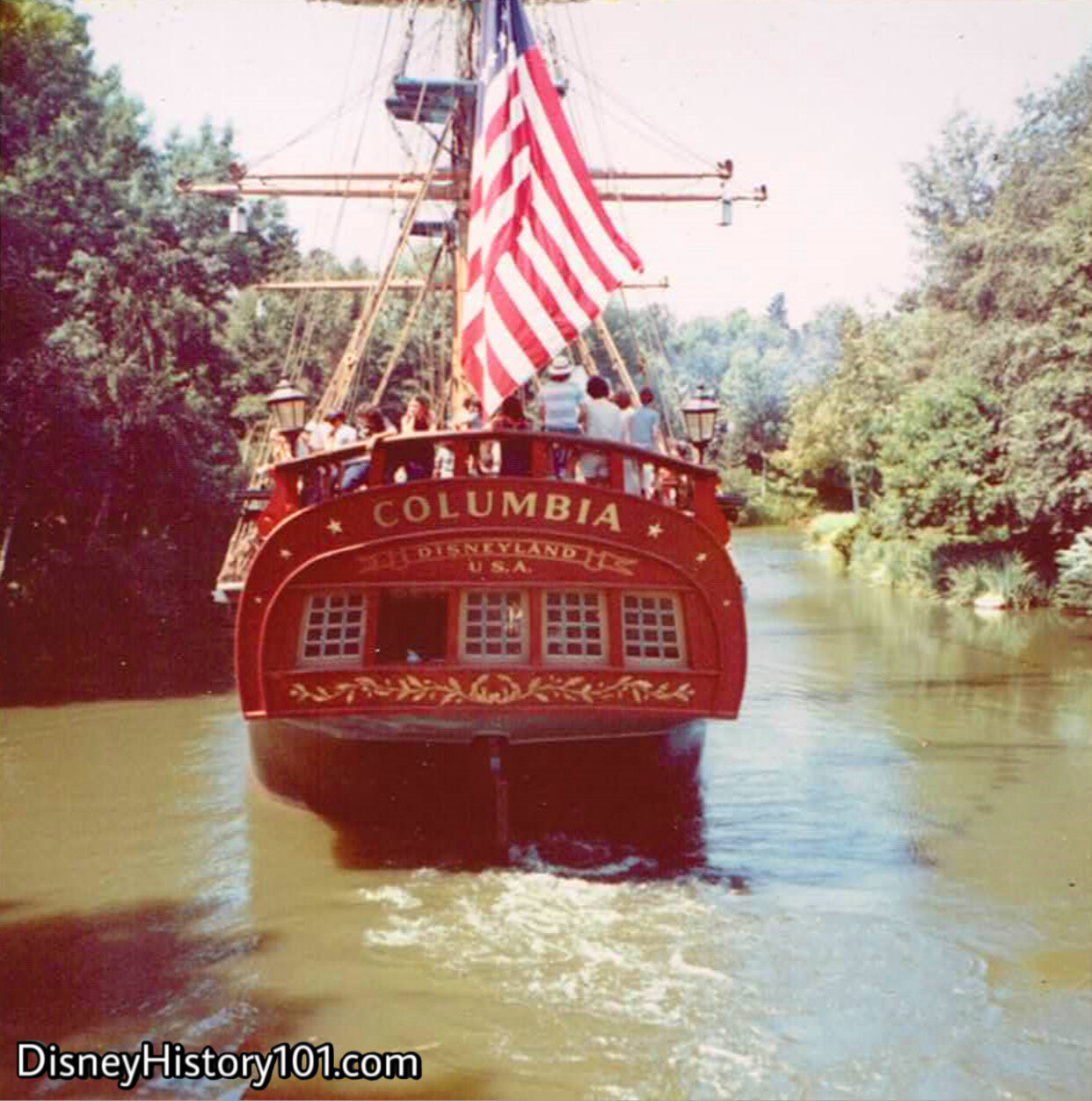


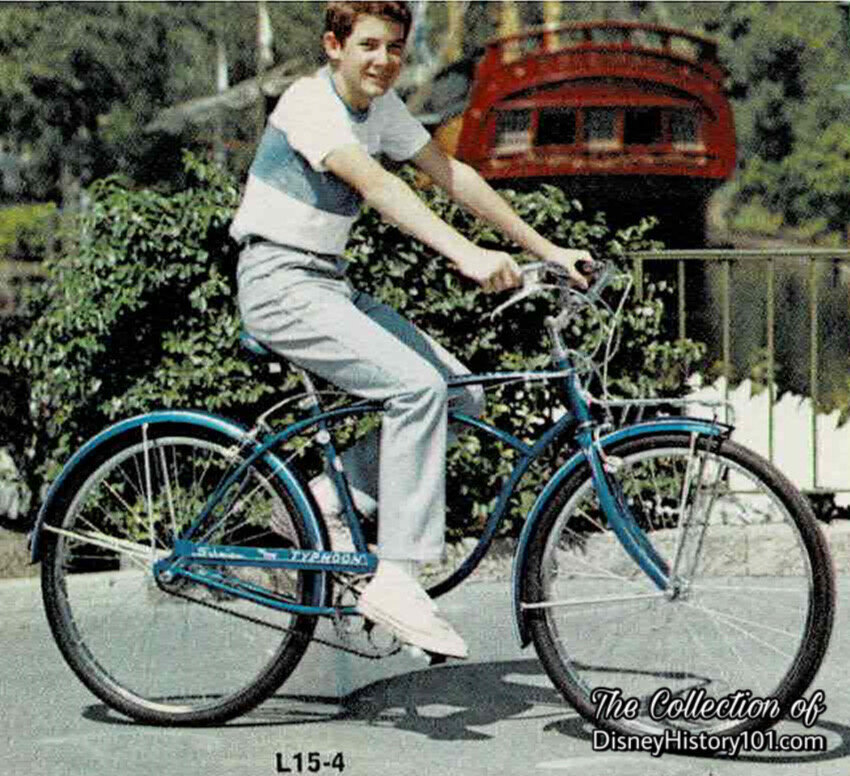
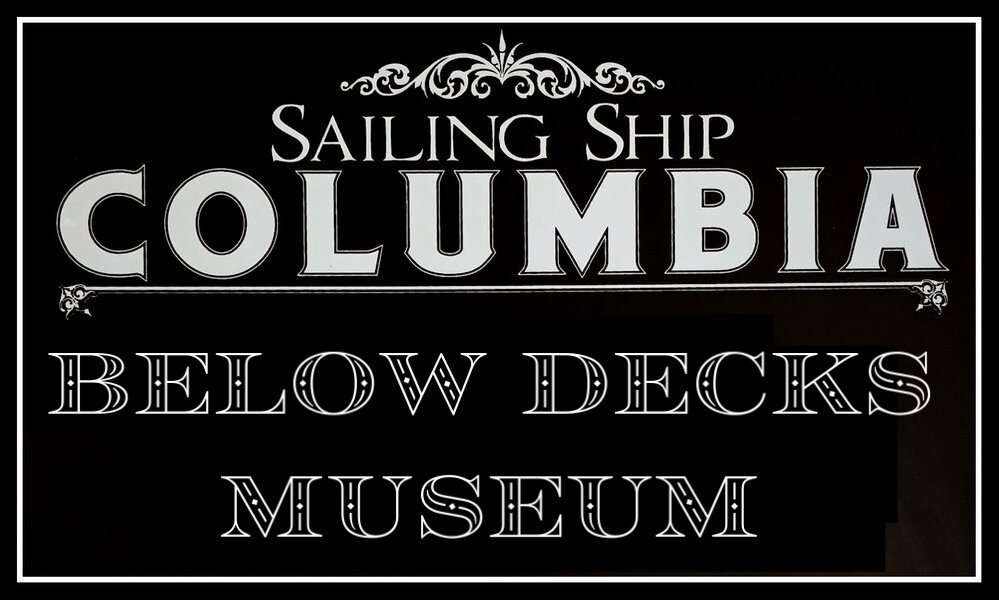

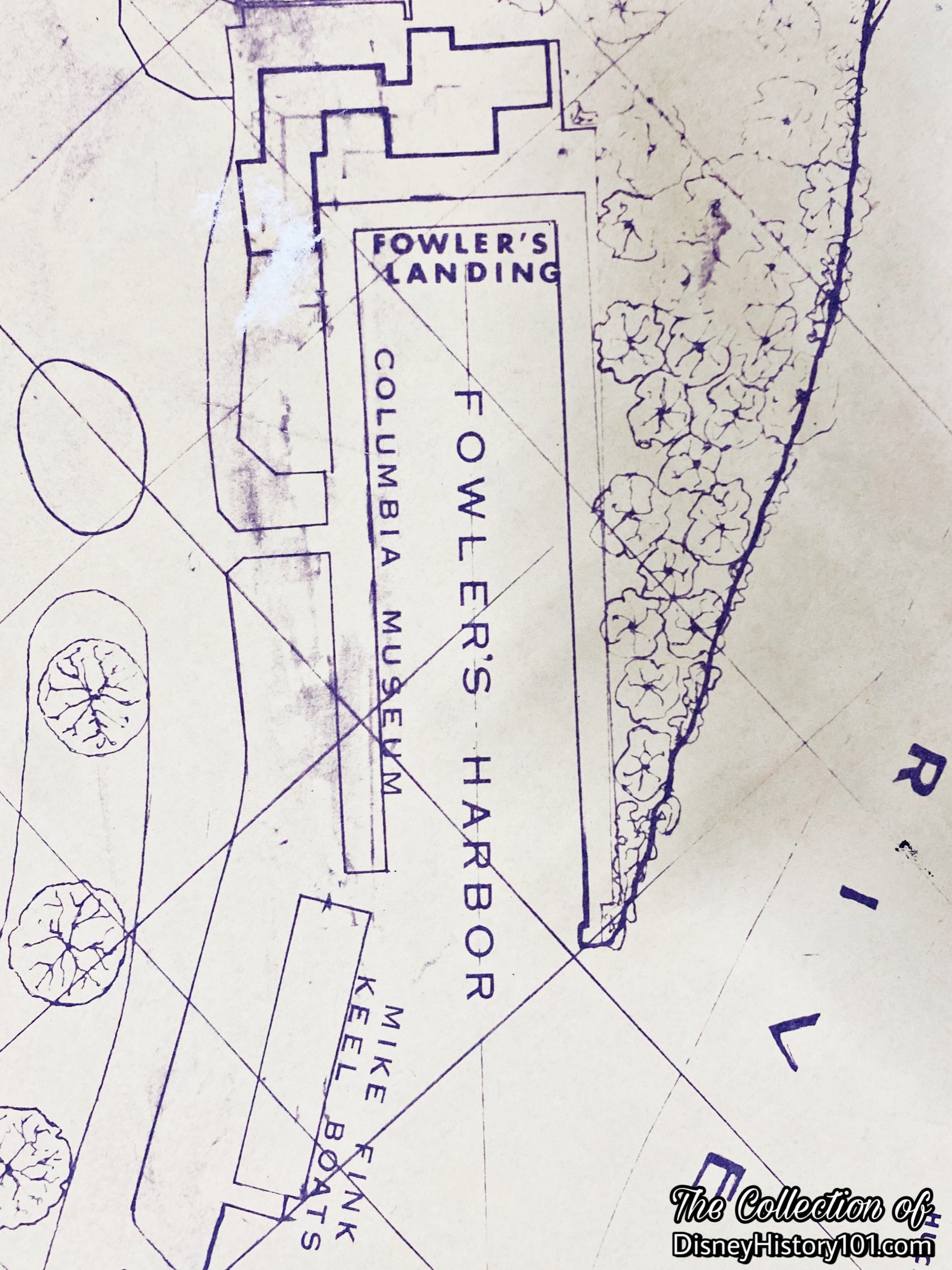

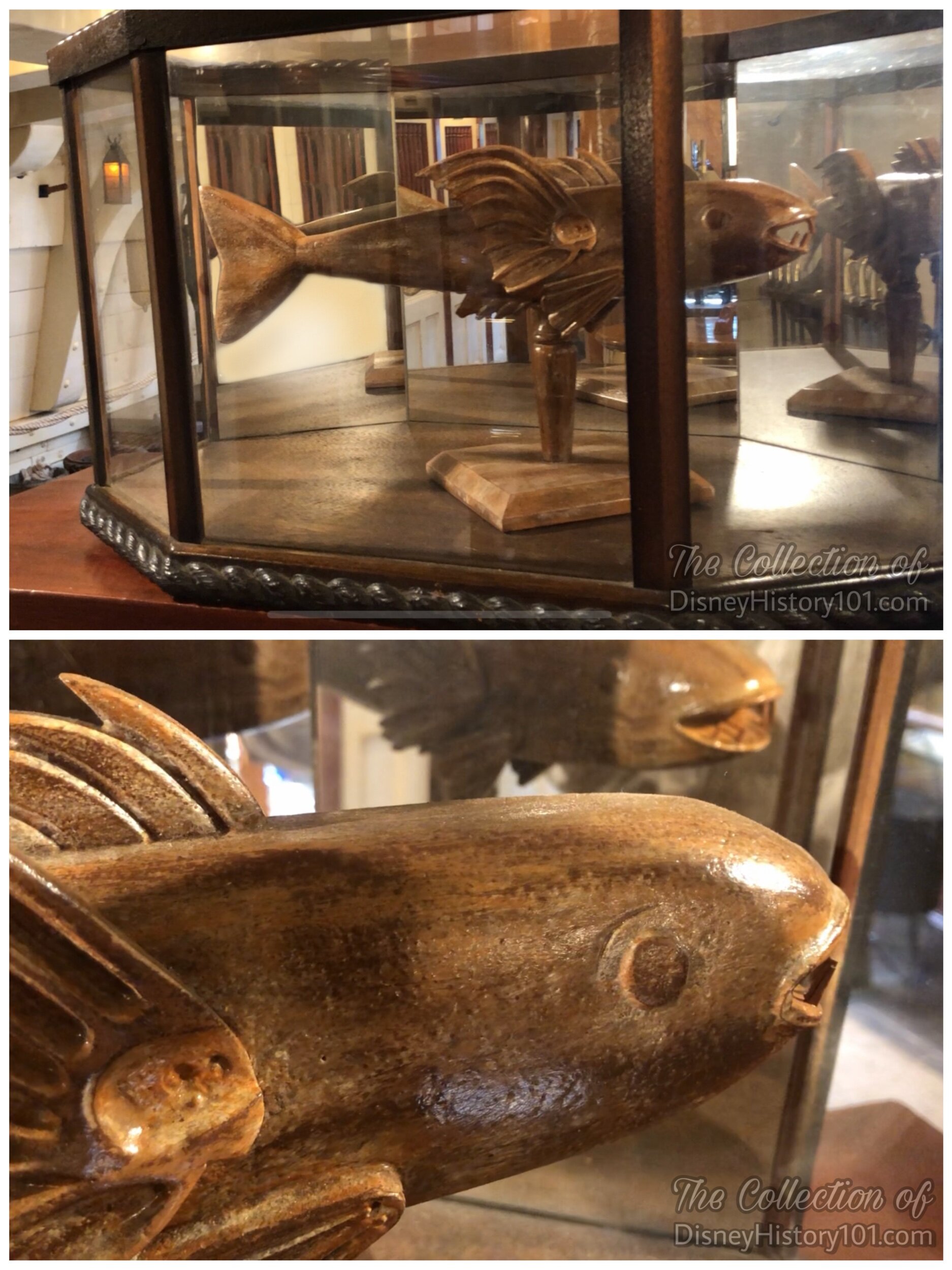
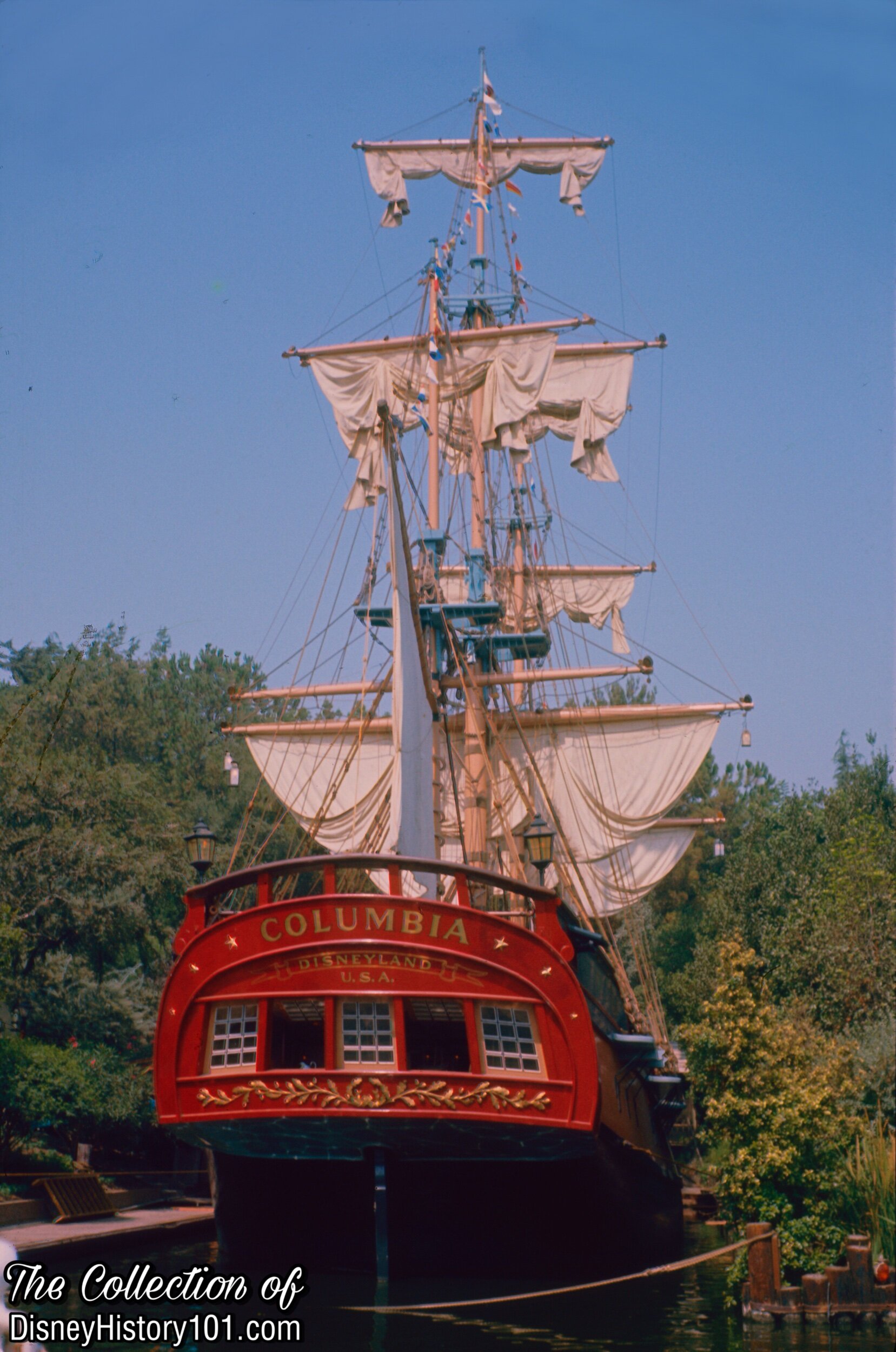
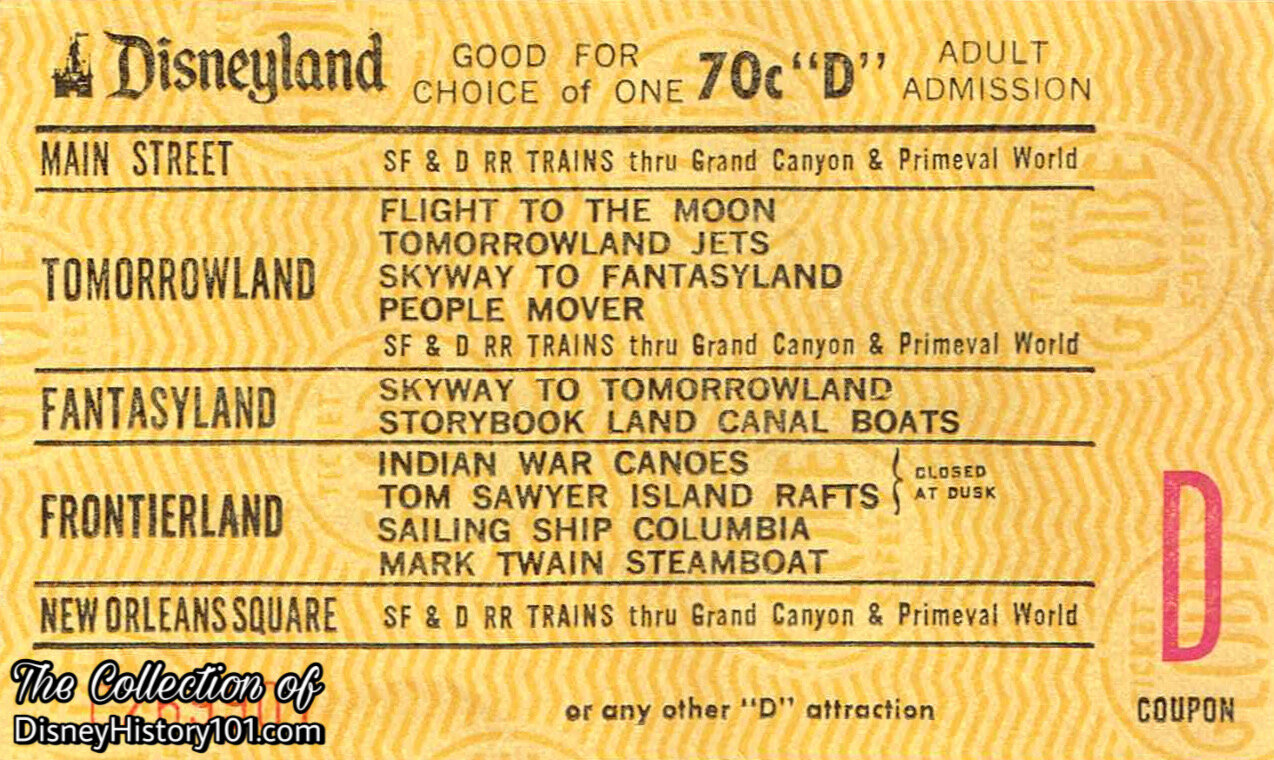

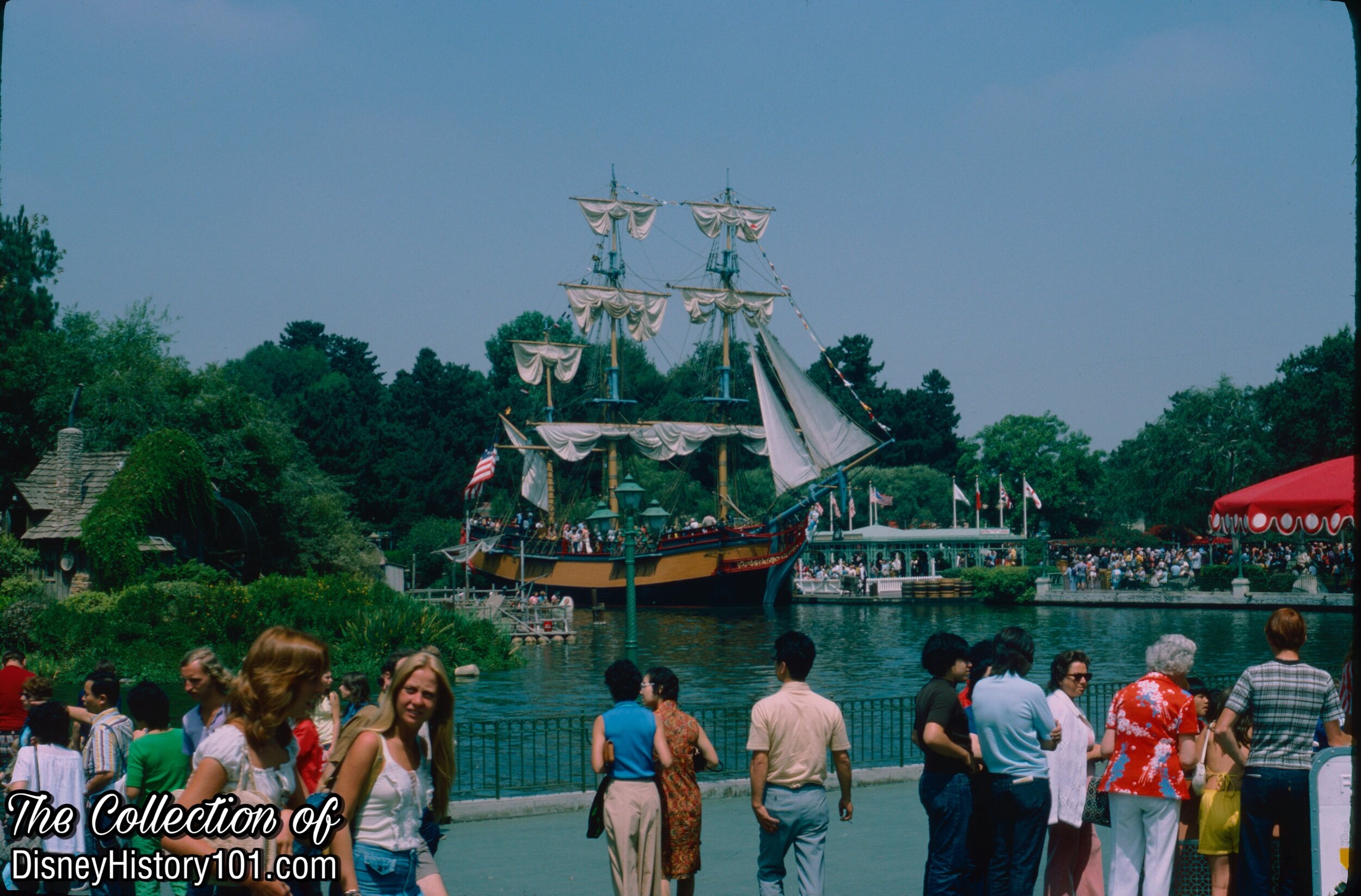
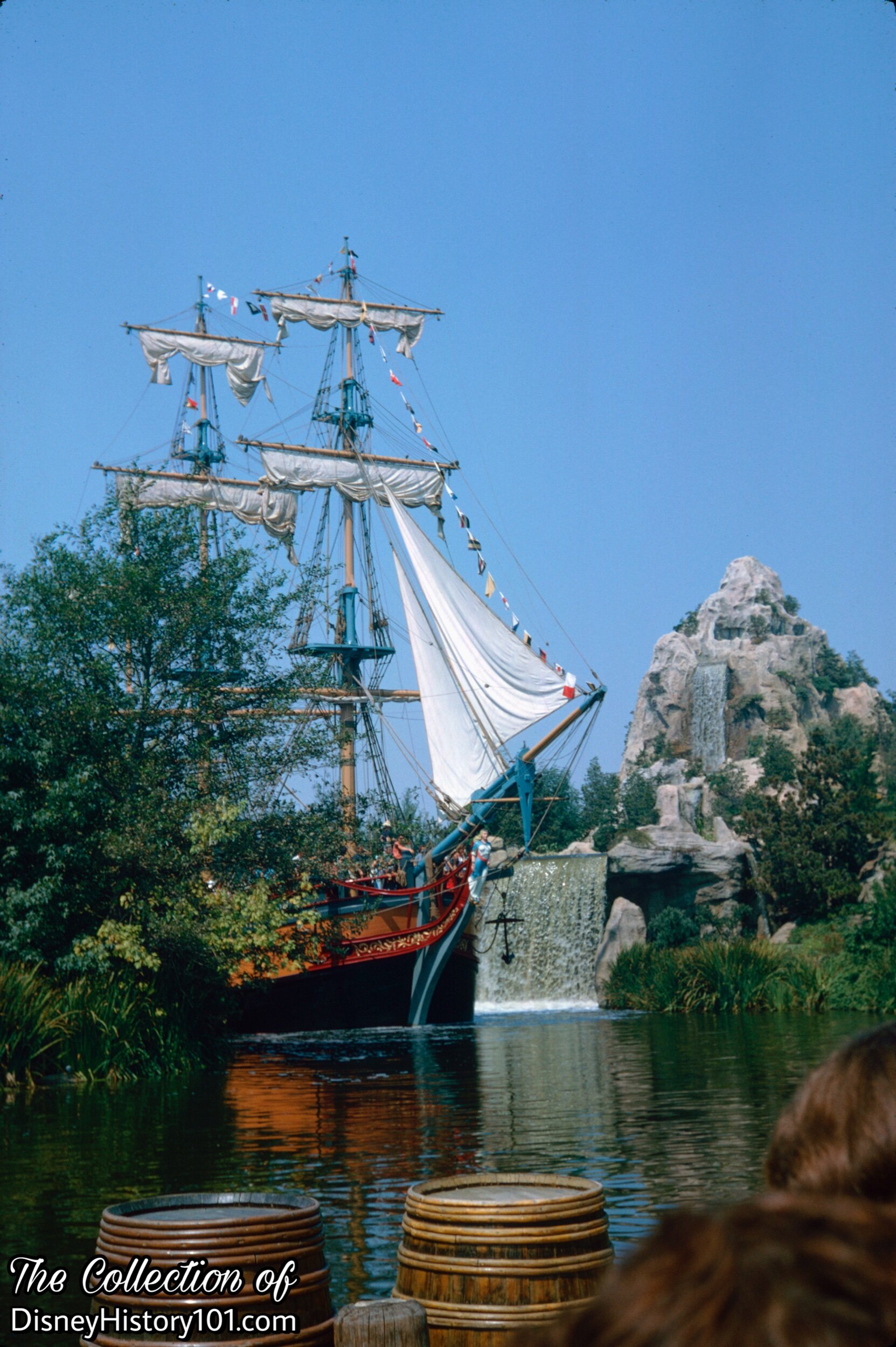
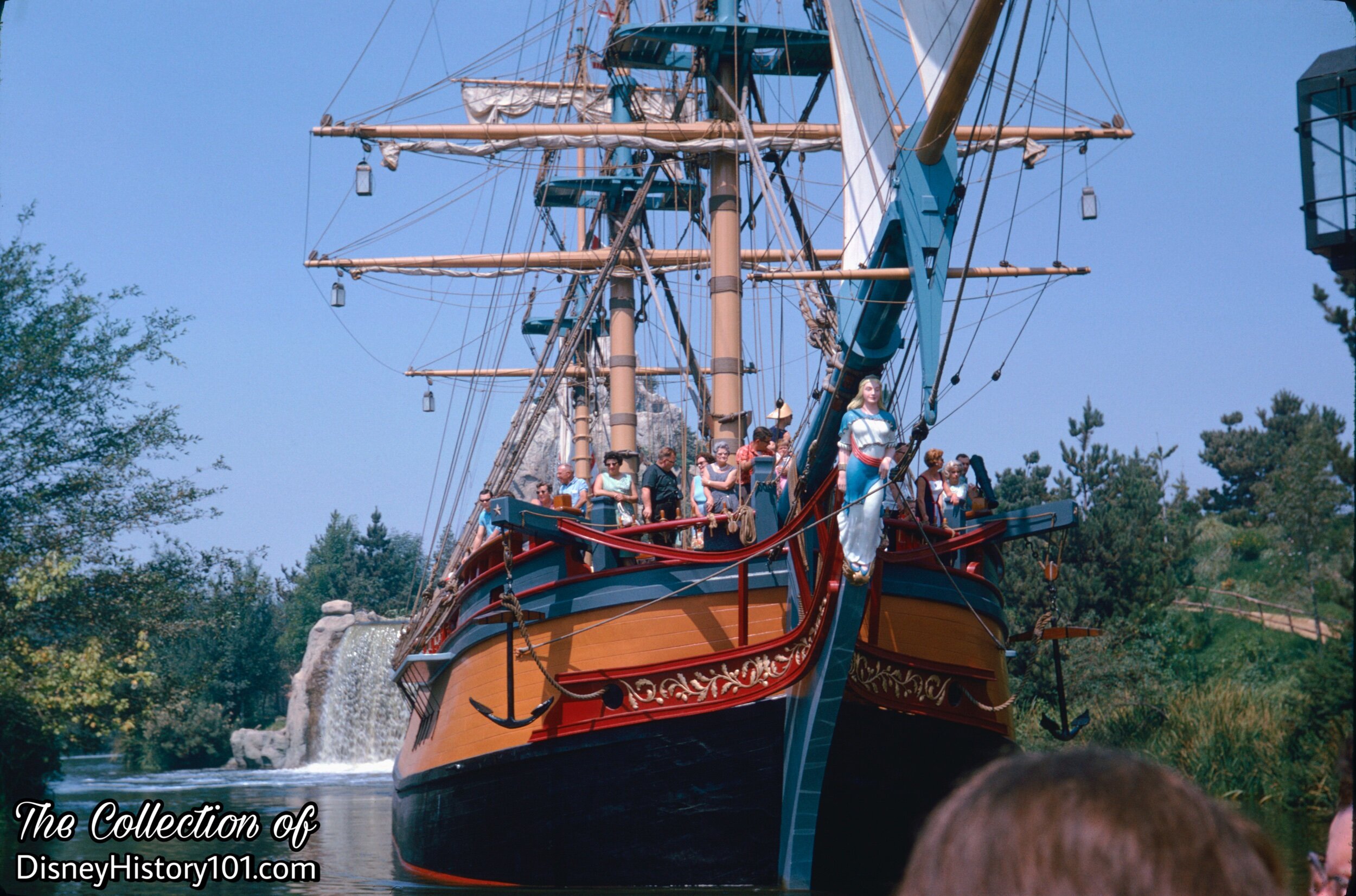
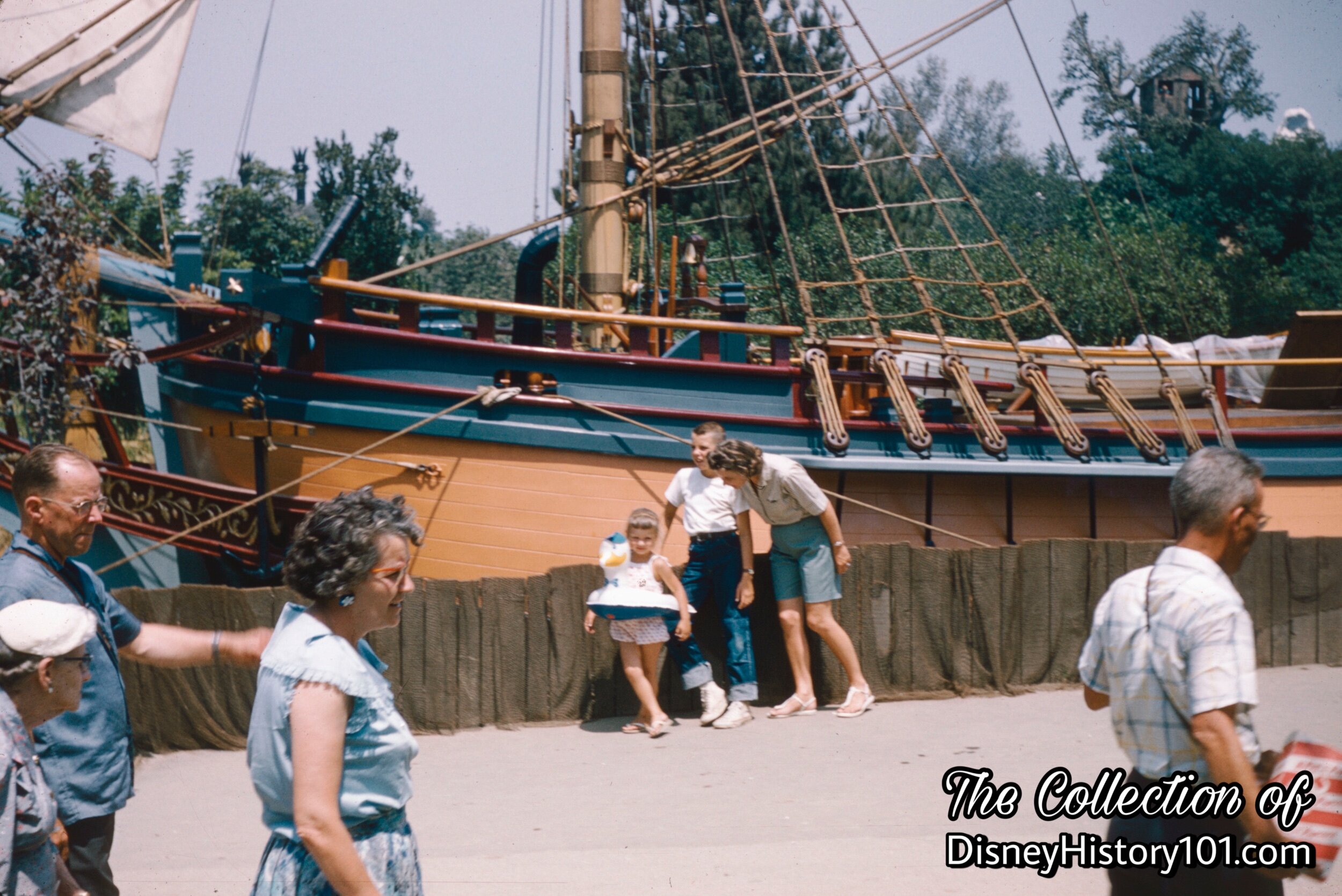
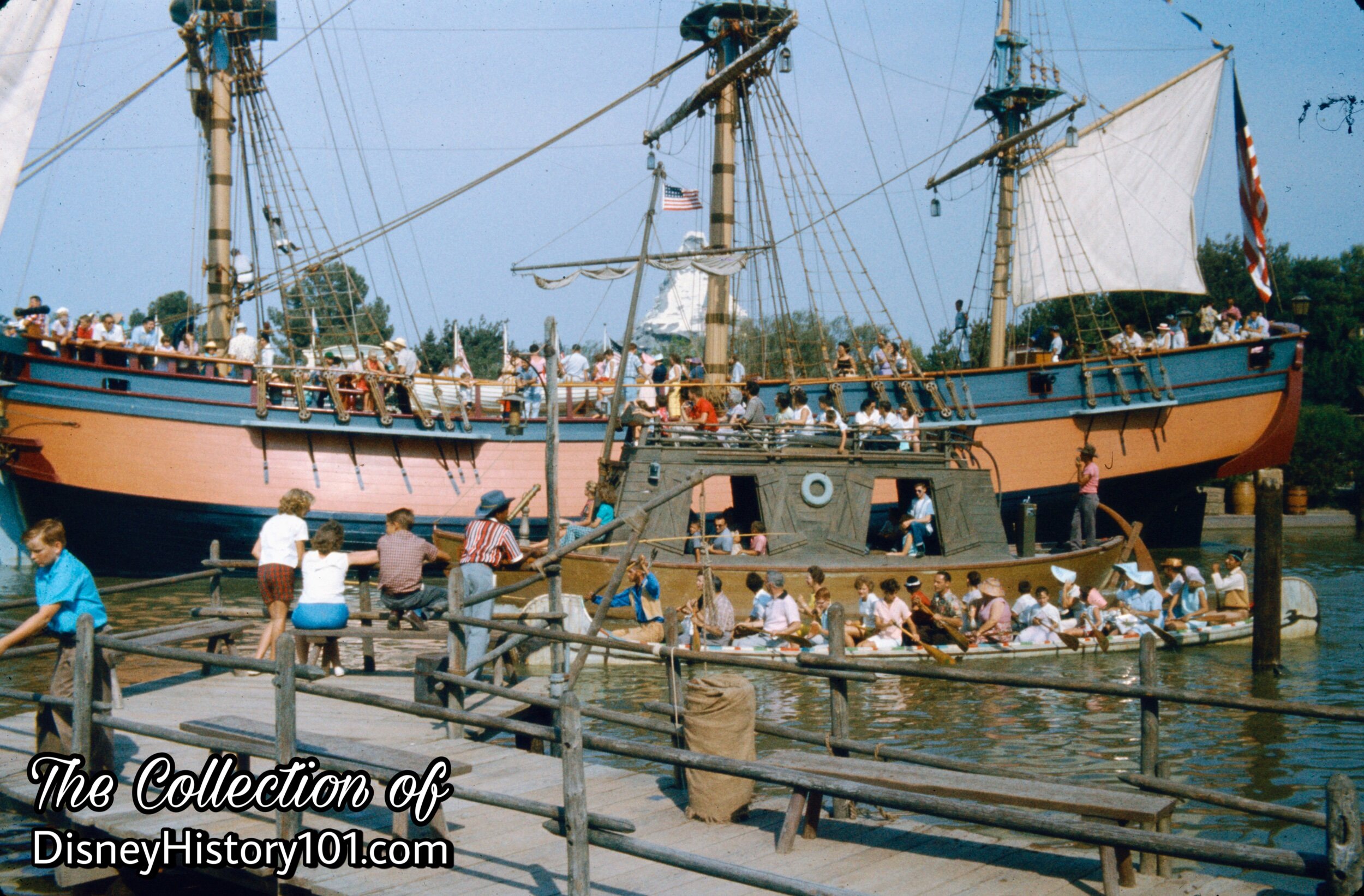
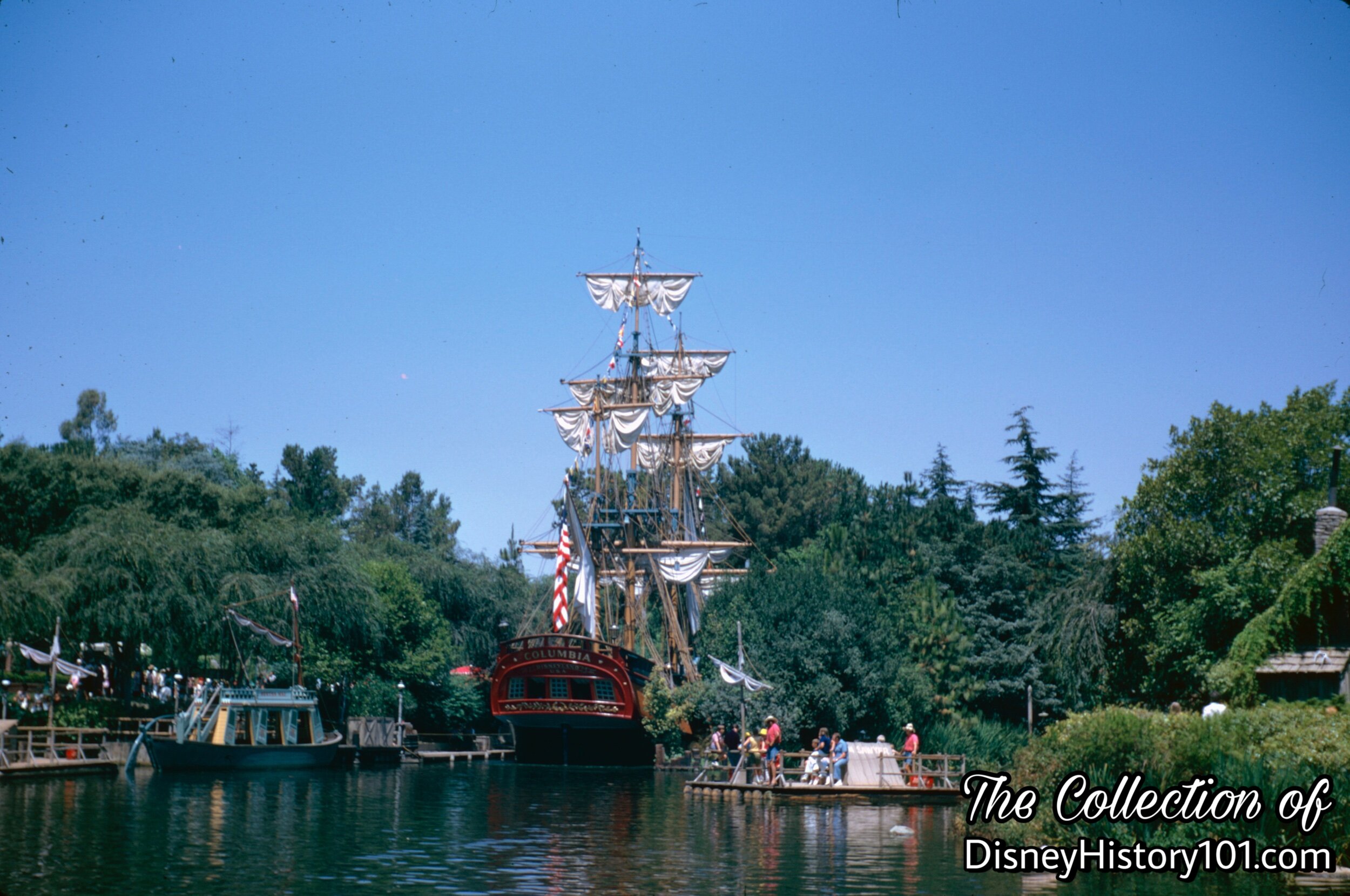
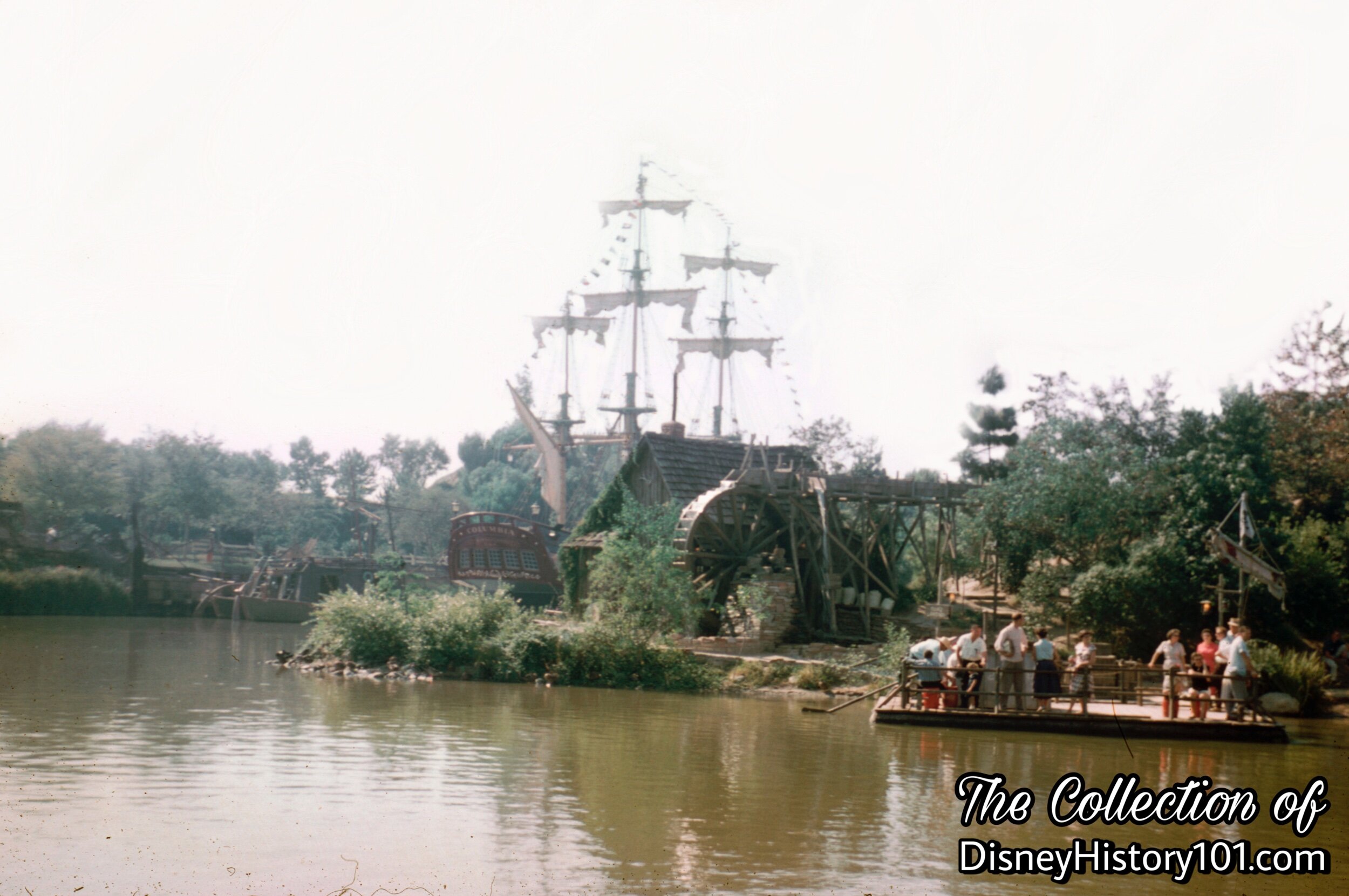
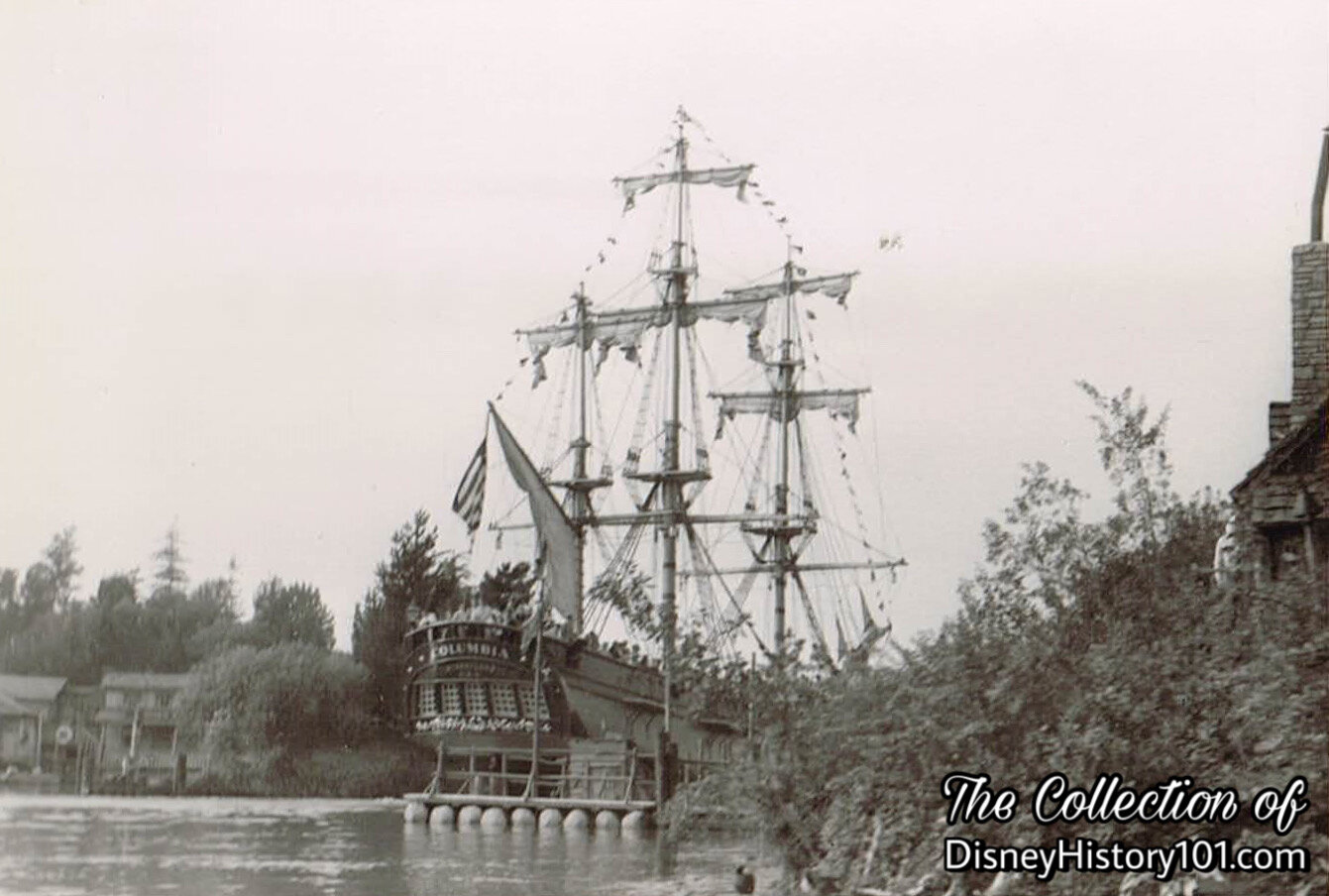
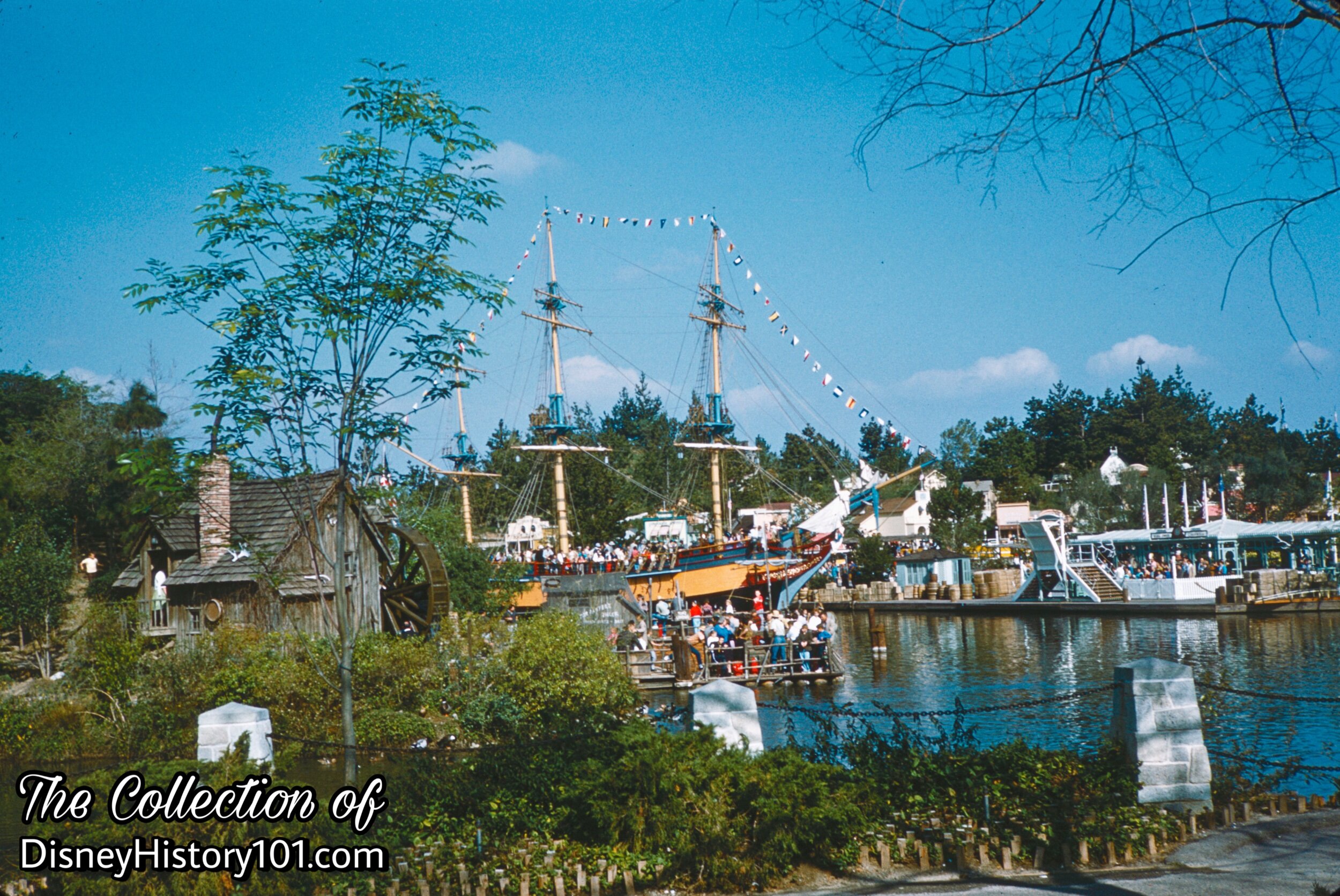
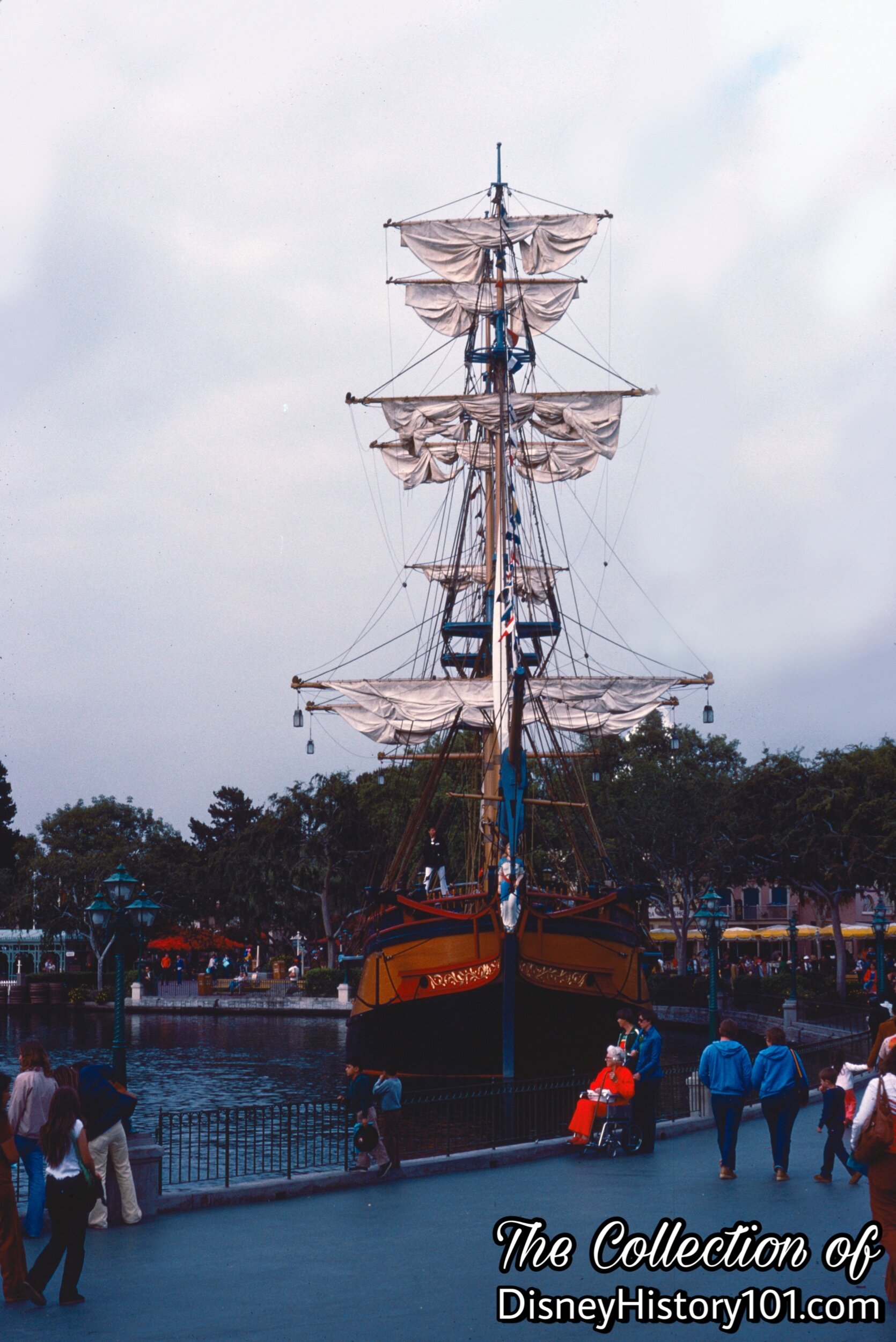
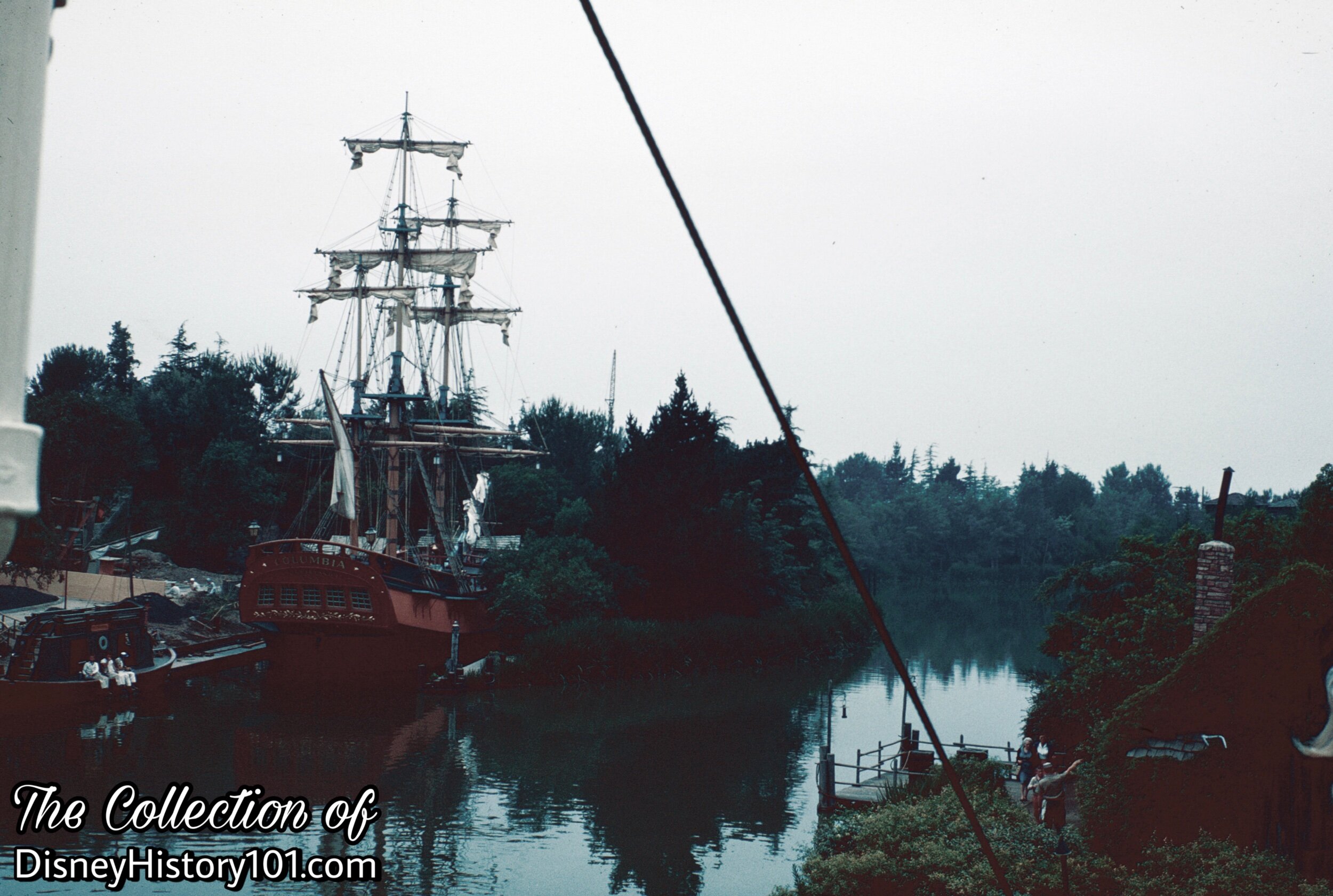
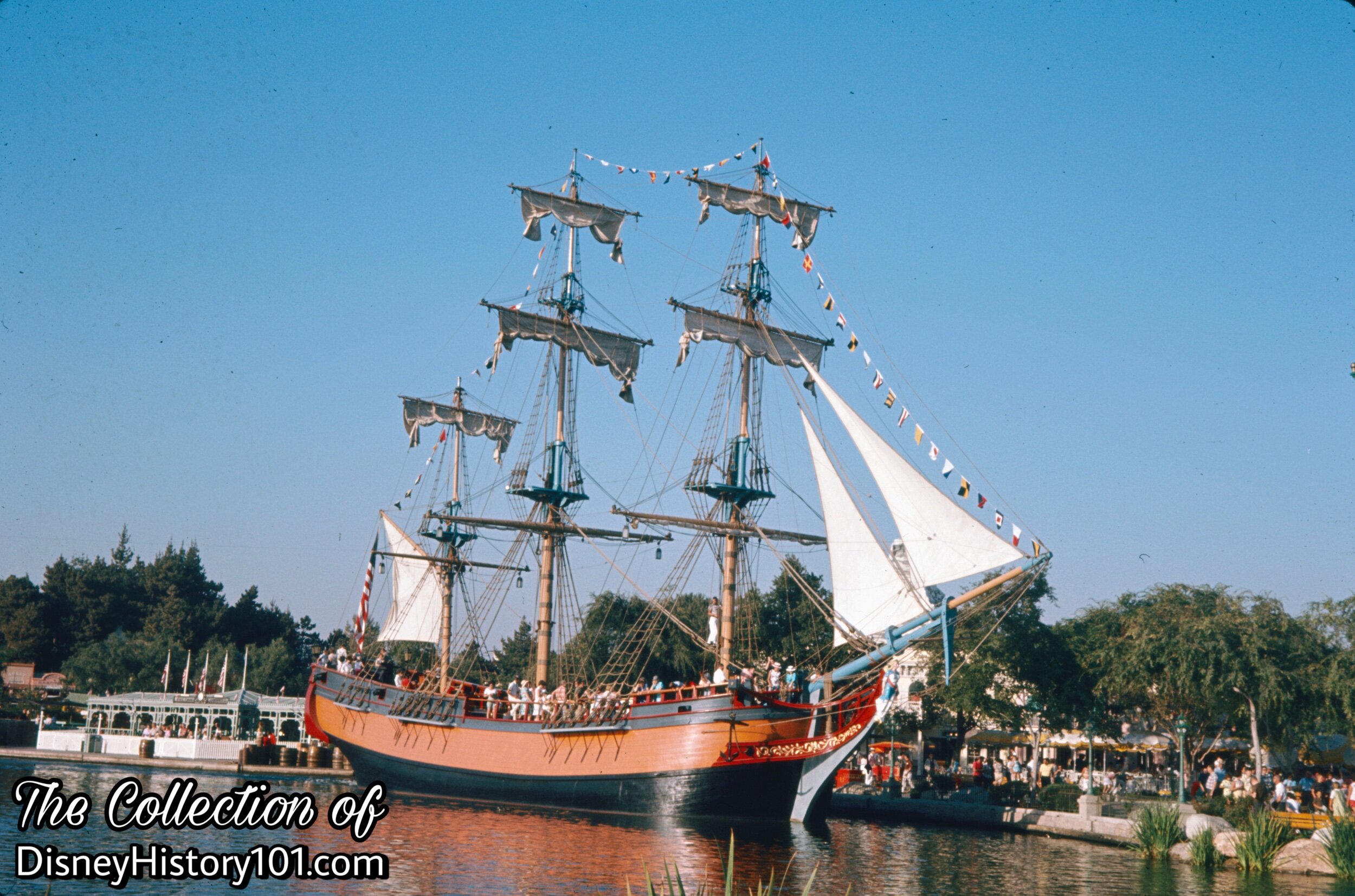
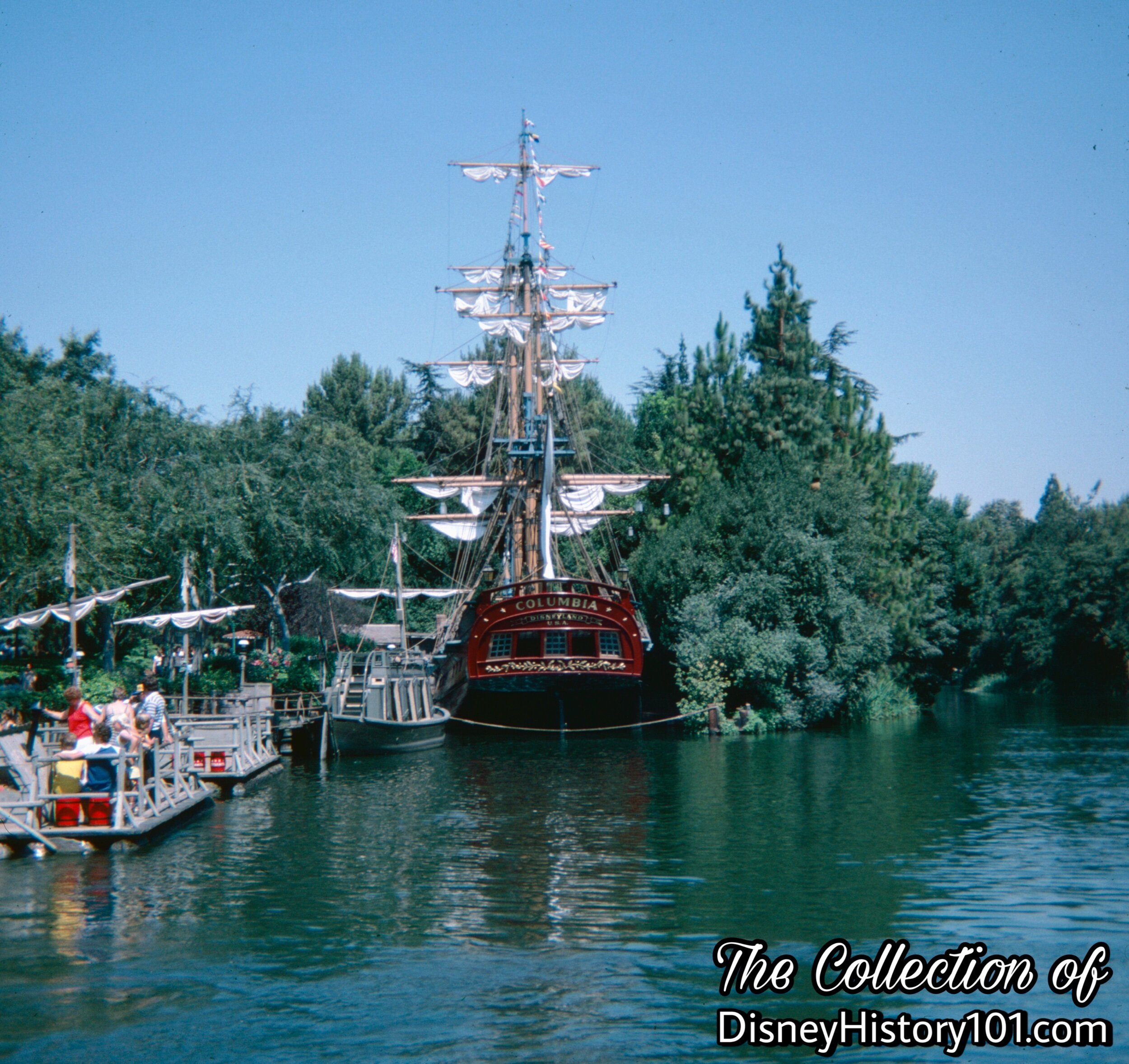
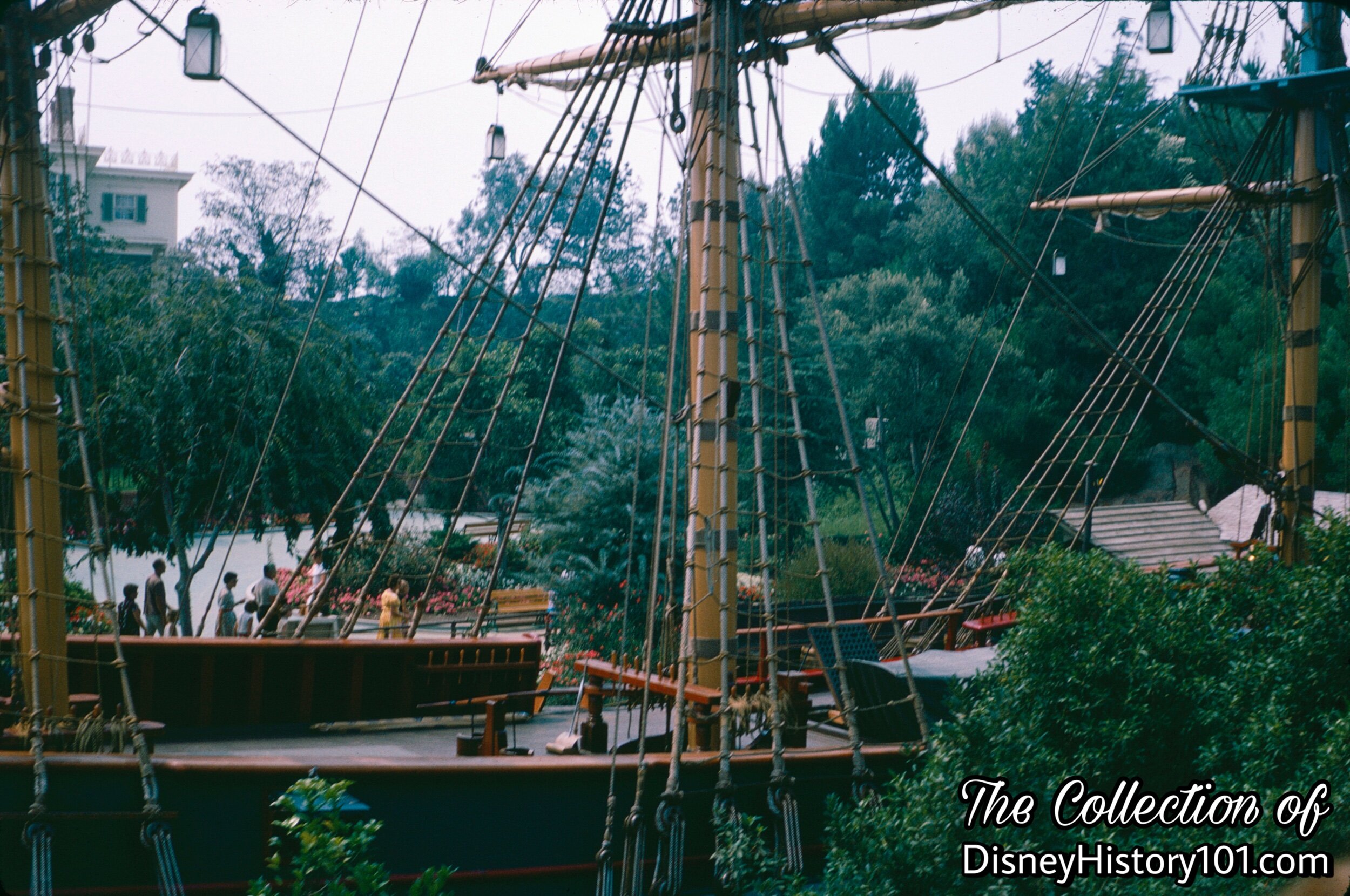
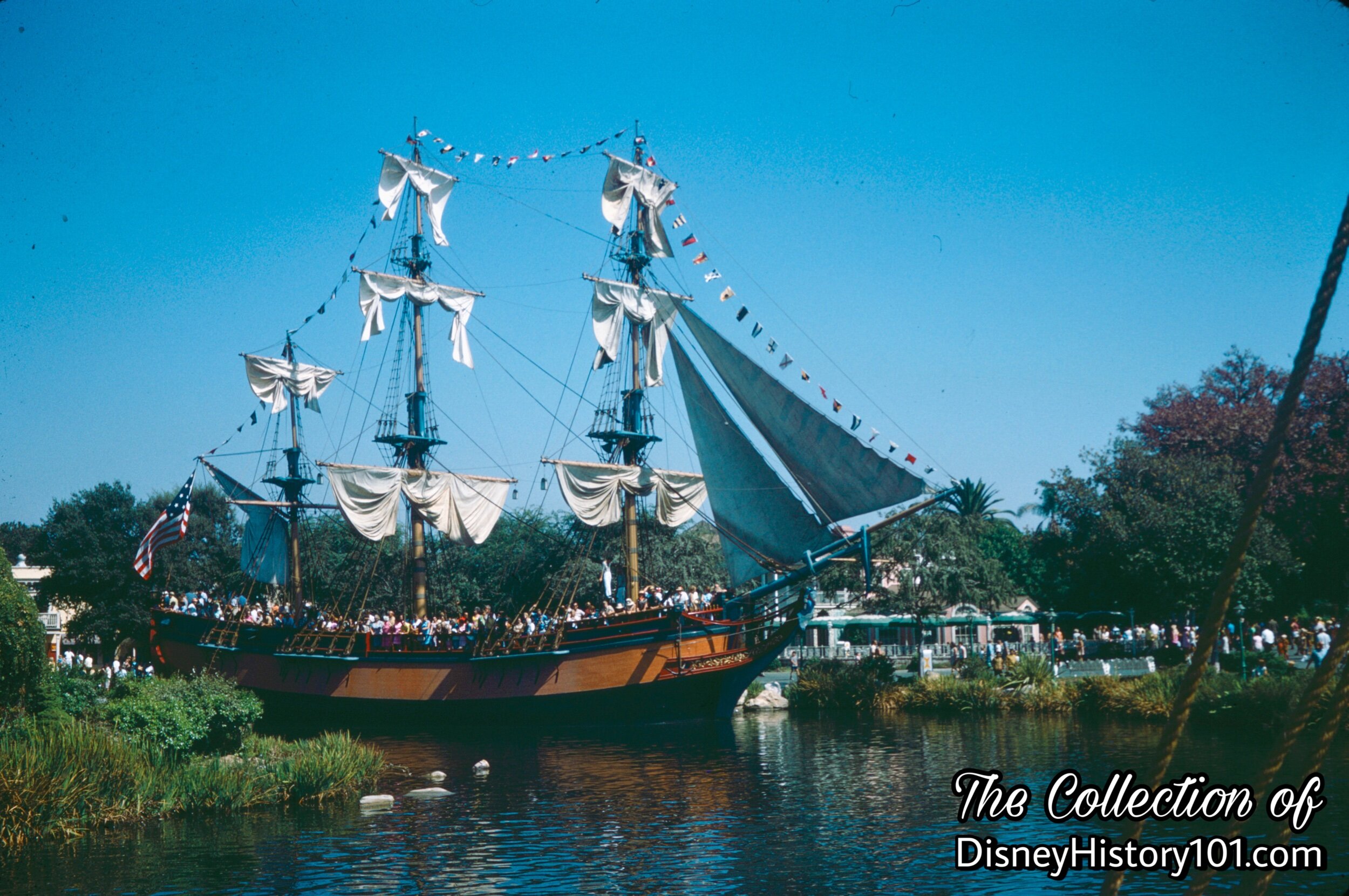
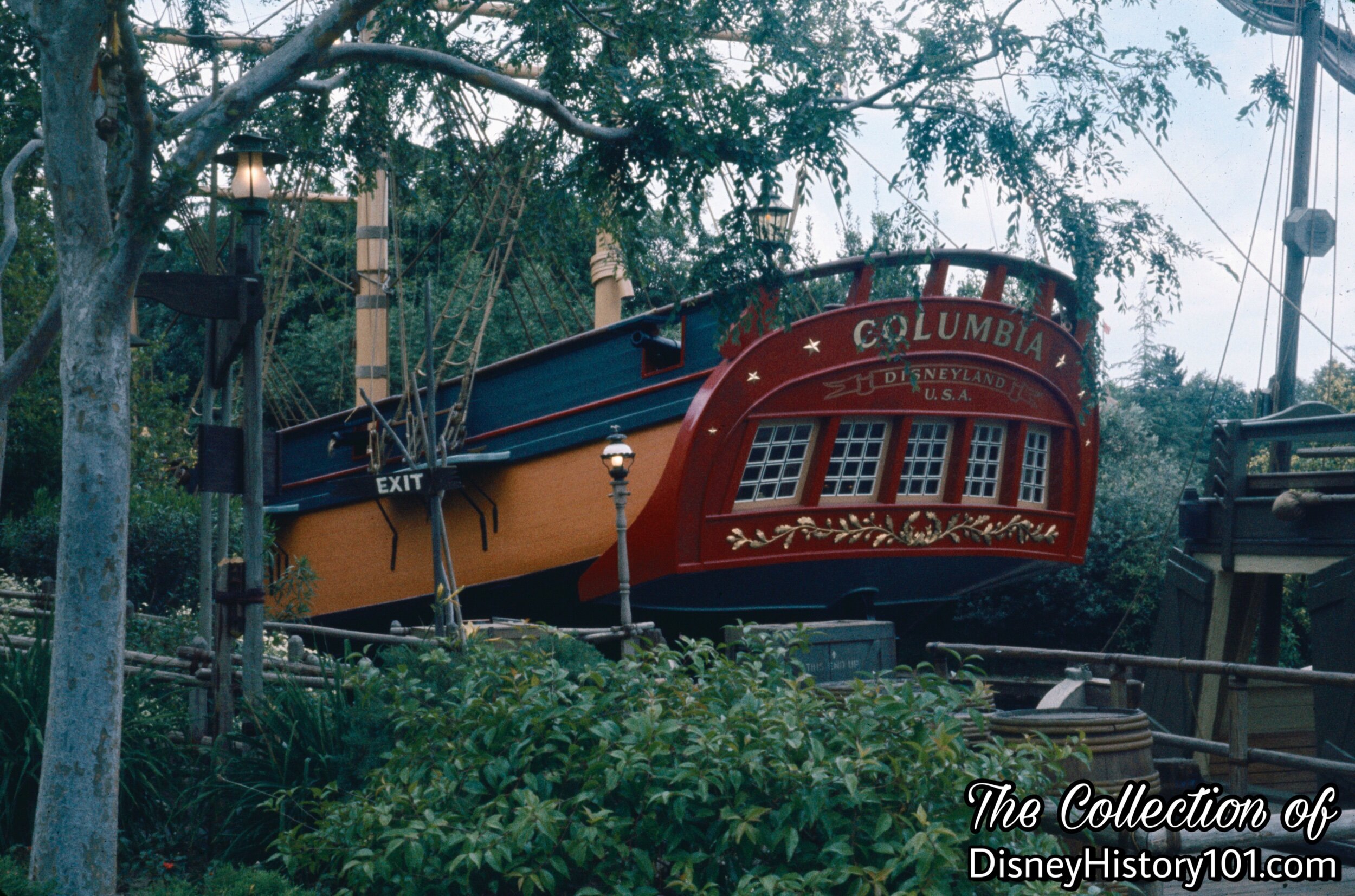

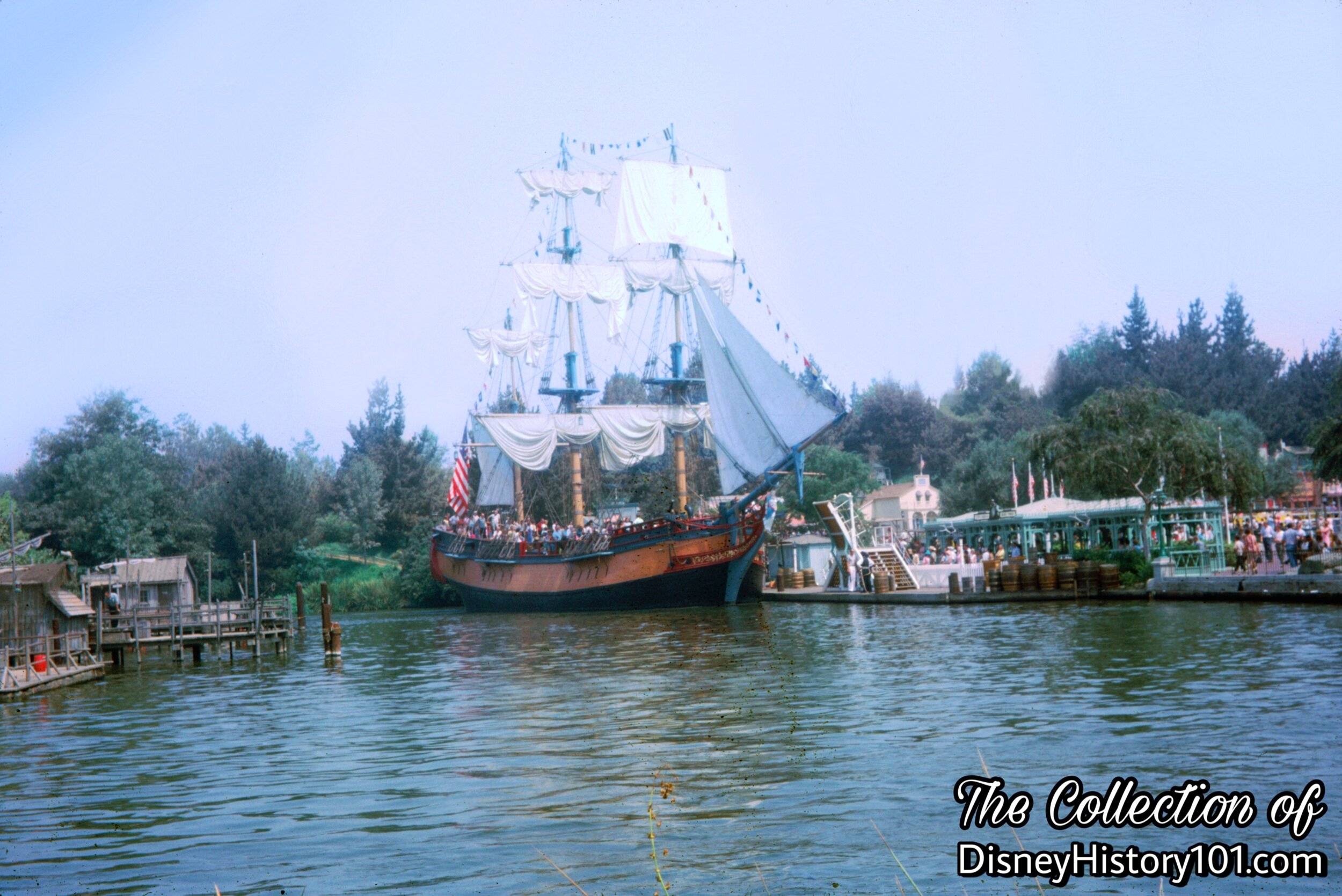
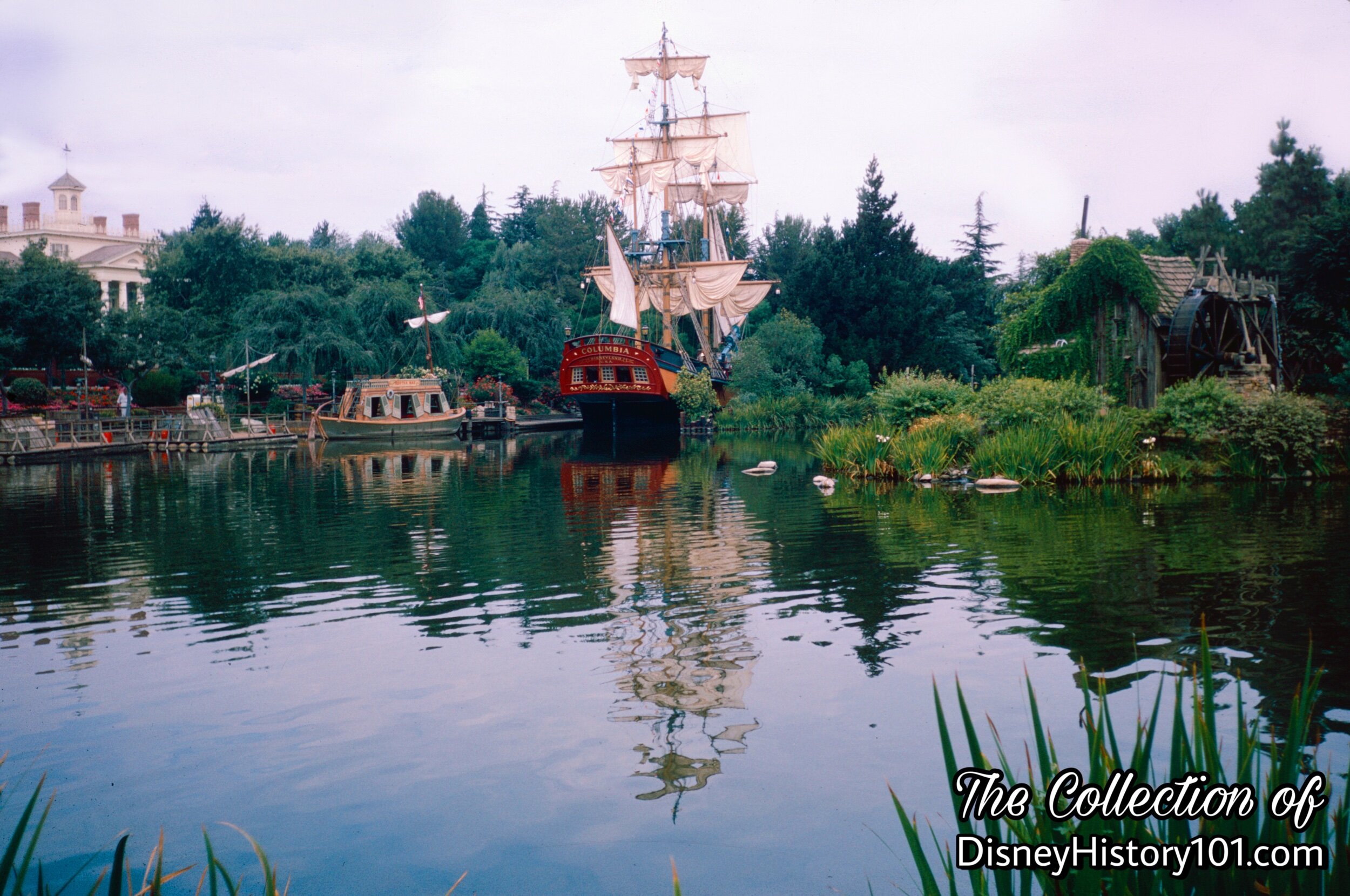
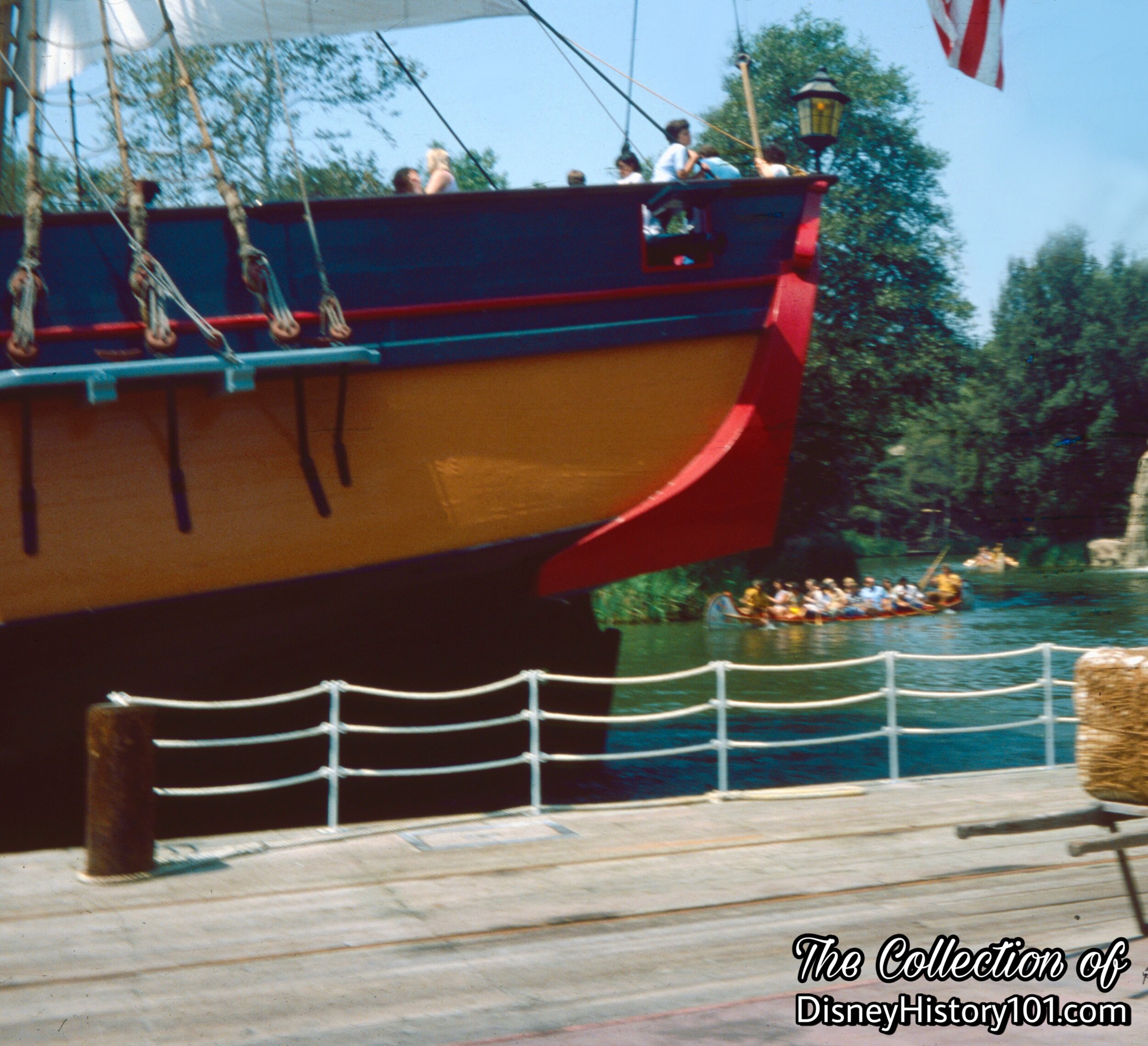
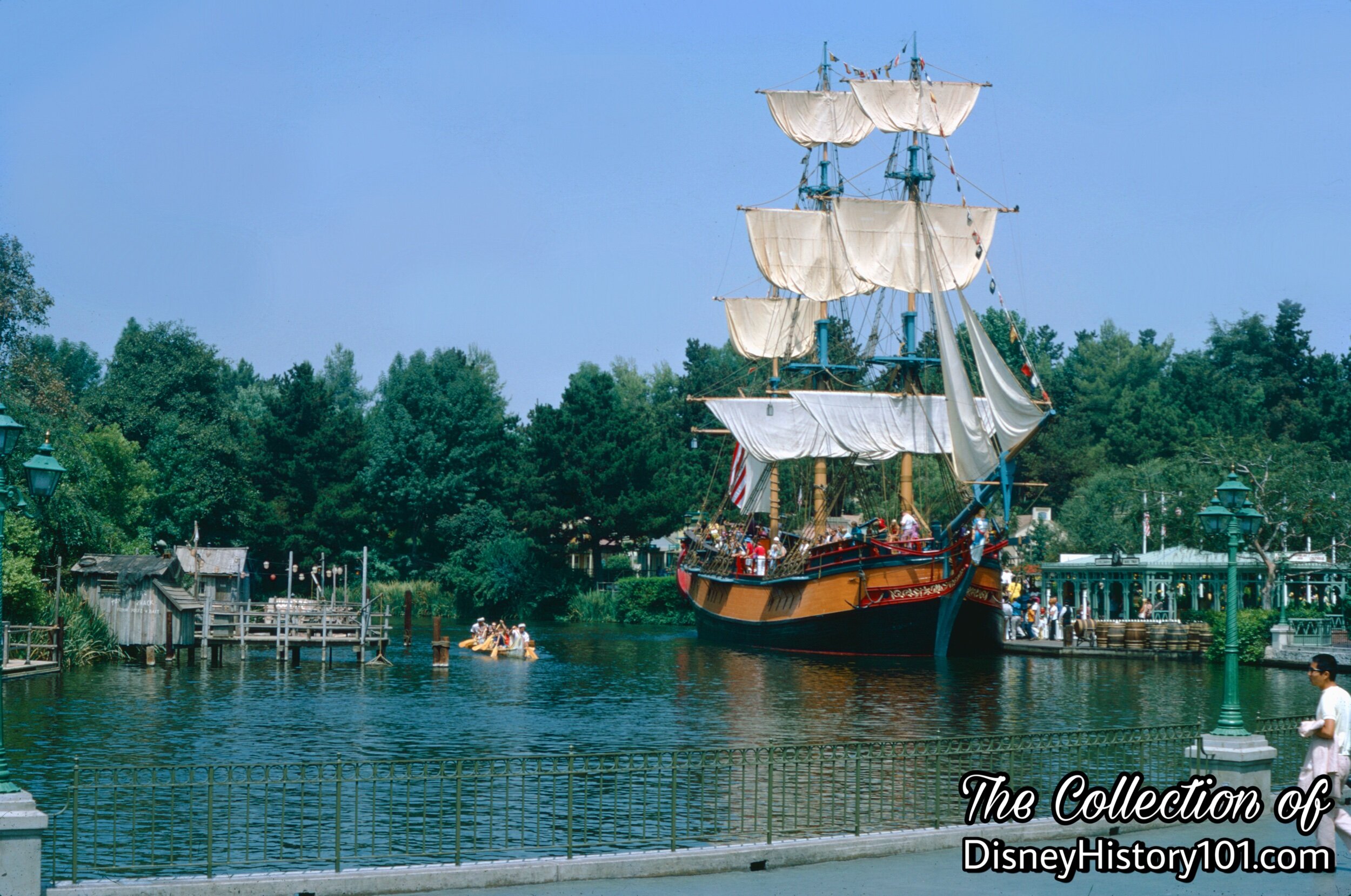
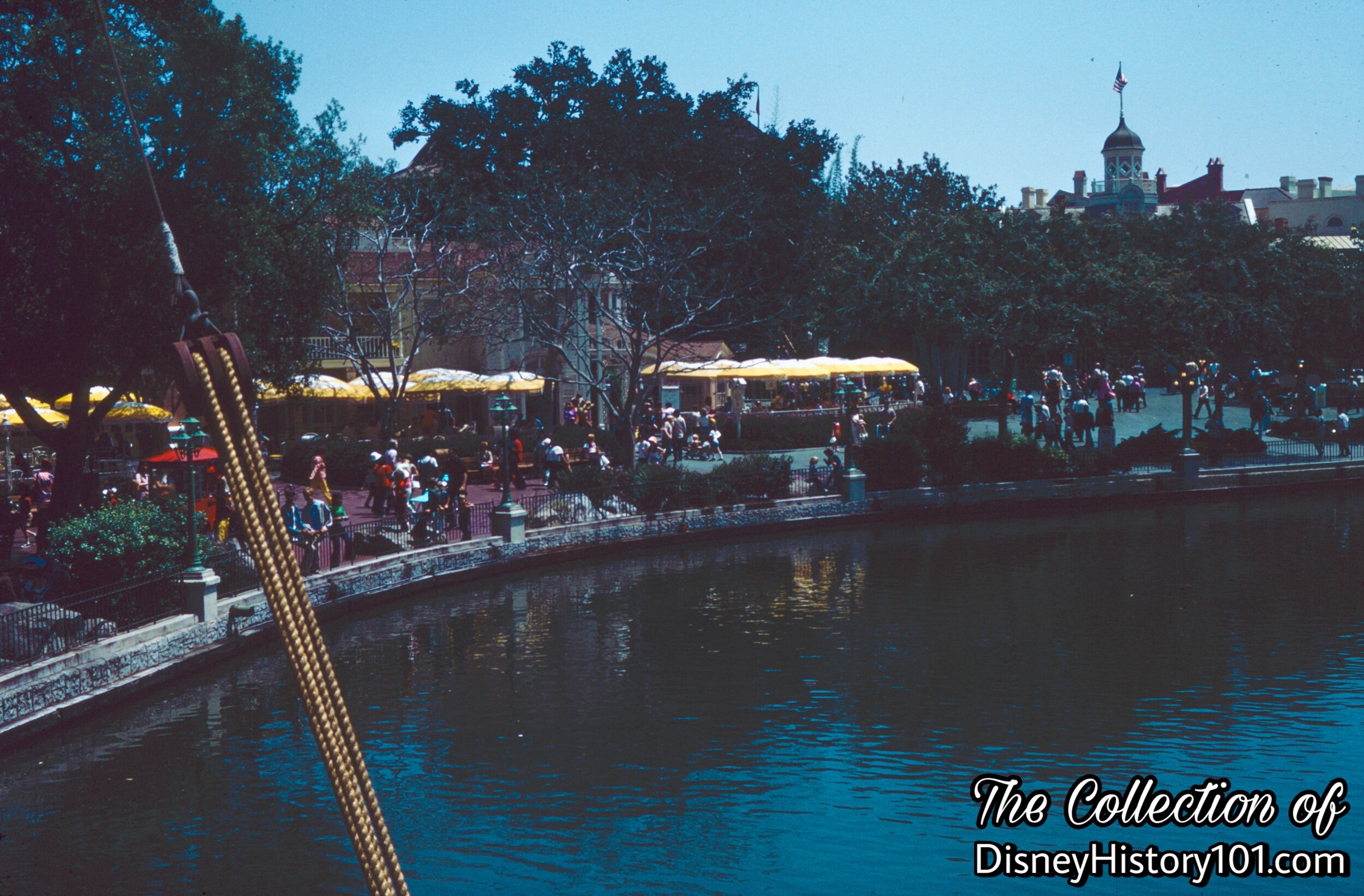
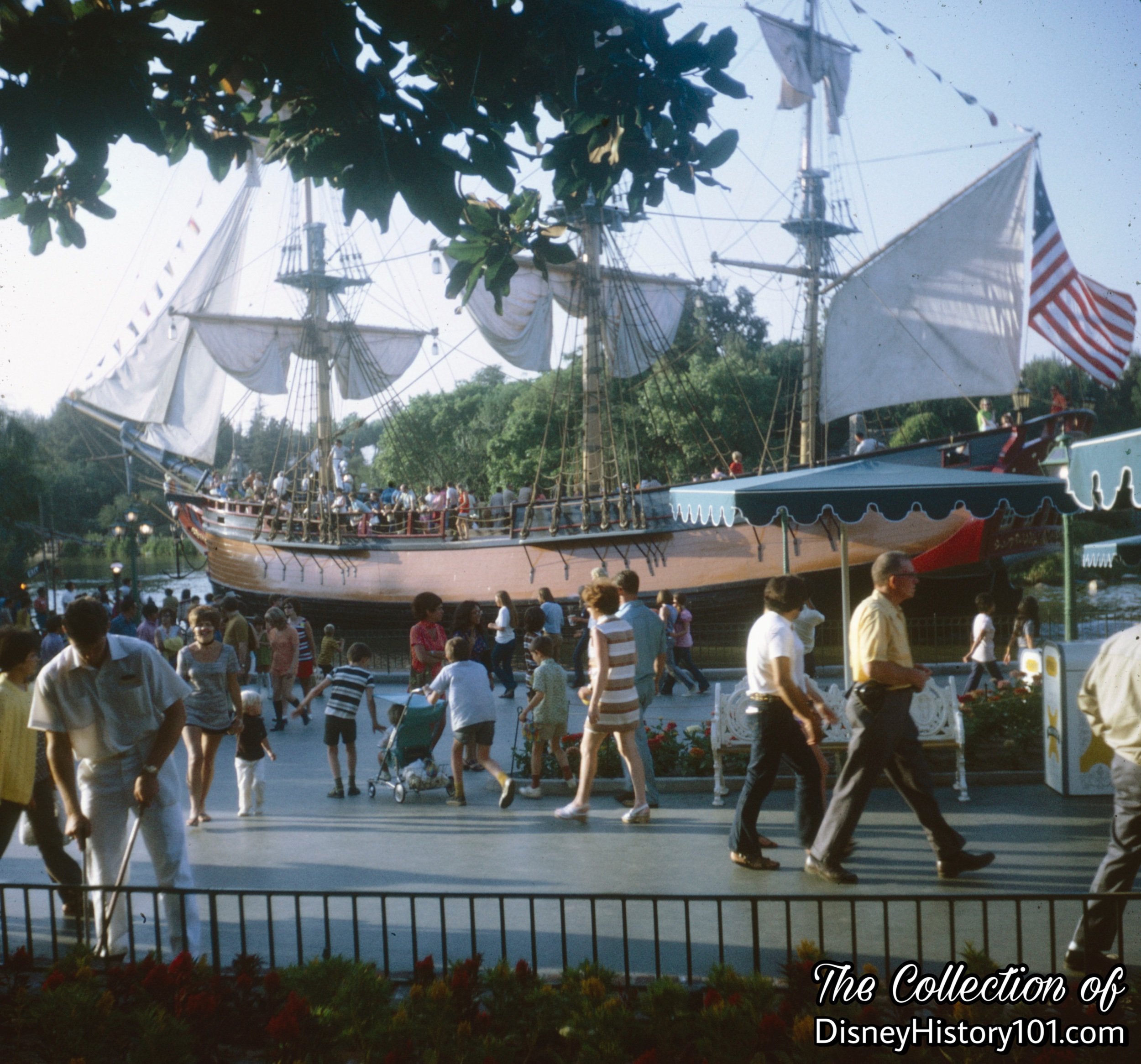


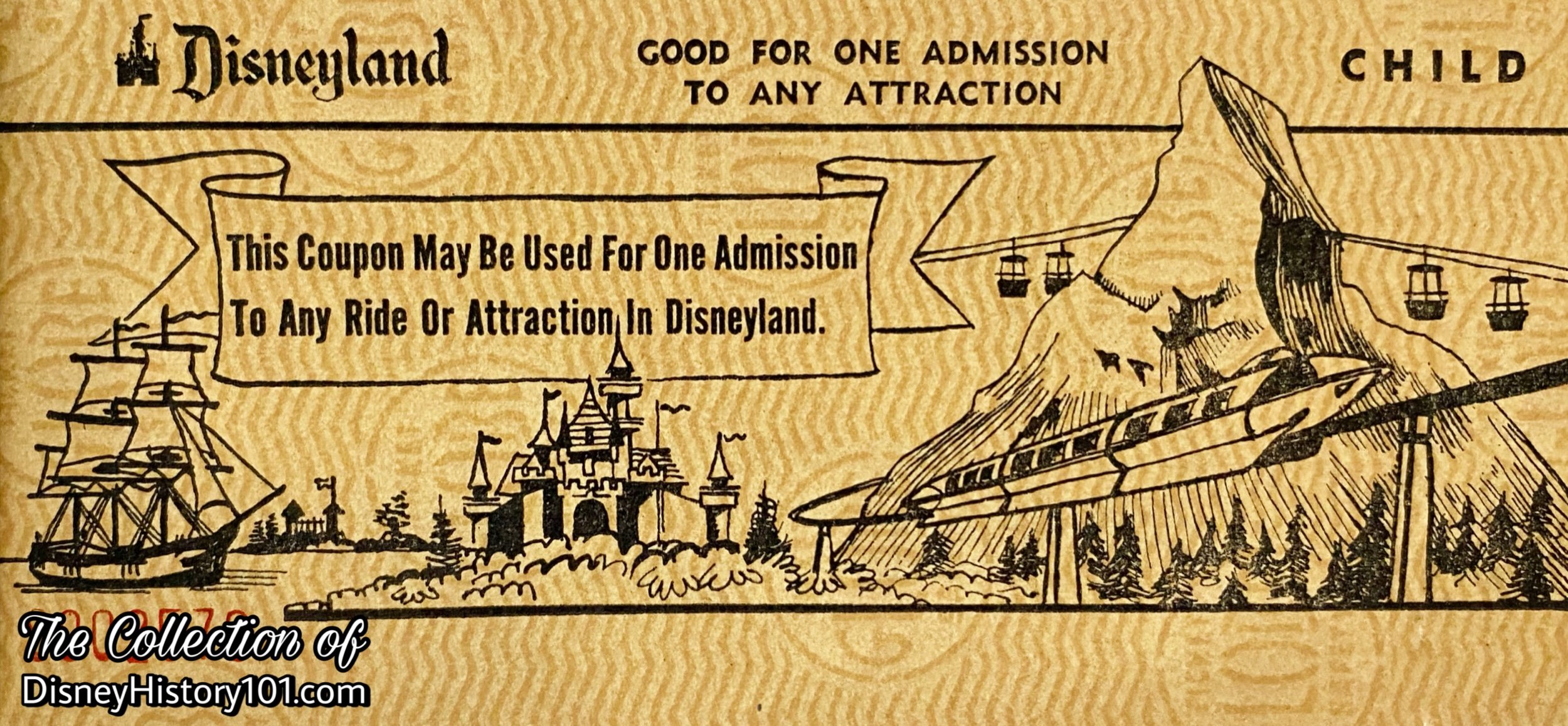
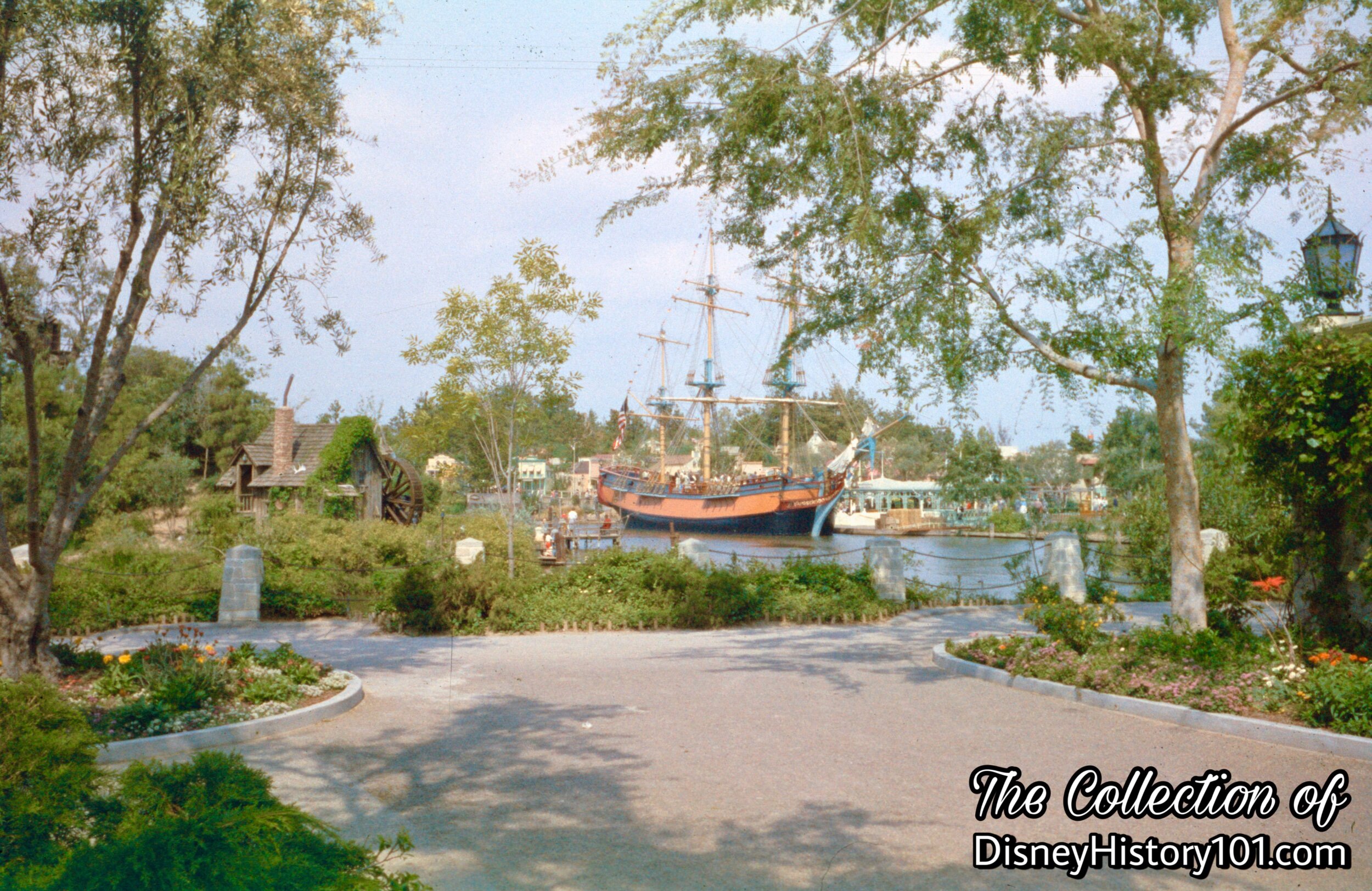

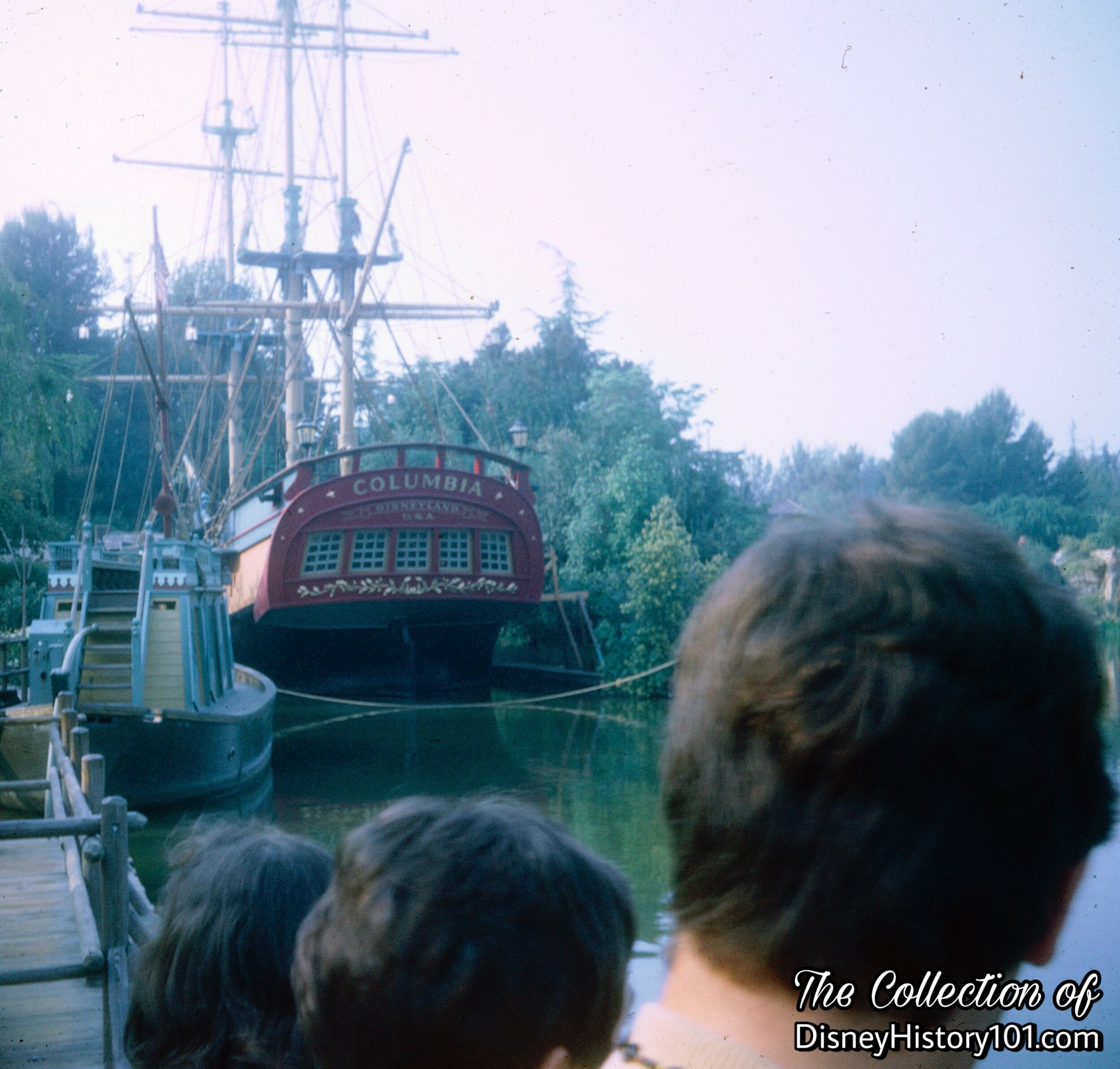
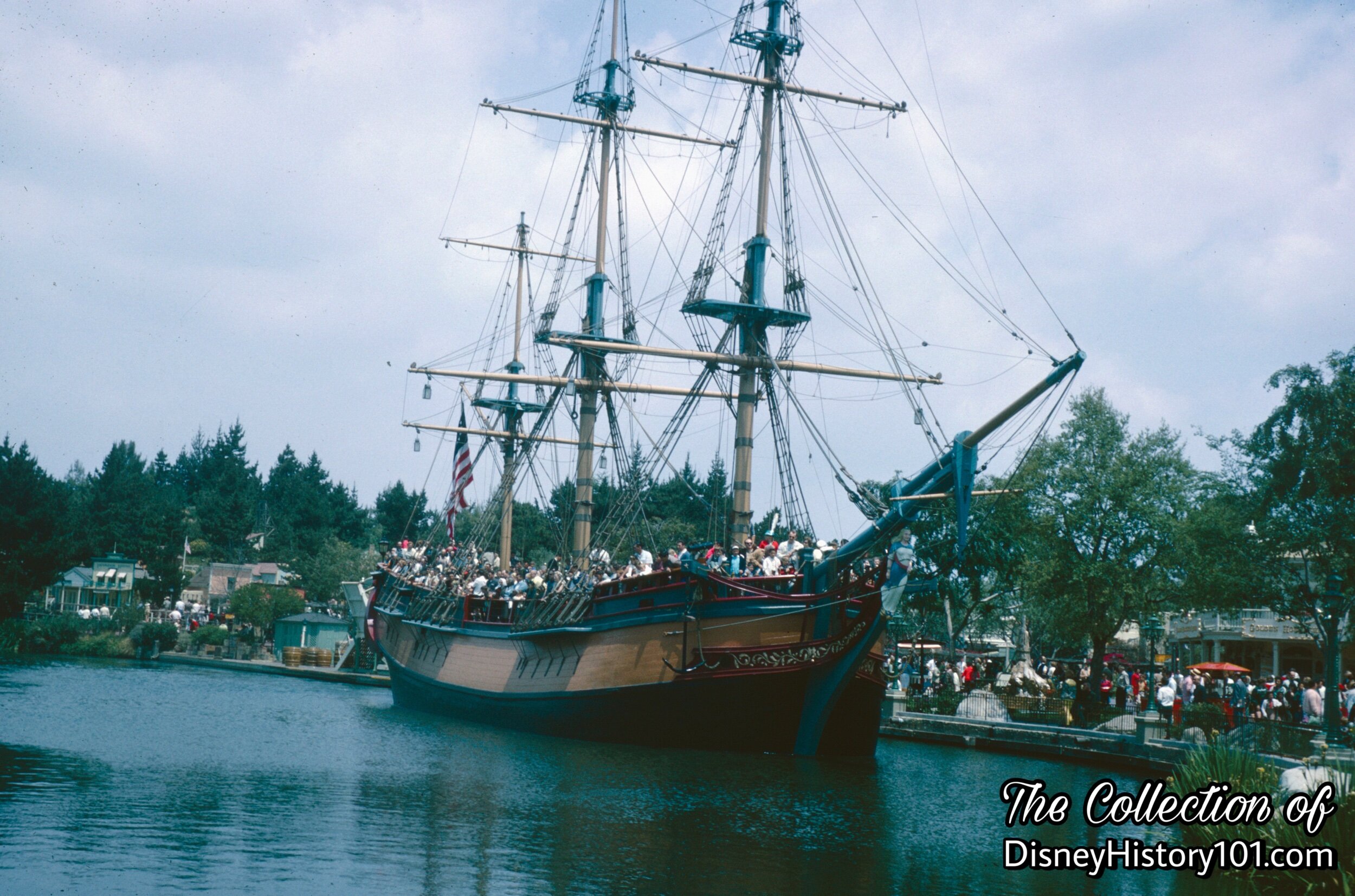
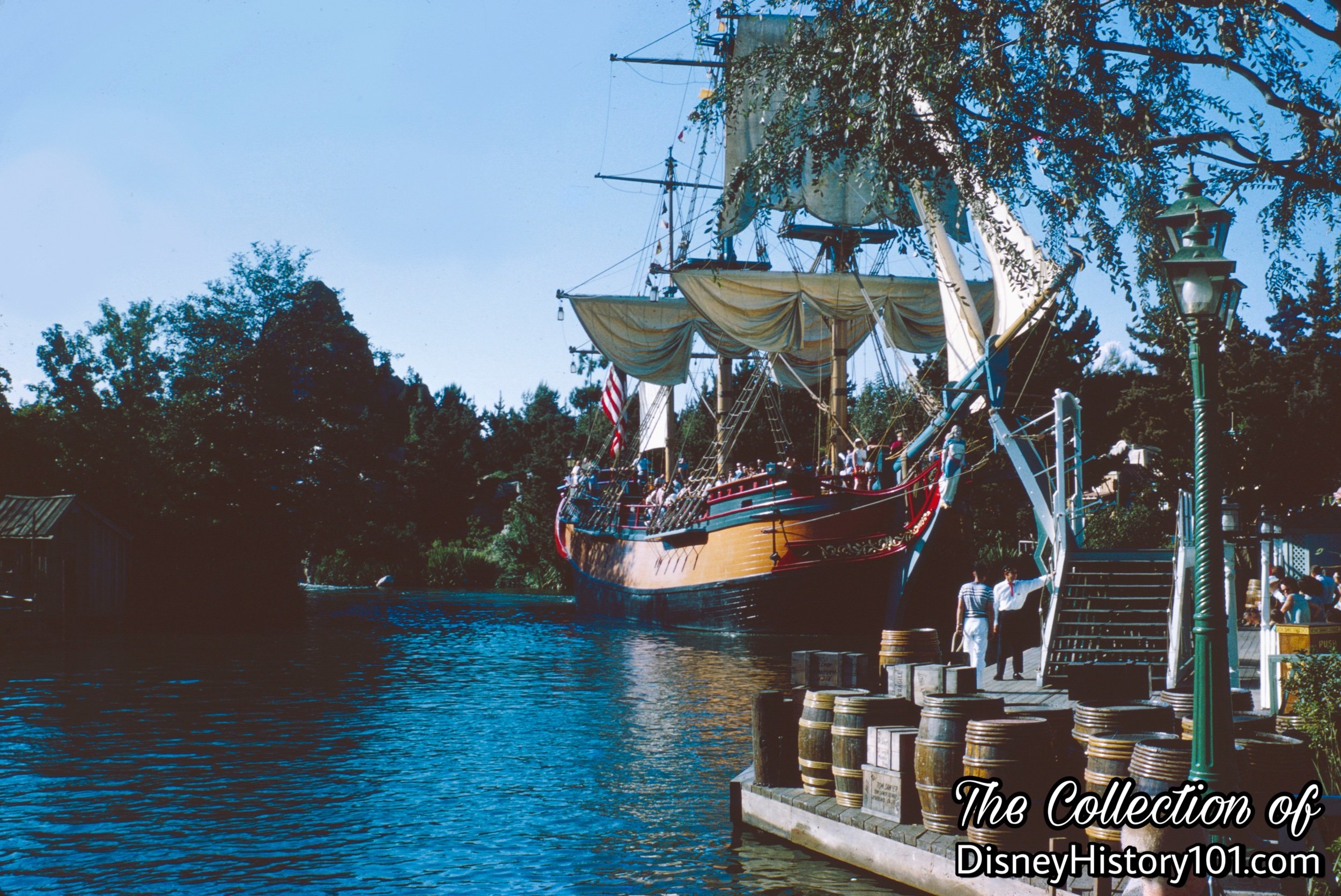
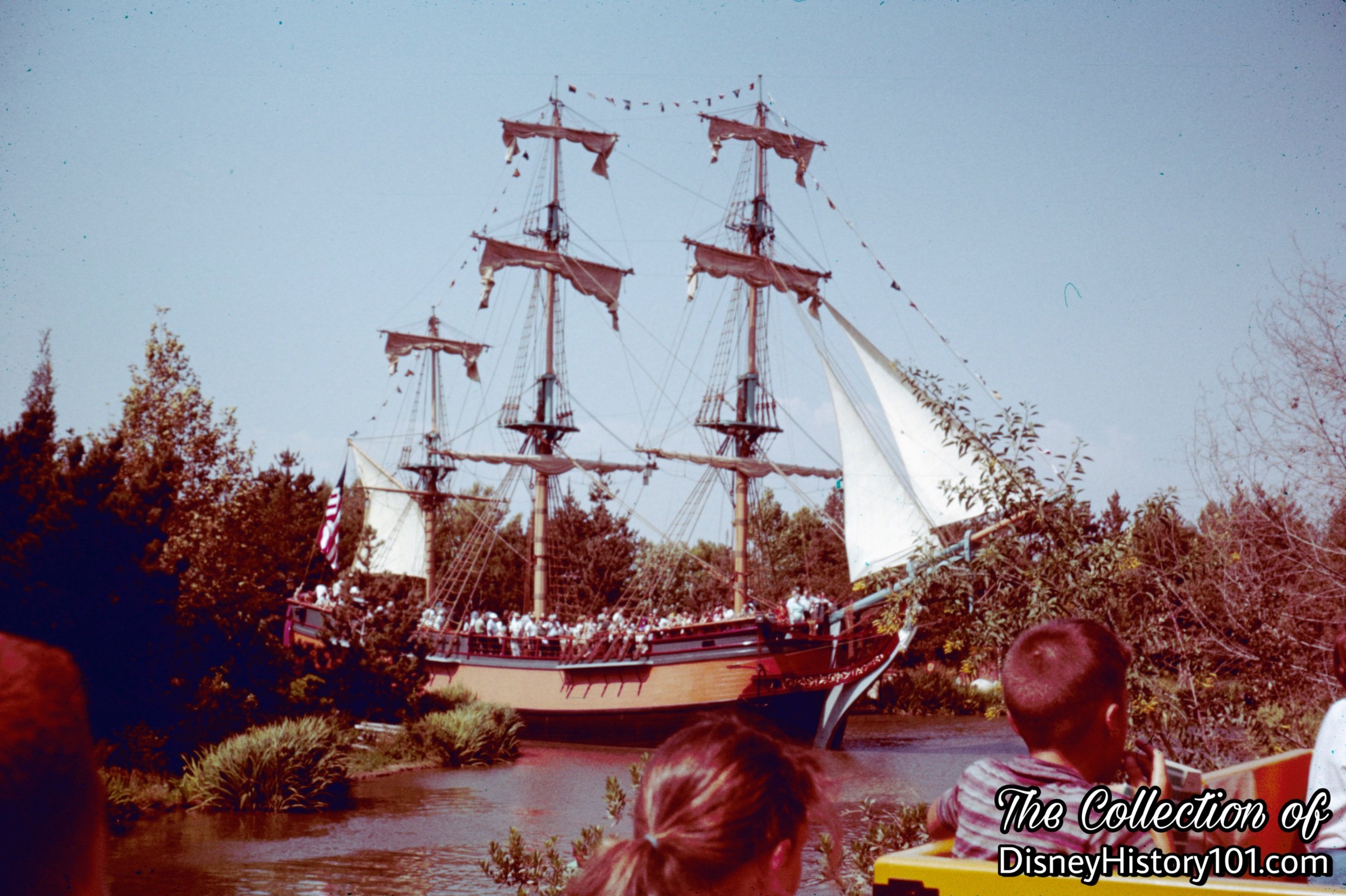
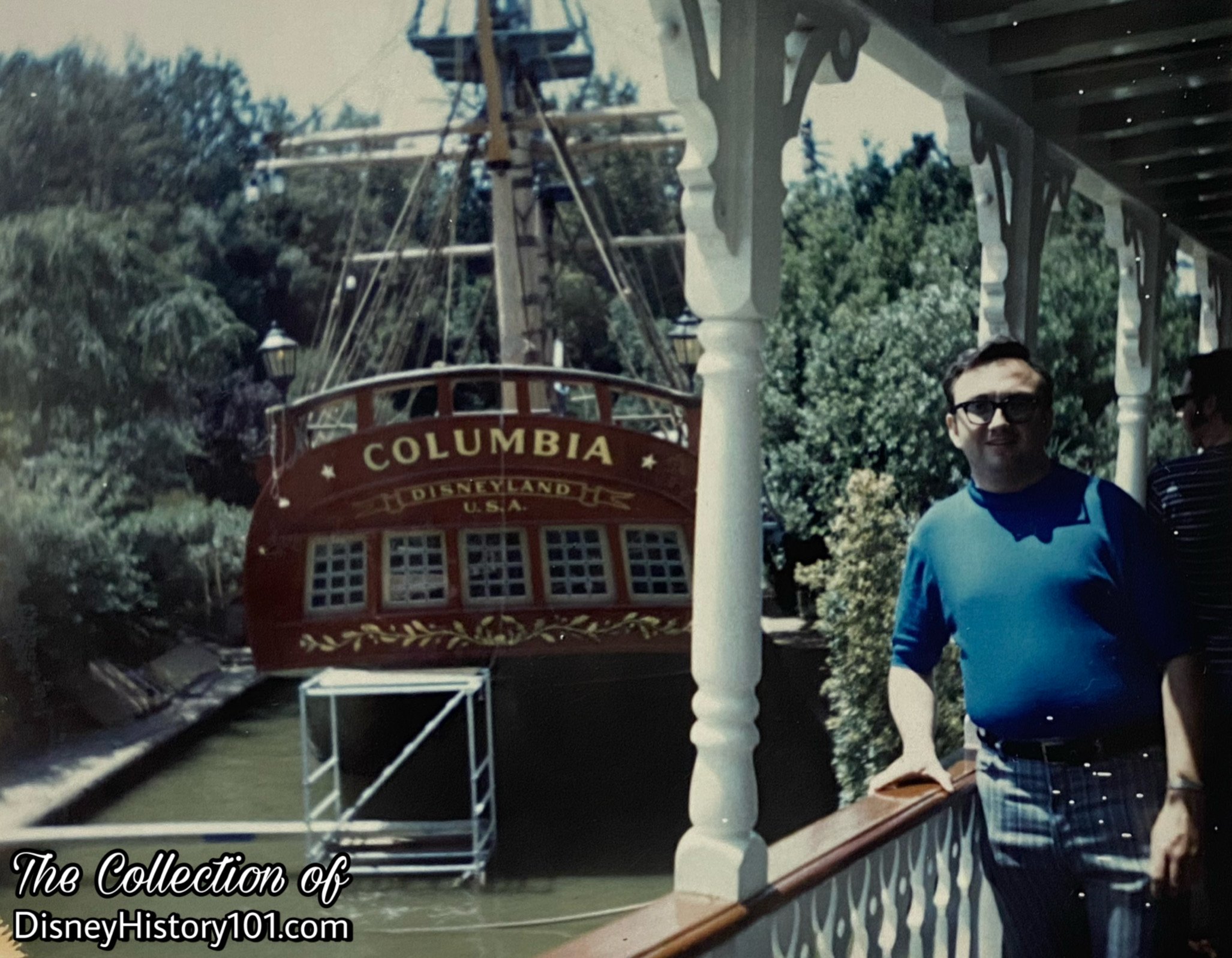
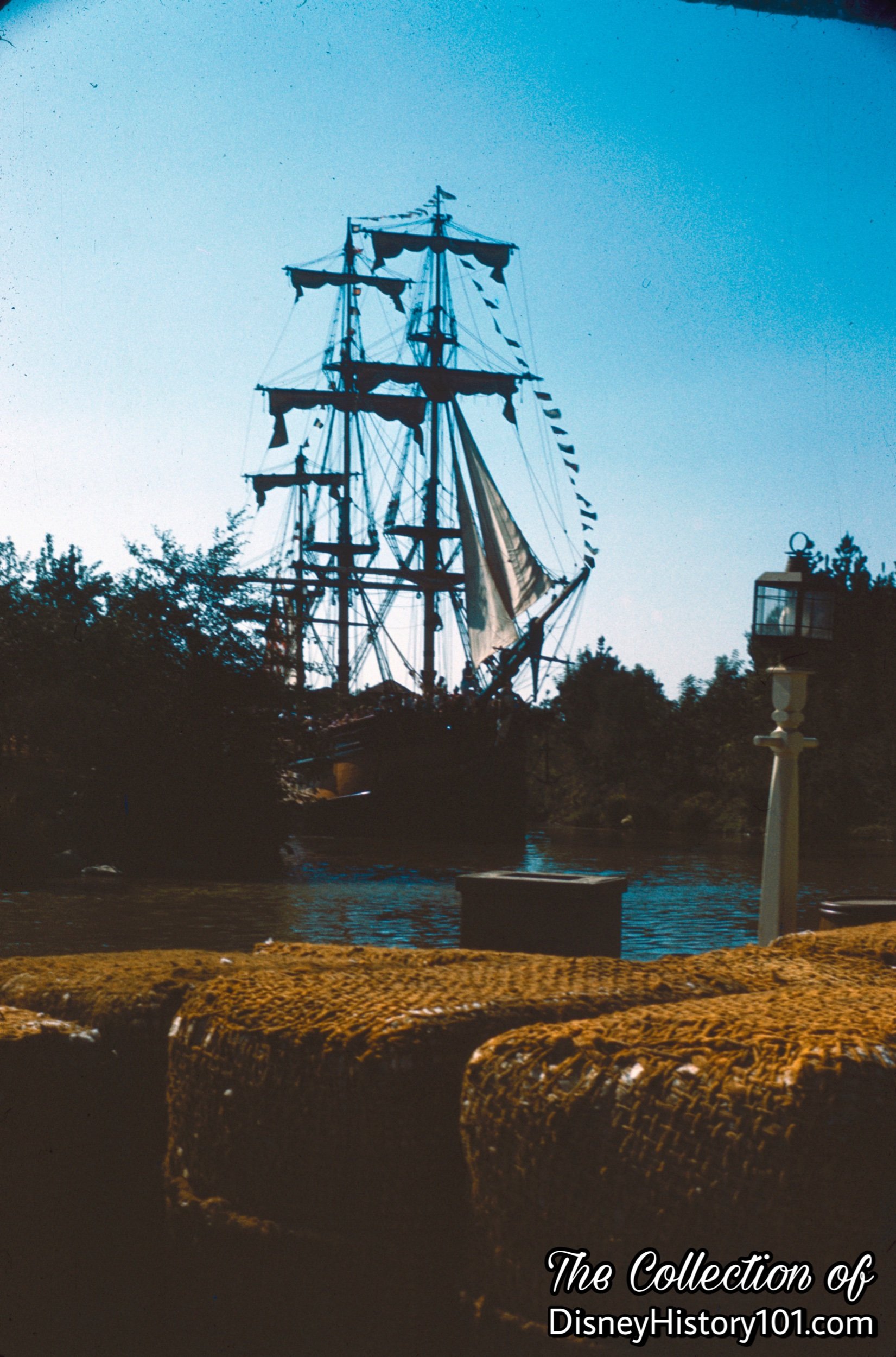
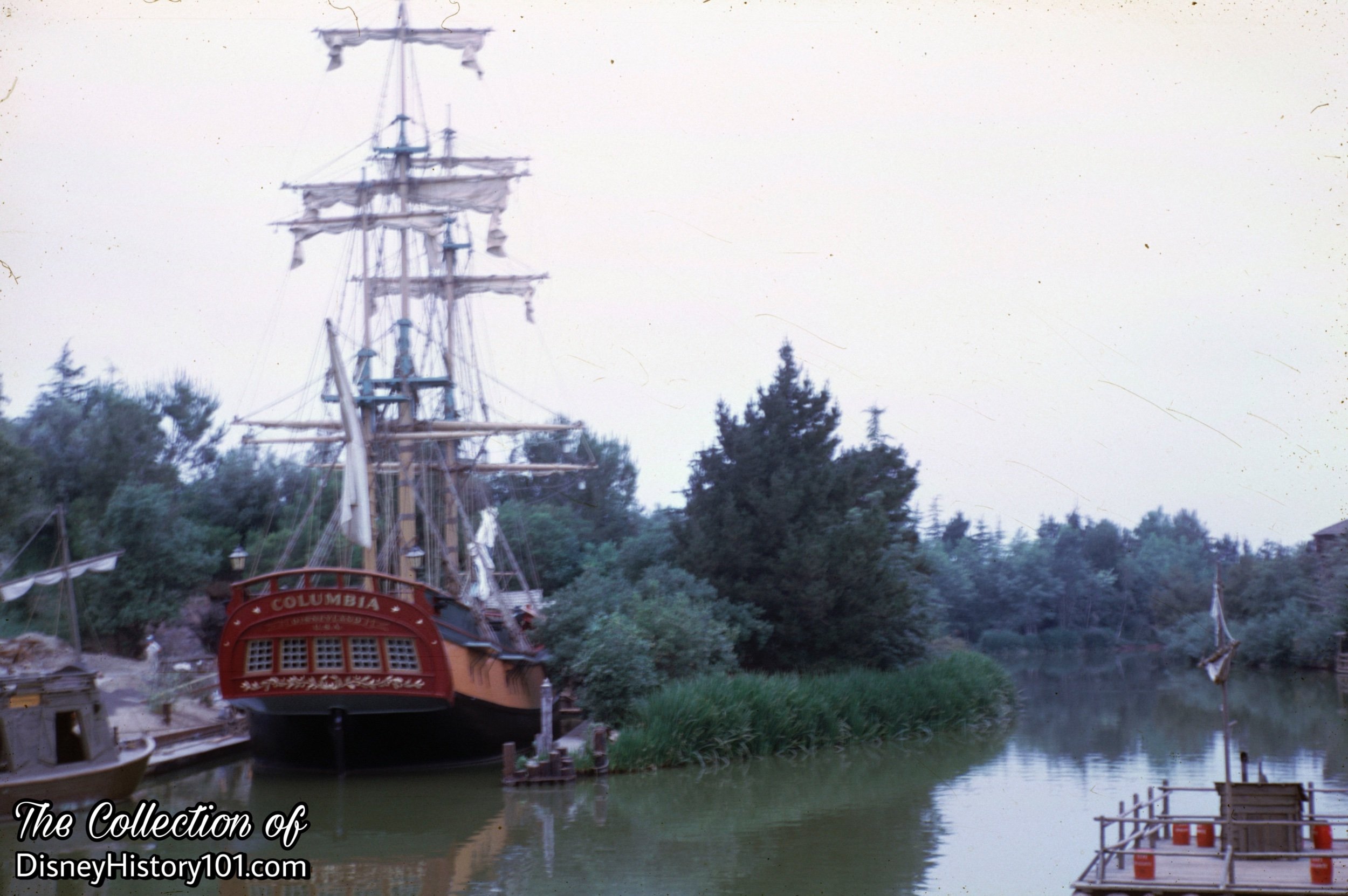

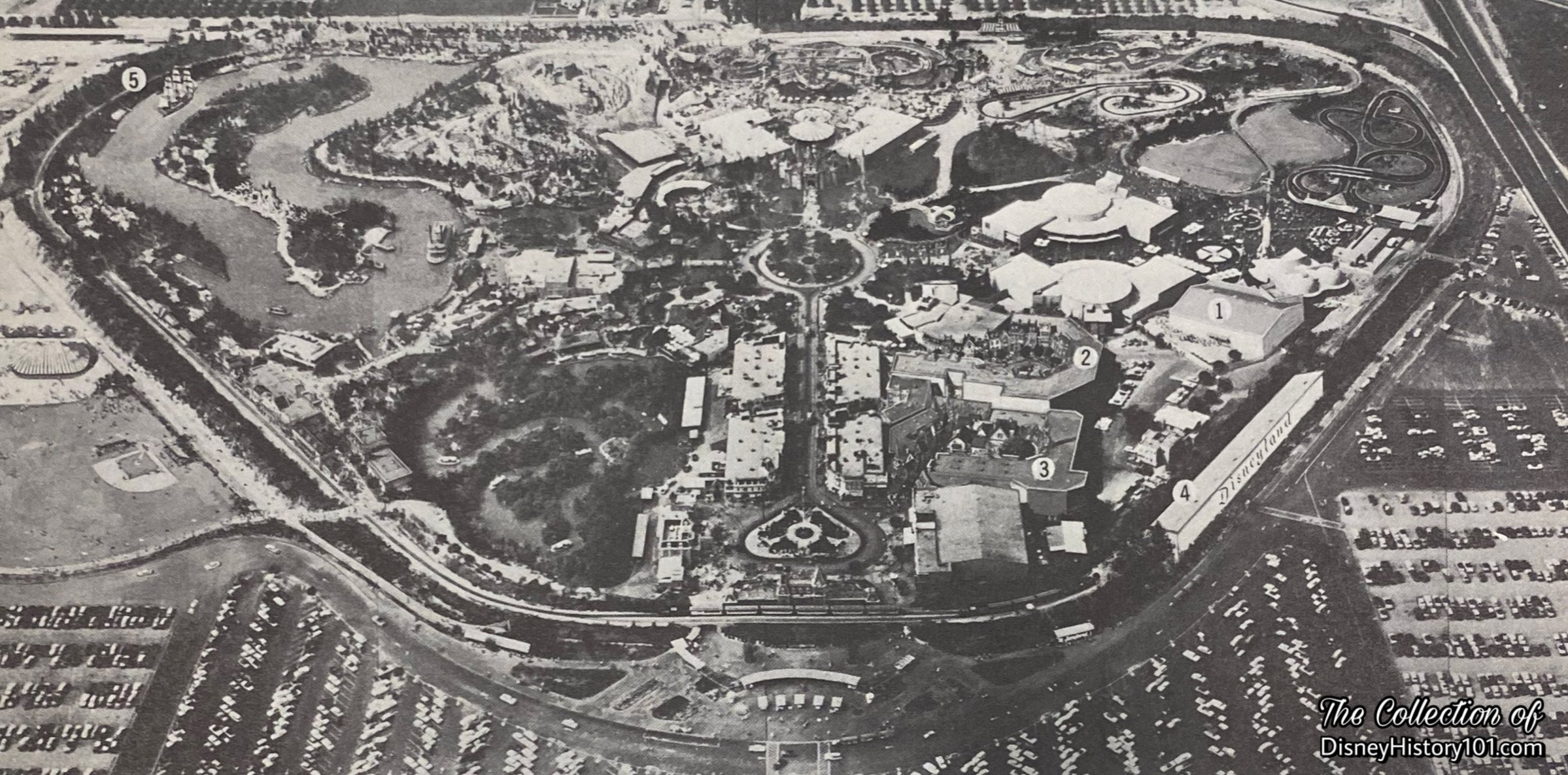
Your Custom Text Here
(June 14, 1958 - present)
One can easily slip into the jargon of “ride,” but at Disneyland there are attractions, adventures, and shows! And there is a "story behind the story" of every attraction, every attraction is a living experience for the guest. Disneyland ride-through attractions or adventures have officially been defined as an “individual show, ride, or exhibit designed to produce an entertaining Guest experience. Disney attractions stir the imagination, enliven the senses, and provide the participants with positive, innovative entertainment, which is the essence of the DISNEYLAND Show.” It is important to review the story of the attraction, tell the story, explain it, and create interest. This is the story of the Columbia.
"The True-Life Columbia"
The Columbia Rediviva (or, “Freedom Reborn”) was the first United States ship to circumnavigate the globe in 1787 would come to inspire one timeless Disneyland adventure!
Our story begins in the colony of Plymouth, Massachusetts, founded in 1620. Now, the nearby forests furnished a seemingly never-ending supply of the best lumber to construct ships, and a shipyard was founded in Plymouth not even two decades later. It is here, that a number of one-masted ships called sloops were constructed for fishing and whaling, a tradition that continued for about seventy-five years. But soon, larger vessels were produced for the ocean trade. That is where the Columbia enters our story.
The original “Columbia” was built in 1787, a rather small vessel by comparison, reckoned to have been only 84 feet long, and weighed about 212 tons. The New England Merchants owned and operated ship Columbia left Boston Harbor (on September 30, 1787) under the command of Robert Gray. The armed ship sailed through the Pacific Northwest (where the ship took on a cargo of sea otter furs from the First Peoples) and onto the then-known Orient “where she traded furs for Chinaware, tea, spices, and silks.” This stock would be brought back to Boston Harbor, where it was sold to the local colonists. The original ship did not bear the designation USS, for it was privately owned by a trader (Joseph Barrell), but it did carry the American flag through oceans around the world for three years. All of this occurring 11 years before even Lewis and Clark’s expedition had reached the Pacific Northwest. During this time, the Columbia was occasionally joined by other vessels, as the Lady Washington (under the command of John Kendrick), departing from Boston en route to the American West. In fact, the Lady Washington and Columbia became the first American vessels to visit China and Japan.
“When she returned to her home port (in August of 1790), she had been at sea for 34 months and had logged a distance of 41,899 miles. During the last months of 1790, the Columbia began her second expedition, again under the command of Captain Robert Gray. During this voyage, Gray discovered the river which still bears the name of the historical vessel. Several more expeditions were made by the Columbia during her proud lifetime.” [Vacationland magazine, Summer, 1980]. Owing to this, many coves and harbors would have the names of Columbia crew members bestowed upon them.
Ultimately clipper ships and steamboats replaced these larger sea going vessels, rendering the Columbia a transportation mode of the past. Legends used to surround the fate of the Columbia. Was the Columbia windjammer subsequently utilized by a privateer, or did she wreck near the rocky shores of Nantucket? According to Massachusetts Historical Society and Library of Congress records, the “Columbia,” after making several voyages following the globe-circling trip, disappeared without a trace “somewhere in the Orient.”
While some believe the true-life ship was decommissioned and salvaged in 1806, one thing is sure - the Columbia’s spirit of exploration and adventure would live on in Walt Disney’s Frontierland nearly 150 years later!
A masted clipper ship looking much like the Columbia makes an appearance in the Walt Disney Educational Media Company Print “C” from Set 200 - “Early American Transportation.”
"Blue Sky for the Rivers of America"
According to “Welcome to Disneyland” (published 1958), on the eve of the first day of operation, “Walt Disney promised that it would ‘never be completed, but will continue to grow, to add new things, as long as there is imagination left in the world.’ Each year since opening in July, 1955, Disneyland has added new and unique attractions for the enjoyment of guests.” By 1957, Walt had a steamboat, river rafts, and canoes traversing the Rivers of America, but something was missing.
During a 1957 interview with one reporter, Walt Disney explained his initial plans to expand the Disneyland fleet. “I’m going to add another one,” he offered. “I’ve got to find the right kind of a boat. But it’s going to be a boat that has to do with our early commerce, you see. It might be Robert Fulton’s first steamboat or something like that. I’ll make a miniature of it that will carry people. The Clermont.” Yes, initial plans included a replica of the Clermont, the first commercial steamboat in the world that ferried passengers from New York City up to Albany beginning in 1807. But soon, Walt's attention turned to the Columbia.
The Columbia (of Disneyland’s own navy) partially owes its existence to Sunday meals shared between Dick Nunis and Walt Disney. Dick (in response to inquiry about his favorite part of Disneyland which is no longer there) shared : “I miss the old Chicken Plantation where I spent many Sundays sitting with Walt talking about the future of Disneyland. I remember one day the Mark Twain was coming around the bend, a Keel Boat was coming in, a Keel Boat was leaving, two rafts were crossing the River, two Indian War Canoes were racing each other, and Walt said, ‘Look at that, that’s a great show. What we need is another boat. And that’s when we decided to build the Sailing Ship Columbia.” (according to Disneyland LINE, Vol.25, No.28, published July 16th, 1993). The presentation of the Sailing Ship Columbia show on the vast DISNEYLAND “stage” was a distinct part of the Disneyland theater concept.
“Draw Concept” - The Columbia Sailing Ship by Herb Ryman was published in Vacationland ; A Disney Gallery Edition of 165; published 1998.
“Raise the Sails - Designing the Columbia"
Thanks to a million-dollar Disneyland expansion, design of the $300,000 namesake Disneyland version of the “gem of the ocean” had begun by the spring of 1957. Regarding most any project pursued, Walt Disney once said: “We have always tried to be guided by the basic idea that, in the discovery of knowledge, there is great entertainment as, conversely, in all good entertainment there is always some grain of wisdom, humanity, or enlightenment to be gained.” Few current Disneyland attractions embody the spirit of those words as much as the Columbia at Disneyland.
In developing the attraction, the original true-life Columbia was researched extensively, and designs were then created by architect Raymond E. Wallace of Palos Verdes. Since the original (c. 1785) plans of the Columbia had been lost, Ray conducted his research from the book “Voyages of the Columbia” and a 1.5” steel engraving of the ship, basing his blueprints on these. Ray’s designs for the Columbia (at Disneyland) were also inspired by those of the original’s “sister ship” the (c. 1787) HMS Bounty (which were still extant). As a “sidelight,” the Bounty had an equally fascinating story, involved in perhaps the most famous mutiny in history - that of Captain William Bligh and 18 crew members, who were put out off the Coast of Tahiti (we’ll revisit the Bounty later in this article).
Sam McKim's colorful sketch of the three-masted sailing ship appeared in "Walt Disney's Guide to Disneyland" published for 1958.
Like some advanced “High Concept,” final designs were quickly generated and approved. Next, architectural drawings were generated to help define all designs, production and construction strategies, costs, schedule, and resource requirements. Models were fabricated in order to explore the various dimensional relationships, site-lines, flow patterns, ergonomics, and visual appeal to convey the desired creative intent. In 1957, one Associated Press article “Plan Trip Into Drop of Water, Liberty Square for Disneyland” (by Bob Thomas, published April 20, 1957) briefly mentioned the models and sketches while divulging the big project. Upon being invited to Walt Disney Studio, Bob Thomas mentioned, “Walt gave me a preview of his ambitious plans at his Burbank studios. He showed models and sketches…plans call for an 1812 sailing vessel to ply the Rivers of America, along with the paddlewheeler Mark Twain.”
“Construction”
The ship’s hull was to be the same size as the original Columbia. Soon, the approximately 90-foot steel hull was being manufactured at Todd Shipyards in San Pedro, Wilmington. Bill Evans seems to have recalled (to “E” Ticket magazine, Spring of 1996) that the hull was built at Bethlehem Steel, completed by February 12, 1958, then trucked to the Park during the midnight hours of an evening in February 1958. It was then was lifted onto three flat cars, and brought from the Main Street Station around to the Frontierland Station where it was lifted off the train sideways and hoisted into the dry dock at Fowler’s Harbor.
Next, completion of Ship's carpentry, assembly and painting was performed at the park by Disneyland personnel under the direction of Joe Fowler (In Fowler's Harbor Frontierland). At the time, Joe Fowler (Disneyland Operations Committee) oversaw the Construction & Maintenance division including Engineering, New Construction, Maintenance, and Janitorial. It was assured that many of the same types of tools used in the construction of the original were now used to bring the Columbia back to life. These were utilized by a variety of sub-contractors and craftspeople.
“First, the steel hull was completely planked above the waterline. Oregon pine was chosen for the ends because of its long fibers… The deck was laid with planks of Douglas fir.“ “News from Disneyland” reported: “Among the unusual occupations represented by the workmen was that of Louis Baham, a caulker. Caulking consists of filling the seams between a wooden ship's planking with cotton and a tar substance called oakum. Baham's past experience on sailing ships included caulking the sides of ‘Old Ironsides’ when that famous ship was reconstructed following World War I.”
“Submarine batteries, weighing a total of over 20 tons, were the original power source for Disneyland's Columbia, and also served as ballast, to improve stability of the ship.“
While the hull (and many other parts) were the same size as the original, the masts were an exception. They would need to be smaller, or else they would dwarf the Matterhorn. The construction of the masts required a special lathe and were made by Cliff Wavel. “Next came the ‘stepping,’ or securing of the mast ends. Made of hollow spruce and laminated together, the two sections of the mainmast were carefully positioned by cranes.” A silver dollar was even placed under each mast, before it was ‘stepped’, according to ancient maritime and U.S. naval tradition.
“Construction on many of the Columbia's wooden trappings, such as the wheel, the capstan, the rails, the rudder and many other items was done at the Mill”, right at Disneyland. Parts (like blocks, dead-eyes, and special rigging) were manufactured by Bagby-s Wire Rope & Splicing Service. “The stays, shrouds and ratlines of the rigging are made of steel wire rope, wrapped with manila and are referred to as ‘Standard Rigging.’”
“Pacific Sailmakers, the same company who made the sails used in the films Mutiny on the Bounty and Captains Courageous, also made the original sails for the Columbia.”
The vessel would carry ten cannons like its namesake. “The windjammer's cannons were cast at Disneyland's Staff Shop.”
Final touches like paint were carried out by WED employees, also under the direction of Admiral Joe Fowler.
To top the whole vessel off, the ship would fly a 1777 13-star flag (representing the original 13 colonies) provided by Hortie-Van. As a sidelight, the only other two locations in Disneyland to fly a 13-star flag were the Frontierland Stockade Flag Pole, and one of eight Mark Twain DockFlagPoles.
Construction continues on the Columbia as its moored in Fowler’s Harbor, (May 13, 1958, 11:30 a.m.)
Pictured above, an on-site crane aids in some installments to the Columbia while harbored at the Frontierland Dry Dock! Frontierland’s newest attraction was scheduled to open in less than one month from this point. The representation of the 18th-century merchant vessel would soon circumnavigate the controlled channel of the Rivers of America at Disneyland!
The real reason why the Mark Twain and Columbia don't run in opposite directions; a cartoon by Bill Chapman published in Disneylander during June of 1958.
Though the Columbia would carry sails, it would actually be designed and constructed to be propelled under water by submarine battery-powered fan motors. These motors were enough to repeatedly carry the ship (and its passengers) on 20-minute journeys, along a 2,450 foot-long guide rail located at the bottom of the Rivers of America. Since it costs a fortune to drain the ride, Machinists (or highly skilled craftsmen) would learn scuba diving, and dive down to where the action is to check the equipment and the rails.
As for that shared guide rail, a precise water level (of the Rivers of America) assured that the vessel did not float off of the rail or drop onto the guide rail and break it. This shared guide rail makes the next few Vintage Views of an extraordinary nature.
Columbia Moored Near Catfish Cove
Columbia Moored Near Catfish Cove
Sailing Ship Columbia Moored Near Catfish Cove
Soon, the Columbia operated alternately with the Mark Twain.
The 1957 TWA publication “Let’s Talk About My Visit To Disneyland Anaheim California: A Note From Mary Gordon TWA Travel Advisor” teased and divulged new adventures heading to Disneyland (some years ahead of their grand opening): “Other coming attractions include: The Nautilus-Submarine Ride, Adventures in Science, Alice in Wonderland, Adventure Ride, Liberty Street (our American Heritage), a Full-Rigged, Three-Masted Sailing Ship, Thieves Market, New Orleans Square, and a Haunted House.”
The Columbia is a "Coming Attraction" mentioned in the pages of Disneyland, U.S.A., 1958.
A two-page spread of “Disneyland, U.S.A.” focused on Disneyland’s future. Among the “planned additions and their proposed locations” depicted, is the Columbia. During the construction of 1958, an appraisal of the ride structure valued it at $1,400 while the equipment was valued at $211,400.
“Disneyland’s Newest Attractions” Handbill Excerpt, (c. 1958)
“Lively Now, Lively…We Sail With The Tide.”
Slightly before the summer of 1958, Disneyland Holiday magazine (published for the Summer of 1958) excited future guests of Disneyland, by advertising “the Queen of the River…the Columbia” as part of “the early West reborn in Frontierland” at Disneyland! The $300,000 Disneyland version of the “gem of the ocean” was based on the very same first United States ship to circumnavigate the globe in 1787. Upon embarking on your journey aboard Disneyland’s Columbia, “a voyage of discoveries on the rivers of America” awaits!
The ship was christened by Joe Fowler and the Mouseketeers on June 4, 1958. Ten days later, opening day came (on June 14, 1958; 5:00pm), with 300 invited Guests, official dedication festivities, and Dedication by Walt Disney and assisted by Art Linkletter. The newly appointed Admiral Richmond (of the United States Coast Guard) was among the guests that walked up the gangplank and aboard the Columbia. Then, the sailing Ship Columbia was christened by Mrs. A.C. Richmond, the wife of Coast Guard Admiral A.C. Richmond. Walt oversaw the Naval tradition, as Admiral A.C. Richmond and his wife presented a ship’s Bible to the Columbia’s acting skipper. The gesture was captured by photographer Mel Kilpatrick.
After the maiden voyage, Disneyland guests were officially admitted aboard the reproduction “full rigged 3 masted” (and armed) 18th-century merchant Sailing Ship Columbia. That summer, the Columbia became one of more than 40 rides and attractions that would nearly double the number of Disneyland’s original 22 Opening Day attractions. By 1959, Joe Fowler was Vice President of Disneyland Operations Committee and Doc Lemmon of Disneyland Operations was overseeing Operators of Rides & Amusements (like the Columbia), Livestock, Parking Lot, and Ticket Sellers.
Disneyland Park® Columbia Attraction Poster by Bjorn Aronson, Collection of The Walt Disney Hometown Museum.
Disneyland audiences passed colorful attraction posters while still in the “lobby” of the Disneyland Show! Near the Mickey Mouse Floral Portrait and positioned in a few other places around the Park, attraction posters (designed by Bjorn Aronson, c. 1958) heralded the Disneyland’s latest adventure - the Columbia! This particular poster is preserved through the Walt Disney Hometown Museum (Marceline, Mo), donated by the Legendary original Disneylander - Robert Penfield!
By this time, all art work, posters, etc. were produced at the Walt Disney Studios.
At Disneyland, signs were themed to support the stories with respectful graphics, colors, fonts, terminology, the overall design of sign, materials (wood, metal, banners, etc.), and verbiage used on the signage.
Columbia Banner Over West Tunnel, (Summer, 1958)
From the Marquee of Disneyland and its nearby Tunnels, guests were made aware of Disneyland’s newest attractions! While the rails of the Santa Fe & Disneyland Railroad granted Disneyland guests a magnificent view of the Grand Canyon, banners over the tunnels announced a new way to enjoy the Rivers of America - the sailing ship Columbia!
Columbia Banner Over Main Street
Columbia Banner Over Main Street
Columbia Banner Over Main Street
Columbia Banner Over Frontierland Stockade Gate, (Summer, 1958)
Columbia Banner Over Frontierland Stockade Gate, (Summer, 1958)
Banners and bunting strung across the Frontierland Stockade also heralded Disneyland’s newest attraction - the fully-rigged three masted Columbia!
An excerpt from a reprint of "Vacation in Disneyland," (published 1958) depicts a masted sailing vessel that appeared in one story.
Sailing Ship Columbia
Sailing Ship Columbia
“STATISTICS”
We now present a few astounding facts and figures about Disneyland’s modern reproduction of the “full rigged, 3 masted” (and armed) 18th-century merchant Sailing Ship Columbia!
Beam : 26 feet, 6 inches
Bowsprit : 45 feet
Guns : 10
Length : 92 feet overall (according to “Disneyland Dictionary” printed October 1959), or (by some Admissions, Media & Attractions accounts) 93 feet ; a “130-foot-long replica of the first American ship to circumnavigate the globe,” according to “Walt Disney Disneyland,” page 42, printed by Officine Grafiche Arnoldo Mondadori - Verona; first published 1964.
Main Mast : 84 feet
Maximum Passengers : 275 people
Sailing Ship Columbia, (Late, 1958 - Early, 1959)
Sailing Ship Columbia
Sailing Ship Columbia sign over the Frontier Landing, (1967)
Mark Twain Steamboat Dock c.1965, also called the Frontierland Dock and “Frontier Landing” in the present.
Sailing Ship Columbia, (1966)
Sailing Ship Columbia
Sailing Ship Columbia, (1967)
Sailing Ship Columbia
Sailing Ship Columbia
Sailing Ship Columbia
Sailing Ship Columbia
Sailing Ship Columbia.
There were often Attractions Host Crewmen spotted near the Top of a Mast.
High seas adventure with Attractions Hosts over the deck of the Columba.
The Columbia Attractions Host seaman swings into action when a call is made for all hands on deck.
Sailing Ship Columbia Attractions Host, 1967.
There’s adventure on the “high seas” (and Rivers) of America too! The Columbia’s “lookout” scans for adventure along the river banks from the bell headstock of the foremast. A number of notable Disneyland Cast Members and Walt Disney Imagineers had their start on the deck of the Columbia, like Randy Bright, who “enlisted in the Disneyland Navy,” during the summer of 1959. He became a lead on the Sailing Ship Columbia, and we would see him up climbing the rigging.
Columbia Attractions Host Mike Thomson faces the camera.
Sailing Ship Columbia
A chimpanzee aboard the Sailing Ship Columbia, (1958)
Long before Guests were wondering about what was below the deck, their attention was directed to high seas action in the rigging, high above the deck. You may feel like “the monkey’s uncle” to discover that the Columbia was once invaded by Mouseketeers, Wally Boag and the Pirates of the Caribbean, and even (during the summer of 1958)…chimps ahoy! These simian Cast Members actually “upstaged” their fellow human Cast Members, stealing the show.
This wasn’t the first time that chimpanzees entertained at Disneyland. Beatrice Dante strolled with her chimp Charlie, in the Mickey Mouse Club Circus Parade.
One of the chimpanzees was featured on page 32 of "Walt Disney - Disneyland," published by Arnold Mondadori, 1964.
The whole affair continued for a few months until the barefoot executives would finally go home.
Sailing Ship Columbia
Sailing Ship Columbia, (1967)
A 35-star flag is displayed aboard the aft portion of this replica of the first American ship to carry the United States banner around the world!
Sailing Ship Columbia
Sailing Ship Columbia
Sailing Ship Columbia
Sailing Ship Columbia
Sailing Ship Columbia
Sailing Ship Columbia, (1958)
Sailing Ship Columbia, (August, 1958)
Sailing Ship Columbia, (1958)
Sailing Ship Columbia (February, 1959)
Sailing Ship Columbia, (August, 1958)
Sailing Ship Columbia, (1958)
The Dixieland Band Stand was a relaxing location to enjoy New Orleans - style jazz while watching the Columbia set out down the Rivers of America!
Guests Aboard the Sailing Ship Columbia, (1958)
Guests Aboard the Sailing Ship Columbia, (1958)
Sailing Ship Columbia
Sailing Ship Columbia
Sailing Ship Columbia, 1964
Nautical bells were once used to keep time or announce a dignitary’s arrival aboard. However, the Columbia’s nautical bells were mostly used to announce movements or stops.
Sailing Ship Columbia, (October, 1963)
Sailing Ship Columbia
Sailing Ship Columbia
Sailing Ship Columbia
Burning Cabin from Sailing Ship Columbia Deck
Columbia Passes the Burning Cabin, (1962)
Sailing Ship Columbia, (July, 1974)
Sailing Ship Columbia, (October, 1963)
Sailing Ship Columbia
Sailing Ship Columbia
Sailing Ship Columbia, 1967
Sailing Ship Columbia
Cascade Mountain from Sailing Ship Columbia Deck, (1967)
Sailing Ship Columbia
"DISNEYLAND'S SAILING SHIP COLUMBIA" (Instrumental Version)
Step aboard Disneyland’s Sailing Ship Columbia, and circumnavigate the Rivers of America!
Sailing Ship Columbia, (Winter/Spring, c. May, 1959)
Sailing Ship Columbia, (October, 1959)
Sailing Ship Columbia
Sailing Ship Columbia, (August, 1969)
Sailing Ship Columbia
Sailing Ship Columbia, 1959
Sailing Ship Columbia, 1959
Sailing Ship Columbia, 1959
Sailing Ship Columbia, (1959)
Sailing Ship Columbia, (August, 1960)
Sailing Ship Columbia, 1960
Sailing Ship Columbia, (1961)
Sailing Ship Columbia, (May, 1961)
Sailing Ship Columbia, (August, 1962)
Sailing Ship Columbia, (August, 1963)
The upper deck of the Columbia granted passengers a preview of Fire Dance Circle and the rest of the Indian Village right along the shores of the Rivers of America. While this was the scene throughout most of the first decade, expansions along the Rivers of America included changes to the scene of the Frontierland Indian Village at Disneyland. By 1964, commentary was made how “The Indian Village first opened as a Plains Indian encampment. Today it pays tribute to the Blackfoot Tribe, the Crows and other tribes who inhabited the Pacific Northwest territory explored by the original Columbia and her crew,” according to“Walt Disney Disneyland,” page 42, printed by Officine Grafiche Arnoldo Mondadori - Verona; first published 1964.
Sailing Ship Columbia, (1964)
Sailing Ship Columbia, (November, 1963)
The masts of the Columbia rise high above the Mexican Village in Frontierland.
Sailing Ship Columbia, (September, 1966)
Sailing Ship Columbia, (1966)
Sailing Ship Columbia, (August, 1966)
Sailing Ship Columbia, (1967)
Sailing Ship Columbia, 1967.
Sailing Ship Columbia, (1967)
Sailing Ship Columbia, (October, 1967)
When it wasn’t circumnavigating the Rivers of America, the Columbia spent most of its time in Fowler’s Harbor.
Sailing Ship Columbia, (September, 1967)
Sailing Ship Columbia, (1967)
Sailing Ship Columbia
Sailing Ship Columbia
Sailing Ship Columbia
Sailing Ship Columbia
Sailing Ship Columbia
Sailing Ship Columbia, 1971
Sailing Ship Columbia, (July, 1959)
Sailing Ship Columbia
Sailing Ship Columbia
Sailing Ship Columbia
Sailing Ship Columbia and it’s 1777, 13-star flag.
Sailing Ship Columbia in the Dry Dock, (May, 1961)
Disneyland “D” Attraction Coupon, Summer, 1960.
There was a 40¢ D Coupon cost of admission to board the replica of the first American ship to girdle the globe (as well as a visit to the Maritime Museum below decks). By 1965, that cost of admission was exactly one “D” coupon, or 60¢.
“Schwinn Takes A Trip To Disneyland” Catalogue Excerpt, (1966)
Herer, the a Schwinn Panther is appropriately photographed not far from the New Orleans Street area of Frontierland during the Tencennial year of 1965.
(February 15, 1964 - November 25, 1972*)
(*according to “Disneyland Rides & Attractions and Attendance Report,” 1981, page 50).
“The Disneyland of today is the sum total of so many additions and improvements that, in several cases, only the basic framework, the original theme of the realms remains unchanged,” according to “Walt Disney Disneyland,” page 42, (printed by Officine Grafiche Arnoldo Mondadori - Verona; first published 1964). A grand example of such an “improvement” is the Columbia attraction which opened to Disneyland Guests during 1958.
Six years after the debut of the Columbia, carpenters braved “sea sickness” while adding the finishing touches to a new exhibit (as it travelled around the Rivers of the World). Authentic antique lights and other fixtures in their correct motif were placed in their positions.
Finally (on February 15, 1964), the Columbia’s Below Decks Museum soft opened (with the official opening of the Below Decks Museum taking place a few days later, on February 22, 1964). This new free 179 square-foot exhibit was part of an expansion that brought total Park investment to $50.1 million. The exhibit took approximately 8 minutes to explode and with a 60-guest capacity, it had a theoretical capacity of 450 guests per hour.
After descending the ship’s ladder and into the waist, guests could finally see how 18th century American seamen lived. Visitors would see the “elegant Roundhouse of Officer's quarters, complete with dining tables, bunks, seats, navigational charts and equipment.” According to Line magazine, guests could now explore “the complete crews quarters made up of bunks, mess table, sick bay, pantry, navigational equipment…the finest carpentry, cabinetry and set design were employed to create the magnificent display, considered one of the world’s finest maritime museums”. Not to be missed, were the Captain’s Quarters at the stern of the ship - one of the most elaborate parts of the Below Decks Museum. There were two bunks, an eating table, seats, charts, library, personal gear, navigational equipment and antique maps. The Officer’s Roundhouse (on the starboard side of the deck) containing the first, second, and third mate’s cabins and antique cutlasses.
The same publication continues : “Considerable research of merchant ships of the era revealed that the officers of the Columbia lived aboard in reasonable comfort and elegance. The ship’s furniture and accessories were not unlike those found in the homes of officers of the gentry. All items which make up the interior of the Columbia at Disneyland might have been in vogue between 1750 and 1800.”
“Sail and rope-making equipment, as well as a sailmaker's store room and Bosun's locker are displayed. Sleeping quarters for the ships' seamen have also been authentically recreated. An open galley and forge are carried aboard the Columbia, as was true of the original ship. This feature was somewhat unique to the Columbia, which was outfitted in this manner in order to help build another ship once it reached the West Coast. Boat and sailing enthusiasts may be interested in the wooden ‘timbering’ or supports of the ship and in the artistic ropework evidenced on the ship.”
During the summers and on weekends, the Columbia joined the Mark Twain on the Rivers of America. However, during many Fall, Winter, and Spring months, the Columbia Museum moored at Fowler’s Harbor where it served as a maritime museum (see above). “During in-port days, the Columbia ties up in Fowler’s Harbor where guests may climb aboard to view this replica museum,” according to the “Disneyland Dictionary,” compiled by WED Enterprises, Inc. and WED Public Relations Department, c. 1968.
“BELOW DECKS on the SAILING SHIP COLUMBIA”
The Columbia was occasionally featured in promotional media, including television and magazine advertisements and television broadcasts. For instance, The Jonathan Winters Show (first aired on NBC c. March of 1965) featured a comedic segment where Winters portrayed Captain Bligh aboard the Bounty. The segment was filmed aboard the S.S. Columbia at Disneyland, and the entire show was screened at NBC Studios on March 26th, 1965. Less than a decade later, the Columbia’s Main Deck was also once used as a stage for a special recorded feature starring the Jackson Five, in 1974.
In the year 1984, the Rivers of America were drained, and the Columbia received a much needed refurbishment of it’s decks and rigging. Columbia creator Ray Wallace directed the re-rigging of the vessel, assisted by professional riggers (from outside Disneyland) to duplicate the intricate knots of the 26-year-old ship. Disneyland Craftsmen touched-up other features like the vessel head. A Line magazine describes “when this year’s rehab is complete, and the river once more flows around Tom Sawyer Island, the ‘Columbia’ will again lie quietly in her berth at Fowler’s Harbor. Here she will receive her guests in stately splendor until summer arrives and the majestic ship sets forth on yet another voyage.”
Carved Wooden Flying Fish
The former Walt Disney Imagineering Principal Creative Executive Marty Sklar would probably agree that the small details like these make the story appealing. An example of one such detail is the Carved Wooden Flying Fish.
The original Columbia (constructed 1787) was built within two years of another historic vessel - the Bounty (constructed 1785)! In 1789, the “Bounty” was led by a man named Fletcher Christian. The ship was captured by mutineers, and some of their descendants would go on to inhabit parts of Pitcairn Island in the South Pacific to the present.
The Bounty has been depicted a few times on film. Herb Ryman had worked on the MGM production of "Mutiny on the Bounty" (released 1935). In 1978 (and approximately 189 years after the mutiny took place), the film “The Bounty” (starring Anthony Hopkins and Mel Gibson) also attempted to capture this story. In recreating the Bounty sailing vessel for the film production, numerous faithful props were created (including a hand-carved fish). The Carved Wooden Flying Fish [according to Disneyland Line, Vol. 17, No. 41] is believed to be “probably made from Koa wood, carved by Fred Christian, the Great Grandson of Fletcher Christian… The carving was presented to the present-day Bounty shortly after its construction. Making the presentation was the Bounty’s Commander, Joe McGuire, a 35-year veteran of the sea whop served as a commander in the British Navy. Commander McGuire was responsible for much of the building of the Bounty, including designing the engine rooms. (Although the Bounty is an exact replica externally, she does not have modern equipment below decks.)”
A few years after the release of the film, the very same Carved Wooden Flying Fish was presented by Joe McGuire, to Disneyland, in October of 1985! On hand for the acceptance, was “Ray Wallace, the Columbia’s designer and her Honorary Captain as designated by Walt in 1958,… along with Bob Penfield, Maintenance Superintendent.”
Quite a few inspirational thoughts were conveyed on the occasion. Ray Wallace said, “It’s the men on those wooden ships who had the forthrightness and stamina to chase horizons, leading us to new worlds, and this gift is a great tribute to the officers and men of the Bounty and the Columbia. After 200 years, their saga will never die.”
Many things have been performed in the name of Show Quality for guests of the Columbia. Around the time Fantasmic opened, the crew of the Lady Washington (another of Ramond Wallace’s creations) temporarily docked at the Los Angeles Maritime Museum in San Pedro, visited Disneyland to see the Columbia, and meet Jeffrey Smith (of Tech Services) the designer in charge of the rigging. Jeffrey went on to become a temporary member of the Lady Washington crew when she was in port, performing research to enhance the Show Quality of the Columbia spiel delivery. About five years later (in 1998), the Columbia Crew had visited the Lady Washington (a recreation of a ship that sailed with the original Columbia) several times while located in her temporary port at the Los Angeles Maritime Museum in San Pedro. Cast Members like Mike Miranda, Matt Haynes, and others received history lessons about the 18th century vessel. [Disneyland Line, February 13, 1998]
Sailing Ship Columbia, (September 17, 1970)
Disneyland “D” Attraction Coupon, (c. 1971?)
Sailing Ship Columbia, (March, 1974)
Sailing Ship Columbia, (August, 1975)
Sailing Ship Columbia
Sailing Ship Columbia
A young guest with her new Donald Duck Ring by Kestral is ready to board the Sailing Ship Columbia.
Sailing Ship Columbia
Sailing Ship Columbia, (July, 1974)
Sailing Ship Columbia
Sailing Ship Columbia
Sailing Ship Columbia
Sailing Ship Columbia
Sailing Ship Columbia
Sailing Ship Columbia
Sailing Ship Columbia
Sailing Ship Columbia
Sailing Ship Columbia
Sailing Ship Columbia
Sailing Ship Columbia
Sailing Ship Columbia
Sailing Ship Columbia, (August, 1968)
Sailing Ship Columbia
Sailing Ship Columbia
Sailing Ship Columbia, (June, 1973)
Disneyland “E” Attraction Coupon (75¢ Value)
Disneyland “D” Attraction Coupon
In 1992, the Columbia became part of a new nighttime spectacular known as Fantasmic! Perhaps owning in some way to this, the Columbia Operated during selected periods only.
As time allows Park Operations M-44 Machinists would repair or rebuild as needed, mechanical parts for Adv/Front. Assist the machinists with repairs to the Columbia as needed. The M-44 would fill out Mechanical Checklist cards and and Downtime Reports and turn them in to the Foreman daily. The Park Operations Machinists would also check all the fluid levels on the Columbia. Magic making MAINTENANCE MACHINISTS were challenged by unique new problems each day. A typical maintenance request representing part of a day's work may sound like: “Find a pair of prescription glasses dropped from Columbia, 100 yards from boarding dock... big river.”
Safety is a major concern of Engineering. Every year they would make a complete test and inspection of all structural parts of Disneyland. And since Guests would look to Disneyland for their safety the department team was continuously designing new guest and personnel safety devices.
Many changes and adjustments would contribute to a safe show. For instance, shops frequently do the wood and metal work for major projects such as the Sailing Ship Columbia.
The Submarine batteries, weighing a total of over 20 tons, were the original power source for Disneyland's Columbia, and also served as ballast, to improve stability of the ship. They were later replaced by diesel engines, and the ballast source also had to be replaced by 22 ½ tons of pig iron.
By 1969-1970, one Motorola 2-way radio (Handie Talkie HT 200) Frequency 154.60 MHz. was assigned to the Columbia. This was in relation to River of America operation of the Columbia and to be used for emergencies on the river, breakdowns and first aid requirements. The Price/unit was $758.00 without battery and antenna. Model #123 DEN 3110 A.W.
The “I Have an Idea” Program (est. 1978) would also come to yield many ideas that would influence and shape the efficiency and safety of how things were run. For instance, Disneyland Cast Member William Burnett had the idea to “attach floating keychains to key sets of attractions near the water, to support keys accidentally dropped in the water.” [Disneyland Line, March 1st, 1979]
During the 1990s, the wooden masts were replaced with steel masts.
(1975)
Columbia Dry Docks
The Columbia would briefly cease operation during the winter season of 1962.
WDP Annual Report for September 1957: Proposed: (1) Science Hall (2) Edison Square (3) Liberty Street. Under construction: (4) Grand Canyon Diorama (5) Four Masted Schooner.